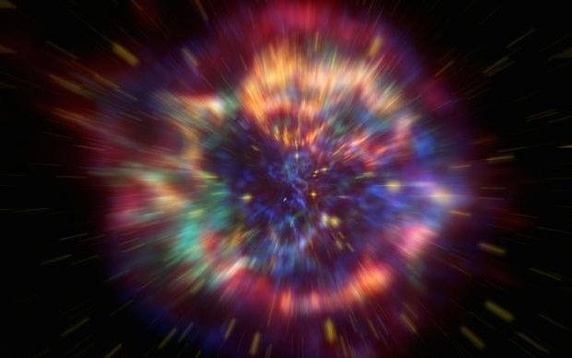
Blurred out Cassiopeia A image used in doomsday stories. It is absolutely no threat to Earth as it is 11,000 light years away. Generally the stories don't explain why they are using this image
Nibiru is Nuts, False vacuum, Big Rip, Asteroid Impacts, Pole Shift, Blood Moons
Debunking Doomsday News
Copyright © Robert Walker
(UK). All rights reserved.Cover picture shows the Casssiopea A supernova remnant. A blurred version of this is often used as illustrations for journalist's doomsday stories like this:
Blurred out Cassiopeia A image used in doomsday stories. It is absolutely no threat to Earth as it is 11,000 light years away. Generally the stories don't explain why they are using this image
First published on December 2016. You can also read this on kindle. For my other kindle booklets, see my author page on Amazon.com
The main sections in this book are
Fake news is nothing new. We've had fake doomsday stories for centuries. To add to that, humans have a great tendency towards hyperbole - vivid exaggeration to get a message across, or to make a story more vivid. Scientists are prone to do this as much as anyone.
We get bombarded by so many doomsday scenarios in the press and in YouTube videos. Some are scientifically valid but exaggerated. Some are hyperbole - exaggerated to such an extent they are not meant to be taken literally. Some are just hoaxes or so absurd to astronomers that they can hardly credit their ears and eyes when they learn that anyone might think such things are true. So how much truth is there in these. Indeed is there really anything that could make humans extinct?
In this book I go through them and examine them closely. The aim is to find the truth behind the stories, unexaggerated, just present them as is. The plain sober truth with no exaggeration or dramatization. I think there is plenty that we do need to be concerned about, such as climate change, extinction of species, environmental degradation, human rights and so on. Exaggerated ideas of future doom distract us from real challenges which we can actually do something about. They also lead some people to be really scared and in some cases even suicidal. There is no need to be scared of this at all, as I hope will become clear as you read the book.
I’ve written this book as a result of hundreds of comments and personal messages by scared people who ask me to debunk one or other story of the end of the world. Since I started writing doomsday debunking stories I get an average of a three comments a day to my Science20 articles and a similar number of private messages or emails per day asking me to debunk doomsday stories. We seem to get a new doomsday story almost every week, and at least, every month or so. I also post frequently to the debunking doomsday blog with new posts - see the List of the articles in my Debunking Doomsday blog to date - which will also include any new posts since I last updated this book. Also, do join our lively Doomsday Debunked Facebook group.
You are welcome to use this material in the same way I do. Copy and paste it in answer to comments or emails, or link to the answer, or both. Released under CC by SC NA - so non commercial share alike attribution. You can modify this material and use it as you please, but not commercially and you have to attribute me. However, if you are just answering a comment on a news site or a YouTube video, don't feel you have to attribute me in a situation like that :). Just copy and paste as much of the material as you need for your response. It’s more like, e.g. if you copy one of these posts into a blog, then you need to attribute me as the author and link back. The main reason for releasing it under this license is so that I can publish it on kindle.
You will find a small amount of repetition in this book. That's because I don't expect most readers to read this sequentially from start to end but rather to jump to the story that interests them most at any time. To make that easier, I have kept each post self contained as much as possible -just as they are on the blog,with only minor editing. To make this work, sometimes the posts need to repeat a little of the material from other posts, but anything substantial tends to have its own separate post so there is less repetition than you might expect.
All proceeds from the book will go to suicide prevention charities. At present the plan is to donate them to Befrienders Worldwide.
[NOTE TO DEBUNKERS - you are welcome to copy / paste as much of this text as you like to use for your debunking comments on videos on YouTube etc]
This section will cover all scenarios based on real science, even if they are no conceivable threat to Earth and have been hugely over reported. The criteria here is whether or not it is a scenario that involves a real object or a scientifically respectable theory - except for the asteroid impacts which have a separate section. There are a few other scenarios not yet mentioned here in my Could Anything Make Humans Extinct In The Near Future? I plan to add all the scenarios there to this section in the near future.
Summary: in the short term the worst case scenario is that the world gets 4 C hotter by 2100, and the Paris climate change agreement measures so far will reduce the rice to 3.4 C - all temperature rises here are relative to pre-industrial levels. So that’s obviously not going to make it too hot for us. The main issues are due to the speed with which the climate is changing, not the final climate which may be more habitable in some ways. Earth is actually unusually cold at present. At times in the geologically recent past the world has been so hot that there were palm trees as far north as the Arctic circle, no ice at either pole and typical polar temperatures 10 C.
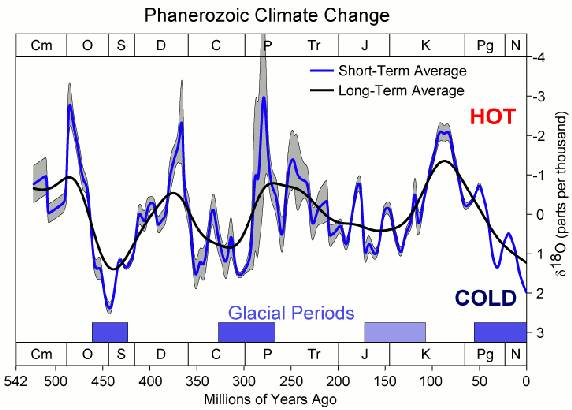
500 million years of climate change. As you can see, on the timescale of millions of years. Earth has never been this cold for the last 45o million years. In this diagram, one part per thousand of oxygen 18 corresponds to around 1.5 - 2 C
Most of the time Earth has no ice at all at its poles, no permanent ice at all except at the top of high mountains. Compared to that, the Earth is unusually cold at present. We are in the middle of an interglacial but geologists would say we are in the middle of an ice age still, technically, since we have permanent ice at the poles.
In the worst case scenario, the world stabilizes at 7 C hotter than pre-industrial levels many centuries into the future - assuming we have stopped creating CO2 by then. In theory we could make the world uninhabitable by triggering a runaway greenhouse effect, but to do that we would have to burn ten times the total reserves of oil, gas and coal in the world.
The reason that so many countries signed the climate change agreement in Paris is not to protect humans from extinction, which was never a risk. Nor is it to prevent Earth’s climate changing, which it does slowly all the time anyway. It is because the speed of the change is going to have effects on our environment (e.g. bleaching of coral) and it’s also going to be expensive to deal with the issues later. If we act now, it doesn’t even need to impact on our standard of living. It’s a case of policy change mainly. Promoting clean energy and measures to reduce carbon dioxide. If we act later, it probably will impact on quality of living and more than that, many people will need to relocate and it will impact on the environment in various ways
It’s a case of paying a bit more now, or even maybe not paying much, just planning now, to avoid much larger costs a few decades into the future and at the same time to protect fragile environments too, which are at risk because of the speed of the change. Even the speed of change isn’t that unusual, it is just unusual for us, because our climate has been relatively stable for 10,000 years so it is a fast change compared to the last few thousand years. Interglacials are much more stable than ice ages and during the ice age between 18,000 and 180,000 years ago then it fluctuated rapidly even within a few decades. Abrupt Climate Change During the Last Ice Age
The world will be more habitable if anything in a warmer world, e.g. Siberia, Arctic, even Antarctica eventually habitable. It’s not about a greenhouse runaway disaster, as that just can’t happen. Nor is it about things like the ice sheets over Greenland and Antarctica melting. The temperature rises even with no restraint on global warming aren’t nearly enough to melt either of those in less than a thousand years or so, though both are losing significant amounts of ice each year.
Also the idea isn’t at all that global warming is something we couldn’t survive. Put enough money into it, flood defences, growing new crops that farmers aren’t used to in their region, relocating people, building new foundations to replace the ones destroyed by melting permafrost in Alaska and Canada, building houses to withstand flood damage, more severe hurricanes, better disaster relief and so on - we can cope with it. But it would be expensive.
Rather, the idea of the climate change agreement is that it is far more expensive to respond to climate change like that - than it is to prevent it from happening in the first place which we can do mainly through policy changes. The Paris agreements might even have economic benefits too, e.g. transition to clean energy leading to new industries. The nations that work hardest on mitigating climate change, e.g. Germany, and for that matter China which is also putting a lot of finance into clean energy, are building up an industry that the rest of the world will want.
Also if we just let the temperatures rise and mitigate the effects, it has environmental effects which can't be reversed. “For example, an extra 0.5C could see global sea levels rise 10cm more by 2100, water shortages in the Mediterranean double and tropical heatwaves last up to a month longer. The difference between 2C and 1.5C is also “likely to be decisive for the future of coral reefs”, with virtually all coral reefs at high risk of bleaching with 2C warming.”Scientists compare climate change impacts at 1.5C and 2C | Carbon Brief., They estimated 99% of all corals affected by a 2 C rise compared to 90% for 1.5 C.
There’s a summary here

Note that with 2 C rise, instead of 1.5 C, it’s wheat down by 16% instead of 9%. Maize down 6% instead of 3%. Rice production however goes up 8% instead of 6% so some crops benefit from a warmer world. And it has the same figure there that we lose our chance to limit to 1.5 C by 2020 if we haven’t taken enough action by then. 4.5 years from summer 2016. So end of 2020.
This is about the Paris agreement, pledges so far should keep temperatures by 2100 to between 2.9 and 3.4 degrees C. Paris climate deal enters force as focus shifts to action - BBC News The sea hasn’t risen much yet. but in the tropical oceans some islands are really low and have submerged.Five Pacific islands lost to rising seas as climate change hits None inhabited yet but others have had to retreat. I think the thing is that coral reefs build up to just the sea level exactly, so a small rise over that, if the island is based on a coral reef, will flood it.
There is no risk to life at all, so long as we are willing to pay up the costs to relocate people, flood defences, grow more crops etc. None of the scenarios mean that. But they could be very expensive, or if we don’t pay to compensate for the things that go wrong, then humanitarian disasters can occur. And they can make vulnerable species extinct as some can only tolerate tiny changes in temperatures - while humans can tolerate huge temperature changes and there is no risk of even the hottest places getting too hot for us especially with our technology. It’s just a tiny increase in temperature not even that 3.4 C in worst case as that’s the rise from pre-industrial.
Effects on the US
You can look up the predicted effects of climate change on your country, also globally. Once you do that you may understand why so many nations signed the Paris Climate Change agreement. In the US the main changes projected include: (quoting from the US Environmental Protection Agency report Future of Climate Change) -
You can also look up the effects for individual states, e.g. this climate change report for Nebraska And this is the projection for New York city which experiences higher sea level rises than the global average:
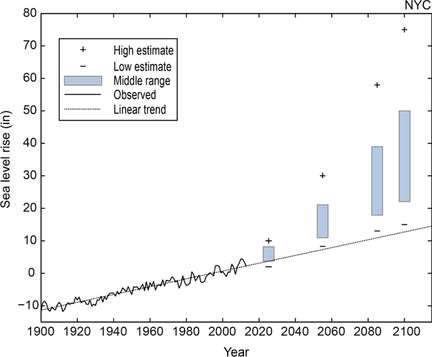
New York City Panel on Climate Change 2015 Report Executive Summary
there are some climate scientists who think the world will get hotter than most predict, and that there will be more flooding. James Hansen particularly, a US climate scientist, thinks that the Paris agreement doesn't go anything like far enough and that we still risk sea level rises of several meters over the next 50 to 150 years
He has a reputation of prescience in this area, because he predicted that the effects of climate change would become noticeable far sooner than most other researchers in a 1981 paper and he turned out to be right when more detailed models were possible, then the climate changes matched his predictions. However that doesn't mean that he is always going to be right of course, and there's a fair bit of skepticism about his new paper. See Climate guru James Hansen warns of much worse than expected sea level rise. Also Has veteran climate scientist James Hansen foretold the ‘loss of all coastal cities’ with latest study? In an earlier 2013 paper he also examined what would happen with "Business as usual" and concluded that much of Earth would go above the 35 °C limit for survival without assistance.
His work is an outlier in the field of climate research. Few scientists predict such drastic changes as this. However even with his extreme scenario, with business as usual, no climate change reduction, the colder places of course would still be inhabitable. It's not a human extinction scenario. The "Age of Stupid" video is based on extreme predictions, and exaggerates them even further, by way of poetic license, for the sake of a good story and to get the message across. The mainstream view of what will happen is as described already above.
As for a Venus style runaway warning, we need more oil, and gas, than we have on Earth. (an earlier paper suggesting it could be done with just the reserves we have on Earth was shown to be incorrect later on).
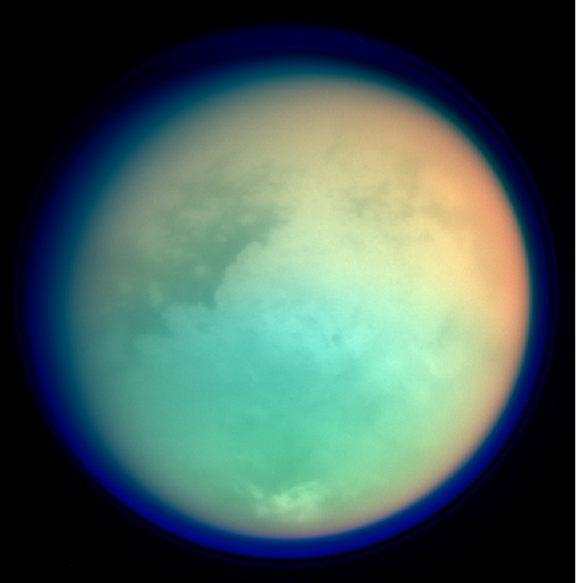
Titan, moon of Saturn in infrared and ultra violet, false colour image. It has lakes of liquid ethane and an atmosphere of methane and ethane. We don't have enough coal, oil, gas or shale oil on Earth to trigger a runaway greenhouse effect.
We would have to be monumentally stupid and do some space megatechnology project importing vast amounts of oil and gas from space to trigger a runaway greenhouse effect on Earth. (This is not remotely within current capabilities)
In the distant future, billions of years from now, the Earth will become too hot for humans as a natural effect of the sun getting hotter - unless whatever civilization there is around then does something to prevent it such as shading the sun with shades orbiting Earth. Alternatively, it could physically move the Earth using repeated flybys of asteroids or some other method. Both of these ways of cooling down Earth are megatechnology projects but are feasible with near future technology.
However, those timescales are so huge that humans could evolve from microscopic multicellular life consisting of a few cells many times over (the process took about half a billion years last time). It's not something we need to give thought to for hundreds of millions of years.
For more about all this see How hot could the Earth get?
In short what we are talking about here is no apocalypse. Many humans at least would survive just fine. Even with "business as usual" and even if Hansen is right with his extreme projections, the worst of the worst scenarios suggested, still large parts of the world would remain habitable to humans.But with all these projections, "Business as usual" could have severe environmental effects, and be expensive and hard to deal with.
I talk a bit about the science and about exaggerations here: President Elect Trump - Why Climate Change Is No Longer A Political Issue Outside The US
And this is very detailed, about the science behind climate change models: Order Patterned With Chaos - How Climate Is Predicted For Decades - With Exact Forecasts Only For Days
This is a recent dramatic post about climate change in the independent. Donald Trump's victory isn't the most terrifying news today. There's something even worse - I’ve been getting messages by scared people about it.
There's a lot of journalist hype there and click bait. Especially the last bit
“It sounds on the apocalyptic side of bad and, in some ways, it is realistic because ‘business as usual’ just got more likely as Trump wants to rebuild the pipelines … the complete ‘fossilisation’ of the US,” he said.
“It was game over at six [degrees] to be honest. I don’t think there was much more to add, other than turning the planet into Venus.”
"The only way out is to reduce greenhouse gas emissions as soon as possible," concluded Friedrich.
But - this is just way over hyped. Maybe they cherry picked quotes from Friedrich or maybe he got a bit carried away emphasizing the risks of climate change? For whatever reason, even a 7 C rise is not remotely apocalyptic. Earth right now is warmer than it was during the ice ages but on a larger timescale it’s the coldest it has been for 450 million years.
Usually there is no ice at either pole The water at the poles can reach temperatures of up to 10 C. Even the worst of the climate change predictions come nowhere close to that. We will have ice in Antarctica for centuries, probably thousands of years into the future. Even as recently as 200,000 years ago Earth was warm enough to have lions and macaque monkeys in the region that is now London and Essex, with probably more of a Mediterranean climate. Macaque fossils have been found as far north as West Runton in Norfolk. Professor S Elton - Durham University and paper here:
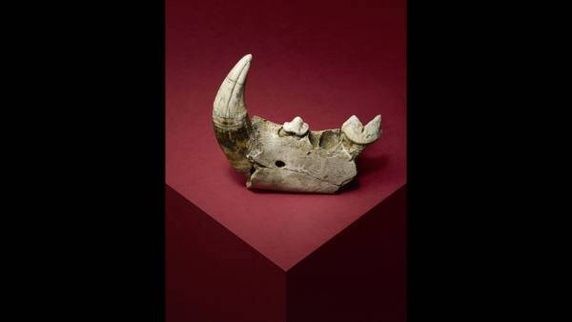
Fossil of a lion’s lower jaw from 200,000 BC, Crayford, Essex. Exhibition of early human history at the Natural History Museum
So we have a fair bit of warming before we even reach the climate of the middle Pleistocene, never mind the earlier much warmer climates. This is a more sober scientist's account of it. A warm climate is more sensitive to changes in atmospheric CO2
"Using these estimates based on Earth's paleoclimate sensitivity, the authors computed the warming over the next 85 years that could result from a human-induced, business-as-usual greenhouse gas emission scenario. The researchers project that by the year 2100, global temperatures will rise 5.9°C (~10.5°F) above pre-industrial values. This magnitude of warming overlaps with the upper range of estimates presented by the Intergovernmental Panel on Climate Change (IPCC)."
"The results of the study demonstrate that unabated human-induced greenhouse gas emissions are likely to push Earth's climate out of the envelope of temperature conditions that have prevailed for the last 784,000 years.
This is their graph:
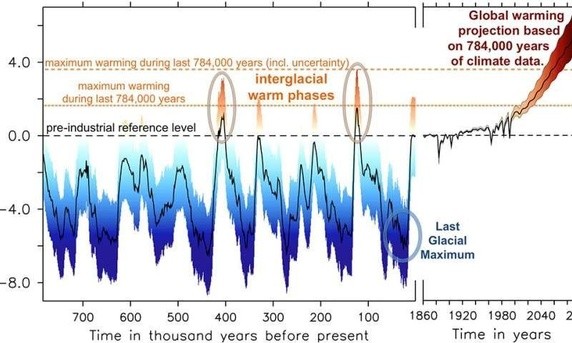
So, in summary the study suggests that global warming may be more than expected for the same amount of CO2. It’s at the upper range of previous estimates. If true, this means that if we want to remain within 2 or 1.5 C we would need more CO2 reductions than estimated before. It's not saying that the world will become uninhabitable or anything like that. Indeed it would probably be more habitable than it is now :). Just that the temperature rise and speed of change may be more than previously estimated if we have a "business as usual" situation.
Also it is recently published leading edge research so one shouldn't take it as confirmed. Things like this often get changed after other scientists get a chance to look at it more closely and occasionally they may find flaws in it, even though peer reviewed. It surely needs more research before they agree on it generally if it is true. As an example, of how leading edge science can change with more research - some time back a scientist published research that seemed to show that if we burnt all the fossil coal, oil, gas, shale oil etc in the world then our climate would become like Venus. Later on other scientists found mistakes in his work and deduced that to get a runaway greenhouse effect like that would require ten times the total reserves of coal, oil and gas in the world. The original scientist agreed with that conclusion and retracted his claim.
Written Nov 10 CommentShareThis is not so much a particular story as something you hear over and over in internet discussions. It’s not true. First, our population growth is leveling off, towards a population of perhaps ten or eleven billion by the middle to the end of the century. We have already reached peak child, and most areas of the world now have fertility levels at or below replacement, and feature a slowly growing, steady or declining population. Our world population continues to grow only because with better health world wide, people on average live longer each year. The middle of the range projections have the Earth's population trending towards 11 billion by 2100 while lower projections have it level off at ten billion or even start to decline towards the end of the century.
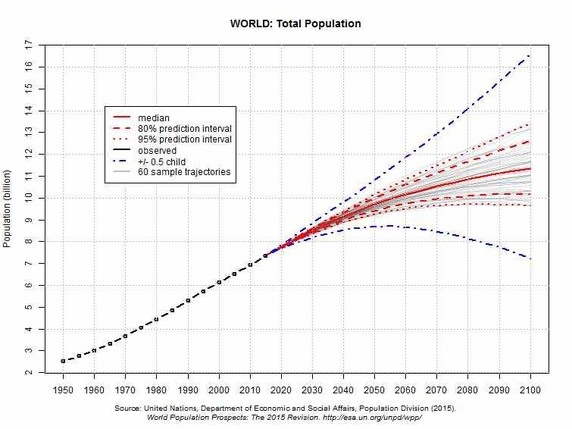
So whatever happens, we aren't headed for Malthusian type exponential growth because we have reached peak child already. In the graph above, the red dotted lines show the upper and lower limits for the 95% prediction interval. The blue lines are for +- 0.5 children per couple average. You can look up the data here, the graphs page for the UN population division.
Though we may not reach peak population this century, most parts of the world have a good chance of stabilizing before then, especially the more developed countries. The least developed countries are the ones that would get most population growth. The most rapid growth is in Africa in the projections. You can see a break down for each region of the world here,

Older figures from 2014. Most of the population growth is in Africa by the end of the century by these figures, with everywhere else leveling off by then, the least developed countries are the ones that grow most rapidly, so that's a reflection of the situation in Africa
So, things are actually looking brighter than one might think. Which isn't to say it will be easy, but there is no reason why we have to ruin ecosystems on Earth. Then, it may surprise you to know that we actually produce more than enough food to feed the world. We have starvation for political reasons at present. It's an income and distribution problem. As an example, the world had a food surplus of 510 kcal / cap / day in 2010 increased from 310 kcal / cap / day in 1965. I'm agreeing with you that eating less meat makes things easier. All the indications are that we should be able to feed 10 billion people.
We are nowhere near to running out of enough land to feed everyone. Most of the Earth is desert or ocean. We don’t have to cut down rainforests to feed people. We just need to reverse desertification and make more efficient use of what is there.
We are actually doing this already in a small way, with the salt water greenhouses, so I think you can say that not only should we do it, but we already are. This is an Australian desert project. The sea water is used to make water through the sunlight in the desert, and cool down the greenhouses.
These ideas could be used to reverse desertification in the Sahara desert and other deserts. This is how it works:


Diagrams by Raffa be from wikipedia
It not only lets you grow crops in the greenhouses - it can also help make the surrounding areas more habitable, so you’d get trees and crops growing in an area around the greenhouses as well. Doesn’t extract anything from desert aquifers, rather, it adds to them.
Sundrop farms have a large area set out for greenhouses like this now, in the middle of a desert, so this is taking off in a big way in Australia. Early days yet though.
This video just shows the greenhouses, and when they go inside in the video there is nothing growing there yet, not sure why, maybe it is a new installation, but it shows how it’s quite big in Australia.
There are many countries working on reversing desertification Israel does a lot of reversing of desertification.
One of the worst areas of encroaching desertification is the southern edge of the Sahara desert. The first priority there is to stop the spreading desertification - then to reverse it. Many African countries are collaborating in the Great Green Wall project to plant a forest along the southern edge of the desert.
Then, there is a similar project underway there now to the Australian Sundrop farms, using seawater greenhouses.

Technologies - Sahara Forest Project
This gives far more food and living space for the same amount of cost, compared with the billions of dollars to set up a few people in a space habitat. It's also far far easier to build a greenhouse in a desert on a planet with abundant sea water, and breathable air, than to do it on Mars. And as we just saw, with the BIOS-3 system, we would need only 2.5% of the Sahara desert to feed the world. So if we grew plants on Earth in as small an area as we could do for space habitats, we could feed the entire world easily with minimal impact, at least on the mainly vegetarian diet we would need for space colonies.
If we use ideas developed for space colonies, then we can grow food in a very small area. Conventional agriculture requires one acre of fertile land for each person supported typically.
The easiest way to grow plants for food in space is to use soilless gardening with hydroponic solutions or with aeroponics where plants are grown with roots suspended in a fine mist (uses much less water).
This leads to huge savings in the precious area you need to grow crops. Instead of one acre of farmland needed per person for conventional agriculture (4000 square meters approximately), you can grow 95% of the food, water and oxygen for an astronaut from just 30 square meters, with a conveyor belt system, of rapidly growing crops such as wheat, sedge-nut, beet, carrots, etc. For details see Sending humans to Mars for flyby or orbital missions - comparison of biologically closed systems with ISS type mechanical recycling (also relevant to long duration lunar missions).
Soil based gardening can also be used with the methods of biointensive mini gardening. By using good gardening practices and by careful choice of crops you can grow all the food for one person in 4,000 square feet, about 372 square meters, or less than a tenth of an acre. That's intermediate between conventional agriculture and the conveyor belt type system of BIOS-3.

Grow biointensive - sustainable mini farming - this method needs only 372 square meters of growing area per person.
We can get an idea of how efficient these methods are by working out the total land area needed to feed the world on a vegetarian diet by all the methods. With a million square meters to a square kilometer, then we just need to multiply the numbers by 7,500 to get the area in square kilometers needed to feed a population of 7.5 billion. We get
By comparison, the Sahara desert is 9.2 million km². With the BIOS-3 system, we would need only 2.5% of the Sahara desert to feed the world. The total land area of the Earth is 148 million km². But of course much of that is desert, mountains, ice etc, some is uncultivated and animals require more land area than plants.
If we fill all the deserts, or you just don't have a handy desert in your country that's suitable for building on, you can build on the sea,

The Seasteading Institute | Opening humanity's next frontier
We could have sea cities covering much of the seas if we really need more space for people to live.
By a sea colony here, I mean one that only uses the sea water and the air, with a few imports from Earth - as that would be the equivalent of a Mars habitat. There'd be no need for fishing or anything else, just air, and sea water, and the materials to build the original city, and some imports, and if advocates are right about Mars colonies, there would be little by way of those too.
Four fifths of the surface of our planet is ocean, so if we could live on the sea, in more or less self contained habitats, as with the ideas for Mars, that's be like finding four new planets to live on.
The surface area of the Pacific is 165.2 million km². Four times the population of Earth would need about 0.5% of the surface area of the Pacific to grow all of its own food using space colony type technology.
That's actually the aim of the seasteading project too. See their section 5. Sustainability and ecology
"After the concept design is finished, the next challenge is to find the appropriate adaptation strategy – a strategy that creates a safe and livable urban environment on the sea, while minimizing impact on the ecosystems and making efficient use of the available resources. In this section, we explain the Blue Revolution concept and apply it to the seasteading concept"
They explain it in detail there, With its use of aquaponics and aeroponics, it resembles ideas for space habitats.
A sea city would have minimal impact on sea life if done in the same way as for a space colony, growing all their own food inside the habitats. Perhaps this could be one outcome of space settlement, that by learning how to live in space, with such a high priority on efficient recycling, we can also learn to live on Earth as well, with minimal impact. Perhaps both approaches will influence each other.
This is something you might well ask if you have watched “cowspiracy”. And yes, it takes a lot more land to keep animals than to grow vegetables. So, yes, it will make it easier to feed everyone if we have less meat consumption per head. The figure of 0.5% of the Pacific to feed four times the Earth’s population assumes space colony type technology, so a basically vegan diet, with supplements, but most of the diet has to come from vegetables.
If most people eat large quantities of meat, then that needs more land, of course. However if you’ve watched “cowspiracy” then it exaggerates the situation. For a criticism of the film by the union of concerned scientists: Movie Review: There’s a Vast Cowspiracy about Climate Change.
Livestock produce 8-18% of greenhouse gas emissions according to the paper they cited - that is for all livestock world wide, not just beef. It's still a lot. But there is no conspiracy to hide this. It seems a very active area of research with many papers. These are the google scholar search results for 2016.
Farmers often keep sheep and cows on land that is not used for agriculture. I live on the Isle of Mull in Scotland and much of it is used for sheep. If the sheep were removed, then the land wouldn't be used for agriculture. In principle it could, the ground is peat bog mainly, actually potentially good for agriculture if it was drained - but there are far easier and less expensive ways to grow food than to cultivate mountain slopes, so in practice it wouldn't. It would be labour intensive also and it would be hard to find anyone wanting to do all that hard work to grow food.
Now, if they did stop rearing sheep here, it could return to forest, but only if they culled all the deer, as those would take the place of the sheep. And even if it returned to forest, that's a CO2 sink for as long as the forest grows, but not after that and anyway the grass also and peat bogs are CO2 sinks too, the land here is covered in large areas of peat that take up CO2 from the atmosphere and store large amounts of it.
So - yes if you replace good crop growing land with pasture and keep cows and sheep instead, then it is contributing to CO2 and they use water that may be in short supply, and land that could be used for growing crops. But you can't say that as a blanket statement e.g. to say to the Sami people that they have to stop keeping reindeer - they aren't going to grow crops there instead.

Sami woman with white reindeer
(this includes material from my MOON FIRST Why Humans on Mars Right Now Are Bad for Science )
Written Wed CommentShareYou see the phrase that the “forests are the lungs of the planet” used so often by people who want to save the forests. And it is easy to get the impression that it means that if we cut down the forests we would no longer be able to breathe.
But - there is NO SCIENTIFIC BASIS FOR THIS AT ALL
I'm all in favour of keeping forests and planting new trees - but let's not argue for this on the basis of the need for trees to provide oxygen - as that is just not true as far as I can see. I think it confuses people to use invalid arguments even for a good conclusion.
I cover some of the many reasons why we need to keep our forests below under “Reasons to keep trees, why forests matter ” - but first let’s see why we will continue to have plenty of oxygen to breathe whatever happens to the forests.
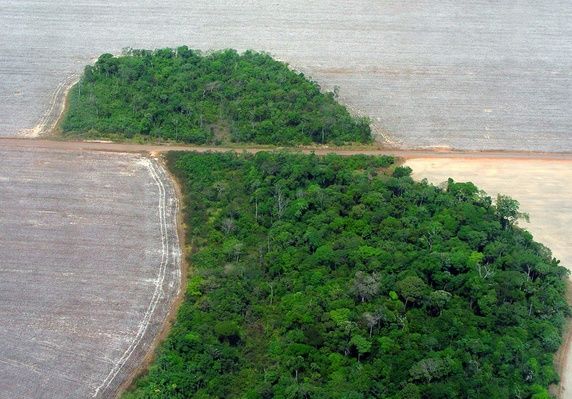
First of all the metaphor is a bit back to front as the jungles continually produce oxygen, and they do not produce CO2 (except when destroyed). Our lungs of course absorb oxygen and exhale CO2. So, in that trivial way, they are not really much like lungs at all. But I'm talking here about the way the metaphor is often used in news stories and popular accounts, to say that we depend on the jungles for oxygen. Is that true?
Here are the facts:
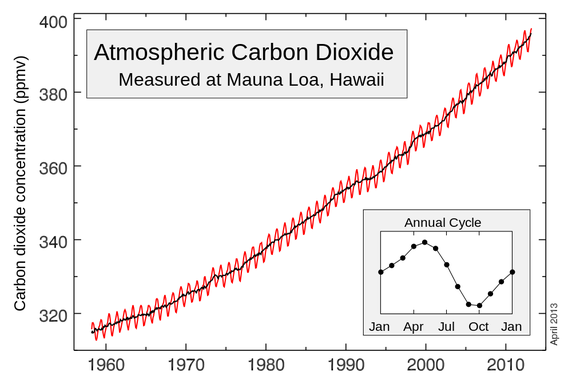
There are many other reasons we need forests. And on the very long term, yes we need them for oxygen to breath, along with the green algae in the sea.
But we are not going to run out of oxygen or die of CO2 poisoning due to cutting down trees, or indeed, even through burning fossil fuels. We may get global warming due to increase greenhouse gases and many other major effects but not lack of oxygen to breath.
Actually 70 to 80% of our oxygen comes from green algae The Most Important Organism? | Ecology Global Network
But even if we destroyed all those too in some unimaginable eco-catastrophe we'd still be able to breath the air due to the oxygen that is still in it, leaving centuries for the Earth to recover and start creating oxygen again.
Though we don’t need them for oxygen, there are plenty of excellent reasons to keep trees:
For more about this see Why forests matter

Dwellings of an uncontacted tribe in the Amazon rain forest - the place is their home. Tropical forests are home to about a million indigenous people, and about a hundred million people around the edges of the forests depend on their products.
And the news is good here, that many countries are taking action to stop and even reverse deforestation. For instance Brazil has cut down the rate of deforestation of the Amazon by 82% already and aims to stop it altogether and reverse it How to stop deforestation? Make 'good stuff' cheaper
But let's make it clear that we will not have any problem at all breathing as a result of cutting down trees.
Let's focus on the many very real things that can go wrong and that we can do something about. And lets not get people worrying about nonexistent issues that can never happen.
The answer is no, nothing like this can happen. First to explain continental drift. All the continents are moving slowly, all the time.
That idea seemed very extraordinary to the early geologists. But now it is generally accepted. The continents are rigid plates that are less dense than the denser mantle below. The mantle is not quite liquid, and indeed the top 100 kilometers is solid rock, but the motion is so slow that even solid rock can be soft enough to move. The whole thing is driven by the heat of the Earth’s core and convective motion.
This animation by the geologist Christopher Scotese shows the continental drift first backwards from the present to 240 million years ago, then it goes forward all the way to 250 million years into the future. Notice how the continents formed a single large continent 240 million years ago and they are predicted to come together to make another large continent in 250 million years in the future. This is thought to have happened over and over, many times in the geological history of our Earth.
So anyway as part of those motions, then some of the plates rub against each other, or collide or pull apart, or one plate will submerge beneath another one - and this causes earthquakes. (Details of the various ways the plates can move.)
Here is a summary for kids about how continental drift works.
If you live far away from any fault line, then the chance of an earthquake is usually very low.
The San Andreas fault in California is an example of a place where two plates are sliding in opposite directions like this.

And, there is a risk of a big Earthquake in California at some point, yes. May happen some time in the next 30 years or so.
Magnitude 8 or larger. New Long-Term Earthquake Forecast for California (3/10/2015 12:30:00 PM)
They are talking about something like the 1906 San Francisco earthquake.

That really did happen and was hugely devastating. But remember the skyscrapers then weren't as well built to withstand earthquakes in the way modern California skyscrapers are, though they had already designed buildings to be earthquake resistance.
Also 90% of the damage to the structures was due to fires.
"One of the reasons that fatalities in the earthquake were a fraction of one percent of the population and complete collapses were so few is that well before 1906 engineers and architects attempted to build structures with earthquake-resistant features.
"The 1906 fire caused at least ninety percent of the damage to the city and perhaps more. City officials and citizens emphasized the fire in order to receive insurance payments. Ironically, they couldn't over-emphasize the consequences of the fire because a majority of damage was due to the fire. But engineers and architects did learn from the earthquake. They quietly continued to build earthquake-resistant buildings, and put into effect a strong \building code that addressed earthquake danger. After the earthquake, the citizens responded by voting to build a huge water system dedicated to fighting fires, which was earthquake-resistant as well."
Nowadays houses and skyscrapers are much better built than they were then. So that would be a mitigating factor but still it would be devastating and surely many would die.
As for the idea that California would fall into the sea - that's impossible.
One geologist worked out that to have an earthquake that big, you'd need a fault line 6,000 miles long all the way from the pole to the equator, and you would need the entire fault line to slip at once (with all the energy of the slip focused on California). Apart from the improbability of such a vast fault line slipping simultaneously - such a long fault line doesn't exist in our world. See California Geological Survey - Earthquake
Even major earthquakes like the Nepal one shift the land by meters at most. The Nepal earthquake moved the land upwards by between 1 and 2 meters.
Nepal earthquake may have raised all of Kathmandu by 3 to 6 feet - and moved Katmandu about 3 meters southward Nepal earthquake moves Kathmandu but Everest height unchanged
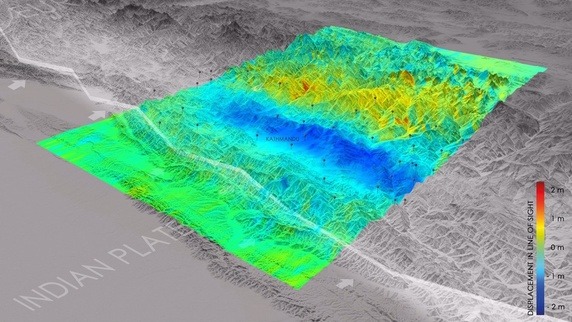
An interferogram showing vertical displacement of land a result of the April 25 earthquake. Here red = vertical displacement of 2 meters - so a few spots were raised by 2 meters. There were horizontal movements also of a few meters.
The geologist I mentioned says this about these types of movies in the introduction
"Whether we view movies as an educational experience or simply entertainment, we all value the ability of movies to help us escape reality for a little while. Sometimes, however, because a movie uses science and technology as a backdrop, the story will be more believable to its viewers, helping them form opinions that might affect their view of reality and, ultimately, the way they live their lives."
"Some moviemakers have relied on a perception of reality that has been fostered over the years by, in many cases, watching other movies. They do this instead of developing equally interesting story lines based on the truth."
California Geological Survey - EarthquakeDOC
I.e. it’s a case of movie makers watching movies that their audience are familiar with so building up a movie based mythology that the audience will go along with because they have been prepared for it by previous movies.
It's known as the California Collapse - TV Trope
As for clusters of earthquakes - well they can't set each other off, they are too far apart. This is just natural random clustering.
See List of earthquakes in 2015
If you look a the table, then there were 143 earthquakes magnitude six upwards. So it must be quite common for two to happen in a day. There are only 20 magnitude 7 upwards. Still there's a strange mathematical result - if you have a party with 23 people in a room, though the chance that you share a birthday with one of the others is only 22/360, the chance that any two of them share a birthday with each other, when you take account of all possible pairings, is 50%. See Birthday problem.
So at 20 or so a year, it must also be quite common that you get two of the magnitude 7 and upwards earthquakes in a day too.
Earthquakes often cause other aftershocks as they send tremors through the earth that can cause other faults to slip - and occasionally they can be as large as the original earthquake. So earthquakes could cause each other - but probably only over ranges of hundreds of miles, not so likely over thousands of miles. See this story from 2012: Are 4 Big Earthquakes in 2 Days Connected?
Earthquake Facts & Earthquake Fantasy
Written Tue CommentShareHere we are talking about a massive “supervolcano” eruption, which happens rarely.
Summary: Yellowstone erupts rarely, with a chance of perhaps 1 in 80 of an eruption every century. It nearly always erupts as a normal eruption with only limited effects mainly within what is now Yellowstone park,. If we do get a supervolcano, the main effect is on the climate. It would reduce the temperature globally by about ten degrees C for a decade. Crops in the region near to the volcano would also be smothered by layers of ash in the year of the eruption - how much of a difference that makes depends on when it happens in the year. Jets would be grounded after the eruption for some time, over a wide area until the dust settles.
The numbers of supervolcanic eruptions for the whole world (not just Yellowstone) vary between 1.4 and 22 every million years, making the chance of a supervolcano in any century between one chance in 500 and one chance in 7000 approximately. That’s quite a low probability.
We would have some warning, of weeks, perhaps months or years. We could prepare for a supervolcano by testing the crops we’d need to grow in the cooler world for that decade, With enough warning we could also store crops that are normally used to feed animals or to make ethanol to help tide through the first year after the eruption.
A super volcano doesn’t threaten our survival as a species, and is also very unlikely, but it is something that is worth giving some thought to. So now to go into this in more detail:
First, it’s not at all certain the next eruption would be a supervolcano - indeed it’s far more likely to be an ordinary eruption. There have been 80 non explosive eruptions in the last 640,000 years since the last supervolcano eruption. So that’s the most likely eruption by far. The last 20 of those were mainly lava flows. An eruption like that would disrupt activities in the Yellowstone national park itself, but it’s likely to lead to few deaths and would not be catastrophic.
The average of the two intervals between the last three major past eruptions is 740,000 years and that’s the basis of the often quoted 1 in 740,000 chance of an eruption per year - or 1 in 7,400 per century. But that’s not a very compelling argument. Some scientists think that it may not erupt as a supervolcano again ever. They think it may be winding down in its activity.
Also our understanding of these large volcanoes has moved forward and with modern understanding they think that if it did happen, the build up to a supervolcano in Yellowstone would be detected weeks in advance, perhaps months or years. Volcano Hazards Program YVO Yellowstone
However what if there is a supervolcano eruption, what happens then?
“The term “supervolcano” implies an eruption of magnitude 8 on the Volcano Explosivity Index, indicating an eruption of more than 1,000 cubic kilometers (250 cubic miles) of magma. Yellowstone has had at least three such eruptions: The three eruptions, 2.1 million years ago, 1.2 million years ago and 640,000 years ago, were about 6,000, 700 and 2,500 times larger than the May 18, 1980 eruption of Mt. St. Helens in Washington State.” Yellowstone Volcano & Supervolcano
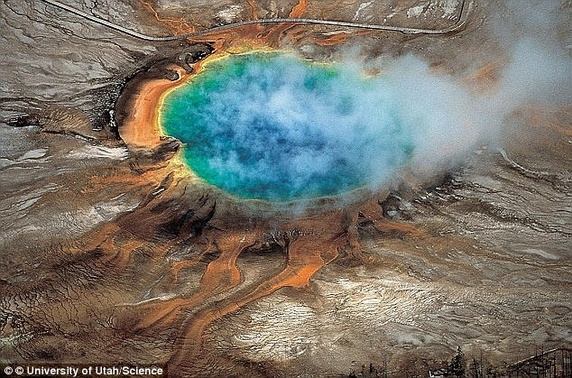
Grand Prismatic hot spring, Yellowstone National Park. Estimate of 1 in 700,000 chance of an eruption per year (1 in 7,000 per century). which could kill 90,000 people. See What would happen if Yellowstone’s supervolcano erupted?
But how much effect would it have? Well the largest supervolcano was 2.1 million years ago. If it was as large as that, it would be very extensive in its effects. If it was as large as the one 640,000 years ago it would also have extensive effects.
It’s hard to know from studying the geology as most of the ash would be eroded and not preserved. But a recent study in 2014 used a computer model to try to figure out what the effects would be, assuming 330 cubic kilometers of volcanic ash, dense-rock equivalent (so much more thickness for the ash itself).
It’s summarized here: Modeling the Ash Distribution of a Yellowstone Supereruption (2014)and the paper itself is Modeling ash fall distribution from a Yellowstone supereruption
This graphic from their paper shows how the volcanic ash would spread out over the US after such an eruption:
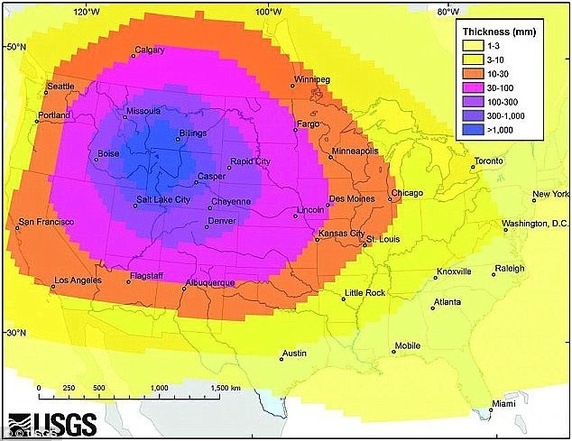
You’d get 1–3 millimeters thickness of ash right out to New York, which is enough to “reduce traction on roads and runways, short out electrical transformers and cause respiratory problems”. There would be centimeters of thickness over much of the mid west, enough to disrupt crops and livestock, especially if it happened at critical time in the growing season. and a meter of thickness out to quite a distance. The worst affected in their list of cites is Billings, population 109,000, which their model predicted would get an estimated 1.03 to 1.8 meters thickness of ash.
Artist’s impression here:
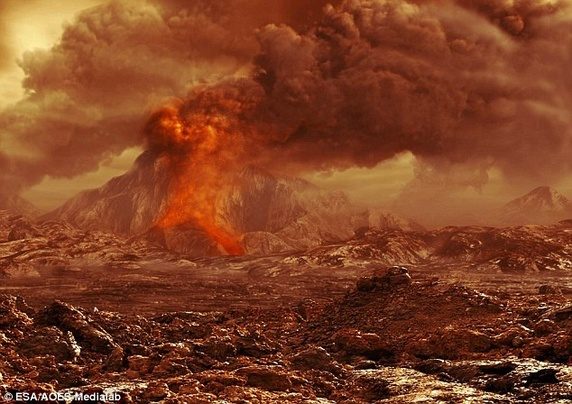
First, how likely are they? There’s an estimate here of the probability of a supervolcano happening anywhere in the world, and its effects. They say that there have been 42 supervolcanoes in the last 36 million years. However those came in two pulses and the rate varies between 22 events per million years and 1.4 events per million years.
The worst supervolcano in recent times was the one that created Lake Toba in Indonesia about 75,000 years ago. It’s 100 kilometres by 30 kilometres, maximum depth 505 metres.

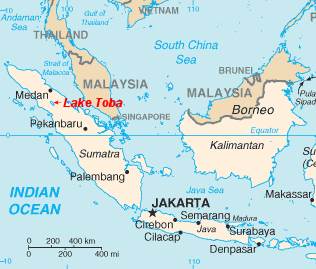
Its ash covered Malaysia to a depth of 9 meters, there’s an ash layer from it in central India that’s still 6 meters thick today, and ash from it is detected as far away as Lake Malawi in East Africa.
It injected 2500–3000 km³ of debris into the atmosphere, and probably killed 60% of the human population worldwide, mainly through climate change impacting on their food supply.
That’s the picture generally, that the main effect is through global climate change, which reduces the temperature globally by about ten degrees C for a decade, together with the direct effects of the deposits of ash on their crops. A large supervolcano like Toba would deposit one or two meters thickness of ash over an area of several million square kilometers.(1000 cubic kilometers is equivalent to a one meter thickness of ash spread over a million square kilometers). If that happened in some densely populated agricultural area, such as India, it could destroy one or two seasons of crops for two billion people.
It would also mean that you can’t fly jets in the affected area for as long as the air is filled with ash, but that’s a minor effect compared with the rest of the devastation. As for the “noxious gases” such as sulfur dioxide - these mainly make a difference to the upper layers of our atmosphere by combining with water vapour to create clouds that block out the sun. It’s not like you’d have trouble breathing or anything like that globally - the amounts of gas are far too small for that, it’s manly the effect of dust and clouds on the climate.
We could prepare for this. With just a couple of years of warning, we could do large scale tests to work out which crops we’d need to grow in the cooler world for that decade, and store crops that are currently used to feed cattle or for production of ethanol, for human consumption instead, which would be enough to give us a buffer for the first year. In that way we would be able to avoid perhaps all deaths from starvation, so impact would be far less than it was for early man.
For details, see Extreme Geohazards: Reducing the Disaster Risk and Increasing Resilience from the European Space Foundation, and for the Yellowstone park eruption simulation,: Modeling the Ash Distribution of a Yellowstone Supereruption (2014) which summarizes Modeling ash fall distribution from a Yellowstone supereruption
This answer is based on those two sources, together with the USGS FAQ here Volcano Hazards Program YVO Yellowstone plus I used some details from the Wikipedia article on Lake Toba - you can check the citations there for more details.
(originally published as my answer to What will really happen when the Yellowstone supervolcano erupts?)
Written Nov 17 CommentShareExample: Stephen Hawking Says 'God Particle' Could Wipe Out the Universe
Stephen Hawking does indeed say this. But what he doesn’t make clear is that this is a very academic scientific debate about an unlikely scenario that can’t really happen right now.
Some of these scenarios are just nonsense like Nibiru and can’t happen. Some are real but low probability. You can expect a small but destructive asteroid every few thousand years or a big one every 100 million years.
But this scenario is just vastly unlikely, improbable beyond belief that it could happen right now. Let me explain:
First, if it could happen, then you’d expect it to have happened already in the first 1/10,000,000,000th of a second along with the other symmetry breaking when gravity split off from the other forces, when it was tremendously hot. For an example timeline for the other forces, see Unification of the Fundamental Forces.
Since that hasn’t happened, the false vacuum has to be very stable, or else, probably as we find new physics we find out that it is not in a false vacuum state at all.
And yes, on the basis of the measured mass of the Higgs boson, the false vacuum has to be very stable. Joseph Lykken says that an event that triggers a patch of true vacuum, if the theory is correct, happens on average once every 10, 000, trillion, trillion, trillion, trillion, trillion, trillion, trillion, trillion years.
That means it is nothing to be worried about. This is so improbable that it can't really happen at all. The chance of winning the Euromillions jackpot for instance is 1 in 139,838,160. The chance of a false vacuum in any particular century is less than the chance of winning a string of twelve Euromillions jackpots one after another without a single miss. Just to win it once is incredibly unlikely. And I don’t mean the chance of anyone winning them all.
Rather, it’s as if you bought twelve tickets for Euro Millions, those were the only lottery tickets you ever bought in your lifetime, and you won it every single time. Do you think that could happen?
For those of you who live in the States, with a chance of 1 in 292 million of winning the US powerball, then if you play it 11 times, and win every time, as the only lottery you ever play in your life that's still far more likely than a false vacuum decay somewhere in the universe in the next century, if the theory was correct.
How tiny are your chances at winning the Powerball jackpot? This tiny.
To put it another way, you'd have to have an immense lifetime to be concerned. If you lived as many million years as a normal human lifetime has seconds, and then as many of those time periods as a human lifetime has seconds, and as many of those vast time periods as ... nine times, then you might have some cause for wondering if perhaps it would happen in your lifetime. It still probably wouldn't.
So, this is just an idea that some scientists have. Normally they think of it as something that, if it happens at all, happens not just trillions of years into the future but vast time scales so vast you need 1 followed by a hundred zeros to express the number of years between then and now.
Stephen Hawking said that in theory it could happen now through "quantum tunneling". Lykken said in response that the situation is strange if matter is on such a knife edge between stability and metastability and that it may be a sign that the calculation may be wrong. He gives the example of supersymmetry - a theory according to which particles we know about have other paired much heavier particles we haven't discovered yet. According to that theory our universe would be stable.
We know in any case that the standard model of particle physics is wrong, because it doesn't explain, for instance, gravity. It’s not compatible with general relativity. So I don't think one needs to put much credence on the theory. Stephen Hawking also is fond of saying dramatic things like this.
The first answer here goes into it a bit What did Stephen Hawking mean when he said that the Higgs Boson could become metastable at energies above 100bn GeV, and why would this metastability lead to catastrophic vacuum decay?
A bit more background. The idea is that our universe might seem to be in the lowest possible energy state, but actually is metastable - that it could collapse to an even lower energy state if nudged in the right way.
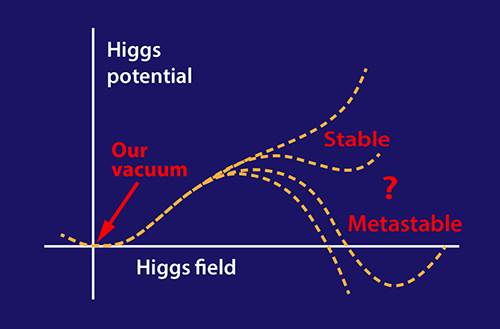
This shows the idea, how if somehow we could be nudged over that hump in the higgs potential we might fall down the other side into another state which would have different laws of physics from the ones we enjoy now. We would not survive that transition. It might go to another stable state or just fall endlessly changing all the way with no final state.
If the only other available minimum is higher than our current one then ours is a stable state and we don’t need to worry about a nudge sending our universe into another state. But if it is a lower level than ours then in principle we could be nudged over the hill as it were into that lower state so then our current state is metastable.
It’s obviously a very unlikely thing to happen because our Universe has stayed as it is for nearly fourteen billion years with nothing like this happening. But is it at all possible?
So the thing is that with the discovery of the Higgs Boson with the LHC they calculated that our universe might be completely stable, or it might be that it is metastable with this lower energy state available. It is just on the edge, according to standard particle physics.
So that got physicists rethinking this question - if our universe is metastable then just possibly there may be some way it could collapse into a lower energy state. It’s a rather academic question as most think if that is possible, it happens at vast time scales into the distant future.
Anyway the calculations suggest that the universe is borderline metastable though it could be stable within the margin of error (within 1.3 standard deviations which means it is quite possible). To find out exactly they need more precise values of the mass of the Higgs boson, and top quark and various other parameters.
If our universe is in a false vacuum state, then you have to ask how we got there. It would suggest our models need refining, and then after refining those models, we would have to re-examine the universe’s stability which might end up proving it is stable after all.
It’s not possible to debunk this by saying it is absolutely logically impossible, but it doesn’t seem like the sort of thing that is worth losing any sleep over. The physicists are arguing away at this and they don’t know the answer, but we know their theories are not the final word.
They may well end up proving that the universe is stable after all and that this scenario is not possible at all. It is all very speculative at this stage, and if the universe is unstable then most likely only on mind bogglingly huge time scales. E.g. perhaps 1 followed by 100 zeroes many years, that sort of thing.
And after all, Stephen Hawking lost a $100 bet when the Higgs boson was discovered. Now he is predicting it will be metastable. He could easily be wrong about that too. He has a track record of predicting scientific doomsday things without putting a great deal of thought into them. See my Debunked - Stephen Hawking puts an expiry date on humanity. He is not as bad as Michio Kaku in this respect, but he does seem to relish his doomsday forecasts.
See also Will the Higgs Boson Destroy the Universe???
The article is here: Stephen Hawking Puts An Expiry Date On Humanity Stephen Hawking is a well respected excellent theoretical physics in the field of general relativity, black holes etc. He is famous for such things as “Hawking radiation”. When writing on general relativity he writes carefully and accurately.
But he has something of a tendency to exaggerate threats and say that the Earth is doomed in one way or another. When you follow up the things he says on those topics, they just don’t pan out. If you do that for the things he mentions in that article, you find that none of them threaten survival of humans.
Brilliant physicists, however clever, are just people like anyone else. They are just as fallible as anyone else. We should never just accept something as true because the person who said it happens to be very clever, much more clever than we are.
Let me explain:
Global warming will make the Earth more habitable if anything, it's the transition that's the difficulty. I won’t say any more here as I go into it in detail here: Debunked: Global warming as terrifying apocalyptic scenario - risking something not far off Venus - story in the Independent
A nuclear war would not come anywhere near to making the Earth uninhabitable. The entire southern hemisphere is a nuclear free zone, the worst of the radiation is so short lived it is over in half an hour, there is plenty of radiation left to have long term health effects, increased cancers and other health effects, but the levels of radiation that kill people quickly are soon finished with.
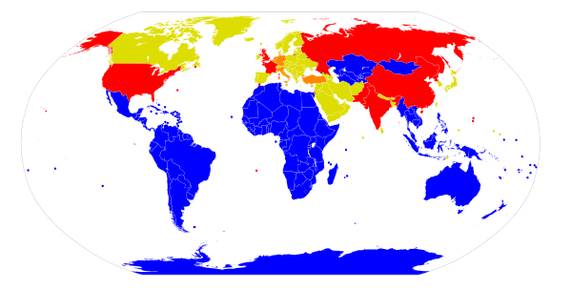
The blue areas here are nuclear free. If we did have a global nuclear war - then there would be no nuclear bombs in those areas at all. Also the harshest radiation is over quickly, the lethal radiation is mostly over within half an hour.
The idea that nuclear weapons would cause a nuclear winter has been shown to be false.
None of that is to diminish the seriousness of nuclear weapons, but a nuclear war would not make us extinct.
And viruses if they kill their host quickly don't spread far. So a virus that spreads will also have people who are carriers that are less affected by it. It's in the interest of both virus and host that the host survives so if the virus can adapt to keep the host alive also, it will do that.
If it happens slowly, then there's time to find a cure. If it happens quickly then it can't spread to everyone.
Then there are the isolated communities including those in submarines, just remote places with few or any visitors and even the uncontacted tribes. Unless implausibly you have the viruses somehow spread so that they reach every square meter of the Earth it's not a likely scenario. And after all who would engineer a virus that is going to kill the people who engineered it?
Viruses and other diseases can make a species extinct if it is already threatened and close to extinction. But we are not in that situation. Humans are amongst the species least of risk of extinction in the world.
Our Earth makes everything so easy for us, compared with space colonies. Perhaps one thing they might do is help us to appreciate quite how valuable and wonderful our Earth is, and how rare, as we look back at the beautiful Earth from the Moon or further afield.
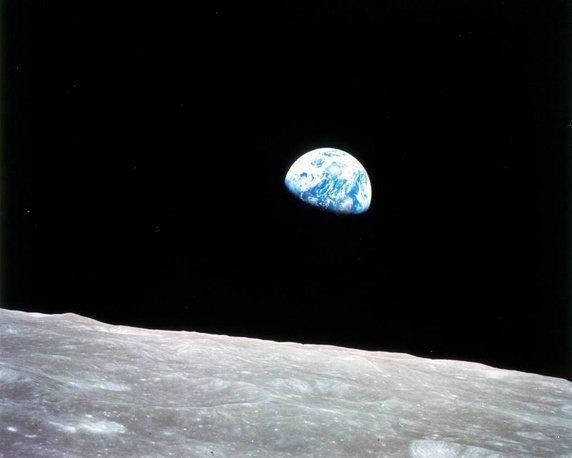
Earth rise over the Moon as photographed from Apollo 8, first mission to orbit the Moon, on Christmas Eve, Dec. 24, 1968
As Carl Sagan in Pale Blue Dot
"The Earth is the only world known, so far, to harbor life. There is nowhere else, at least in the near future, to which our species could migrate. Visit, yes. Settle, not yet. Like it or not, for the moment, the Earth is where we make our stand."
There are things that could make us extinct. To my mind the thing we have to be most careful about at present is synthetic biology - creating microbes that are based on a different biochemistry from DNA based life by modifying the way they work in ways that don’t happen in nature. We do have experiments of that sort already, but the scientists concerned take great care to make sure the microbes can’t survive in the wild. Similarly I think we have to take great care if we ever return life based on a different biochemistry from another planet. See my Could Anything Make Humans Extinct In The Near Future?
And for the idea of Earth as its own backup in more detail: Earth best for a "backup"
We could do a backup of knowledge in space. I can see value for that. We could build a repository of all human knowledge on the Moon, see
The Moon is so stable that a backup there could last for billions of years, long after our civilization is forgotten on Earth. It could be an insurance for events here on Earth that lead to us forgetting our civilization. I see that as of value.
But humans themselves going extinct? I don’t see any value going into space to prevent that. As Carl Sagan said, Earth is where we make our stand. If we preserve Earth and keep it in good shape, then we also will be in good shape for the future.
Written Wed CommentShareSummary - This is just exceptionally unlikely. Theoretically it is possible but as far as worrying about it, forget about it.
The chances of any celestial object even getting as close as Neptune in any one million year time period are minute:
The chances of any of these getting as close to the sun as Earth, hitting Earth or hitting the Sun are vanishingly small. .
Let’s start with neutron stars, as amongst the hardest to detect. There are several hundred million neutron stars in the galaxy as a rough estimate (see Compact Objects in Astrophysics) . Most of them would be very old and cold, due to supernova explosions billions of years ago and an old cold neutron star would be very hard to detect, that's true. You might think that with so many of them, that we’d have a chance that one of them would hit us. But the galaxy is also very huge, as worked out by Phil Plait The volume of the Milky Way, our galaxy, is roughly 8 trillion cubic light years
With the volume of the galaxy 8 trillion cubic light years, the calculations are simplified if we look at a volume of 8 thousand cubic light years, i.e. in a sphere of radius twelve light years.
So those several hundred million neutron stars correspond to about ten neutron stars within twelve light years. By comparison our galaxy has 400 billion stars (you get various estimates here, some say 100 billion, I’m going by the higher estimate) which makes it around 200 normal stars in that same 8,000 cubic light years. There may be twice as many rogue planets as stars so that makes it 400 rogue planets in that same region. About one star in a thousand is a black hole. See Black Holes. So that same 8,000 cubic light years would have 0.2 black holes on average.
So in short we have
within that twelve light years radius.
Stars are from several hundred to a thousand times more common than neutron stars. That might surprise you given that many stars have short lifetimes and of those many end in neutron stars - so what has happened to all those stars that reached the end of their lifetime billions of years ago?
The thing is that those bright stars are far outnumbered by the numerous fainter stars. Most stars are red dwarfs with trillions of years long lifetimes - Red Dwarfs: The fascinating stars that live for trillions of years ).
Stars, even though they are much more common, are also very unlikely to do close passes of the solar system. Never mind hitting the Earth, or the sun, they are extremely unlikely to get as close as Pluto. The closest flyby of a star in recent past is Scholtz's star, which passed 0.8 light years (around 9.6 light months) away 70,000 years ago. See: Closest known flyby of star to our solar system: Dim star passed through Oort Cloud 70,000 years ago.
By comparison Pluto is 5.5 light hours away. So - when a very rare close encounter may take a star 9-10 light months away - how likely is it that a star would pass as close as 5.5. light hours away? With neutron stars a thousand times less common than stars, how likely that a neutron star would come anywhere near our solar system?
To get close enough to pass between Earth and the Moon it would need to pass just one light second away. To hit Earth it would need to hit us accurately to the nearest 0.02 light seconds - within two hundredths of a light second. The sun’s diameter is 4.64 light seconds, so to hit the Sun it would need to get within a few light seconds of it.
I think you can see that all these things are so unlikely it will surely never happen.
And it is just a single pass, because if any rogue planet, or neutron star, or black hole or anything were to pass through our solar system - it would be going too fast to do anything except just fly out again.
Capture into solar system orbit by Jupiter - tracing the path of Voyager 2 or Voyager 1 backwards - is so very improbable you can forget about it. It is easy for a solar system to eject a planet, and very hard for it to capture one. That’s a bit like the way it is easy for a cup to break but very hard for a cup to spontaneously assemble from the broken pieces on the floor.
Another analogy - it would be theoretically possible to drop a pin on a hard polished floor and for it to land point down balanced exactly. And if all the tiny drafts of air pushed in the right way to keep it balanced, it could stay balanced like that for an hour or more. It's possible but surely even with the thousands of pins dropped on polished floors, it's surely never happened in the history of humanity!
So now, what is the chance that Earth or the Sun is hit by any of these, or that they come into our solar system?
I’ve found a way to do an exact calculation
There's a formula, we can use here, from Perturbation of the Oort Cloud by Close Stellar Approaches. Our sun has approximately 4.2*D^2 encounters with other stars every million years.
There D is the diameter in parsecs of the spherical region around the star.
Neptune's semi major axis is 4.49506 billion kilometers so it's diameter is around 0.00029135 parsecs. So substituting that for D, every million years there is 1 chance in 2.8 million (calculated as 1/(4.2*0.0002913^2)) of a star passing closer to the sun than Neptune.
There may be twice as many rogue planets as stars, so that means one chance in 1.4 million of one of those passing closer to the sun than Neptune every million years. Over the 4.5 billion years of history of our solar system, this is so unlikely it has almost certainly never happened, a one in three thousand or so probability that any star has got as close as Neptune since our solar system formed.
So then back to our neutron stars, then there is less than one of those to every 20 normal stars, so that makes it one chance in 48 million of a neutron star passing closer to the sun than Neptune in a million years.
For black holes, then as only one star in a thousand forms a black hole, then that makes it once chance in 2.8 billion of a black hole coming closer than Neptune.
So to summarize, chances of getting closer than Neptune are
These are almost vanishingly small chances already.
Now for the chance of a star hitting the Earth. Now D is 12,742 km, which is 4.129401e-10 parsecs. So now the calculation is one in 1/(4.2*(4.129401e-10)^2).
So the chance of a star hitting Earth in the next million years is about 1 in 1.3962931 * 10^18. Or about 1 in 1,400,000,000,000,000,000
We can also look at the chance of a star hitting the Sun. Now D is 1.3914 million km, or 4.5092203 × 10^-8 Parsecs 1/(4.2*(4.5092203e-8)^2) makes it 1 chance in 117,000,000,000,000.
So to summarize, every million years there is a
So about one chance in 117,000 billion of it happening every million years. With 400 billion stars in the galaxy, we get one chance in 117,000/400 or about one chance in 300 that we get a collision between two stars somewhere in the galaxy every million years. With the galaxy 13.21 billion years old, then it may have happened 13,210/300 times or about 44 times since the galaxy formed, that one star has hit another star.
For rogue planets double those figures, so about 88 collisions of a rogue planet with a star in the whole galaxy. For neutron stars, divide by 20, so we might have had a couple of collisions of neutron stars with another star. For black holes divide by a thousand - probably no black hole has hit another star in our galaxy since it formed.
So we have the figures for anywhere in our galaxy since it formed:
Those are averages though. The stars are much more densely packed in the center of the galaxy, so stellar collisions there should be more common. The galaxy also has a giant black hole in its core, and stars must collide with it quite often. I’ve also assumed that there is not enough gas or dust to cause significant drag on the approaching object. That’s true for our sun but not true for newly born stars or stars that hit the accretion disk of a black hole.
However, we orbit far from the galactic center, and are at no risk of collision, no more risk than Earth is at risk hitting the sun, because we orbit the galactic center in a long term stable orbit.
In the universe as a whole, there are so many stars that such collisions are common. Collisions of a neutron star with a black hole cause some of the enigmatic gamma ray bursts - the shorter ones.

Artist’s impression of a neutron star captured by a black hole. In a Flash NASA Helps Solve 35-year-old Cosmic Mystery
This is of no danger to Earth whatsoever
Summary, most likely no effect. At most, could have an effect on our ozone layer. The danger is from UV light. Our atmosphere shields us from the ionizing radiation, same mass as ten meters thickness of water.
Even if the burst originates as close as a few thousand light years away in our own galaxy, the only effects would be increased UV from an ozone hole, and though it might cause some extinctions (jury is out on that), it would be easy for humans to protect against. As for WR104, at one point they thought there was a chance that it was pointed at us. New data suggests that it is tilted away from us at an angle of 30° - 40° (possibly as much as 45°) which would mean it would miss.
First gamma ray bursts are rare. They come in two forms, the long bursts and the short bursts. Long bursts come from supernovae, but only 1% of them cause these bursts, so they are very rare. They are associated with the very most brightest of supernovae (hyperonva). Short bursts may come from colliding neutron stars. For details see The biggest explosions in the Universe. The beam is tightly focused in opposite directions so has to be beamed directly at us, so the chance of us seeing one that is focused on us is low. Typically the beam is focused to within a few degrees. For more details about them and the theory of how they are formed: Gamma Ray Bursts (GRBs)
We wouldn't be able to predict a gamma ray burst, as the gamma rays arrive at the speed of light from thousands of light years away, but the chance of it happening is tiny.
If it did happen, then it is a short lived event, from seconds up to hours at most (but the very long events are very unusual).
Gamma ray bursts are very focused, with beams in opposite directions, and would need to be pointed directly at us to cause harm - which is very unlikely. We have seen many gamma ray bursts in distant galaxies, but most are over a billion light years away, which shows how rare they are.
Short bursts are caused by colliding neutron stars. The beams they produce are so narrow that we only spot 0.4% of them. The bursts are so bright we can spot them billions of light years away and most of the ones spotted are over a billion light years away.Gama ray bursts and pencil-thin jets
NASA gave a research announcement for a paper on How Deadly Would a Nearby Gamma Ray Burst Be? Paper itself is here. Some online sites reported this paper incorrectly as saying that the researchers had shown they were more hazardous than expected. Actually their conclusion was exactly the opposite of that - they proved that they are less hazardous than expected.
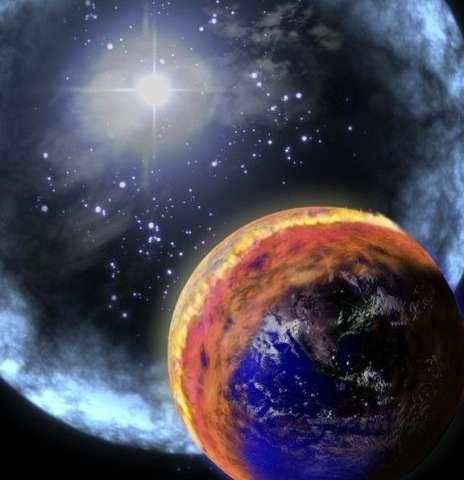
This NASA image illustrates the effects of a gamma ray burst on the Earth’s atmosphere, artist’s impression. Only one side is affected because the burst is over by the time the other side of Earth comes into view.
Our atmosphere shields us from the worst effects. It’s equivalent to ten meters of water shielding us from cosmic radiation and gamma rays. So you don’t need to worry about direct effects of all that radiation - it just won’t reach us (same is true for a nearby supernova).
Most of the effect would be on the ozone layer creating a hole and leading to increase UV light until the hole heals. This increase in UV can then break up oxygen atoms at ground level and so cause increased ozone levels at ground level - so the effect is less in the upper atmosphere but more at ground level.
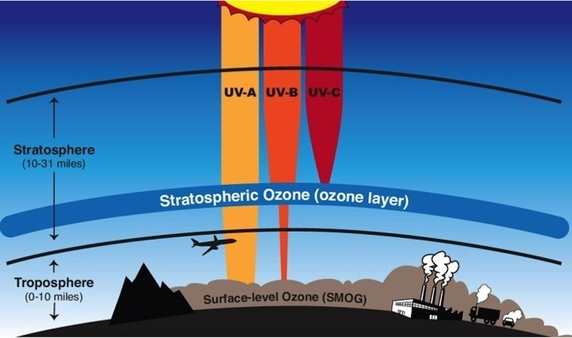
Shows how UV in the upper layer can cause Ozone smog at ground level
The next graph shows the output of their simulation. Altitude vertically, time in days horizontally. The red shows depletion of ozone in the upper atmosphere, and the blue shows increases of ozone in the lower atmosphere.
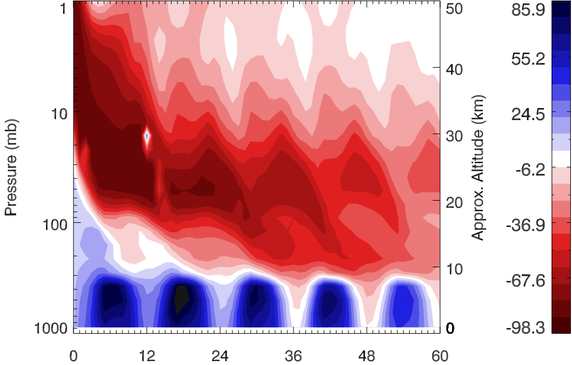
The gamma ray burst not only reduces the amount of ozone in the upper atmosphere. It also creates ozone depleting nitrogen oxides. They took the example of a gamma ray burst which hits the south pole most severely, as that has down drafts of air constantly. Those would bring the nitrogen oxides down to the lower atmosphere which is why you see the red regions descending with time. This causes a series of pulses of ozone depletion in the upper atmosphere which then leads to increases of ozone at sea level as the red regions let more UV through to the lower atmosphere. The model assumed a 100kJ/m2 burst from the direction of the South Pole, for a gamma ray burst within a few thousand light years of Earth (that’s very close compared to the diameter of the galaxy of 100,000 light years).
So could this raise the ozone levels enough to be harmful to life? The answer from this study was no. A very nearby gamma ray bursts could raise the ozone levels at ground level temporarily to 10 ppm. To be harmful to animal life it would need to reach 30 ppm. It is also not enough to be harmful to ocean life. Even if all the ozone created at ground level got absorbed in the sea, it would not be enough to be harmful to ocean life. So this disproves the hypothesis that a gamma ray burst could be the cause of the late Ordovician mass-extinction.
This was falsely reported on some news sites as proving that hypothesis that the gamma ray burst caused the late Ordovician mass-extinction. As you can see, that is the exact opposite of what they actually did prove.
However the paper was just about the effects of ozone. UV light remains a hazard after a gamma ray burst and could cause extinctions of species (not humans).
Are there any nearby stars that could go supernova and send a gamma ray burst towards us? Well there is this one WR104, which is about 7,500 light years from Earth. That makes it close enough for that 100 kJ type blast that could damage our ozone layers and it is a “Wolf Rayat star” which is likely to go supernova in the next few hundred thousand years.
Of all the stars of that type we know, it’s the only one that we seem to see more or less facing along its axis. So it could be pointed straight at us. The dust is lit up in a spiral pattern and it is carried around in synchrony with its companion star with a rotation period of 220 days.
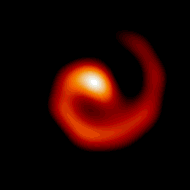
More detailed picture here:
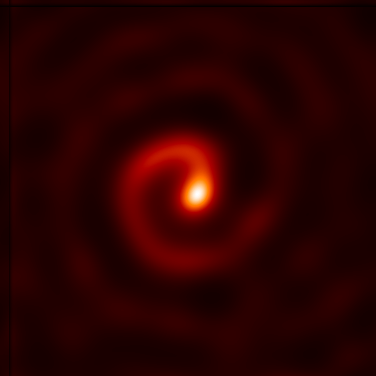
It looks as if it is facing us nearly face on. But spectroscopic observations of the star suggest it’s axis is at an angle of 30° - 40° (possibly as much as 45°) which would mean it would miss. See WR 104 Won't Kill Us After All - Universe Today
Though this sparked newspaper headlines about it killing us all, the thing to bear in mind is that even if we did get a direct hit, we’d be protected by our atmosphere and the effects would be on the ozone layer mainly and increasing UV until the ozone layer healed.
Our atmosphere would shield us from most of it except some strong UV light due to depletion of the ozone layer. You'd be shielded from that just by standing in a shadow or shading yourself from the light any way you like. So, humans could shield against it easily, just use more sunblock when out of doors until the layer heals. Other creatures of course couldn’t use sunblock and might be more affected by it.
The oxides of nitrogen produced in the upper atmosphere are not concentrated enough to have an effect at ground level and this new research shows that ozone levels at ground level are not high enough to be hazardous even for a very close gamma ray burst. So the main effects are from the UV. So if a gamma ray burst causes extinctions then it would be due to the increased levels of UV light at ground level until the ozone hole heals. But this is something humans can protect ourselves against easily. More about its effects in this paper
Researchers reported in 2013 that Earth might have been hit by a Gamma-ray burst in 8th Century (paper: Effects of Gamma Ray Bursts in Earth’s Biosphere) but this would seem a bit unlikely considering how rare they are. Later research that same year (2013) found that the increased levels of Carbon 14 and Beryllium 10 in AD 775 could be explained by a solar flare instead, see The AD775 cosmic event revisited: the Sun is to blame
A nearby gamma ray burst, only a few thousand light years away, would hit one hemisphere of Earth with a short but intense blast of bright light, X-rays and gamma rays. But our atmosphere blocks these high energy photons, so much so that astronomers have to use space telescopes above the atmosphere to observe them.
Some of the UV light would get through the atmosphere, a brief fraction of a second burst of light, up to ten s of seconds for a long burst. But that seems unlikely to cause a biological catastrophe though some creatures would be affected.
Though the authors don’t say, human eyes are easily damaged by UV light so probably anyone looking at the flash at the time would be blinded, get a big dark spot form in their retina of dead cells, just as you would do if you stared at the sun through a telescope. But then - you might blink or shut your eyes automatically when you see such a bright flash of light, and UV light is blocked by the human eyelids, and if you are looking in a different direction or in a shadow from the burst you won’t be affected.
The main effects even of a very nearby gamma ray burst are
Of those, there isn’t enough nitric acid rain to harm organisms and the nitrate might actually act as a fertilizer for some plants.
The cooling is not that strong, reduction in 1% for some years. Unless the climate was close to some “tipping point” it’s not likely to have a significant effect.
The main effect is from ozone depletion. This would increase the amount of DNA damage from UV light up to sixteen times for a few months, and up to five to seven times the usual levels for several years.
Humans could easily protect ourselves. It’s only light and you could use barrier creams, broad rimmed hats, and clothes covering your skin etc for a few months or years to protect yourself from the UV until it returns to normal levels.
These effects seem too small to do much, so it’s a challenge to understand how even a nearby gamma ray burst just a few light years away could lead to mass extinctions. This is on going research. One idea is that perhaps there would be a knock on effect for instance, from impacts on phytoplankton. They account for half of CO2 fixation and oxygen production, so perhaps even a small effect on them could change the climate significantly. See Gamma-Ray Bursts as a Threat to Life on Earth
Sometimes conspiracy theory videos or websites claim that scientists have predicted a future gamma ray burst for some particular date that will devastate life on Earth. If you see something like this, you can be sure that they are an unreliable source for astronomy.
Most gamma ray bursts observed are over a billion light years away and we haven’t yet seen one in our galaxy. These bursts are very rare indeed so it is an unlikely scenario.
Also, they can’t be predicted as they are due to distant events which we can’t observe in enough detail to predict - and it doesn’t seem likely that we can predict supernovae or gamma ray bursts for precise dates in the near future. At the moment astronomers at best could say something like “this star may go supernova some time in the next few million years and if so there is a tiny chance it sends a gamma ray burst along its rotation axis” (most supernovae probably don’t produce gamma ray bursts at all).
The nearest likely gamma ray burst in the last billion years is 1000 parsecs away. But could we have a really close one, as close as say 50 light years away? Gamma ray bursts happen every 10,000 to a million years in a typical galaxy. The volume of the Milky Way, our galaxy, is roughly 8 trillion cubic light years and it has has 400 billion stars approx. (going by the higher estimates here).
The volume of space within, say, 50 light years is about 500,000 light years. So you’d expect it to contain 500,000 * 400 billion / (8 trillion) or around 25,000 stars.
Or for 20 light years, 33,510 cubic light years, then you get 33,510 * 400 billion / (8 trillion) = 1675 stars. We actually have probably around 150 celestial objects including white and brown dwarfs. Stars within 20 light-years. So that’s over estimating by an order of magnitude or so as we live far out in the thinner outskirts of the galaxy.
So anyway let’s overestimate throughout for a rough back of the envelope type calculation. So 25,000 stars out of 400 billion, and assume a gamma ray burst every 10,000 years and one in 100 of those (say) is pointed towards us. So that makes it a gamma ray burst pointed towards us and within 50 light years every (400 billion / 25,000) * 10,000 years, or every 160 billion years. Remember that this overestimates the number of stars near to us by an order of magnitude, so it’s probably more like once every trillion years or so. So such a nearby gamma ray burst seems very unlikely.
Even at 50 light years, we’d be protected from most of the damaging radiation by the thickness of our atmosphere. It’s equivalent in mass to a ten meter depth of water. It would be rather similar to a nearby supernova. It’s too unlikely to get much attention in papers on gamma ray bursts, but there are estimates of the effects for a supernova. See What’s a safe distance between us and an exploding star? And for more details, the paper here: Could a nearby supernova explosion have caused a mass extinction?
They find that a supernova within 32 light years (ten parsecs) would not heat up Earth significantly, would not be bright enough to harm the ecology through the light alone. In the year after the event so you’d get as much ionizing radiation as you get normally in between a decade and a century. So significant but it doesn’t seem to be enough to be devastating.
It seems likely to be similar for gamma ray bursts, so the main effects would be on the ozone layer and on nitric acid rain - but we don’t need to look into this any more I think as the event is so very improbable.
I think many of the stories that circulate just ignore the effect of the Earth’s atmosphere. It’s equivalent to ten meters of water which is enough to block out most radiation. Also they forget about how rare they are. Typically they will be thousands of light years away from Earth, happen only a few times in a galaxy and the galaxy is 100,000 light years in diameter.
So basically they do back of the envelope calculations rather than reading the scientific research papers on the subject. It’s understandable that they forget about our atmosphere so easily. It doesn’t feel as if it is so heavy. The pressure is equalized inside and out. A bit like the way fish swim in the sea, we breathe the air and have no idea how much weight of air there is above us because we have the same amount of pressure outwards too and are in equilibrium with it.
When you drink water with a straw what actually happens is that you create a reduced pressure at the top of the straw and the weight of the atmosphere pushes the water up the straw into your mouth. If you had a perfect vacuum then you could suck water up 10.3 meters. So the weight of the atmosphere is the same as the weight of 10.3 meters thickness of water. Every square meter of the Earth’s surface has 10.3 metric tons of atmosphere above it.
Here is a video showing how you can suck water up to several meters through a straw, six meters, but not quite 10.3 meters - because you can’t create a perfect vacuum. Anyway - at the end where it shows them trying to suck the water up to the top of a cliff - the atmosphere above us is equivalent in mass to a layer of water the height of that cliff.
That’s what they tend to forget.
So they are right, there’s no warning, but you aren’t toast. Indeed you’d not notice the event itself at all except as a very bright flash - good idea to close your eyes if that happens because the UV light could make you blind.
The effects of a nearby gamma ray burst or supernova, even if it is as close as just a few light years away would be just on the upper atmosphere on the ozone layer leading to more UV radiation - an ozone hole - and possibly nitric acid rain. The ionizing radiation effects are not significant.
Perhaps Gamma ray bursts could have caused some mass extinctions in the past - but so far we don't have anything that is confirmed to have been caused by a gamma ray burst. It is a minority view hypothesis for the Ordovician–Silurian extinction events - if so this study suggests that they couldn’t have caused this extinction through ozone smog at ground level. That leaves the UV light but it’s hard to see that causing the extinctions to such an extent either. Paper about biological effects of gamma ray bursts here
You don’t need to worry that a gamma ray burst could make humans extinct. Though it could be a nuisance for us. Thankfully they are very very rare. Like supernovae, they can’t be predicted because they happen as a result of very distant astronomical events that we are nowhere near being able to observe with enough precision to predict such a thing.
We can identify stars that are going to go supernova in the next few million years, but that’s the most we can do by way of prediction. Of those only 1% would produce gamma ray bursts and of those, only a few typically would be beamed our way. So very very rare. The gamma ray bursts from colliding neutron stars are also very rare.
See also:
This originated in my answer to What would happen if a strong gamma ray burst were to hit the Earth?
So, this is yet another of many very theoretical ideas about how the universe (not our world) might end. If this theory is correct, the universe may end at some point many billions of years in the future, after a time period several times longer than the age of the universe.
We have good evidence that the universe as we know began about 14.5 billion years ago. Some think that was the beginning of time and there were no other previous universes, and others think it is just the latest in many such events. Whatever the explanation, if you look far enough back in time you just see very high temperatures everywhere throughout space. As the universe expanded those high temperature photons stretched out and became microwaves which we can detect to this day.
However what is not nearly so clear is how the universe will end.
Some think it might just continue to expand endlessly. Others think it may end in various ways. So the “Big Rip” theory is one of many ideas about how it might end.
As you can see from this diagram, according to this theory we are not even half way between the beginning and the end of the universe. The end of the universe in this theory is 22 billion years into the future.
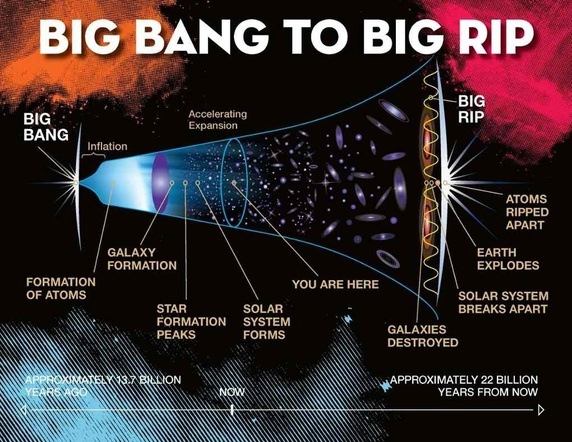
To put that into perspective, half a billion years is how long it took for the most simple of microscopic multicellular creatures like this to evolve to a human being:

So it’s enough time for that evolution to happen again 44 times over. And it is just one of numerous theories.
According to another recent article on this theory, the time is 100 billion years into the future, so time enough for that to happen 200 times over, see Dark energy could force the universe to gradually unzip itself
Yes, eventually perhaps our universe does come to an end but there are many different theories. Others think it would take more than hundreds of trillions of years. I like Roger Penrose's idea - he thinks that as it expands, all matter eventually decays into light (even the proton) - and that once there is nothing left but light, that then the universe forgets what size it is, and so becomes a new young universe again with a new "Big bang" - that's his "conformal mapping" theory.
One thing that is reasonably clear, that at the moment our universe is very young, and many stars are forming. However, eventually if it continues like this, it will run out of gas to make new stars. Star birth will become a rare event - and galaxies will consist mainly of old stars that will eventually over really immense timescales run out of fuel and then fade away.
Some think we could escape from the universe by manipulating space time. Create a new baby universe or travel into whatever comes next.
Freeman Dyson had another idea. He thinks that it is possible that as the universe gets older, then everything gets colder and slower but that beings will adapt to that by getting slower and slower, more and more sloth like - of course they don't see themselves as slow or see the universe as cold, it just seems normal to them.
So his idea - that even though each subjective "second" gets longer and longer so eventually e.g. their seconds are as long as our years, you can make the future infinite (so long as the protons don't decay - if they do then eventually everything will turn into light - nobody knows if they do or not - they last a long time and nobody has observed them ever decay, but is possible they do on huge timescales).
Anyway, so there are many ideas about what might happen in the long distant future. This is just one of them. But whatever happens, it’s for way into the distant future. It’s clear that our universe is very young. And it’s also got very energetic things happen in the hearts of galaxies, black holes swallowing whole stars. Enormous release of energy. Has been doing that for billions of years. This seems to cause no problem at all, to the rest of the universe.
So it seems our universe is robust, young, and got a long future in front of it, on the basis of what we know of it so far.
Written Oct 30 CommentShareSummary - a nuclear war would not come even close to making Earth uninhabitable.
First I want to say, that I am actually very much in favour of nuclear disarmament. I think that the UK should even disarm unilaterally, see my Is Corbyn Right About The Bomb?- Op Ed. But I think people need to know the truth in any topic like this and make decisions based on truth, not on the basis of people telling them falsehoods that they think will lead them to desired actions.
This answer doesn’t take away from the arguments against nuclear weapons in my view. After all we no longer think that fire bombing cities as for the fire bombing of Dresden is acceptable in warfare. Why should that suddenly become acceptable if the weapon is a nuclear weapon? I think that is all the argument you need.
In addition nuclear weapons cause long term radiation damage to those who were in the blast region and so on. But just equating them to firebombing and pointing out that they kill millions of innocent civilians is enough to make them something that military generals and leaders shouldn’t even consider using in warfare in my view.
So anyway back to the topic of this question.
First, the entire southern hemisphere is a nuclear free zone, the worst of the radiation is so short lived it is over in half an hour, there is plenty of radiation left to have long term health effects, increased cancers and other health effects, but the levels of radiation that kill people quickly are soon finished with.

The blue areas here are nuclear free. If we did have a global nuclear war - then there would be no nuclear bombs in those areas at all. Also the harshest radiation is over quickly, the lethal radiation is mostly over within half an hour.
The idea that nuclear weapons would cause a nuclear winter has been shown to be false.
Also in science fiction and popular imagination the radiation from nuclear weapons is far more dangerous than it is in reality.
After all this is modern Hiroshima
The most dangerous radiation is in the form of short lived isotopes which decay over time periods of seconds, to months.
If you are close to the blast then you need to get shelter within half an hour to survive the radiation hazards, and if further away you need to find shelter within three hours.
Worldwide Effects of Nuclear War
Most of the radiation decays rapidly, but there would be local hot spots that would be dangerous for one to five years after the attack. Take your geiger counter with you! Or more likely, evacuate to a place that has not been attacked.
A nuclear war would kill millions, directly and indirectly - but it does not leave the Earth by any means uninhabitable and most of the World’s population would surely survive. If you are in one of the nuclear free zones, then you’d be hardly affected at all.
The main long term effects would be from longer lived isotopes like caesium. Here in the UK we got iodine, cesium and strontium isotopes on our hills after the Chernobyl reactor explosion. Of those only caesium-137 was still a concern two decades later, but for more than two decades afterwards, the sheep farmers from the worst affected areas - from a reactor explosion 3,000 miles away - had to test their sheep with geiger counters before they could sell the meat. Sheep farmers still stuck under a Chernobyl cloud
So - after a nuclear war there’d be restrictions like that over regions far from the war zones. We’d need Geiger counters for quite some time surely. But it would not make us extinct. The main issue would be an increased risk of cancer from eating radioactive food.
This was the big bug bear during the cold war. Carl Sagan and others calculated that an all out nuclear war, both the explosions themselves and the firestorms they created, would put so much dust into the upper atmosphere that it would cool the entire Earth for several years afterwards in a nuclear winter.
Now - their calculations turned out to be accurate for asteroid impacts. This is a significant issue though not an extinction causing one, for large asteroid impacts. But several things happened to cast doubt on their calculations for nuclear weapons.
In particular, when the Iraqis retreated after their invasion of Kuwait, then they set many oil wells alight. These created dense black smoke that turned day to night over large areas
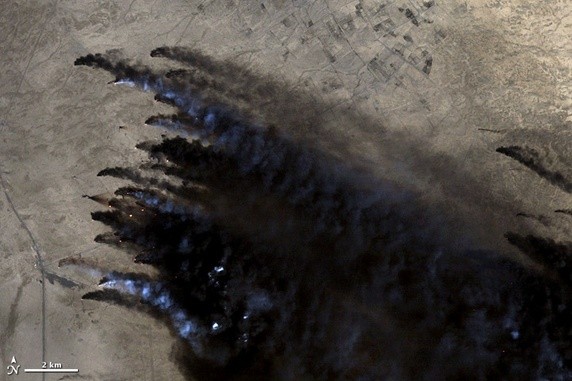
But it didn’t have the widespread effects the scientists had expected. As Carl Sagan wrote:
"it was pitch black at noon and temperatures dropped 4–6 °C over the Persian Gulf, but not much smoke reached stratospheric altitudes and Asia was spared.”
This lead to them re-evaluating the models that lead to the nuclear winter prediction, which were rather crude, making many assumptions and approximations.
The conclusion nowadays is that nuclear weapons most likely would not cause firestorms in cities, if they did, the smoke would rarely reach higher than 4 km. Also much more of Earth burns in wild fires every year without putting us into a nuclear winter scenario.
Also modern nuclear bombs are smaller than they used to be. Both US and Russia have eliminated all bombs of more than one megaton. Only China has them now, with about 50 of them. To get the dust high enough for nuclear winter, above 70,000 feet you’d need bombs with yields much more than a megaton. Modern bombs would only throw the debris up to 60,000 to 70,000 feet which means the debris will rain to Earth within hours or days close to the point of impact.
Our nuclear arsenals are also much smaller than they were at the time of the nuclear winter calculations.
So in short, nuclear winter was based on poor science, as it turned out (refuted by the Kuwaiti fires), and probably even at the height of the cold war, we would not have been plunged into a nuclear winter. As it is now, certainly not.
Here I’m summarizing Allen E Hall's answer to In a total nuclear exchange where the entire worlds arsenals are used, how long would the nuclear winter last and would we survive?
You can go there to find out more.
As I said in the intro, the after effect of a nuclear war is horrific enough without needing to add in nuclear winter to make it even more horrific as a deterrent. I don't agree with Alan Hall on is conclusion that it makes nuclear war more likely to know that it doesn't cause nuclear winter.
I also think myself that if one country was to drop a nuclear weapon on another and the other one didn't retaliate today - that it is very different from the case of the US and Japan.
With Nagasaki and Hiroshima, the military leaders in the US, didn't realize the full horror of what they were doing. They also had got inured to levels of civilian casualties that nowadays would be unacceptable through such things as fire bombing of Dresden. They thought of it as just another fire bombing like the others done before.
If anyone did the equivalent of the fire bombing of Dresden in the present day political climate - they would find themselves isolated, with universal condemnation from all the other countries. Also we are much more interconnected now. In the modern world such an isolated country can't survive long, it would be a political disaster for them, lose all their influence in the world. Would the US have any power in the UN or have any political say in negotiations, any moral clout at all if it had dropped a nuclear weapon on another country either without nuclear weapons, or one that didn’t retaliate? Or would the Russia either?
They would surely also get really strong united trade embargoes as well, as other countries would do whatever they could to express there disapproval and not to align with them in any way at all.
If the other country has nuclear weapons and retaliates it's different. So it makes a big difference if both sides in the conflict have used nuclear weapons. I think that makes the most logical response of any leader to first not do a first strike, and second, not to retaliate in kind if another country drops a nuclear weapon on you.
Whether a leader of a country with nuclear weapons would be so logical in the heat of a war I don't know, but there are at least some people prepared to say they wouldn't launch nuclear weapons in any circumstances. If Jeremy Corbyn gets elected as PM of the UK in some future election, we will have such a leader here,
Also, why would nuclear weapons be treated differently from fire bombing? The US could easily threaten to firebomb any city in the world as a deterrent, and we’d think that was a horrific thing to do. So why is it treated as acceptable to threaten to drop nuclear weapons as a deterrent?
Anyway - so hopefully at some point we achieve total nuclear disarmament. Meanwhile, it’s good to know it can’t make us extinct and that those who live in nuclear free zones would be hardly affected at all even after a global nuclear war involving all the nuclear weapon holding states. Which hopefully also can eventually become a strong incentive for other countries to develop nuclear weapon free areas. I of course am strongly in favour of a nuclear weapon free Europe for instance. If we can get the idea accepted generally that nuclear weapon free zones make you safer, and that possessing nuclear weapons or relying on protection by a nuclear weapon owning state does not make you safer, we’d be well on the way to total nuclear disarmament I think.
The UN is going to start negotiating a new treaty to eliminate all nuclear weapons. 123 nations have signed it, the main exceptions, apart from Australia, are the nuclear weapon holding nations. Basically the nations that currently have nuclear weapons are just about the only ones who think they help preserve peace. So - far from being widely accepted as maintaining peace or desirable, the idea that we should hold nuclear weapons is not the norm at all. The majority of nations don’t want them and don’t want anyone else to have them either and don’t feel they need their protection.
Based on that, I think there is a real prospect of eventual total nuclear disarmament but somehow the small number of nuclear weapon holding states have to get on board with it as well, and get involved in measures for serious arms reductions once more.
UN votes to start negotiating treaty to ban nuclear weapons
See also
Summary: Legally the president makes the decision and everyone else then scurries around and follows his or her orders; in practice it's not going to be that simple in peace time especially. He or she doesn’t just have a button to press and the weapons fire; it’s a figurative expression. A president who gave that order in peacetime would surely be treated as temporarily deranged and ignored. They would need broad support, from their defence secretary especially.
However, in the event of an imminent attack on the US they decided that the president has to be able to launch a response within minutes. This is a result of the cold war and the idea of MAD (Mutually Assured Destruction). For that reason the president has been given authority to launch an attack on his or her own without consultation. That's the origin of their power to launch. But it's only meant for situations where they believe that another country has already launched nuclear weapons towards the US.
Although legally the president could invoke this ability in any situation, and just launch nuclear weapons on a whim because they are angry or having a bad day or whatever, they would surely be ignored if they tried to invoke this ability to launch within four minutes in peacetime. Legally that would be mutiny, but those who refused to obey the orders could argue that their president is deranged and unfit to serve, and at any rate in such circumstances nobody would be likely to challenge the refusal to obey their commands except the president himself or herself. It would probably lead swiftly to impeachment.
First to be scared of nuclear war certainly is a rational fear. It’s not a hoax or an absurd idea like most of the ones I debunk. I had some fear of nuclear weapons during the cold war. Including nightmares that we’d been hit by nuclear weapons. I’m sure many did back then.
Not so much now, because I don’t feel that an all out nuclear war is likely myself. We are much more connected world wide, than before, with internet, and fast communications, satellites etc, and though there are tensions between Russia and the US, also involving China, it’s nothing like what it was during the cold war, seems to me. And everyone has so much to lose in an exchange of nuclear weapons.
Anyway many people are worrying about the US president or Putin starting a nuclear war, particularly the US president as a result of the short exchange on nuclear weapons between Hillary Clinton and Donald Trump in the third debate.
Many people in these online debates talk about a two person rule. But no, that doesn't apply to the president. I'm using as my sources here the NY Times article: Debate Over Trump’s Fitness Raises Issue of Checks on Nuclear Power. and the Politico article by a Bruce Blair , a nuclear security expert: What Exactly Would It Mean to Have Trump’s Finger on the Nuclear Button
It says that a president can order a nuclear attack all by himself or herself in theory, as the two person rule only applies to missile silos and submarines. The defence secretary doesn’t have to approve it, as he or she is second in chain of command to the president who makes the order.
"The NCA consists only of the President and the Secretary of defence or their duly deputized alternates or successors. The chain of command runs from the President to the Secretary of defense and through the Joint Chiefs of Staff to the Commanders of the Unified and Specified Commands."
World-Wide Military Command and Control System, DoD Directive S-5100.30
But in practice a president who ordered a nuclear attack in peacetime might well face some kind of a mutinous action, refusal to follow his orders, moves to be declared unfit to govern etc.
This actually happened to president Nixon, not that he ordered an attack, but that towards the end of his presidency they no longer trusted him with the nuclear button, because of drink problems etc. So, though it was not legal for them to do it and probably mutinous considered from a legal point of view, the secretary of defence James R. Schlesinger instructed the military to divert all emergency orders especially any involving nuclear weapons, to him. In the circumstances nobody was likely to challenge this.
There’s a difference here between a decision to do a first strike, and a response to an attack. After being told about an attack, the president may have only minutes to decide whether to treat it as a false alarm or to respond, and what response to take.
That’s what Hillary Clinton is talking about here in the third debate, six minutes into this extract.
It’s confusing because she pivots. She starts by talking about Trump’s idea of a unilateral nuclear attack in peacetime. But the end of her sentence when she talks about the 4 minutes and saying that former presidents say Trump is not a suitable person to respond in a situation like that she is talking about response if you hear that there has been a nuclear attack on the US. Is it a false alarm? Do you get on the phone to Putin or to China or N. Korea or whoever? Or do you just respond right away.
She is saying at that point that he is not a fit person to make such a decision.
But she isn’t saying that a president in peace time can launch a nuclear attack with only 4 minutes of warning for no reason. If a president did that I’m sure they would be treated as temporarily insane, of diminished responsibility, and ignored. Whether it is Clinton or Trump or whoever it is.
But because of the pivot it’s not so clear, she is somewhat giving the impression that Trump would be able to launch a nuclear weapon in peacetime within 4 minutes.
If challenged I’m sure she’d deny that is what she meant. It’s the sort of thing politicians often do in debate to score a point, pivoting like that.
Incidentally I think it is totally immoral to launch nuclear weapons at all and if someone has dropped a nuclear weapon on your state, heaven forbid as they say, then it does not make it acceptable to use them. Jeremy Corbyn, leader of the opposition in the UK, and long term opponent to nuclear weapons has said that if he is prime minister he will never give the order to launch nuclear weapons. Theresa May has said unequivocally that she would, if it came to it, the first prime minister to answer this question in the affirmative (previous ones have refused to answer). So we have quite a polarity in politics on this matter here in the UK.
Also - longer term, I believe that it is definitely possible that we could end up with worldwide nuclear disarmament. Personally, I’ve been against nuclear weapons all my life, you may know that Scotland wants to disarm, and it’s a policy of the SNP. and if it became an independent country it would give up its nuclear weapons. Also the leader of the opposition Jeremy Corbyn wants to disarm. Very few nations actually do have nuclear weapons.
Africa, Australia, New Zealand, South America - they all have formed nuclear weapon free zones. The entire Southern Hemisphere is a nuclear free zone.
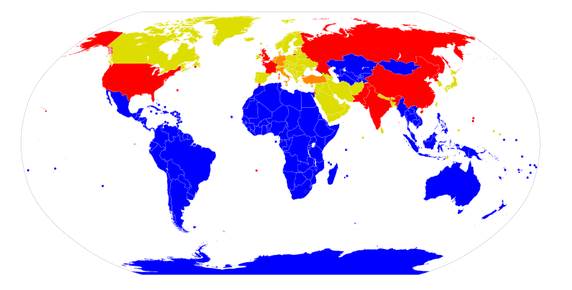
All the blue areas on this map are nuclear free. And most nations of course don’t have nuclear weapons of their own. Only the red zones here actually have their own nuclear weapons. The orange ones are nuclear weapons sharing.
It’s about time we had a few more nuclear weapon free zones in the northern hemisphere.
Nuclear-weapon-free zone - Wikipedia
So also some people worry we would all go extinct as a result of a nuclear war. But if you think about it only the people in the red or orange zones are likely to be hit by nuclear weapons - as nuclear weapon states mainly target each other.
The chances are that the entire southern hemisphere would have no nuclear weapon hits at all.
And anyway humans are much harder to make extinct than you might think. We are amongst the most resilient of all animals. As mammals able to survive almost anywhere, cold or hot, travel easily, eat almost anything because we are omnivores, able to farm, cultivate anything edible. And for sure could take precautions against radioactivity.
This next section is not really part of the debunking but hope you don’t mind if I add a section about it as someone who has a long standing conviction that we need to work towards ending nuclear weapons altogether:
This also is one reason why it actually makes more sense from a safety point of view to give up nuclear weapons. As someone who has been a long standing opponent of nuclear weapons for the UK, I don’t see how it gives us any security at all. It’s not as if the only thing stopping Russia from taking over Europe is our nuclear weapons. And anyway when they want to invade somewhere like the Ukraine or whatever, nuclear weapons don’t stop them.
It just makes no sense to me it just makes us a target. The SNP is against nuclear weapons, the majority of the residents of Scotland. In the debate in the UK parliament one of the main reasons they gave for retaining nuclear weapons was because we would then keep our seat in the security council. They thought if we gave up our nuclear weapons we might no longer be a permanent member of the world security council. That’s really backward thinking, seems to me. If nuclear weapons are seen as a prestige symbol, how can we ever get rid of them?
They also said we need nuclear weapons for multilateral disarmament. But you don’t need multilateral disarmament to create a nuclear free zone. The African nuclear free zone resulted from unilateral disarmament by South Africa. If we are ever to have a European nuclear free zone, then unilateral disarmament by the UK seems a good way to start.
And as for the idea that would make us dependent on the US -that’s only if you think nuclear weapons give us security. If you don’t think that ,then it doesn’t make us dependent on them at all. Rather it makes us more independent as we don’t spend more than 200 billion dollars on nuclear weapons which takes away from the budget we could use for other things. Military generals in the UK say that nuclear weapons are an outdated and useless defence system, they don’t see any need for it in their campaigns it just does nothing for them.
As a pacifist myself I am uncomfortable arguing for increased military expense on conventional weapons. But that is what would happen if we reduced nuclear weapons that they would be more capable in conventional arms. Perhaps also we’d have some extra budget for non military things, let’s hope.
The US of course would find it much harder to go nuclear free and not suggesting they do so unilaterally, better to do it in collaboration with Russia, China and everyone else.
But in the UK we can go nuclear free and start to turn thinking around so that instead of thinking of nuclear weapons as prestigious and making you strong, more people start to see them as outmoded, expensive, useless. And hopefully start to get the idea that it is actually prestigious to give up nuclear weapons. That may then eventually lead to a nuclear free world.
On whether it saved lives in Japan - well it’s mainly a US rather than a Japanese perspective I think, that it might have saved lives eventually. Not the sort of thing that you’d use to justify a foreign country dropping nuclear weapons on your own cities.
Then, whatever you think about whether they should have used it at all, I think it was unacceptable to drop it on a city. Why didn't they drop it on an uninhabited island off Japan if they had to do it? That would show its awesome power. I don't find the argument valid at all that they had to kill large numbers of people to show how powerful it was. And had to do that twice what's more. Albert Einstein who was one of the people who advocated developing the bomb was horrified that they actually used it and many others at the time in the US said it was the wrong decision to make.
A friend has made an interesting point, that for the generals it seemed like a fire bombing of cities, for instance the fire bombing of Dresden, which had already happened before.

Center of Dresden after fire bombing by the UK in WWII, image from the German Federal Archive. Firebombing of cities in WWII is a highly controversial action taken by the Allied forces with much debate since then.
Which actually I think is morally beyond the pale too, and it surely would not be considered acceptable as a policy by generals in a modern conflict, but they had gradually through more and more of that sort of thing got used to that as something they did in war time.
Only the scientists like Albert Einstein really understood the horror of a nuclear bomb at the time. As for whether (if it is true that it reduced the number of deaths) that it justifies it in hindsight well the thing is it is easier to use such arguments to justify it on another country. Try turning that around and suppose the nuclear weapons were dropped on the US (or whatever country you are citizen of) which for some reason had a fanatical government at that time. It doesn't work so well that way around.
And at any rate that’s past history. We now all know how horrific nuclear bombs are. And nowadays hardly anyone, military generals or anyone, would say that it is morally acceptable to fire bomb a city to oblivion as for Dresden in a modern conflict.
As for modern conflicts, then if, say, North Korea was to drop a bomb on Japan, or South Korea or even, somehow, the US, well they would get immediate condemnation of the entire world. China would no longer be able to support them in any way, and that would surely be the end of their regime, seems to me. We are in a world so interconnected that it is not possible for a small industrial nation to stand against the entire world like that.
While if the US then responded by dropping a nuclear weapon on N. Korea, that would then turn condemnation against the US and China would then feel justified to continue to support N. Korea. It makes no sense politically for the US to respond by retaliating in that situation. And in a nuclear free world, if N. Korea was the only remaining country with nuclear weapons, it would be even more stark, if they dropped nuclear weapons against another country with them the only country in the entire world to retain the nuclear weapon.
I think what we need is a change of attitudes according to which nuclear weapons are seen as useless, expensive, immoral, and instead of being a matter of prestige are a matter of denigration and ridicule by all the other countries.
No, not at all! Those of us who say we should work towards nuclear disarmament, establishing more nuclear free zones, encourage unilateral disarmament of the smaller countries like the UK etc, aren't saying that US or anyone else should give up their conventional military.
But I don't think there is any evidence that nuclear weapons stop countries from invading. It did nothing to stop Russia invading Ukraine or to stop them from what they are doing in Syria which many object to. It did nothing to stop Saddam Hussein. It is doing nothing to stop North Korea. It surely does nothing either to stop superpowers or small nations. It just puts everyone on edge and makes it possible that there could be a horrible disaster / mistake. That's how I see it.
I don't think it is unrealistic at all. It doesn't need people to be especially evolved or to have a higher consciousness or anything like that. After all nearly all countries don't have nuclear weapons. And all of the southern hemisphere is nuclear free already. The people there aren't saints or special in any way, they just see it as sensible. Australians for instance aren't champing at the bit to have nuclear weapons. Rather the opposite, the very idea is unthinkable to them, that they would adopt nuclear weapons, for most australians and new zealanders etc. The won't even permit the presence of ships carrying nuclear weapons from other nations.
I think it just needs a change of attitude like that in the rest of the world. Sort of like apartheid in S. Africa. For many decades it was just the norm. But then there was a change until it became unthinkable. Not because people became perfect, just because of a change in ideas.
On a simpler level, when I was young then it was thought to be extremely eccentric and dotty to try to recycle. Now everyone does it, in the UK anyway. Even in the remotest areas - I live half a mile from a tiny village of 200 people on an island, by a single track road with passing places, and we have separate bins for every household for paper and glass and a recycling truck come round once a fortnight. If you drive you can go to the nearest recycling center which typically will have several dozen different bins for computers, bicycles, washing machines, carpets, clothes, shoes, garden waste - you name it, if it can be recycled, there's a bin for it.
I understand from friends that though it is common in the big cities in the States, in some rural areas it is still not done, and recycling is still ridiculed as it was here when I was a child. If so, I expect it is only a matter of time before it becomes normal there as well.
Recycling in some form is now supported pretty much world wide.

Recycling bins in Japan,image by Jorge. In the 1960s and 1970s recycling was something that a few eccentrics would try to do, with no recycling centers, and no support for it at all. Now you get recycling collection services going around to every house, collecting the recycled card paper and glass along with the domestic waste in separate bins, here in the UK at least. And there's recycling pretty much world wide now, surely most countries have it though some may embrace it more than others.
That's not because we are much better people than we were in the 1960s and early 1970s. It is just because of a change of society and ideas.
So, I think we need a similar change according to which nuclear weapons are thought of as unsafe, expensive and useless and most important, just silly. Rather than making you powerful, they make you vulnerable and other countries would ridicule you for being so backward as to think that nuclear weapons help you in any way.
If they can come to be seen like that, as a matter of ridicule, and the sort of thing that leads other countries to treat you with very low esteem, if you still have them, then the change will happen perhaps almost by itself like the end of apartheid once the ball got rolling. And we do have the example at least of the nuclear free zones in the southern hemisphere to show that it is possible.
See also my op-ed here Is Corbyn Right About The Bomb?- Op Ed
I’ve now written this article up as Debunking: A President Of The US Could Order A Nuclear Attack At A Moments Notice On A Whim on my Science20 blog
The original story is here: A Solar Storm Put A Crack In Earth's Magnetic Field
This is not doomsday. The word “crack” there is journalistic poetic license, not a scientific term. These are new measurements of something that happens with solar storms anyway. And the “wrecking havoc” in the article also is not quite what you’d think.
Solar storms can’t harm us on Earth though a really powerful solar storm can cause long lasting electricity blackouts and temporary glitches with GPS satellites. Some think we need to be hardened against those more than we are now.
The main effect of solar storms is that they can cause vivid auroras
Our atmosphere protects us from cosmic radiation and solar storms. It's the equivalent of 10 tons of water shielding above us in mass. Nothing that happens to the magnetic field can do anything about that radiation shielding. We just don’t need to be worried about radiation from space at all.
We do get cosmic radiation - very penetrating, gets to the ground and you see it in cloud chambers. We are adapted to be able to deal with that background level of radiation which is constant 24/7 year round.
But the solar storms are much more slowly moving and they simply can’t penetrate our atmosphere at all.
Even when the Earth's magnetic field flips, as it does often, last time only 41,000 years ago, it doesn’t harm us.
The main predicted effects are a weakening of the ozone layer, more aurora of course and compasses pointing east / west instead of north during a reversal which takes over a century. Oh, and migrating birds would get puzzled and might end up in the wrong continent etc.
In the middle of the flip the field doesn't vanish altogether but is much weaker than it is now. That doesn't make anything extinct as far as we can tell.
But this is not about magnetic reversal either. Our magnetic field is still stronger than usual and both magnetic poles are close to the geographical poles.
We are not even in the middle of a magnetic pole flip. It is just a normal solar storm when magnetic field levels are nominal.
If we got a major solar storm like the Carrington event, in the C19, then the main effects are on long distance cables. Back then telegraph operators observed sparks from the devices and some were able to send telegrams without need for power because the storm itself powered the cables.
That's because though the magnetic fields are weak, they do have a noticeable effects on multiple kilometer long cables.
Not on your laptop etc. But could knock out the very expensive multi million dollar main transformers that convert very high voltage long distance transmission down to intermediate levels for sending on to step down again to domestic levels.
It's only the really big transformers that need to be protected, big millions of dollars units. They can definitely be hardened against storms. It's mainly a matter of whether they need to
The experts don’t seem to think the smaller transformers that route power on to your home are likely to be affected. I think the cables attached to them are just not long enough to matter. You need really long cables many kilometers long to get the most damaging effects.
So it could cause blackouts, possibly for months. That's the main concern of magnetic storms.
Experts disagree on how hardy the transformers are to this effect and whether this would happen and they are investigating and may have to harden them, is last I read about it.
It could also knock out GPS - not permanently, just glitches causing the satellites to reboot and so be on the blink for a while. Can't actually damage them but can change the state of computer memory / programs leading to need to reboot into safe mode type reactions.
As for ISS, I'm not sure, would have to look up what they would do in the event of a Carrington type event. Do they have a solar shelter there?
See also Debunking: Solar Storms to end all life on Earth
Written Nov 4 CommentShareStar quakes only happen in neutron stars. (Star Quakes (wikipedia)) These are the remnants of super nova explosions and nothing to do with our sun.
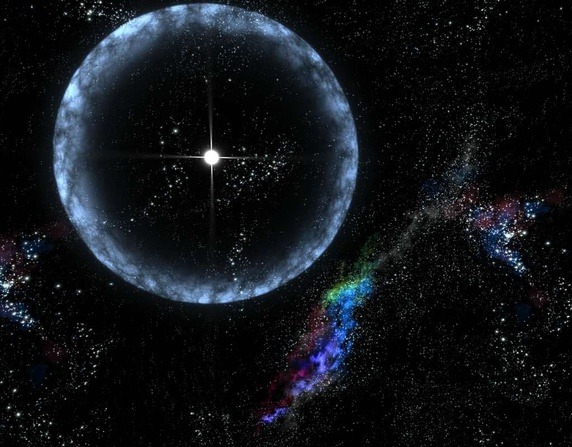
However we do get vibrations in our sun. They are like sound waves, though much lower frequency than sound on Earth. Here is some of the sound of the sun speeded up to reach audible frequencies, we don’t actually hear this but they can do videos of the sun and then work out the sound from the movements of its surface:
There is no danger to us from this.
Written Oct 24 CommentShareTo debunk: Story in the Daily Star - red top tabloid so these are notoriously sensationalist and unreliable: 'Prepare for space weather DOOMSDAY' Barack Obama's stark warning to the world with subtitle “US president Barack Obama has warned of an apocalyptic solar storm that could WIPE OUT life as we know it.
This is the executive order they refer to: Executive Order -- Coordinating Efforts to Prepare the Nation for Space Weather Events
Although a bit technical, it says
“Space weather events, in the form of solar flares, solar energetic particles, and geomagnetic disturbances, occur regularly, some with measurable effects on critical infrastructure systems and technologies, such as the Global Positioning System (GPS), satellite operations and communication, aviation, and the electrical power grid. Extreme space weather events -- those that could significantly degrade critical infrastructure -- could disable large portions of the electrical power grid, resulting in cascading failures that would affect key services such as water supply, healthcare, and transportation.”
So yes, it is true, This is something experts have warned about for some time. The thing is that the sun sends flares into space quite often but most of them miss Earth, and our magnetic field also protects us. Here is a summary of solar flares
There is no danger from the particles themselves because our atmosphere is equivalent in mass to ten meters thickness of water above us. It’s like swimming ten meters deep, except, that because our bodies are also at the same pressure inside, our lungs, blood, etc, all equalized with it, we don’t notice. A bit like the way fish can manage just fine at great depths because they have the same pressure inside and out.
But the particles are charged and cause fluctuations in magnetic fields. Not enough to damage electronics your laptop, tv etc is just fine. But very long distance cables like electricity cables that span tens and hundreds of kilometers can build up large charges along them which then spark through equipment attached to them and can damage very expensive transformers that cost millions of dollars to replace and are hard to make too.
So, it’s to harden those, as otherwise in the worst case we could get power cuts that last for weeks as they work to replace all the damaged equipment after a storm like that. It’s a sensible measure. These storms are very rare but one did happen in the nineteenth century, and so it can happen and could happen again, so it is sensible to be prepared.
Opinion of experts vary on how much it would damage our power supplies. Certainly can happen as a smaller event of this type caused a blackout in Quebec for several hours some years ago. But whether it would damage the very expensive and hard to replace equipment, on that they vary some think they are sufficiently robustly protected already. So anyway it’s a directive to look into that properly and make sure the power supplies are robust in event of something like that. It could also knock GPS satellites out - though probably only temporarily, not physically damage them, but cause glitches that force them to reboot. So - there would be some warning, hours at least, with some days of warning that it could happen, but we’d need to be prepared to deal with that issue, I suppose worst case is that they just ground planes / halt operations of anything that relies on GPS for a few hours during the storm but they’d want to find a better solution than that if possible.
In short not at all apocalyptic. I just added a comment to an article on the Daily Star to summarize it:
“This is not an apocalypse scenario at all. The main danger us from power blackouts as happened to Quebec some years back. It's a risk to long range transmission cables. A power surge due to a solar storm could burn out the transformers attached to the cables, They are very expensive, millions of dollars, and hard to replace. In worst case it could be a blackout for weeks until they fix it. So it is only sensible to prepare for this, which means, hardening the power supplies. The last time this happened was the Carrington Event the middle of the nineteenth century, 1859 when of course they didn't even have long range power cables, and it was just a pretty show of lights, the only people who noticed any other effects back then were telegraph operators who noticed sparks jumping from their apparatus.”
See also Debunked: A Solar Storm Put A Crack In Earth's Magnetic Field
Example: Tech & Science - one-in-500-chance-humans-will-be-extinct-in-a-year-mathematician-claims - News
Summary - this is a rather strange argument that some philosophers find compelling. I’m not sure what else to say except to outline the argument. It is based on some rather weird assumptions.
It is not based on any actual insights into whether we risk extinction - it is just based on pure thought and ideas.
Philosophers have argued it back and forth. And it is most definitely not accepted to be valid by consensus. You’ll find at least as many who say the whole thing is nonsense as you find philosophers who think it all makes sense as a way of deducing something about the future of humanity.
Note in the paper he talks about many ways that humans could go extinct. But he doesn’t evaluate those risks, is not assigning them a probability of his own. He is just using other people’s estimates as a way to compare with his own ideas. He argues that because they come up with similar numbers to him, that this helps to confirm both approaches.
I find that a very weak argument myself. It can easily be a coincidence, indeed he might well have known of their ideas when working on his theory. Or for an influence in the other direction, out of all the literature on the subject, he might have noticed them because they happened to use similar numbers to his as probabilities. When asked “what is the probability of human extinction before 2100” people will come up with a wide variety of figures.
I myself think the chance is pretty much 0% of actual extinction, as many of the scenarios they talk about such as nuclear war or asteroid impacts just wouldn’t make us extinct - reduce our numbers yes, make us extinct, no. Also the probability of an asteroid impact large enough to have global effects is minute, 99.999999% certain it won’t happen. It’s so unlikely that it is pretty much 0, and it wouldn’t make us extinct anyway. I don’t think they quite realize this. And others such as human made artificial intelligences taking over the world I find science fiction at present and unlikely for many reasons. There are a couple of scenarios I think may be possible but can be avoided so long as we take reasonable care.
For my take on this, which you may find refreshing as a different viewpoint, see my Could Anything Make Humans Extinct In The Near Future?
Basically it’s based on the idea that you can think of yourself as born at random at some point in the entire history of humankind.

World population from 10,000 BC to the present. What happens when you project it into the future?
The argument assumes that you are born at a random point along the population curve of the entire past and future of humanity. If that is true, then the chances are that this graph shows half of the total population in the past, when you take all the humans born so far. So the remaining half of the curve would have the same number of people in it. If our population stays this high then it can't last for many thousands of years before you have more people born in the future than were born in all the past history of humankind.
So anyway this mathematician has refined the argument. He assumes that we have 140 million births every year - we have already reached peak child and the population is now growing only because we are living longer. So suppose that now continues endlessly until we go extinct, whenever that is. So now he builds a probability distribution based on this idea that every year we have the same number of children until suddenly we go extinct. Then based on that he works out what the probability of extinction has to be every year to make it so that right now is more or less exactly half way through the population. Through lots of complex maths then he comes up with a chance of 1 in 500 of extinction every year.
However there are loads of assumptions here. First - this whole way of arguing is itself philosophically and logically challengeable. This is a much simpler and easier to debunk argument of somewhat the same type:
As an example, if just looking at the present, then I’m from the UK, I can argue in a similar way that most people in the world should be from the UK since I was born at random anywhere on the world. Or argue that I am probably Chinese, at least more likely to be Chinese than any other nationality, as that is the most likely place to be born by population. The philosophers who think the Doomsday argument is valid would challenge whether this is the same type of argument. But I think it is a good example to show the limitations of this way of reasoning and why it is often challenged.
Also another argument. What if some population did last for ever. Then you still have to be born at some point in that population. Freeman Dyson worked out a way that intelligent beings could continue to survive for ever in an expanding continually cooling universe. So it’s not impossible in theory. For his ideas see TIME WITHOUT END: PHYSICS AND BIOLOGY IN AN OPEN UNIVERSE The argument would never let you conclude that your civilization has an infinite future. Even if perhaps your civilization actually does have one.
Another objection - if the argument is valid, then how can the population of humans ever get started? Because after the first few hundred are born, if one of them stops and thinks to apply this argument, then they would prove that they are probably going to go extinct very quickly. Why is the argument valid now, but wasn’t for those very early humans?
Anyway those are just some ideas to think about. They would all be countered by those who support this argument and then their arguments in turn would be countered by those who think we can’t learn anything by this way of reasoning, and so it can continue back and forth and on and on. Philosophers have built up many elaborate intricate objections and counter objections. If you are interested you can read some of them here: Doomsday argument
But I think for most of us, best to just leave this to the philosophers. Your head can spin and spin if you try to make sense of this. If you are a philosopher you may enjoy that sort of thing. But it probably will never be resolved. Philosophical arguments like this seldom are.
Written Nov 22 CommentShareThis is all over the YouTube Nibiru conspiracy videos right now. They are saying that Pastor Paul Begley has predicted that we are going to be hit by a gamma ray burst on 26th December from SGR 1806-20.
Summary - it is no risk at all to us. This is over 50,000 light years away. We have had a burst before and it did cause glitches with some satellites. But Earth’s atmosphere, equivalent to ten meters thickness of water in radiation shielding, protects us nicely.
The gamma ray bursts can’t be predicted anyway, so this is just a made up prediction and it would be an extraordinary coincidence (though I suppose not impossible) that we get hit on that date. But if we do, it’s not going to harm us.

Artist’s impression of the last gamma ray burst from the magnetar SGR 1806-20 which hit the Earth’s upper atmosphere on December 27 2004
So,
This star is a Magnetar which means a spinning neutron star with a very strong magnetic field. And yes, there was a star quake on December 27th 2004 on this star. The star quake released more energy in a tenth of a second than the sun would in 100,000 years.
It was far too far away to have serious effects on Earth. About 50,000 light years away. The blast was however strong enough to ionize the Earth’s upper atmosphere and it disabled several satellites temporarily.
This is an artist’s impression of the event:
This is where it is in the sky:
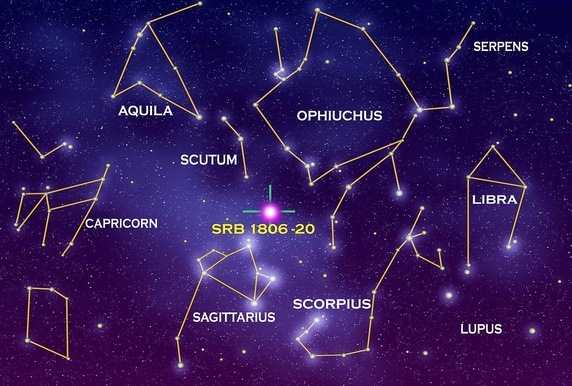
NASA release about the event in 2004: Cosmic Explosion Among the Brightest in Recorded History
Luckily the nearest magnetars are thousands of light years away from us. For more about this type of star, see What are Magnetars?
This is his video
Some celestial things can be repeated - pulsars can be predicted, because they repeat on a regular cycle. But astronomers haven’t found any such pattern to these gamma ray bursts.
He links his prediction with the completely different idea of the effects of solar storms on Earth’s magnetic field.
These can blind satellites temporarily, e.g. it could knock out GPS - not damage them permanently, just force them to reboot through temporary glitches in memory. So that’s similar to the effects of a soft gamma ray burst. But solar storms can also cause major fluctuations in the Earth’s magnetic field which causes large currents to flow in long distance cables, such as power transmission cables. This won’t damage your computer or phone - the cables are far too short to be affected by the weak changes in the magnetic field. But the currents induced in cables tens and hundreds of kilometers long could damage the large millions of dollars high voltage transformers. If that happened, it could mean that power is lost for weeks, or months as they are expensive and hard to replace.
The executive order that President Obama signed was to harden transmission lines and to protect them and the satellites against solar storms. This was another story that was way over exaggerated in the media: Debunking: Solar Storms to end all life on Earth
We can’t predict the next gamma ray burst from a magnetar. Such a burst is of no possible danger to us on Earth, and nor is any other magnetar because they are just too far away. It could blind some satellites temporarily.
We can predict solar storms but only a short while in advance, not days in advance. The effects of a solar storm on satellites are similar. They can also cause power failures, and Obama signed an executive order to find ways to help harden our power cables against them.
A nearby magnetar could damage our ozone layer like a supernova explosion, but there aren’t any close enough to do that. The nearest ones are thousands of light years away.
Written 6h ago CommentShareThis section is for all doomsday stories about asteroid impacts
Asteroid impact stories often use images like this:
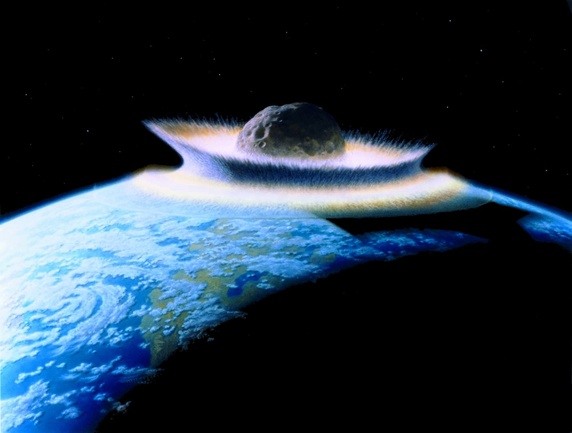
That's actually an artist's impression of a planetoid hitting the early Earth by Don Davis. But we are at no risk at all from asteroids like that. The last impact on Earth this big was getting on for four billion years ago. The largest asteroids that could feasibly hit Earth are so small they would span at most a single pixel in that image.
The largest asteroids that could hit Earth are about 10 kilometers across, some of them a little larger. But a 100 kilometer diameter asteroid never hits Earth, hasn’t for billions of years and there is no likelihood of this happening for millions of years into the future.
To put it in perspective, if you had an image of the Earth with 1600 pixels resolution for its diameter, which is a common resolution for an HD computer screen, then a ten kilometer diameter asteroid would be a little over 1 pixel in diameter.
This is about as large an asteroid as would hit Earth. So you can understand why they don't use realistic asteroid sizes in the images. You wouldn't be able to see the impactor at all!
This is a more accurate image, used in many news stories - where they show it glowing but don't show the impactor, and with a close up zoom in on the Earth.

That's the image that was widely used for reporting 2013 TV135 the roughly 450 meters diameter asteroid that we now know will be over three quarters of the distance to the sun away from Earth on that date.
For a larger, 10 km asteroid, this is an accurate artist's impression, from NASA.

About 70 impactors this large or larger have hit Earth since 3.8 billion years ago.
Also check out the image by Don Davis, of Southwest Research Institute from Ancient Asteroids Kept Pelting Earth in a "Late-Late" Heavy Bombardment.
Nothing much would survive in the near neighbourhood of the strike, out to a range of order of hundreds of kilometers. But far away, many would survive the immediate impact.
There is a risk of an object as big as ten kilometers in diameter, or a little more, hitting Earth. But how big a risk is it?
What would you say is the probability of this happening - a dinosaur era ending type impact, before 2100? And what is your best guess for when it is most likely to happen next in the future?
If you don't know the answer, you might like to pause reading for a moment and try a guess.
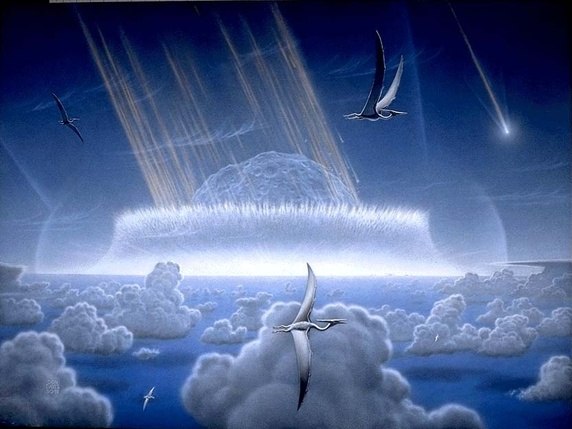
Artist's impression of the impact at the end of the Cretaceous period - credit Don Davis, painted for NASA
The dinosaur extinction event at the end of the Cretaceous period happened 66 million years ago.
When asked that question, most people hugely overestimate the chance of this happening again soon. Many, perhaps influenced by dramatic movies, will say there is a high chance of it happening before the end of this century.
Events like the dinosaur extinction impact occur roughly every hundred million years on average.
It's random, so could in principle happen in any century - but the chance of it happening in any given century is about one in a million.
So, if you ask for a best guess about when we are likely to be hit by an asteroid that large, the answer is, probably ten million years from now upwards. It is more likely to be several tens of millions of years before we get hit by an asteroid this large.
To put this into perspective, then since the dinosaur impact, there has been enough time for tiny animals looking like this
to evolve all the way to humans.
It may well be as long again before we have a similar massive extinction type asteroid impact on Earth again. And the dinosaurs didn't have any technology (as far as we know). We could easily survive that event - and what's more we could deflect it also, especially with a bit of warning (more on this later, in What kind of technology could we use to deflect an asteroid?).
This could happen in any century, as it is a random event. But the chance of it happening within the next century is one in a million, so you can be 99.9999% certain that it won't happen this century. Or indeed, you can probably add an extra 9, make it 99.99999% certain, since most of the 1 kilometer asteroids have already been located, and they all miss Earth in the near future, and all the 10 km and larger asteroids that do regular flybys have been found, and none of them hit Earth.
That leaves comets which we’d spot years in advance. As a rough estimate one impact in a hundred is from a comet. If that’s right, then you can add two extra 9s making it 99.999999% certain we won’t be hit in this century, and we’d also spot any approaching comet that large many years before it got here. It would of course be far more likely to do a close flyby than to hit.
Most likely it won't happen for many millions of years. You'd expect to get many flybys first, because Earth is such a tiny target, hard to hit.
Indeed, if there were any astronomer dinosaurs at the time (unlikely) it would probably be obvious even to the naked eye. Assuming it did many close flybys first, every decade or two, as is the usual situation - then something that big, at the distance of the Moon would be as bright as a 10 meter diameter satellite in Low Earth Orbit. I would be easy to spot with the naked eye as a faint moving star in the sky.
In any flybys as close as geostationary orbit, it would approach the brightness of the ISS - the brightest object in the sky after the sun and moon.
In the movie Armageddon, NASA discover an asteroid roughly the size of Texas heading for Earth, due to hit us in 18 days. If you get your ideas of science from movies you might think this means we could be surprised by a huge asteroid like that with only a few weeks of warning. But this is just movie science.
First, we can’t be surprised by such an asteroid, as it is far too large to be missed by even amateur astronomers with a decent sized amateur telescope, years before impact.

Enceladus hovering over the North Sea - this is smaller than the asteroid in Armageddon, and it can be spotted by keen amateur astronomers out as far away as Saturn. Image credit NASA / JPL. You might also like to check out Cirro Villa's image of Enceladus hovering over Southern England in Asteroids VS. Your Hometown: Fun but Frightening Graphics Compare Asteroid Sizes to Places on Earth
Voyagers 1 and 2 both took over three years to reach Saturn.
The known asteroids like Vesta and Ceres are all in nice stable orbits. There’s a tiny chance of Vesta hitting Ceres every billion yeas, but for sure nothing is going to happen there for millions of years into the future.
The ones that can surprise us are Kuiper belt objects, but they come from random directions with random inclinations, and are very unlikely to lie in the same plane as the Earth's orbit or to hit Earth.
We can see that also from the meteorite crater record of the solar system that such large asteroids never hit the inner solar system inside of the asteroid belt, not for billions of years. There are no huge craters in the inner solar system younger than 3 billion years, out to Mars.
The Moon, Mercury, and Mars all have huge craters from the late heavy bombardment between 3.8 and 3.5 billion years ago.

Impact from 3.8 billion years ago when large asteroid impacts were still common. 3D map of Mars - Hellas Basin on Mars
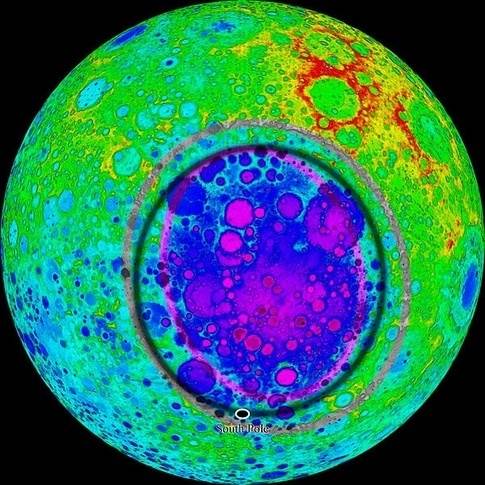
The Aitken basin at the lunar South pole. It's believed to be over 3.8 billion years but the exact date is hard to pin down. Impact of an asteroid perhaps 170 km in diameter.

Earth surely had impacts this large back then as well, but the evidence is probably long erased by continental drift.
The largest crater on the Earth may be the Vredefort Impact Structure in South Africa - this was about 300 km in diameter, when formed. The Sudbury basin is nearly as large, and there are three others in the 100 - 300 km range. See Largest craters ordered by size. These are thought to be the result of impactors of up to 10 or 15 km in diameter.
For the largest I can find, see this Impact of 23-mile-wide asteroid boiled Earth's oceans 3.26 billion years ago (and another link, and scientific paper). When it says it boiled the oceans there - doesn't mean it boiled them dry, just surface layers, and it would come nowhere near making all life extinct. Humans could surely survive even that one if you are in a sub at the time, and after the impact, Earth would remain the most habitable place in the solar system. Anyway - that one is over three billion years ago, soon after the end of the so called "late heavy bombardment" - it is only late compared to the origins of the solar system, early of course from our perspective.
Even though the "late heavy bombardment" was over, there was a tail-end of not quite such huge impacts that continued, perhaps for another 700 million years. Ancient Asteroids Kept Pelting Earth in a "Late-Late" Heavy Bombardment, up to 2.5 billion years ago.
Venus is shrouded in a thick layer of clouds, so hard to observe. However, we now know its surface in some detail from the Magdellan spacecraft, which orbited the planet and observed it using radar.
It found a surface with almost no craters. It's easy to see why it has no small craters. Most asteroids up to about one kilometer in diameter or smaller would break up in its atmosphere in an airburst, just as most meteorites up to 30 meters diameter break up in our atmosphere, because its atmosphere is so much thicker than ours.
But they also didn't find many large craters and none at all of the really huge ones. It's the least cratered body discovered so far in the entire inner solar system.
This is probably because it's surface is relatively young. It has no signs of continental drift, and not much volcanism right now, compared to Earth (there are some signs that it has active volcanism, but not many). It doesn't seem to be releasing enough heat. And there are long channels, longest in the solar system, where molten lava must have run in the past.
The leading hypothesis is that the whole planet gets resurfaced every few hundred million years. Because it has no continental drift, so there is no way for it to lose excess heat gradually, and instead it just gets hotter and hotter, until, from time to time, the entire surface "flips", volcanoes erupt everywhere and cover it in molten lava which completely erases the crater record. Most recently 300 to 500 million years ago.
So, we can only say for up to half a billion years of history, but there have been no really huge impacts on Venus in that timescale.
It's largest crater, Mead crater, is 280 km in diameter

Mead crater - the largest crater on Venus, comparable in size to the larger craters on Earth.
Though we don't have direct evidence, it probably has the same history as all the other planets - large impacts only up to around the end of the Late Heavy Bombardment. It must have been hit by something big early on to explain its retrograde motion - most probably about the same time as the formation of the Moon. And surely like the Moon, Earth, Mars and Mercury it had many really big impacts in the early solar system. But all trace of them is now gone.
Explanation of the cratering record - why are there no huge impacts for three billion years?
So, why do we see no really large impact craters in the inner solar system since the late heavy bombardment, and the "late late" heavy bombardment?
First, the inner solar system is almost completely cleared out of "Texas sized objects". There are a few objects of a hundred kilometers diameter or more are all in stable orbits at least for hundreds of millions of years. Ceres, Pallas, Vesta and many smaller asteroids larger than 100 km in diameter, would be devastating if they hit Earth, but they are all in stable orbits in the asteroid belt, beyond Mars, with no chance of an impact, at least in the near future.
Mercury is another object that could hit Earth - it is in a stable orbit at present, but it happens to have a potential future resonance with Jupiter - the rate of precession of its perihelion (point where it is closest to the sun) is just a little faster than the rate of precession of Jupiter's perihelion. There is a 1% chance, in simulations, that it's orbit gets destabilized. In most of those cases it hits the sun or Venus but there is a tiny chance, 1 in several thousand, that it could hit Earth (for details see this article in scholarpedia written by Jacques Laskar, expert in this topic who did many of the simulations).
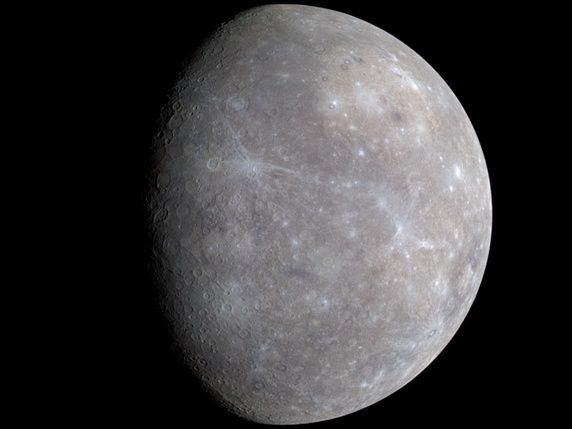
Mercury, diameter 4900 km, could hit Earth several hundred million years from now, though the chance is tiny, perhaps 99.95% or better chance that it doesn't have any affect on Earth at all. At any rate its current orbit is stable for hundreds of millions of years.
This image shows Mercury in a subtle false colour, using infra red information and was taken by Messenger spacecraft in January 2008.Long term, also, the larger asteroids have chaotic orbits, and Vesta and Ceres have an estimated 0.2% chance per billion years of hitting each other (paper)
So anyway - that's of interest to astronomers, but in the near future for hundreds of millions of years, the largest "Texas sized" objects in the inner solar system, inside of Jupiter, are in stable orbits and can't hit Earth.
And anything from the outer solar system has to get past Jupiter, which tends to catch the really big ones or break them up.
More accurately - anything close to the plane of the solar system, if it is in a Jupiter crossing orbit, is likely to do a close flyby of Jupiter first, because Jupiter's gravitational influence is so large.
Jupiter's Hill radius - sphere of influence - is 53 million km and its distance from the sun is 778 million kilometers.
Earth's hill radius is about 1.5 million km (1,497,000) and its distance from the sun is about 150 million km (149,600,000 km) - ratio of the two is actually larger, but of course, Earth's gravitational influence is much less on anything that passes through its Hill sphere.
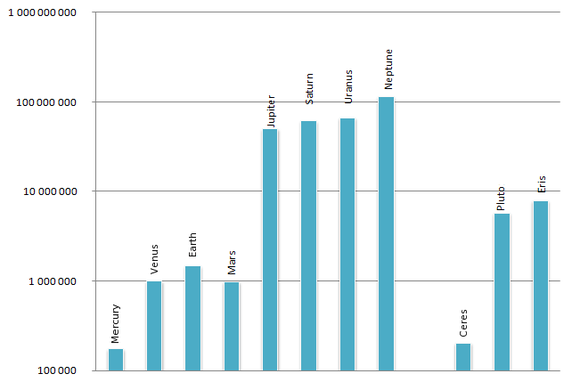
Hill sphere of the planets (log plot)
Also see:
Hill Sphere calculator
Also
Planetary Calculator framed home page
lets you find the Hill spheres of all the planets in one go.
So any object coming into the inner solar system, unless it gets into some resonance with Jupiter, is going to encounter Jupiter's hill sphere pretty soon.
So the explanation of the cratering record may be something like this: A large comet on its first flyby of the inner solar system is likely to miss Jupiter but will have almost no chance of hitting the tiny Earth.
Also, if it comes from the outer solar system, it is very unlikely to be in exactly the same plane as Earth and likely to be like Halley's comet.
As you see, Haley's comet, in this orbit, can never hit Earth because it's orbit only crosses the plane of the Earth's orbit when it is about as far away as Venus, far closer to the sun.
So, - if you had a comet that came into the inner solar system for the first time, not likely it is in the same orbital plane as Earth.
How tricky is it for a comet to hit exactly the same orbital plane as Earth?
More exactly, Earth's diameter / distance from sun = 12,742/149.6 million = 0.00008517379 - which is also approximately its angle in radians as seen from the sun.
So to hit the Earth on a first flyby into the inner solar system, without first doing numerous flybys of Jupiter, Earth etc, it has to have the same inclination as the Earth, 1.57 degrees, to within 0.00488 degrees. If you look at the list of currently known Trans-neptunian objects, they have widely varying inclinations. Out of a total of 1971 objects (as of writing), only 25 have their inclinations listed as 1.5 degrees (most of those are cubewanos so never come inside Neptune's orbit).
Not only that though, Earth's diameter compared to the perimeter of its orbit is about 12,742/(2*pi*149.6 million). So, if it does happen to have exactly the same inclination, to two decimal places of precision, the chance of hitting Earth on it's first flyby of the inner solar system, before any flybys of Jupiter or the other planets, is still less than one chance in 74,000.
It needs to be deflected into the same plane first, which it could do with flybys of Jupiter (say), which changes its orbit.
Then many of them hit Jupiter, or hit the Sun, or grazes past it and melt away. Others are thrown out of the solar system. The ones that are left after all that are split into many smaller comets through close encounters of Jupiter or the Sun. These break it up through tidal interactions - the gravitational forces are different on the inner side, and outer side of the comet. As comets have low levels of gravity and are not tightly bound together, they break up easily.
We saw just this happen with Comet Shoemaker Levy. It got split into numerous smaller comets

Then it hit Jupiter, leaving these marks in its upper atmosphere, which gradually faded away.
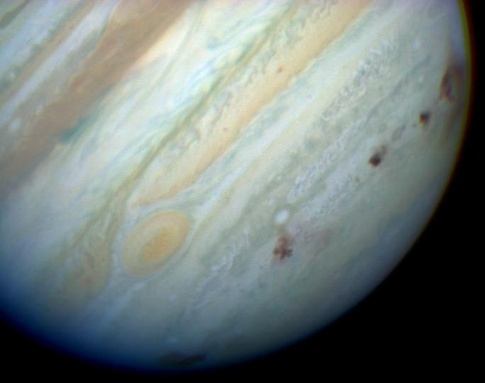
At the time it was thought that this was a rare once in a century type impact. But then another impact was discovered in 2009
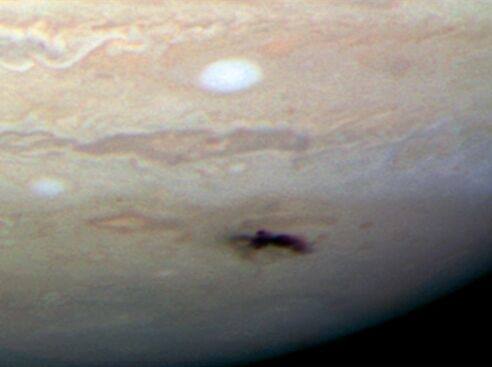
The impact scar here is approximately the size of the Pacific ocean, and the impact was perhaps 200 to 500 meters in diameter, but was not seen before the impact. It was discovered by an amateur astronomer, Anthony Wesley, who then discovered a much smaller impact in 2010probably caused by an object just 8 - 13 meters across. And then two amateur astronomers in 2012 observed another impact. This time, by chance, a third amateur astronomer was taking a video of Jupiter at the time, and checking back through his video frames, found that he had recorded the event.
This is another example of the role of amateur astronomers in Astronomy. They can watch targets like this continuously, which the professional astronomers, who have to justify their time on large telescopes, simply can't do. Though Hubble of course, for instance, could get better images of Jupiter, there is no way one could justify pointing it at Jupiter 24/7. And amateur astronomers now have equipment that lets them take photos and videos like this. For more on this, see Impact: Amateurs observe Jupiter taking another for the team.
There must be many impacts we miss as well. For three to four months each year, Jupiter is behind the sun or too close to be observed easily, as seen from Earth. And scars of the larger impacts last two or three months. Based on this, then the best estimate at present (in a paper from 2010) is that Jupiter gets hit by an object between 0.5 and 1 kilometer in diameter every decade. This is five or ten times the previous estimates.
That's about two thousand more than the number that hit Earth.
It also gets hit, they estimate, by objects of size 300 - 400 meters every two years, and for objects of size 10 meters, it gets about 30 - 150 impacts a year.
So, the answer seems to be that, by the time a giant comet from the outer solar system has a decent a chance of hitting Earth, it has probably impacted Jupiter already, or the sun, or escaped the solar system. If it has managed to escape those fates, then by then, with many flybys of Jupiter, or of the sun, it has already broken up into smaller comets of around 10-15 km scale or smaller.
One scenario suggested in a recent paper is this: From time to time, we probably do get large 200 km scale or larger comets come into the inner solar system, similar to Chiron in orbit and size. Chiron, is a "Centaur" - one of the minor planets with unstable orbits crossing the orbits of two or more of the large gas giants in the outer solar system. So if you did get a large comet come into the inner solar system, these seem like good candidates for it.
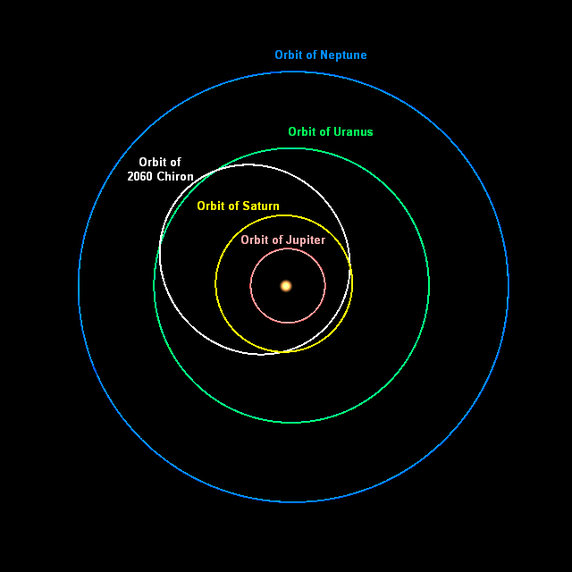
Orbit of Chiron, crossing the orbits of both Jupiter and Uranus, which makes it a "Centaur" asteroid - a term for an asteroid that crosses the orbits of two gas giants. This is an unstable orbit, and in the future centaurs like this may encounter Jupiter close up.
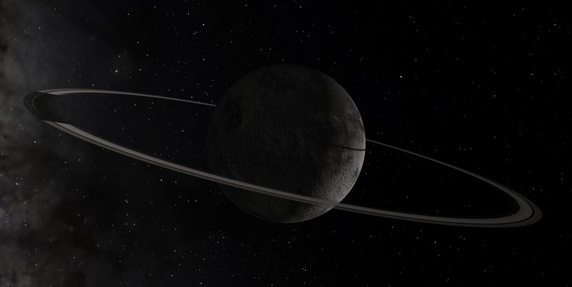
Chiron in Celestia, with its ring
So then the idea is that they do a series of flybys of Jupiter over a period of a few thousand years. But rather than hit Earth, what happens is they get broken up by Jupiter. That is if they don't get caught by it, the sun, or ejected from the solar system of course.
So then they may increase the number of 1 - 10 km diameter comets in the inner solar system. Those then hit Earth. See Giant Comets and Mass Extinctions of life. This whole scenario is played out over a timescale of many thousands of years, not the Armageddon 18 days :). And the individual impactors are 1 - 10 km in size, but you get a fair number of them one after another.
There is no sign of Chiron doing this yet, or any of the other known Centaur objects.
One of the largest objects that could hit us is 433 Eros, the second largest Near Earth Asteroid 34.4×11.2×11.2 km.
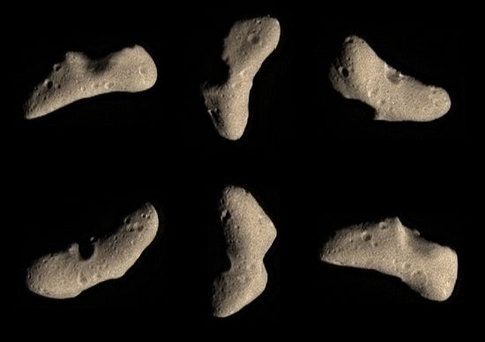
It is a bigger even than the dinosaurs meteorite - and it has 50% chance of hitting Earth in the next 100 million to billion years. But it's not a problem for us right now, it can only hit us if its orbit changes quite a bit first.
A Jupiter family comet, comes in to the inner solar system rarely, so the chance is small of it hitting Earth. We will soon have all of those mapped out.
So - likely to be lots of quite distant flybys in that case before it comes near to Earth.
Even for a Jupiter family short period comet, or a very large NEO, you probably have several flybys before it hits, because the Earth is an absolutely tiny target.
These are probabilities, can't say it is a certainty, but very likely.
Then in that situation, for each flyby before it actually hits, it has to fly past Earth through a particular "keyhole" region close to Earth. If you can get it to miss any of those keyholes, then it won't hit Earth.
So - when they talk about asteroid deflection strategies, normally is based on that assumption. They assume we have several decades of advance warning and many flybys first, or at least one flyby before it hits.
In that case you just need to change its delta v by maybe a fraction of a meter per second, a long time before the flyby so it misses the keyhole, so then misses Earth next time around (or several flybys into the future).
So then you can use quite gentle methods. Ideas include a gravity tractor, or nudging it, kinetic impact, lots of ideas.
For more on this see my Giant Asteroid Headed Your Way? - How We Can Detect And Deflect Them
Much of this is an extract from that article.
Written Nov 20 CommentShareOkay this isn’t actually debunking anything but it’s a natural question. Why didn’t the astronomers spot it and for that matter, why didn’t the Russians spot it on their radar? And the answer in short is that the only reason they missed it is because it is so small and approached from an awkward angle.
If it had been a bit larger we’d have spotted it months earlier. and if it had approached in any direction except from the sun we’d have spotted it days or maybe a week or so before.
Also, if we’d had our present day telescopes operating back in the 1980s we’d have discovered it then when it did a very close flyby of Earth.
Then, there’s a space telescope we could launch for $450 million that would find most small asteroids even right down to 20 meters in diameter within a decade, and also since Chelyabinsk there are new asteroid detection systems in place that will help to find most asteroids, even small ones , sooner, though an asteroid as small as Chelyabinsk from that particular direction remains a challenge to spot from Earth and needs either a long timeline of observations going back decades, or to have a space telescope closer to the sun to look at parts of the sky we can’t see easily from Earth.
So first, why didn’t Russia’s early warning radar system spot it? Well this image helps make it clear

The fans there show the Russian radar sweeps. They are ideal for detecting ICBMs which would approach from somewhere else on Earth. They are not designed for detecting asteroids. It would waste power and it would make them less efficient if they looked in all directions in space, where ICBMs could never come from.
So, the simple reason is that the Russian radar is designed for detecting ICBMs not asteroids. They can tilt their radar up to angles of 34.5 degrees if necessary e.g. to track satellites but they need to be asked to do that - since nobody knew that Chelyabinsk meteorite was on its way they had no reason to tilt their radar scan to look for it.
More details: How did Russia's early warning system miss the meteorite? Nuclear missile-detecting radars never saw it coming
Asteroids also approach very quickly, Chelyabinsk was traveling at around 40,000 miles per hour or 17 kilometers per second, a normal speed for an asteroid impact though some are slower than that. In one minute it would travel 1020 km, more than twice the distance from the ISS to the Earth’s surface.
So what about the astronomers? Well Chelyabinsk was a tiny asteroid only 20 meters across and it approached from close to the direction of the sun.
This is it’s orbit

Diagram from here: Chelyabinsk meteor mystery 3 years later | EarthSky.org
So it actually was in the night sky, most of the year, it just was too faint to see at that distance even with our most sensitive telescopes, because it was so small. If it had been just a bit larger, it could have been detected months earlier.
It actually did a close flyby of Earth back in February 15, 1982 at a distance of bout 140,000 miles (224,000 km) - that’s closer than the Moon - which changed its orbit to one that hit Earth more than three decades later.
Eventually as we keep observing the sky we will find the faint asteroids like this also but it could take decades to find most of them.
An impact at that angle even over a city would mainly cause broken glass and such like - could hurt people near to windows as for Chelyabinsk.
However as you can see from the image above, it is just chance that it came in at a shallow angle. If the path was shifted a bit more to the right in that diagram it could hit the Earth more directly at a steep angle. That would have been much more dangerous for humans. It was about a one megaton explosion, slightly less, harmless as an air burst. But if it happened near the ground it could be devastating.
“For a 1-megaton explosion the optimum burst height is about 1700 meters (a mile) and widespread structural damage occurs for any blast below about 5000 m (3 mi)
I'm a little surprised that something only 20 meters across could be so dangerous, it did have a high relative velocity though, 15 km /sec. Well above average for Earth meteorites though not as high as short period comets
There’s a webinar about it here:
I was interested also to hear that it's really hard to model whether or not you get tsunami for ocean impacts. Usually you’d say that 20 meters in diameter is far too small for a tsunami and that it would need to be more like one kilometer - but it could cause a tsunami depending where it hit and the result is hard to model.
The risk of hitting a populated area is very low because first of all, most of the Earth’s surface is water, and then of the land area, most is uninhabited or sparsely inhabited. Then many of the impacts would be at shallow angles because you have to hit Earth pretty much dead center to get a steep impact.
So - the next asteroid to hit Earth of this size will probably not kill anyone, but it could be hazardous, similar to Chelyabinsk and it could be much worse.
This is also by far the most likely size of asteroid to hit us as the smaller ones are much more numerous. We are probably hit by asteroids this size roughly every 80 years I’ve heard as a ballpark figure. E.g. mentioned here: Incoming! New Warning System Tracks Potentially Dangerous Asteroids
Since only a fifth of the Earth’s surface is land, that makes that 80 year time period correspond to once every 400 years for an impact on land, and thousands of years for impact on a populated area. And a possibility of a tsunami for impacts on water but hard to model, probably most won’t be.
Which does not mean that we are safe for the next 400 years or 1000's of years. We could be hit tomorrow or not be hit by another one for centuries. We were hit by another one in Siberia after all in Tunguska. And though it’s very unlikely, the next one could also hit on a populated area.
It's much more likely that you are hit by lightning, or a tornado, or an earthquake or tsunami or volcanic eruption than one of these. All of those have happened many times to many people. There are actually a few historical records of individual people killed by small meteorites, none since the beginning of the twentieth century. But no instances of many people in one go except a rather dubious Chinese one that seems more likely to be a hail storm with large hailstones.
[will add in the information about historical records of death by meteorite in the C19 and earlier, can’t remember where I have that data just now]
If we can find them well in advance, there are many ways we can deflect them. If we can warn of them a day or two in advance that is still time to evacuate the impact zone. ~Detection is the key and this is definitely an addressable problem, it mainly needs funding. Astronomers know what to do to find them.
They are making great strides with the asteroids we can spot from Earth. See Tally of known near-Earth asteroids and comets hits 15,000. They discover about 30 new asteroids per week, or more than three a day nowadays. But some of the smaller ones can only be seen easily from space (or else if we wait for some decades for a close flyby to image them).
The risk though shouldn’t be over played. It’s more likely that you are killed by a tornado or by lightning and traffic accidents and health issues are far more important statistically. But it is a preventable type of accident, can warn to the minute when it will happen and can actually deflect it given enough time. It’s surely well worth finding the funding to detect and deflect them.
It’s up to politicians really and the general public, what our priorities are. The cost of the Sentinel space telescope is $450 million which could find most objects down to 20 meters in diameter with in 10 years and it would be in orbit between Earth and the Sun so able to find the hard to see asteroids that approach us from the direction of the Sun more easily, especially since it uses infrared and they are easier to spot in infrared.
It costs only a fraction of a percent of the cost of Trident renewal which the UK just voted for, and it’s actually a price that a philanthropic billionaire could find too. Anyone reading this got a few hundred million dollars in spare change and want to sponsor a mission to find most of the 20 meter diameter and larger asteroids within 10 years?
Or perhaps pressure on politicians would work. I know there are many natural disasters to protect against. However this one does deserve some attention because it’s the easiest to actually prevent. There is no way to stop an earthquake or a volcano or a tsunami, just have to focus on predicting it. But we can not only predict asteroid impacts years and decades in advance, exactly to the minute, we can also deflect them given enough time. Spot an asteroid a decade or two decades before it hits, and we can deflect it even rather easily, especially if it does a flyby of Earth before the impact as is the usual situation.
There are many ways we could do it but the priority is to find them first. If we find an asteroid headed our way, it shouldn’t be hard to raise the funds for an asteroid deflection mission.
There’s also work on early warning systems. This one wouldn’t work for Chelyabinsk as nobody spotted it before the impact, but it’s a new computer program Scout, which automatically checks all the observations submitted to the IAU minor planet center for ones that may be on potentially hazardous tracks. It then prioritizes those and sends messages to astronomers to take a closer look. So they then get lots of observations of them quickly. It should increase the warning time of even tiny asteroids smaller than Chelyabinsk from a few hours to a day or two. It won’t work for an asteroid approaching from the sun, but it will work for most small asteroids. Incoming! New Warning System Tracks Potentially Dangerous Asteroids
Another approach is to add more telescopes to look for them automatically from many places on Earth so we can see them quickly. That’s especially useful for small faint asteroids that we might only detect a few weeks before they get here.
That’s the idea behind this scheme from the ESA due to come on line in the near future ESA's bug-eyed "fly-eye" telescope to watch for Earth-threatening asteroids They are motion detectors, don’t actually image the asteroids very well, but alert astronomers to the possibility that something nearby is moving across the sky quickly, so that they will look at it more closely.
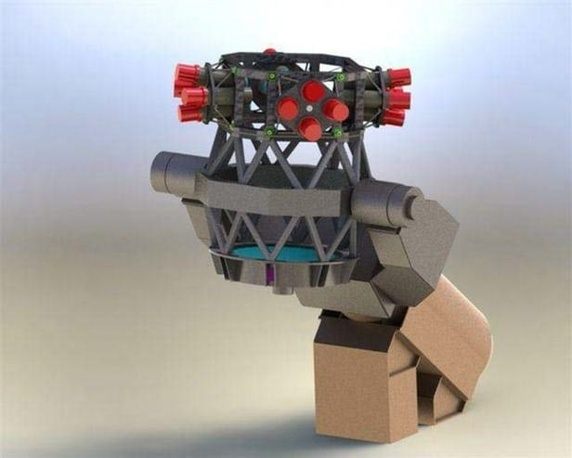 #
#
Then, the Large Synoptic Survey Telescope being built in Chile, first light 2019 begin science operations in 2021, and full operations in 2022 is a very unusual large mirror telescope. It’s mirror is 8.4-meters in diameter, and unlike most large telescopes which are designed to focus on a tiny spot, it will have a very wide field of view, 3.5 degrees diameter, or just short of ten square degrees, with sharp vision right across its field of view
It will use a 3.2-gigapixel CCD camera to do paired images of those ten square degrees of the sky every 15 seconds all night every clear night (so a total of 30 seconds for each ten square degrees).

That should speed up the detection of the fainter asteroids, sub kilometer scale as far as the main asteroid belt. It should increase the number of known asteroids and comets of all sorts 10 to 100 times. It will image the whole sky every three or four nights in two colours, a total of nearly a thousand full sky surveys in ten years, and take so many photos of the sky that it will be able to do its own orbit determinations for the asteroids (normally follow up measurements are needed for all the asteroids detected). Near-Earth Objects (NEO's). This will let it find the orbits of the asteroids very accurately as well. For details see: [1511.03199] Asteroid Discovery and Characterization with the Large Synoptic Survey Telescope (LSST)
By comparison, Pan STARRS, covers 7 square degrees with each 30 second exposure, 1.4 gigapixels, see Wide-Field Imaging. It has two 1.8 meter diameter telescopes. Pan-STARRS - Wikipedia
So it is faster, higher resolution and more sensitive than Pan STARRS. Also, it’s in the southern hemisphere, so complements Pan-STARRS, which is in the northern hemisphere. Pan-STARRS already finds most of the asteroids to date. Once the LSST comes on line it should increase the rate of discovery even more.
The NASA Authorization Act of 2005 set the goal to find 90% of all asteroids of 140 meters or larger by 2020.
"detect, track, catalogue, and characterize the physical characteristics of near-Earth objects equal to or greater than 140 meters in diameter in order to assess the threat of such near-Earth objects to the Earth. It shall be the goal of the Survey program to achieve 90 percent completion of its near Earth object catalogue (based on statistically predicted populations of near-Earth objects) within 15 years after the date of enactment of this Act."
We have already reached the goal already for asteroids of 1 km and larger and should have no trouble reaching it by then. Found 90% of the roughly 1000 asteroids that large, and are finding one a month at present.
However the smaller ones are more of a challenge. There are about 30,000 NEO's of 140 meters or larger.
LSST could achieve this goal within 12 years, and potentially faster if it is optimized for searching for NEO's However, it will come into operation until 2020 (first light) and 2022 (first observations). Also it is currently funded for only 10 years and was funded for many science goals, not just NEO's So although it will find many NEO's by 2032, it will not reach that 90% target. The LSST team have proposed extra funding to extend its mission to 12 years and to optimize it for NEO's - which if it is accepted could mean it reaches that target by 2034.
For half a billion dollars we can build a space telescope to do an infrared survey from inside of Earth’s orbit close to Venus to find most of the objects down to 20 meters within a decade.
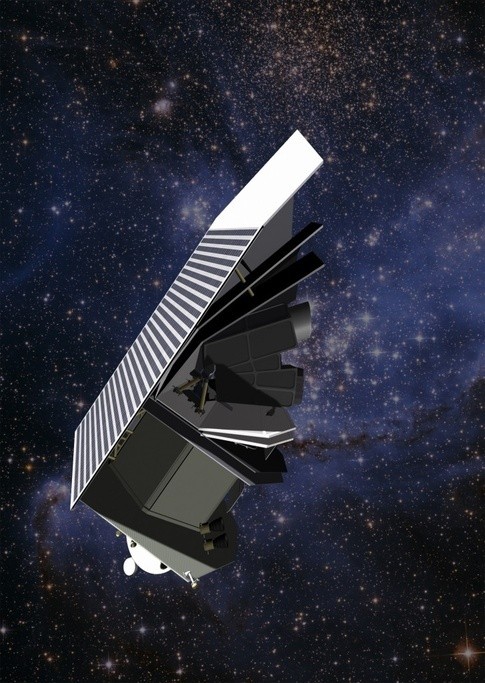
Sentinel telescope developed by the B612 foundation. They have not yet managed to find enough funds to complete it although they did raise many millions of dollars. They were going to partner with NASA but they pulled out due to lack of funding. Any major technological country world-wide could fund this and hardly notice the effect on their defence budget.
It would sit inside of Earth close to Venus's orbit giving it a good field of view of NEO's close to the sun. It looks away from the sun to avoid being blinded by it - and it can then see faint NEO's that are in between the Earth and the Sun which is the hardest place to spot them from our current Earth based surveys. It would help fix that blind spot for asteroids that come from the direction of the sun. It looks in infra red because the asteroids are far more obvious in the infrared.
Eventually it would spot just about everything out there that's in the vicinity of the Earth orbit.
Idea is that it would find nearly all potential impactors down to 20 meters diameter.
If we find anything headed our way then with a decade or two of warning it would be easy to deflect.
The Sentinel spacecraft didn’t get enough funding and work on it is paused.
NASA however is still following up an alternative approach NEOCam with a slightly different strategy, situated at the L2 position. If it is funded, this should help close the gap for 140 meters and larger.
However that still leaves the three million asteroids of 30 meters and larger, which are still large enough to be quite hazardous. NEOCam is not as sensitive as Sentinel for these.
However there are new developments in asteroid tracking which may help here. Especially, use of synthetic tracking. The idea is explained in techy detail in this paper. Finding Very Small Near-Earth Asteroids using Synthetic Tracking. For an easier to read summary of it, see “Synthetic Tracking” Set to Revolutionise Near-Earth Asteroid Discovery
The idea is that instead of doing a 30 second exposure, you do many shorter 2 second exposures. With conventional CCD's that adds to the read noise so you get more errors but there are new CCD's developed for medical imaging that permit fast accurate reading, called Scientific CMOS detectors. The Andor Zyla is an example here.

Andor Zyla 5.5 | sCMOS Camera medical imaging camera capable of fast read out with low read error
You can then use this to simulate tracking the asteroid with the camera, which makes the asteroid far brighter in the images.
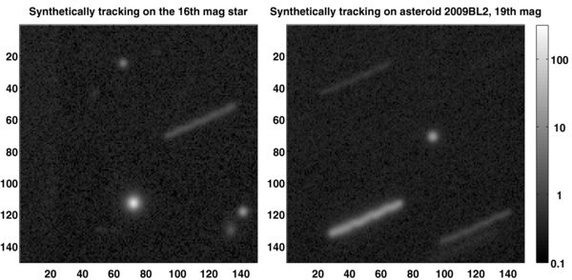
This image shows a the result of stacking many photographs of asteroid 2009BL with camera set to follow the stars on the left - notice how the asteroid is shown as a streak, and rather faint. On the right, the same photos are stacked to follow the asteroid which then shows as a much brighter spot, and the stars are streaked and fainter.
Image from: DETECTION OF A FAINT FAST-MOVING NEAR-EARTH ASTEROID USING THE SYNTHETIC TRACKING TECHNIQUE
When the asteroid is small and traveling faster across the field of view, the trail can be so faint it can’t be distinguished from background noise when the camera follows the stars. If you know its velocity you can make it much brighter by following the asteroid. But what can you do if you haven’t detected it yet and don’t know which way it is moving? The idea of synthetic tracking is that you take lots of short exposure photos and just try stacking them in many different ways until you find the right velocity and an asteroid pops into vie win the photo. This is time consuming but modern graphics cards permit fast parallel processing which makes synthetic tracking feasible.
This approach can make it easier to spot fainter asteroids. It might mean for instance that you can spot an asteroid ten times further away than before. That means a thousand times the volume of space covered. So this technique can lead to a huge increase in the detection of asteroids.
The researchers found that fewer than eight cubesats, fitted with 15 centimeter synthetic tracking telescopes could find more than 70% of NEO's larger than 45 meters in diameter in less than six years (these are the asteroids that are most hazardous for us). The total cost would be $50 million. With larger 30 cm telescopes then eight satellites could find 95% of the NEOs larger than 45 meters in diameter in the same time period of less than six years. For details see their 2016 Annual Progress Report.
$50 million is not a lot. Any developed country could find that out of loose change from its defense budget. $50 million spread over the US population, say, is a one off cost of 15 cents per person. In the UK we could do it for a one off cost of £1.60 per person - that's to find them for the entire world. As an example, the UK recently voted to renew Trident at a cost variously estimated at £40 billion to £205 billion ($50 billion to $256 billion). The cost of finding 70% of Near Earth Asteroids down to 45 meters within six years is a tiny 0.1% of that. We can certainly afford to do that.
See also my Giant Asteroid Headed Your Way? - How We Can Detect And Deflect Them
This is something you hear said so often - that we risk being hit by an asteroid that could make humans extinct. But do we really? This is the article I’m commenting on, a recently breaking news story: Earth woefully unprepared for surprise comet or asteroid, Nasa scientist warns. Some are already worrying that it means that we are all due to die in the near future from an asteroid impact. Well, no, it doesn't mean that. So, what is the truth behind it?
Short summary - the chance of being hit by anything large enough to cause a mass extinction in the next century is so small that you can forget about it. Even if we get hit by a giant asteroid in the next few thousands or years (or more likely millions of years), then humans would not go extinct. Meanwhile there is a lot we can do to protect against the smaller asteroids that do threaten us. Using the new technology of synthetic tracking with cubesats, we could detect 70% of asteroids of 45 meters in diameter within six years, for a (comparatively) modest outlay of $50 million to help protect the entire Earth. Longer term we can expect to be able to deflect or even mine away the larger asteroids by the time any of them are a threat to Earth.
The source of all this is a comment by Dr Joseph Nuth who warns:
“But on the other hand they are the extinction-level events, things like dinosaur killers, they’re 50 to 60 million years apart, essentially. You could say, of course, we’re due, but it’s a random course at that point.”
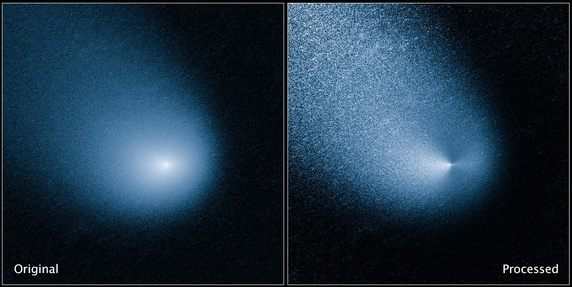
Photograph of comet Siding Spring by Hubble - right hand image is more processed. This comet did a close flyby of Mars and at one point was predicted to have a tiny chance of hitting Mars. In the end it missed Mars by more than a quarter of the distance from Earth to the Moon
If you read the rest of the article, it’s a worthy goal, to prepare us for asteroid impacts of all sizes from the small Chelyabinsk one up to really large 10 km ones. There are a number of things potentially confusing about this statement however, if you read it as a non scientist.
As a result of extensive asteroid surveys over the last couple of decades:
First when he said "You could say, of course, we’re due, but it’s a random course at that point.”" - that is a scientist speaking as a scientist. But of course people sharing this on social media, retweeting, writing new stories about it, pick up the “we are due” and omit the scientific qualification “but it’s a random course at that point”.
To say that we are “due” a mass extinction is a bit like saying that after you throw nine heads, you are due to throw a tail. Not true. The chance that the next coin toss is a tail is always going to be 50/50 for a fair coin no matter how many heads you throw.
It's the same with extinctions. So long as it is a random process, then an extinction that happens every 60 million years could happen tomorrow or it could be 60 million years or 120 million years before it happens. On average we would still expect to wait 60 million years for the next such mass extinction even if the last one happened hundreds of millions of years ago. It’s just as for the coin toss. Same for an extinction event of a size that happens every 100 million years. If you look at the diagram the big five are irregularly spaced. The last one happened 66 million years ago. But they are irregularly spaced so we can't conclude either that we need to wait 44 million years for the next big extinction either.
Some scientists have tried to discern a periodicity in the extinctions of perhaps 26 to 30 million years. If they are right then we are due the next extinction perhaps 15 million years or so from now. But that is very controversial and if true, it wouldn’t cover all mass extinctions. At any rate that's so far into the future it makes no difference to us now, if they are right or wrong. We could get a mass extinction in the next few millions of years. But it is nearly impossibly unlikely in the next century.
70% or even 96% of species extinct - 0% risk for humans extinct

This graph shows some of the major extinctions - note that some of the extinctions spread over several tens of millions of years. This probably doesn’t mean that the extinction took tens of millions of years as this is a graph of the fossil species and due to the Signor–Lipps effect - that a species may seem to go extinct in the fossil record before it actually is extinct because typically you get only a few specimens scattered over time so can easily miss the exact moment of extinction. The extinction that ends the Permian era is thought to have lead to extinction of 96% of all marine species. and 70% of land species.
If you look at some of the past extinction events, you might think that humans could go extinct very easily. The worst of all of those was the Permian–Triassic extinction event during which 96% of marine species and 70% of land species went extinct according to one estimate.
So based on those figures you might well think that there is a 70% chance that humans would go extinct as a result of whatever causes those extinctions.
However, even after the extinction of the dinosaurs, birds, dawn sequoia, river turtles, small mammals and many other plants and creatures survived. Many species would go extinct after a gamma ray burst or a large asteroid impact, but humans are great survivors. We were at risk in the past before we developed tools and clothing. But with clothes, tools, boats, etc, we are an extremely adaptable species, able to survive anywhere from the Kalahari desert to the Arctic, with only stone age technology. We had already colonized most of the world by the end of the neolithic period.
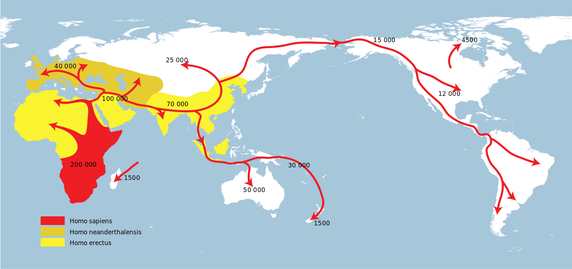
Overview of Pre-modern human migration - there is debate and controversy about the details, but generally agreed that humans were already present world-wide by the end of the neolithic period (which ends around 2000 BC), or shortly after.
So, as long as we retain at least stone age technology, there isn't much that could make us extinct. Even if we have to go back to beachcombing and surviving on shellfish, which was a staple of early human diet in cold places such as Canada and Scotland where I live, one way or another some humans would survive.
Conchero al sur de Puerto Desead - a shell midden in Argentina. For long periods of time ancient humans survived on shellfish, for so long that they built up these huge shell middens in many parts of the world. See Shell Midden
We are omnivores able to survive on:
So long as any of those survive the extinction event, anywhere in the world and so long as humans retain at least stone age level of understanding of technology - then there would be many survivors and we would not go extinct, even if more than 90% of species went extinct. The dinosaurs weren't a patch on us as far as survival goes. Without any technology, turtles, crocodiles, alligators, small mammals, flying dinosaurs (the birds), dawn redwood trees, pine trees, many lifeforms survived the dinosaur extinction impact.
We aren't vulnerable like the early hominids. So long as
So, for sure, some of us would survive a giant impact like that

Conchero al sur de Puerto Desead - a shell midden in Argentina. For long periods of time ancient humans survived on shellfish, for so long that they built up these huge shell middens in many parts of the world. See Shell Midden
We are omnivores able to survive on:
So long as any of those survive the extinction event, anywhere in the world and so long as humans retain at least stone age level of understanding of technology - ability to make clothes and simple tools and to make boats to cross rivers and seas to find new sources of food - then there would be many survivors and we would not go extinct, even if more than 90% of species went extinct. The dinosaurs weren't a patch on us as far as survival goes.
Without any technology, turtles, crocodiles, alligators, small mammals, flying dinosaurs (the birds), dawn redwood trees, pine trees, many lifeforms survived the dinosaur extinction impact. And humans with the barest minimum of our technology are able to survive anywhere from the Arctic to the hottest of deserts, or in tropical rainforests. Some of us would survive a giant impact like that. So long as there is something edible somewhere on Earth that we can find in our travels, and cultivate or just eat in situ as hunter gatherers, we would survive.
River turtle, Boremys basking on a Triceratops dinosaur skull, Credit: Brian T. Roach, Yale Peabody Museum
How Tough Turtles Survived Dino-Killing Meteor
It did become extinct eventually, but not through asteroid impacts. Probably because it was unable to retract its neck, and succumbed to predators.
Homo Sapiens is listed in the IUCN Red list of threatened species - as one of the species of least concern
"Listed as Least Concern as the species is very widely distributed, adaptable, currently increasing, and there are no major threats resulting in an overall population decline."
We have already found all the 10 km asteroids that do regular flybys of Earth. We have found 90% of the 1 km asteroids. This makes it very unlikely that we are hit by either a 1 km or 10 km object in the next century.
We could be hit by a comet. But they are rare. He mentions the comet Siding Spring which did a flyby of Mars. But it’s important to note that it actually missed Mars by quite a distance. Also, it was only 400 - 700 meters in diameter, so of a size that would have only local effects if it hit Earth. Also even with this small size, it was discovered 22 months before the flyby, so more than a year and a half. A larger comet would be discovered several years before the flyby.
This shows the trajectory of Siding Spring:
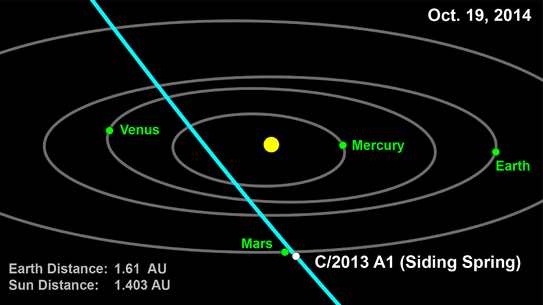
It actually missed Mars at a distance of 140,000 km. That’s 22 times the radius of Earth and 36% of the distance to the Moon. Earth is often “buzzed” by asteroids at that distance.
It’s orbit was uncertain when first discovered, as is usual, giving a tiny chance of hitting Mars. But was eventually shown to miss. So if a comet happened to be in a similar orbit but targeting Earth instead of Mars that would be what we’d expect, that it would have a tiny chance of hitting Earth but a few months after discovery or maybe sooner, we’d know for sure that it would miss. It would be exceedingly unlikely for such a comet to hit.
If it did hit, a comet the size of Siding Spring is probably not quite large enough for a tsunami depending on whether it hit into deep or shallow seas and how much it breaks up in the atmosphere. It would be seriously bad news locally if it landed in a heavily populated area, and such an impact zone would have to be evacuated if it could not be deflected. However, most of the Earth surface is sea, ice fields or desert.
Probably only one impact in 100 is by comets. So it doesn’t really make a lot of sense to focus on defense from comets first. We can deal with 99% of the threat by looking at Near Earth Asteroids and they are also easiest to deflect, as if we can find them decades in advance, just the gentlest of nudges will deflect them away, just microns per second of delta v.
Now I totally agree that we need to put more work into searching for asteroids and detecting them and preparing to deflect them. And eventually also good to speed up detection of comets too, which will happen anyway as a side effect of the asteroids search.
As for having a rocket on standby to deflect a comet, well I think you need to bear in mind that though it could be needed right away, it might also not be used for several thousand years. So - is that our priority? And as for deflecting asteroids - there are so many different ways to do it and what we use would depend on the exact scenario. For instance for some asteroids, it might be sufficient to “paint” the asteroid white with a white dust. So we would need a spacecraft able to dust it uniformly with white dust to deflect it using the effect. Here is a short video of professor Dave Hyland talking about the idea:
And article
Asteroids No Match For Paint Gun, Says Prof | Texas A&M Today
(or How to Deflect Killer Asteroids With Spray Paint | WIRED)
Its due to the Yarkovsky effect. When the sun heats up a rotating object, then the rotation carries it around some distance before the thermal photons are emitted as heat. The amount of the effect depends on how rapidly the object rotates, but also on how light or dark it is Since most asteroids are very dark, the obvious way to change the amount of this effect is to paint it white. So long as you discover it long in advance, then this may be enough to shift its orbit to miss the Earth (orbital predictions have to take account of the Yarkovsky effect).
I think that with unlimited funding we would devise half a dozen ways of deflecting asteroids, test them, and have them in a “ready to launch” state ready to deflect any conceivable asteroid, even if they may have to wait ten thousand years before we need some of the solutions. However in the situation as it is now, with limited funding then I think it makes much more sense to focus our efforts on detection.
I've already covered that above, see New development synthetic tracking of asteroids
Eight of cubesats, fitted with 15 centimeter synthetic tracking telescopes could find more than 70% of NEO's larger than 45 meters in diameter in less than six years. The total cost would be $50 million so a tenth of the cost of Sentinel. With larger 30 cm telescopes then eight satellites could find 95% of the NEOs larger than 45 meters in diameter in the same time period of less than six years. For details see their 2016 Annual Progress Report. These are the asteroids that are most hazardous for us.
$50 million is not a lot as these things go. Any developed country could find that out of loose change from its defense budget. Many wealthy philanthropists could find that sum also. It would retire most of the risk from the larger asteroids for the entire world within six years.
It would still leave the risk of comets, but those are not the priority because they are so rare. If we had loads of funding it would make sense to fund a rocket ready to launch if necessary, even if it is quite possible it won’t be used for 1000 years. That’s the ideal situation, to do both. But with limited funding, detection is surely the priority.
See also my Giant Asteroid Headed Your Way? - How We Can Detect And Deflect Them
This possibility of an asteroid impact is one of the most overhyped disasters.
As I've explained briefly here, we have pretty much retired the risk from major dinosaur extinction type asteroid impacts for the next century as a result of exhaustive sky surveys over the last couple of decades. That just leaves the smaller ones similar in scale to a tsunami, volcanic eruption or earthquake. These are very rare indeed. We haven't had a single major asteroid impact since the invention of writing. There is no ancient asteroid version of Pompeii.

This shows figures from Pompeii in the positions in which they died, preserved as plaster casts. There are many ancient disasters from volcanoes, tsunami, earthquakes. But none like this from asteroids. Asteroid impacts can happen but they are rare. Photo by Lancevortex
However they are well worth focusing attention on since if we can detect an asteroid well in advance, we can predict the moment and point of impact exactly to within a minute or less, even decades in advance, and we can either evacuate the region, or indeed with enough warning, it is easy to deflect it too. Given that for just $50 million we could find 70% of the asteroids of diameter 45 meters in diameter or larger within six years - and that's to protect the entire world - it is well worth spending the sums involved.
Scientists often use hyperbole - this is a perfectly acceptable mode of expression, using vivid imagery that is exaggerated to the point of impossibility for emotional effect. They focus on the major asteroid impacts which we are pretty sure won't happen this century, in their enthusiasm to try to get the politicians and public to do something about it. Sometimes they even mention 100 km diameter asteroids which have never hit us or any planet inside of Mars for over three billion years. But we don't need to do that in my view. The downside of it is that as a result of this, together with disaster movies, many of the general public are seriously scared of an asteroid impact wiping out humanity.
Young children and those without a scientific background are especially impacted by this. It is very natural to do this, but I think a more measured, sober approach just stating exactly what the risks are and what they are not, is more likely to lead to action rather than a kind of paralysing fear. Especially once you realize that some become so scared of these stories they even become suicidal.
2002 NT7 originally had a risk of 1 in 250,000 of hitting Earth in 2019 on 1st February 2002. This meant it was almost certain to miss, 99.9996% certain to miss. So it was no surprise that a little while later when they refined the orbit, that they found it would miss in 2019. There was a chance of it hitting in 2060 for a while but that was ruled out too. All that happened rapidly in 2002. It was removed from the risk table on the 1st August 2002.
This does not mean that there was any cover up going on as the conspiracy sites claim. It is just the normal thing. If an asteroid has a very low chance of hitting Earth, like 1 in 250,000 then you expect that it will be proven to miss as you refine the observations. That's what is going to happen in 99.9996% of the cases of an orbit like that. It was notable as the first orbit to reach a positive rating in the Palermo scale. More about it here: 2002 NT7.
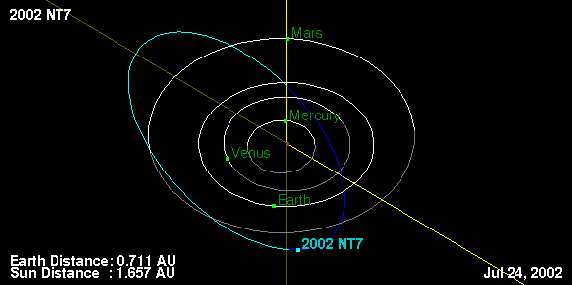
This is the orbit of 2002 NT7 discovered 1st February 2002. It was briefly categorized as having a 1 in 250,000 chance of hitting Earth on 1st February 2019. That made it 99.9996% certain it would miss. As they say in the initial announcement “By far the most likely scenario is that, with additional data, the possibility of an Earth impact will be eliminated.”, and indeed further calculations showed it would miss. There was still a small chance of it hitting in 2060 until 1st August 2002 when they proved that it was no hazard to Earth at all in the near future through to 2200. You can see a list of all its flybys predicted through to 2200 here.
To check any of these stories just go to the Current Impacts Risk Table and if the first entry is white or blue then that means there is no risk and the story is either a hoax or a misunderstanding because the table is sorted with the entry of most risk at the top. If the first entry is yellow, orange or red, just head over to any major astronomy news site to find out more, as it is sure to be top news there. Red is the only level that means they are sure it will impact. So far none has ever gone higher than yellow. We have had a couple of tiny asteroids that were predicted to impact a short while before they actually hit but they were so small they would have been classified as blue in that table, too small to be a significant hazard. One landed in the middle of a desert in North Africa and one in the sea to the west of India.
Written 10h ago CommentShareThis is another doomsday fake story, from the UK newspaper, the Express. There is no truth in it at all. It’s easy to check a story like this in detail. Just go to the Current Impact Risks table. If the top entry is blue or white, as is the usual situation, then there are no current predicted future impacts on Earth, so the story is false. If the top entry is yellow, orange or red, well go to any reputable site for astronomical news and it will be a top story so then you can read all about it there. Only red means a predicted impact, the other colours mean there is a chance of an impact.
Details
This is actually a story from 2014 but is naturally gaining more attention as 2017 approaches: SHOCK ASTEROID WARNING: Planet earth faces 100 YEARS of killer strikes starting in 2017 I have just replied in a comment there, here is my comment:
We have already found all the Near Earth Asteroids of 10 km or larger. We have found 90% of the ones of 1 km or larger and are finding them at one per month. Will be nearly finished that survey by the late 2020s. There is a tiny chance of a larger comet from the outer solar system, from the Kuiper belt or the more distant Oort cloud. This belt is not newly discovered but has been known about since the 1980s (building on earlier hypotheses).
Here is a video about the observation of the first verified Kuiper belt object - this which must be what they mean by a “second asteroid belt” though actually it is made up mainly of comets, not asteroids.
But for a 10 km diameter comet to approach Earth from so far afield would be extremely unlikely. We get a 10 km impact every 100 million years on average, and last one was 66 million years ago. Only one impact in a hundred is probably from comets so that makes the chance of such an impact this century, now all the NEA's are found and not headed our way, a negligible 1 in 100 million - that's the risk of it happening at all any time this century. We'd also see such a comet years before it got here in the very remote chance of it happening.
As for a 100 km diameter comet, forget it. The entire inner solar system from Mars inwards hasn't been hit by such a comet for well over 3 billion years from the cratering record of Mercury the Moon, Mars ,and what we have of the records of Earth and Venus. The leading explanation for this is that Jupiter protects us against the largest comets by breaking them up, or they just hit Jupiter, or ejected from solar system or hit the Sun. It seems to do a very effective job of this. Not so effective for smaller ones though it does take many "hits for the team" of smaller asteroids too, as the largest target there is in the solar system.
And there certainly has been no announcement predicting 400 impacts in the next century. I can't imagine where that comes from. It is easy to check these stories. Just go to the JPL Sentry Risk Table and you see the current impact risks ordered with the most risky at top. If the topmost entry on that page is white or blue, as it is now, and as is usually the case, then there are no predicted impact risks at all. So never mind not 400, there aren't any at present.
The risk table is here: Current Impact Risks
This is a very distant belt of objects. First it was just a theory to explain the distribution of comets, but eventually we started to find objects in them. Now we know a lot of Kuiper Belt objects and we know for sure it exists. Very remote though, well beyond Neptune. However it is a source for comets that sometimes come into the inner solar system. We now know of many objects in it
Here is a very short animation of the newly found objects in the Kuiper belt

This plot shows the Kuiper belt objects in blue. The giant gas giants are shown in red.
The N stands for Neptune. Mars, Earth and Venus are all closer to the sun than Jupiter which is labeled J.
The other colours here label various kinds of objects. For details see Kuiper belt plot objects of outer solar system
Objects can hit Earth from the distant Kuiper belt. But the chance of this happening is almost vanishingly small for a 10 km comet - and no chance at all for a 100 km comet as that hasn’t happened in over three billion years. Also we’d see them coming years in advance
It is easy to check any of these asteroid impact stories for yourself. Just go to the Sentry Risks Table here
Current Impact Risks
It’s sorted with the asteroid of most risk at the top and it is colour coded, so easy to check. Anything white or blue is no threat at all. If you ever see a yellow entry at the top, that means it is a potential risk, but the chances are high that it is a false alarm. Only if you get an orange or red is there a real risk. That has never happened to date.
I assure you if it goes orange or red, you won’t need to hunt around to find out information, it will be on international news and all astronomical web sites. And if there is an actual impact predicted, you’d get warnings to evacuate the impact zone. This is very unlikely to happen though. In all of recorded history we have had many volcanoes, earthquakes, tsunamis, but never had a major asteroid impact on a populated area. Indeed not even in a desert apart from meteor crater in Arizona 50,000 years ago.
So chances are that this is not going to happen for thousands of years into the future and by then if we still have space technology we have probably been expecting it for a few thousand years, centuries at least, and surely would either deflect it, or just mine it away to oblivion with space mining.
It’s not impossible that we get a largish meteorite impact, even one large enough to destroy a city, or a small country. It’s enough of a risk that we need to detect these things, and even more so the smaller ones like Chelyabinsk. .
As for a “level 3 planet cracker”, I’ve no idea what it means. It sounds like something out of Star Wars.
However whatever it is, it’s not possible. Such things did happen in the early solar system, when the planets were forming, one of them created our Moon. But they haven’t happened for billions of years since the solar system settled down, the largest ones that can hit us are about the size of New York, not tiny, quite large, but neither planet cracking or at all able to make a species as versatile as humans extinct. And the chance of something as large as that is very remote. We already know all of the 10 km diameter asteroids that do regular passes of Earth.
So planet crackers are just impossible at present, in what is a quiet time of our solar system.
One of these asteroids, 2009ES was photographed by a Chinese observatory in early September, one of the many asteroids photographed every day. For some reason this became a major news story. This asteroid was discovered in 2009, as you can tell from the name. It flew past Earth at a distance of 7.2 million kilometers on the 5th September. The original story did not give a date for a flyby and as a result, the story continued to be repeated in online news sites, predicting the end of the life on Earth, for much of September. Here is an example story: End of The World? Massive Killer Asteroid Heading Towards Earth, Experts Warn on Nature World News and Warning of doomsday asteroid ‘with the power of three billion nuclear bombs’. on Metro magazine.
2009ES has its close approaches mapped out through to march 2200 when it will pass Earth at a distance of between 1.4 million kilometers and 1.42 million kilometers. It has a diameter of between 210 and 470 meters - large enough to have widespread local effects though not enough to have global effects. It is listed as a potentially hazardous asteroid so we do have to keep an eye on it - but it is no risk at all for the next couple of centuries. For details see 2009ES in the JPL Small-Body Database Browser and more details and links here: Asteroid 2009 ES Fact Sheet
As another example, right now, many of these online news sources are running a story about 2000 ET70 which isn't anywhere near us this year. The closest it gets to us before 2100 is a flyby at a distance of 5.52 million kilometers on the 19th February, 2059 at 9:20 am. They don't give a source for the story so it's impossible to work out how the misunderstanding arose. If you do a google search for 2000 ET70 the news is full of stories saying that this will be a disaster and kill us all. See this screen shot.
2000 ET70 would not kill us all if it hit, none of the NEO's are that big.
But it is a large asteroid, diameter about 1.5 km, it’s large enough to cause a large tsunami also to have some global effects on climate for a few years and obviously, it would devastate an entire country if it impacted on a populated area.
It is one of the better known NEO's with radar imaging. See Radar imaging and physical characterization of near-Earth Asteroid (162421) 2000 ET70 - they have computed its orbit so precisely that they know it accurately from 480 - 2813 CE. The minimum distance from the Earth over this time period is 4.7 million kilometers. So though it is a potentially hazardous object long term, it’s no threat to Earth for at least 800 years.
Near-Earth Asteroid 2000 ET70 from Shantanu Naidu on Vimeo.
First, the designation of an asteroid starts with its date of discovery. So for instance 2000 ET70 was found in the year 2000.
I’ve already explained about the NASA Sentry Risk Table. The risks are ordered with the highest risk at top. It is colour coded so is easy to check.
If the top entry is blue or white, there is no current risk known from any asteroid, and the story is a hoax or misunderstanding. If you want to investigate in more detail, see the indented paragraph:
For a more thorough check, look up the object's page in the JPL NEO browser and click on "Close approach data". Here is the page for 2000 ET70. The first column shows the date. The fourth column shows the minimum distance in au, where 1 au is the distance from the Earth to the Sun. To convert that to kilometers type0.0369406968466726 au in kilometers into google (or whatever the number is). That particular example gives the distance for the closest approach for 2000 ET70 in kilometers.
For a list of all the flybys for upcoming dates, go to the ESA close approaches table. Or the JPL close approaches page. The JPL page is more comprehensive including even very small minor asteroids, while the ESA one has a longer timeline and includes past asteroids for some time back.
NASA rarely comment on doomsday stories. That’s not their mission and it has to be something fairly major for them to say anything. So, no, they won’t issue a debunking statement every time the media mistakenly say that some asteroid is going to hit Earth.
It's important also I think to realize that NASA is a space agency, not an astronomical organization. They do make public statements about results of their space missions, e.g. discoveries from rovers on Mars etc. But they aren't really a mouthpiece for astronomy generally. Their announcements are generally tied in some way to an observation or mission, e.g. Curiosity, or Hubble or whatever.
However they have been known to debunk asteroid impacts. In 2015, they issued a statement about an absurd asteroid impact story that got many people concerned.
In 2012 they issued a statement debunking Nibiru. Why the World Didn't End
Written Oct 23 CommentShareThis is a very bizarre story. It appeared on various news sites online including this example: NASA warns 1000 asteroids hurling towards Earth and might collide in next five years
They claim to source it to NASA but don't give any cites to a NASA press release. Then they go on to say
“Nasa knows of no asteroid or comet currently on a collision course with Earth, so the probability of a major collision is quite small. In fact, as best as we can tell, no large object is likely to strike the Earth any time in the next several hundred years,” said a Nasa spokesperson. “NASA has also made asteroid detection a top priority, and are developing strategies for identifying asteroids that could pose a risk to our planet.”
So how do you make sense of that? They claim that NASA warns that there are 1000 asteroids due to hit Earth in the next 5 years, but the only quote from NASA in the article says this is nonsense. Why do journalists publish such nonsensical self contradictory stories? I got a few pm’s and comments about it and tried to find what the source was that lead to this but couldn't find any explanation.
That 1000 is similar to the number of asteroids of diameter 1 kilometer or larger in the NEO database. NASA have found 90% of those and shown that none of them threaten Earth. There are 10% of them still to find and they are finding them at a rate of about one a month. By the 2020s they will have found 99% of them and that will pretty much retire the risk from a 1 kilometer asteroid - unless of course for the unlikely possibility that they find that one of them is headed our way.
I suspect that some journalist just misunderstood a press release or a statement about the 1000 asteroids of 1 km in diameter and then wrote it up in this way, and the others then all copied them (as they often do). But impossible to know for sure as the articles don’t give a source for the story.
It’s about the same time as the announcement that astronomers have reached the tally of 15,000 asteroids discovered so far Tally of known near-Earth asteroids and comets hits 15,000
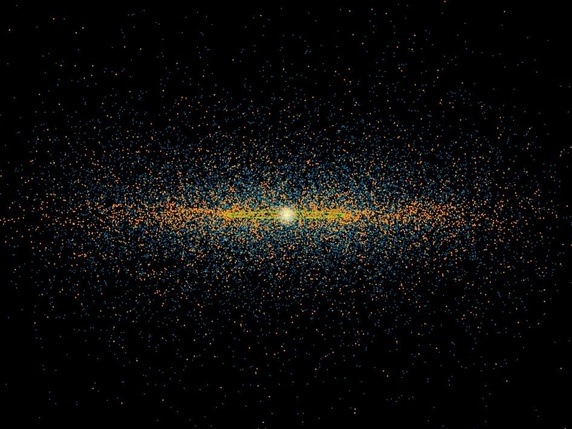
NASA Survey Counts Potentially Hazardous Asteroids - all the orange asteroids in this illustration are ones that do flybys of Earth, so “Potentially hazardous”. However we also know that none of those ones will impact Earth any time before 2100. Interplanetary space is vast and Earth is tiny and it’s not easy for an asteroid to hit such a small target in the vastness of the space between the planets
So it might be related to that. Discovery of more near Earth asteroids, all of which miss Earth, of course does not increase the risk of hitting Earth. :They were there all along, it is just that our more sensitive telescopes can now spot them. They discover about 30 new asteroids per week, or more than three a day nowadays.
Written Oct 3CommentShareHere I'll cover anything to do with the idea that our solar system has extra planets or suns or entire solar systems that the conspiracy theorists claim do regular flybys of Earth every few thousand years. For astronomers this is seriously odd pseudo science. Especially, how could you ever get convinced by anyone that we have two suns! If you said that an astronomer would probably LOL thinking it is a joke, and then if you continue and it's clear you are serious, would look at you askance as if you were crazy. But these are ordinary folk who get convinced of these things by videos that seem impressive to them, with authoritative sounding voice over, stirring music and striking graphics. Either very young, or just people with no scientific or astronomical background and who don't know anyone with a strong background in those subjects. So, if you have got convinced of any of this by the videos you watched or the news stories you read, hopefully this will help you to be more grounded in the reality of what astronomers have found out about our solar system.
This is the most common question I get asked about by scared and sometimes suicidal people - do we have two suns or an extra planet that's going to do a flyby of Earth in the near future. So I have to cover it in detail. They have been told by the conspiracy theorists that all astronomers are lying to them to help prevent mass panic. So you have to take special care to explain how that's not possible either. David Morrison also reported that it was by far the most common question he was asked during the time when he fielded "Ask an Astrobiologist" for NASA.
Many of the Nibiru website authors claim to be very knowledgeable about astronomy. It is easy to test though, and find out that they don't understand this stuff. Here are some things they may say which immediately show they are mistaken, don’t have the most basic understanding of astronomy, and don't check their sources.
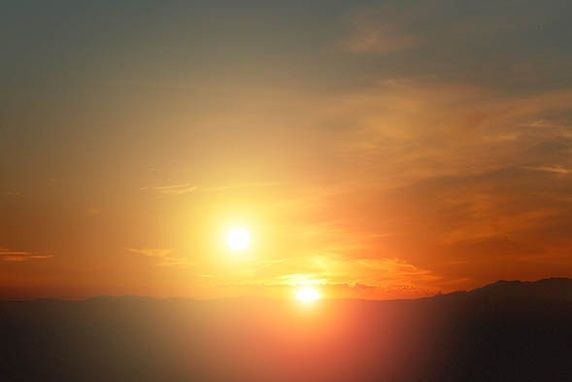
This rather dramatic image has gone the rounds a bit and been posted as a photograph of a double sunset in China. It's actually an artist's impression from NASA of a double sunset over an alien planet.
If someone tells you that we have two suns - then you know they are speaking BS. Click away as that means they don’t have the first clue about astronomy.
It is dead easy to check that we have only one sun. Hold a finger in front of it (don’t stare at the Sun as you won’t know if your eyes get damaged) With the sun blocked, do you see a second sun to either side, or above or below? No! Therefore we have only one sun. It really is as easy as that to debunk this one.
If anyone says any of these things and claims to be an expert in astronomy - that’s like someone telling you that Usain Bolt is a top seeded tennis player and won Wimbledon and then claiming to be an expert on sport.
That wouldn’t lead you to suddenly wonder if he really is a tennis player and wonder if all the Olympic finals were faked to make him out to be a sprinter. You’d just look at the person who said this askance, or indeed aghast, and then from then on you’d probably never trust anything they say on matters of sport.

Usain Bolt winning the 100 meters in Bejing in 2008. If someone told you he was a top seeded tennis player - that would just lead you to treat that person as someone who doesn’t know what they are talking about in matters of sport.
So - it’s like that if you have even a basic understanding of astronomy and someone says any of those things I listed, or posts them on a website, or a YouTube video, you immediately know that this person knows nothing at all about astronomy. They know as much about astronomy as the person who said that Usain Bolt was a tennis player knows about sport.
There are many other things they say that are immediate giveaways that they don't have the first clue about astronomy. Indeed if an article claims to be astronomical and uses the words Nibiru or Hercobulus or Wormwood, then unless it is a debunking site, that is a giveaway sign that the author knows nothing of modern astronomy. But what I've listed there already deals with 99% of them probably. That is except for the ones that have no astronomy and just base their prophecies on miracles and the Bible or such like.
If anyone says any of those things, they don't understand astronomy, just click away. See also my Debunking: You can’t trust anyone except the Nibiru people - everyone else is a paid shill of the government or in some other way motivated to propagate falsehoods
And for why astronomers are sure that Nibiru is just nuts, see
Debunked: Nibiru will hit Earth on [Insert Date here]
Nibiru is just an internet myth / hoax. There is no genuine astronomy behind it. They quote lots of astronomical news stories but they misunderstand them.
The idea of a planet in a 3600 year orbit or a 360 year orbit that crosses the paths of all the gas giants is an astronomical nonsense, BS.
[NOTE TO DEBUNKERS - you are welcome to copy / paste as much of this text as you like to use for your debunking comments on videos on YouTube etc]
Here are some of the absurdities
The Nibiru orbit is unstable and would not last as long as a million years in our solar system because it crosses the paths of four gas giants Jupiter, Saturn, Uranus and Neptune all with different orbital periods. It's like rope skipping
Missing a planet on every orbit is like jumping a rope. You can do it if there is only one planet to miss each time. Pluto does that with Neptune, it goes inside Neptune's orbit every time it is closest to the sun, but that's no problem because it is in a resonance with Neptune and just like someone rope skipping - whenever they land on the ground the rope is not there so they don't get tangled up in it. Similarly every time Pluto gets closest to the sun, Neptune is not there and is elsewhere in its orbit so no problem.
But now imagine you have to skip four ropes simultaneously, you have to jump in a regular fashion (because orbits repeat exactly) and those four ropes are being turned at four different speeds with no resonances between them. That would be impossible. Similarly it is impossible for Nibiru to keep missing all four gas giants on every orbit for long. It can't keep that up for as long as a million years. Our solar system is over 4 billion years old. So such an orbit is impossible.
Astronomers do often hypothesize planets that orbit beyond Neptune. They call all these planets “planet X” where the X there doesn’t stand for 10, it stands for unknown, X as in unknown quantity. Pluto was called planet X before they discovered it,
So, if you see a story about “planet X” then it means they don’t know if it exists or not. It’s just a hypothesis.
The Nibiru people seem to think that all these hypothetical planets are real planets.
Then they also ignore all the parameters in the hypothesis. Scientists publish a paper saying there might be a brown dwarf that orbits 1.5 light years away from Earth. (That’s the idea of Nemesis, which is now pretty much disproved after the Wise infrared survey didn’t find it, and would have found a brown dwarf unless it was unusually cold).
The Nibiru people then skim read this paper and conclude that it proves that there is a planet called Nibiru in a 3600 year orbit that comes into the inner solar system and is already in the inner solar system and about to fly past Earth or hit it a few months into the future or a few weeks into the future.
They don’t seem to see the discrepancies between what the scientists say and what they are saying.
They behave like script writers for a movie.
If you make a movie, your ideas don’t have to make scientific sense, they just have to seem plausible enough for most of the audience to be able to suspend disbelief. Even scientists can enjoy movies like that, I like Star Trek and Doctor Who though much of what they say just makes no scientific sense at all.#
But it doesn’t work in real life. In real life and astronomy the ideas have to make sense and the Nibiru ones don’t.
They say really bizarre things. They think that a planet in a 3600 year orbit can stay behind the sun all the way through its orbit. The sun goes through twelve constellations every year. Jupiter goes through one of the zodiacal constellations each year. A planet in a 3600 year orbit would go through them even more slowly. From that it’s easy to see that it’s impossible for a planet in a long period orbit to “hide behind the sun”. But they don’t seem to be able to understand this.
They believe, many of them, that the Earth’s poles have shifted. You just need to go out any starry night, locate the pole star, go out an hour or two later and check that it is the only star that hasn’t shifted and you debunk that idea with your own eyes. Due North still points towards the pole star. They can’t see this.
They also believe we have two suns and that this second sun appears in photographs take in a cell phone camera. It is so easy to debunk this. that just about anyone will just LOL if you say we have two suns, except the Nibiru people.
On any sunny day block out the sun with your finger. Do you see a second sun? (Don’t stare at the sun itself as your eyes can be damaged and you feel no pain as you have no pain receptors in your retina and effects can happen much later like hours later you start to lose your sight)
I find it incredible that anyone even gives this a moment of thought, whether or not we have one sun or two.
But I’ve come to understand how it works I think. It’s like propaganda. If you watch lots of videos and read lots of stories then you come to believe it through repetition, if the videos and stories seem impressive to you. Much as people come to believe in propaganda. Also a bit like the way advertising works.
For this to happen you have to have no understanding of physics or astronomy, but there are many people who flunked physics at school, and indeed why should everyone understand physics :). I’m not good at languages and have no idea about how baseball or american soccer works.
So I think that YouTube videos and newspaper reporters are part of what leads people to get so scared about things that if they could relate to their own common sense, they would see are nonsense.
I’ve done a couple of petitions on Change.org
YouTube: Petition to YouTube to Halt Ads on Doomsday Videos
Petition: Let's End Dramatized Reporting Of "Doomsday" Stories - The Vulnerable Get Suicidal
Do sign and share, it may help.
As for other objects that could hit Earth, well we have a survey of all the NEO's of 10 kilometers upwards and know their orbits well, and none of them can hit Earth before 2100. We could be hit by a comet but that’s now a 1 in 100 million probability, can be 99.999999% sure it won’t happen this century, and we’d be able to track it for at least a year and probably much longer on its way in if it was a large comet like that.
It is possible for a 1 kilometer object to hit Earth with only a few weeks of warning as though we know 90% of those, that leaves 10% of them still to find. We will have 99% by the late 2020s and are finding one of them every month at present.
An object that large is large enough to cause a tsunami, or to have serious effects on land, and put enough dust into the atmosphere to have some global effects. If we found such an object headed our way we’d need to evacuate the impact zone and couldn’t do much to deflect it at such late notice.
But this is very very unlikely. After all it has never happened in recorded human history and is no more likely to happen in this century than any other. Indeed is less likely because we have found 90% and they are not headed our way so the known probability of it happening is a tenth of what it was before we found those 90% of them. So we can be more confident that it won’t happen than anyone in any previous century already. By the 2020s we will be a hundred times more confident than we could be e.g. last century. Unless we find one headed our way of course, in which case it’s most likely to do several flybys first so we can deflect it, easy to do if it has a flyby of Earth.
Can’t say it is impossible but it’s very unlikely, and ordinary things like traffic accidents or health issues are far more significant. Even being killed by lightning or a tornado is more likely than being killed by an asteroid.
But we can do something about it. For half a billion dollars we can build a space telescope to do an infrared survey from inside of Earth’s orbit close to Venus to find most of the objects down to 20 meters within a decade.

Sentinel telescope developed by the B612 foundation. They have not yet managed to find enough funds to complete it although they did raise many millions of dollars. They were going to partner with NASA but they pulled out due to lack of funding. Any major technological country world-wide could fund this and hardly notice the effect on their defence budget.
It would sit inside of Earth close to Venus's orbit giving it a good field of view of NEO's close to the sun. It looks away from the sun to avoid being blinded by it - and it can then see faint NEO's that are in between the Earth and the Sun which is the hardest place to spot them from our current Earth based surveys. It would help fix that blind spot for asteroids that come from the direction of the sun. It looks in infra red because the asteroids are far more obvious in the infrared.
Eventually it would spot just about everything out there that's in the vicinity of the Earth orbit.
Idea is that it would find nearly all potential impactors down to 20 meters diameter.
If we find anything headed our way then with a decade or two of warning it would be easy to deflect.
It doesn’t make much sense to build an asteroid defence system based on expensive rockets that might not be needed for a hundred million years into the future (for the 10 km asteroids) or thousands of years into the future for the smaller ones.
So unless we had huge amounts of funding ,the first priority is to do surveys and detect them. If we find something headed our way we can then build the defences against them, and if we do a complete survey we would expect decades of warning and can deflect them easily. So the priority right now is funding to detect them. We are doing quite well there. But for a tiny fraction, of say, the amount the UK government just voted to spend on renewing the Trident nuclear weapons, an amount so small the defence budget of any major country would hardly notice it, we could find nearly all the asteroids down to 20 meters in diameter within a decade.
I think an ET would find it astonishing that we spend so much on defending ourselves against each other, yet none of the advanced countries in the entire world can find half a billion dollars for a space telescope to find the NEO's that threaten us from space.
For more on that, see Giant Asteroid Headed Your Way? - How We Can Detect And Deflect Them
My Nibiru debunking articles are here
And you can tell from the hundreds of comments on those articles how many scared people there are, genuinely worried by Nibiru. It’s so sad, that they are so scared of such a daft idea, which I think most of them would admit is rather daft if they could just calm down enough to be able to connect to their basic common sense and good judgment. Especially young people and people who don’t have a strong background in science or astronomy.
See also my answer to Why do some people still believe in Nibiru?
This is a copy of my answer to When will Nibiru hit Earth?
Written Oct 24 CommentShareYou may find this useful, if you use chrome as your website browser. It shows a red title if you share or visit a site that regularly has fake news or is generally unreliable like "Above Top Secret". You can still read the story if you want to, you just know that it is from an unreliable site.

Pile of Poo emoji for Apple
Super easy to use. Get it here Bullshit Detector and add it to your browser. If installed correctly you should then see a grey triangular icon at top right of your browser window next to the url bar as in the screenshots below.
This is what it looks like if you visit one of the websites


You also get red bars like that above the links people share on facebook if they link to fake news sites. It works well in my testing with one exception. It doesn’t seem to work for “Before it’s News” (you get a black bar instead of a red one, with no text on it). But hopefully you know that that one is a fake / unreliable site already.
It will only detect some of the fake and unreliable news. You get new sites like this all the time plus many sites have a mix of real news and some hoaxes that the journalists fall for.
So - it doesn’t work in the other direction. If a site is not labeled as BS it may still have a lot of nonsense on it. For instance it doesn’t label the Express as BS, because it has a lot of genuine news there along with the occasional story about “Nibiru” and the end of the world that is complete BS.
And it is just for news sites, won’t try to label the numerous blogs and videos with BS Nibiru nonsense on them including the ones that fall for the fake news stories and repeat them. But it will help eliminate some of the worst sites.
For Nibiru particularly also see my Nibiru Bullshit Tester - How to check if they know anything about astronomy with a few simple things you can check yourself which will help eliminate most of the BS sites right away in the topic area of Nibiru / Planet X.
Written Tue CommentShareSummary The video is not by NASA. It is a video of a program called Universe Sandbox which lets you play around with a model of the solar system, and add new planets, or make your own model solar systems from scratch. So it is just fiction, rather like a scene for a computer game. Someone just added a star or brown dwarf called “Nibiru” to the program and labeled it “Nibiru”. It’s not real. It is no more real than Super Mario.
The video is good one actually to show why a large star or brown dwarf like Nibiru can’t exist!
If our system had a companion star or heavy brown dwarf like this - then the events in this video would have happened over 4.5 billion years ago and we wouldn't be here.
A star or brown dwarf in a 3600 year orbit can’t suddenly appear from nowhere. It would have to have been in that orbit since soon after the solar system formed. The events shown in this video would have happened already over 4.5 billion years ago.
The solar system would then consist of the Sun, it’s companion star and maybe a planet or even several planets that all orbit very close to our sun within the orbit of Mercury, so hot that metals melt - and if close enough the rock also melts and evaporates. And perhaps another planet or planets orbiting similarly very close to “Nibiru”.
Such a system is possible. Half of sun like stars have companion stars, approximately. Sometimes one of the stars in a binary pair will have a very elliptical orbit. If so, you don’t expect to find planets there. If our sun had a companion with an orbit like this, we wouldn’t be here.
So we can know for sure that our sun doesn’t have a companion like this. We wouldn’t be here if it did.
You can notice another thing from the video. Notice how Earth passes between the “Nibiru” and the sun several times in the first half of the video. This shows clearly how “Nibiru” if it existed couldn’t possibly hide behind the sun.
Indeed, if there was a planet "Nibiru like that then every time Earth passed between it and the Sun, that would mean that it is on the night side of the Earth (Obviously since the Sun is on the day side). This would make it visible in the night sky, all night, any starry night, to astronomers on Earth.
There is no planet in an orbit like that. But comets can be in these orbits, and that's exactly what happens with them.
Also a massive object like this would be easy to see. Even the faintest coolest brown dwarf is not invisible and would be as bright as Betelgeuse as soon as it got as close as Jupiter. Which is for this entire video.
See Debunked: Nibiru is invisible because it is a brown dwarf or made of dark matter
Comets, can exist in orbits like that. Comets are very light and there are hundreds of thousands of them out in the Oort cloud. From time to time one of them will get diverted into the inner solar system (happens easily again because they are so lightweight) and they may end up in an orbit like this. Many are already. But they have no effect on the planets of course and they also can’t last long in an orbit like this.
Planets also can be in an orbit like this but only for a short time, like the comets. Within a million years they would be gone. And unlike comets, there is no Oort cloud of planets to resupply the solar system with new planets constantly.
This is the reason that astronomers when they hypothesize a new “planet X” such as the “planet 9” idea always hypothesize a planet that orbits way beyond Neptune. At the most it could come inside of Neptune’s orbit as Pluto does (Pluto was the original “planet X”). That’s possible because Pluto is in a resonance with Neptune. But it is impossible to stay in a resonance with both Neptune, and Uranus since their orbits aren’t in resonance with each other.
If there was a planet in an orbit that crossed all four of the gas giants Jupiter, Saturn, Uranus and Neptune, then its orbit would be unstable and not last for as long as a million years. Our solar system is around 4.6 billion years old. Any such planets, if they ever existed, are long gone
This is just a video made by some enthusiast using Universe Sandbox and they added a heavy companion to the system and labeled it “Nibiru”. Then someone has claimed that it is a NASA video.
If you haven’t tried that program - it lets you take the solar system and just add extra objects to it, as well as make up your own new solar systems, and then watch them evolve.
If our sun does have a companion star then the only remaining possibility after many searches for it is an unusually cold and unlikely brown dwarf star perhaps 1.5 light years way. This is unlikely because the search that looked for it, the WISE search was able to find even rather cold ordinary brown dwarfs 10 light years away and was an all sky search.
Our sun is almost certainly a singleton - half of sun-like stars are. If it does have a companion, it has to be so far away that it doesn’t cause any instability in our solar system, or we wouldn’t be here. But after many searches it seems increasingly unlikely that we have any companion star.
For more about this see Debunked: Nemesis or Tyche is Nibiru
Written Thu CommentShareI get this all the time. The conspiracy theorists seem to think that NASA has almost unlimited power, able to shape the news stories and astronomical observations and research world wide and to even hide planets and suns from view so that nobody on Earth can see them.
I have no idea why so many of these conspiracy theorists say we shouldn’t trust NASA in the first place, why they single out NASA in this way. If they said the CIA or something, yes, it might have some credibility, but I don’t know of any instance of NASA doing anything intentionally deceptive.
NASA don’t release classified details of the technology for making rockets, for obvious reasons, because it is the same technology used for making ICBMs. Sometimes the US military use NASA facilities to launch secret missions, mainly military spy satellites and suchlike. But apart from those obvious exceptions, they don’t even keep things secret either.
Amongst space agencies they are actually the most open in terms of rapid release of images - Curiosity and their orbiting images are released immediately - while ESA missions often delay release to let their scientists publish papers about them first.
But anyway NASA is not an astronomical body either. It’s a space agency. There are tens of thousands of professional astronomers in many countries world wide and millions of knowledgeable amateurs. And asteroid detection is done as a collaboration between professionals and amateurs.So there is no way that any government or even a collaboration of several governments could keep anything of any significance secret in astronomy. It’s just not possible.
There are 12,000 individual members of the IAU - and most professional astronomers don't belong to it nowadays though it used to be that they all did, it's less important now. There are 74 national members.

The IAU voting in 2006 International Astronomical Union | IAU in Prague. They meet every three years. International body with 74 national members and over 12,000 individual members. This is a press release photo from International Astronomical Union | IAU
The US member is not NASA which is a space administration The US member of the IAU is the National Academies which has 2000 participating universities in it.
The US has an estimated 200,000 to 500,000 amateur astronomers. Astronomy is one of the largest of the sciences and it has amongst the largest level of amateur involvement too with many amateurs making new discoveries. Asteroids are tracked by amateurs who play equal roles with the professionals in this, since it is much easier to track them with a smaller telescope than to tie up a big telescope like Pan-STARRS just to track asteroids. Once you know where they are then a small telescope can track them easily.
Whatever you may think about governments, this is not under the control of governments, even if you could get the US, Russia, China, etc all in agreement to suppress some astronomical news, it wouldn't work, because of this wide network of amateurs and professionals. It could only be suppressed in a totalitarian world government with complete control of news media and blogging and facebook posts etc all vetted by them. That is not our situation thank goodness.
And after all, if there was such suppression, why would the professional and amateur astronomers be suppressed, in their tens of thousands, and millions, respectively, yet anyone can upload a photo taken with a mobile phone or a video to YouTube without it being suppressed. It just makes no sense no matter how deeply you are into conspiracy theories on this matter.
The problem with all these amateur "observations" of a second sun etc is that they are not used to astronomy, are not used to camera glitches, and don't do the basic elementary precautions that an amateur or professional astronomer would do before they would count something as an observation.
A real object such as a daytime comet, say, gets observed day after day, you can say "look five degrees East of the sun and you can see it" or "look to the West after sunset with a clear horizon and you will see it just below such and such a star" etc. And everyone then can point their telescopes in that direction and take photos of it.
But the Nibiru enthusiasts just say "snap lots of photos and take lots of videos. If you photograph or video an unexpected bright spot anywhere in the sky, that confirms Nibiru". That is not how science is done.
Written Oct 23 CommentShareThis story is actually true - but it is not as scary as it might seem from titles such as Planet Nine could be making the solar system WOBBLE: Sun's strange tilt may be caused by mysterious world's orbit By a wobble there they actually refer to a very very slow gradual tilt over billions of years. But as journalists do, they chose a more graphic vivid word than “gradual tilt” to help attract your attention to the article. Then people sharing this story online and talking about it make it seem like it is something new and scary that is going on. It is not scary at all.
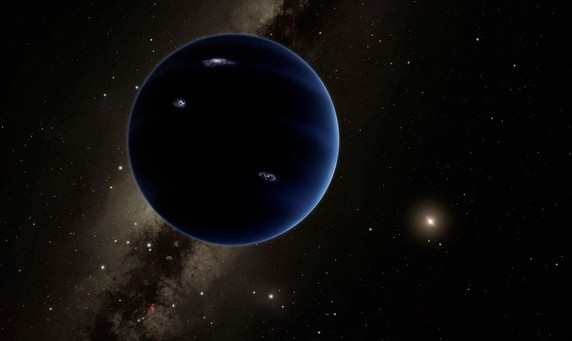
Artist’s impression of Planet 9 together with our sun, so far away it looks like a bright star. “Planet 9″ has not been proven to exist yet. If it does exist, it may help explain why the eight major planets of our solar system are in orbits inclined by an average of six degrees to the equator of the sun.
The eight major planets in our solar system are in orbits inclined at an average of six degrees to the equator of the sun. This is a long standing mystery in astronomy.
There are several possible explanations including
Astronomers are interested in this because if they find planet 9 they can check to see if it is heavy enough and in the right orbit to tilt the solar system by the amount observed. The other explanations are very hard to test and verify.
If it's planet 9, it happened over billions of years. Nothing noticeable is happening right now, and it is to explain a long standing puzzle in astronomy that we've known about for ages, it's not a new observation.
Details here Did the Mysterious 'Planet Nine' Tilt the Solar System?
Many Nibiru enthusiasts claim that Planet 9 - a hypothesized planet way beyond Neptune - is the same as Nibiru - a planet that they claim comes into the inner solar system every 3600 years and is currently behind the sun and has been hiding behind it for many years and is about to jump out from behind it and hit Earth.
You can check this for yourself whether these ideas are at all similar.
This is the suggested orbit for Planet 9 if it exists
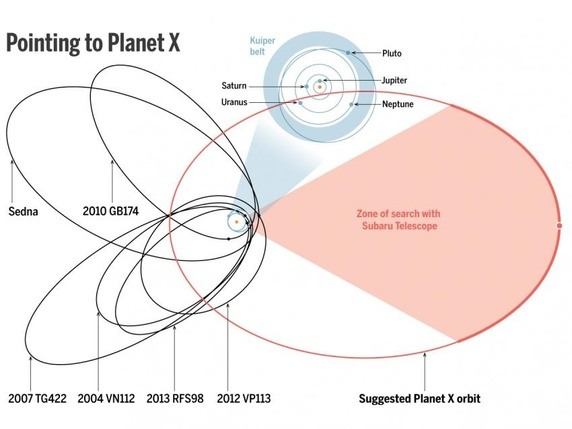
It’s that big red oval. Now do you see the blue circle in the middle? That’s the orbit for Pluto and Neptune. Our entire solar system is inside that circle. So the proposed orbit does not go anywhere near Earth, it doesn’t even go anywhere near Neptune, the most distant of the gas giants from Earth. Its closest point is around 200 au so over six times the distance to Neptune (of 30 au) and its furthest point is 1200 au or 40 times the distance to Neptune from the Sun.
The zone of search shows the part of its orbit where it could be and still remain hidden to us - if it was closer to Earth we'd have seen it already.
So, the people saying that this is Nibiru are wrong.
The scientists who hypothesized Planet 9 don’t have any proof that it exists. They are currently searching to try to find it. For more about this, see
Why This New "Planet X" Is No Threat To Earth :).
For more debunking see also Debunking Doomsday - Nibiru, Pole Shift, California falling into the sea, Supervolcanoes, black holes, … - idea for new online / kindle book.
Debunked: Mystery as huge blue spherical object is captured by NASA cameras (Daily Mail)and Mysterious ‘sphere’ spotted in NASA’s Sun images not so bizarre after all
This is in imagery from NASA’s Stereo A satellite which is currently nearly the other side of the sun from Earth taking photographs of the sun looking in our direction. Dazzathecameraman explains what happened:
So - the camera overheated, and shut down, which then confused the software which superimposed an image from another camera, rotated 90 degrees and possibly flipped, on its video stream output.
Here is the link to the corrupted artifacts page STEREO he mentions in the video.
Advice for journalists - when reporting something like this - these sites have contact details, ask them first before rushing your story to press.
I have links to the faceboook groups he mentions as well as my Doomsday Debunked group on the support page Where can I get support if I’m scared of Nibiru / Doomsday maybe even suicidal?
Written Nov 20 CommentShareThis image is often shared as an ancient Sumerian depiction of Nibiru. That’s Sitchin’s interpretation.

They point to the eleven dots around a central larger dot upper middle left. Sitchin claims that this represents twelve planets - which includes, he says, our Moon Uranus, Neptune and Pluto (first discovered in the eighteenth, nineteenth and twentieth centuries) and an extra planet Nibiru which we haven’t yet discovered.
However there is nothing on the tablet to indicate that it is anything to do with planets.
The text on the seal just says
“Dubsiga, Ili-illat, your/his servant.”
The usual interpretation is that the twelve dots represent twelve deities - in a polytheistic belief system rather like the polytheism of the ancient Greeks.
For details see VA243 seal
They did do some astronomical observations. Including a very early series of observations of Venus - the brightest object in the sky after the Sun and Moon.

Venus tablet of Ammisaduqa - shows the times when Venus disappears behind the sun in the evening, reappears as a morning star, disappears as morning star and reappears in the evening, over a period of 21 years.
This is impressive astronomy for so long ago, especially that they recognized Venus as the same object in the evening and morning sky.
But the idea that they were aware of Pluto or planets beyond what we know of today just goes way way beyond this. Venus is the brightest object in the sky after the sun and Moon. Pluto is so faint it required a long search using early nineteenth century telescopes to find it. It's not remotely visible to the naked eye. They would not have known of Uranus or Neptune either - both just possibly might be seen by naked eye if you have superb eyesight on a very dark night but would be indistinguishable from the very many other very faint stars. Uranus was spotted several times by astronomers with telescopes before it was recognized as a planet, just labeled as a star.
And, if they knew about Pluto and some even more elusive distant planet we haven’t seen, why didn’t they know about Saturn’s rings also?
Ceres and Vesta are easier to see, but again, would just be mistaken for very faint stars if you don't know what they are. Nobody recognized them as asteroids until the nineteenth century.
They also didn’t know about Jupiter’s moons - you can see them without a telescope if you have excellent eyesight, by blocking out the light of Jupiter, e.g. behind a building. They are easily bright enough to see, and we normally don’t see them because Jupiter is so much brighter.
As for the idea that it is ancient knowledge due to their contact with extraterrestrials - well why then didn’t they learn a bit of elementary maths from them? The Sumerians used a clumsy system of “unit fractions”. It was advanced for their time but they couldn’t notate a general fraction like, say, 5/7. Instead they worked only with fractions of the form 1/n e.g. 1/3, 1/4, 1/5 etc and a few special cases of 2/n. Is that what you’d expect of people who had been in contact with extra terrestrials? And no knowledge of zero, etc. Didn’t know how to work with negative numbers in the way we do. The ancient maths is very very rudimentary - amazing how long it took for us to develop the most basic ideas in maths. No sign at all of it being “jump started” by contact with extraterrestrials.
Ancient civilizations may well have had wisdom in other ways that we lack or have forgotten. But when it comes to either maths or astronomy, forget about it. No signs at all of ancient wisdom there.
They could however make observations of supernovae, comets, meteorite impacts too. Though they didn’t know what they were, the ancient observations of that sort are useful to us now, because they spotted ephemeral events that we can no longer see today. For instance the Chinese in 185 AD observed the supernova SN 185 - Wikipedia
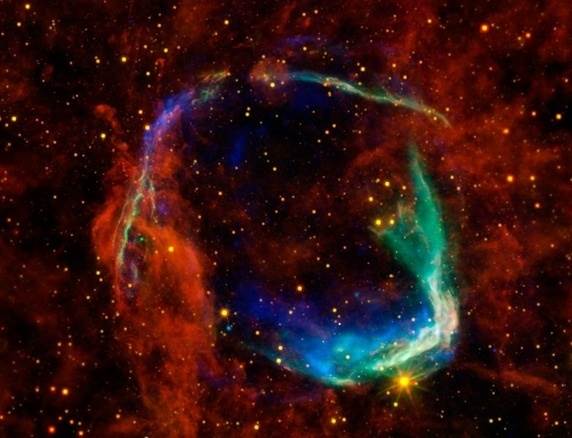
RCW 86 - the remnants of the supernova explosion which the ancient Chinese observed in 185 AD.
Summary: This is a very distant “failed star” brown dwarf orbiting an orange dwarf star. It is nowhere near our solar system
I can understand the confusion, if you read the announcement they never actually say how far away it is: NASA Space Telescopes Pinpoint Elusive Brown Dwarf - and the illustration talking about a “Foreground brown dwarf” can easily create the impression it is in our solar system.
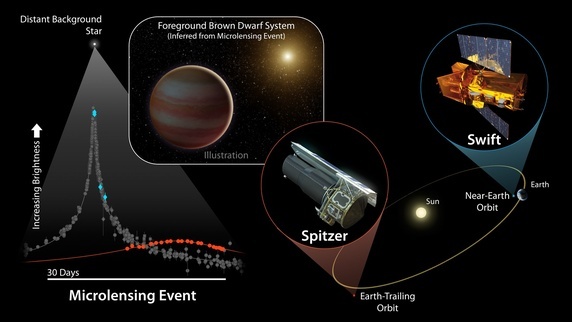
However, if you read it carefully, it’s clear that it's a brown dwarf orbiting a distant orange dwarf (K-dwarf). There are many brown dwarfs known but this one may possibly orbit especially close to its host star which is the main point of interest. But there again it might not, they had two possible solutions, at a distance of 0.25 au or 45 au. So it’s a rather preliminary announcement.
“By combining data from these space-based and ground-based telescopes, researchers determined that the newly discovered brown dwarf is between 30 and 65 Jupiter masses. They also found that the brown dwarf orbits a K dwarf, a type of star that tends to have about half the mass of the sun. Researchers found two possible distances between the brown dwarf and its host star, based on available data: 0.25 AU and 45 AU. The 0.25 AU distance would put this system in the brown dwarf desert”
A K dwarf there means an orange dwarf star - a bit smaller than our sun but not so small as the red dwarfs. The smaller the star the more common it is, so orange dwarfs are very common.
So - they found a brown dwarf “failed star” orbiting a distant orange dwarf star.
Then the rest of the announcement is about parallax. They used two space telescopes, Spitzer which trails the Earth in the same orbit as us but, as far away from us as the Sun, and Swift which orbits Earth, to observe the same background star. They spotted a microlensing event - which means the star got brighter as a result of something passing in front of it. That’s because whatever passed in front of it bends spacetime slightly and so acts as a lens through general relativity - all planets and stars do this. Anyway - this causes it to magnify whatever is behind it and any stars behind it get brightened slightly.
By observing this from two different vantage points they should be able to find a distance to the object in future. But they didn’t observe any parallax this time, meaning that it is too far away for its distance to be measured in that way.
So - it helped them to determine what the limits are - how close an object has to be for them to find its distance through parallax. This brown dwarf was too far away for the technique to work.
Written 51m ago CommentShareThis is one of the videos.
This video and story seems to date back to 1999 when amongst other things he claimed that this planet would be visually the size of the full Moon by August 1999
Tribute to the memory and work of the great Chilean astronomer CARLOS MUÑOZ FERRADA
That’s full of nonsense. For instance
“ it was rediscovered in the 80s by the orbiting infrared telescope IRAS, whose head was Dr. Robert Harrington, supervisor of the orbiting observatory of the North American Astronomical Agency (NASA).”
IRAS did not discover any planets. See Debunked: The IRAS infrared satellite found Nibiru in 1983
Robert Harrington didn’t have anything to do with IRAS as far as I know, and his hypothetical “planet X” was disproved a few months before he died when Myles Standish recalculated the mass of Neptune based on the measurements of the trajectory of Voyager as it flew past Neptune. See Debunked: NASA has been tracking “Planet X” for decades and Debunked: Astronomers get murdered by the secret agencies if they “speak out” about Nibiru
The video claims amongst other things that he discovers comets. But he is not in this list of the amateurs who discovered comets from 1978 onwards - even to this day though most comets are found with large automated professional programs, amateurs still find a few each year. But not him.
Also he isn’t in the Wikipedia list of discoverers of comets Discoverers of comets
Astronomically his orbit doesn't make any sense at all.
Yes, it would be possible for one star to orbit another and a planet to orbit both of them at least for a while - that's a "distant retrograde orbit". Such orbits are stable for a fair while though not for billions of years. The asteroid return mission suggested by NASA was to return a small asteroid to a similar distant retrograde orbit around the Earth and the Moon.
But not to have three speeds 92 km/sec, 300 km / sec and 76 km / sec - it would have a continuously varying speed.
Also - it's just not how astronomy is done. Astronomers don’t try to do all the work themselves. That makes no sense. If he'd discovered a large comet, he'd have submitted it as an observation to the minor planet center. They then would send an email around to all other astronomers to track it. Then he'd be listed as its discoverer and everyone would know about it and they'd all join in tracking it and refining its orbit.
Also - comets are not named after the person who calculates the orbit, not any more. Halley’s comet was named in that way as were a few of the earlier comets but ever since the early twentieth century they are named after their discoverers. So the claim in the video that they are now named after the astronomers who calculate the orbits and were previously named after the discoverers gets it back to front.
According to this article he predicted a three day eclipse in August 1999, which obviously never happened and again doesn’t make astronomical sense. It’s in spanish - this is with google translate:
“At the end of the 1940s the Chilean Carlos Muñoz Ferrada supported the strange hypothesis that There would be a three-day eclipse on August 11 1999, this event would be triggered by a Strange planet-kite that would approach Dangerously to the Earth12, which generated in Some people some expectation. Since Then, sporadically notes Newspapers in several national newspapers. in 1986 During the passage of the comet Halley, La Prensa Gráfica published a notice of Muñoz Ferrada in Where he speaks of the "influence" that the comet would bring to the earth. A similar news was released again In La Prensa Gráfica on October 7, 1991, with Responsibility of journalist Adrián Roberto Aldana, under the title "Evidence of God Will constitute the possible events during eclipse 99 ", evidently the supposed eclipse of three Days never took place.”
It is just nonsense through and through. If anyone happens to know who Carlos Muñoz Ferrada really was, do say!
Written Nov 17 CommentShareSummary Earlier this year, astronomers found a dwarf planet in a strange orbit. They called it “Niku”. Conspiracy theorists claim it is Nibiru - this is just another example of them claiming any new astronomical strange discovery as “Nibiru”. It is no threat to Earth.
Details:
Example story to debunk: NASA confirms that planet Nibiru is falling towards Earth
This is the orbit of Niku:

As you see it is a very strange orbit. It’s almost perpendicular to the solar system and actually goes around the sun in the opposite direction to the planets, so “retrograde”. It crosses the ecliptic (the plane of most of the planets) just inside of Neptune’s orbit.
But it never comes anywhere close to Earth.
Find out more: Retrograde Rock "Niku" Defies Orbital Trend - Sky & Telescope
Meet Niku, the Weird Object Beyond Neptune That Nobody Can Figure Out
(471325) 2011 KT19 - Wikipedia
Written Wed CommentShareI’ve been asked about this as yet another internet rumour, someone has said that Nibiru will definitely hit Earth some time between January and March 2017. I’d like to explain how you can immediately dismiss any rumour of this sort, where a range of dates is given for an impact of any sort.
The thing is that the Earth moves a quarter of the way around the Sun between January and March.
It moves 30 kilometers every second - that means it moves by its radius in 3.55 minutes. If astronomers found out that a comet was headed towards Earth and they got the time of the encounter wrong by just under 4 minutes that turns a dead on center hit into a miss.

The famous Earth Rise photo taken by the crew of Apollo 8 from orbit around the Moon. Earth moves around the sun so quickly that it traverses a distance equivalent to its own radius in less than four minutes. If something was headed towards the Earth from outer space and you got the time of the encounter wrong by as little as four minutes, that turns a direct hit into a miss. With this background it is absurd to predict any encounter with Earth if you don’t know not only which day it will happen but also the exact time on that day, accurately to within minutes.
So now the Nibiru enthusiasts are saying that they believe that someone just by observing a bright light in the sky that no astronomers have been able to see knows that it is going to hit Earth between January and March next year.
Can you see how absurd that is? Astronomers when they predict flybys of Earth predict them accurately to within a minute or so. They have to as otherwise they wouldn't know that it is going to be a flyby.
Another idea that comes up so often is that Nibiru is predicted by ancient astronomers. They certainly could have had advanced philosophical ideas. But as for maths and astronomy - no, doesn't seem likely that they ever had advanced far in those fields.
First their maths - though advanced for their time - was rubbish by modern standards. The Sumerians, amongst the most advanced mathematically in the entire ancient world, had this clumsy way of thinking about ratios. They couldn't write 7/10 - for some reason had never thought of the idea of "seven tenth parts" in maths. Instead they would write it as 1/2 + 1/5. I.e. a half and a fifth. Imagine trying to multiply two ratios in that system! Even adding ratios is tricky. They didn't have negative numbers yet, or zero, or logarithms, or hardly any maths at all by modern standards. So were severely handicapped if they ever needed to calculate anything in astronomy.
Also -they didn't know that the Earth was a planet - that was a way out idea suggested by one Greek astronomer. They thought meteorites came from volcanoes, or possibly picked up by strong winds. They thought comets were in the atmosphere, a bit like clouds.
They didn't know about Ceres and Vesta, both of which are visible in the night sky if you know where to look, as very faint stars they could have seen on a dark night. As is Uranus which was plotted as a faint star, several times in different positions on night sky maps before it was shown to be a planet.
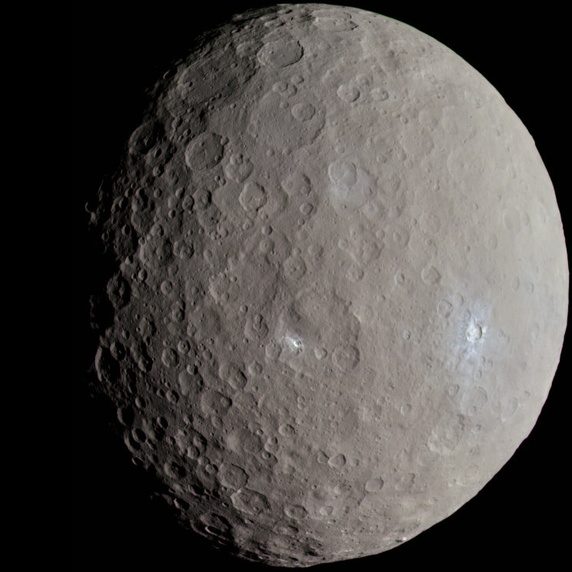
Close up photograph of Ceres by the Dawn spacecraft. It’s a faint naked eye object but is hard to distinguish from the many faint stars in the sky. Ancient astronomers never noticed that it moves and so never discovered it as an asteroid / dwarf planet.
Similarly they also never noticed that Jupiter has moons either, again something they could have found out with naked eye observation if they had blocked out Jupiter.
They didn't know about the moons of Jupiter. If you hide Jupiter with something, say behind a building, a keen eyed astronomer can see its moons. So in theory they could have spotted them, but never did.
So how could the ancient astronomers know about the even fainter Neptune (on the very edges of visibility- theoretically possible for a very keen eyed astronomer in perfect conditions) and even Pluto which is never naked eye visible?
If you think that they were told about this by extra terrestrial astronomers visiting Earth - then why did they not tell the Sumerians about Ceres, or the moons of Jupiter or Saturn's spectacular rings?
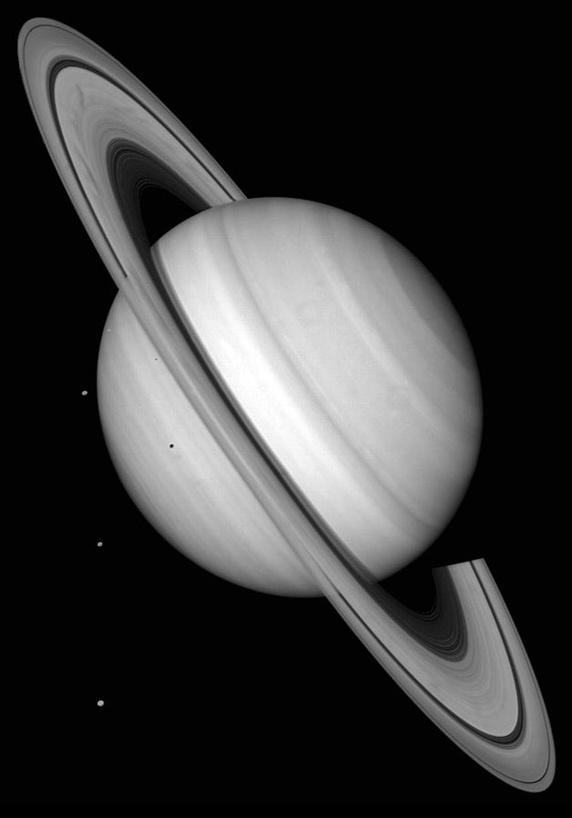
Saturn, with three of its moons, Tethys, Dione and Rhea from top to bottom, and its spectacular rings. If you believe that we were visited by extra terrestrials that told us about extra planets in our solar system that we haven’t discovered yet, as Zacharia Sitchin believed - then why didn’t they also tell us about the spectacular rings of Saturn amongst other things?
Or tell them that the moon is cratered? When Galileo turned his telescope to the moon he expected to see a perfectly smooth sphere, the craters were a great surprise to him.
And don't you think we'd have picked up a bit of maths from them - at least some simple ideas like ratios or negative numbers or zero?
This is not to show any disrespect for ancient texts. It is just that astronomy is not their strong point. Except for occasional observations such as observations of supernovae which we can now interpret.
Yes they could predict solar eclipses by observing patterns to them. But they could never have produced a map like this:
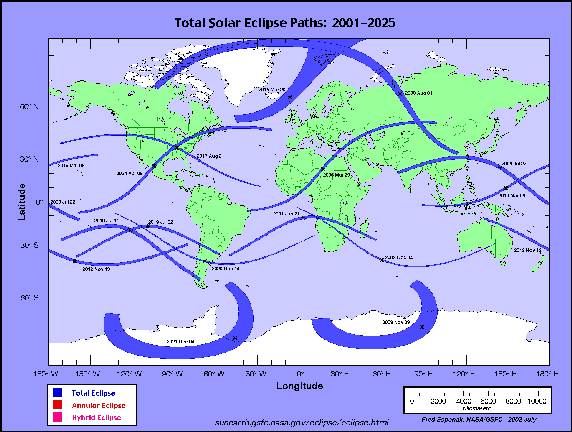
So why expect ancient astronomers to be able to predict things we can't predict ourselves?
"Wormwood" just refers to an enigmatic passage in the book of Revelation in the Bible which could mean almost anything:
And the third angel sounded, and there fell a great star from heaven, burning as it were a lamp, and it fell upon the third part of the rivers, and upon the fountains of waters; And the name of the star is called Wormwood: and the third part of the waters became wormwood; and many men died of the waters, because they were made bitter. - (Revelation 8:10-11)
For more about it see the wikipedia article: Wormwood (Bible) - Wikipedia

The book of Revelation is an enigmatic text which wasn’t included in the original version of the Bible and it is easily interpreted in so many different ways that the Eastern Orthodox church has excluded it from the scriptures that can be read from the pulpit (its “lectionary”).
When you read passages like that, bear in mind that back then the leading idea about planets was that they are embedded in crystalline spheres that spin around the Earth, and that the stars also were embedded in a big sphere that span around Earth once a day, and the Sun was in such a sphere too.
They didn’t know about asteroids. They thought that meteorites came from volcanoes or tornadoes and strong winds, blown into the air. They thought comets were an atmospheric phenomenon. They had no idea about modern astronomy at all.

Ernst Chladni - Wikipedia - first to propose that meteorites came from space, in 1704. His work was initially regarded with ridicule
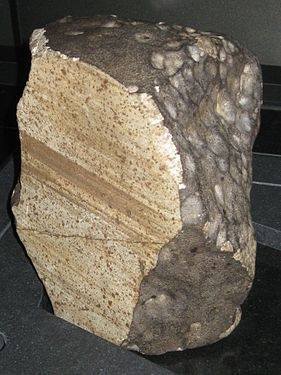
The Wold Cottage meteorite - Wikipedia - first meteorite to be recognized as extra terrestrial by some scientists, in 1795
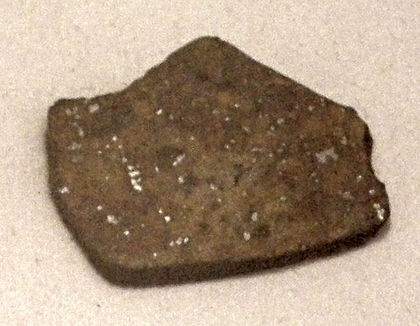
Fragment of the L'Aigle meteorite shower. These were the first meteorites to be widely recognized as originating from outside of Earth. The fall happened on 26th April 1803. This convinced most scientists of his day that Ernst Chladni was right, meteorites come from outer space
Also the book of Revelations is written in a visionary style. It’s not at all clear that these are supposed to be events that actually happen or will happen. They could also be vivid images conveying some other message e.g. about spiritual practice. There are many ways to interpret it. According to many interpretations it describes events that have already happened, or already happened in part. For instance it may describe the events of the presentation of first century Christians.
Whatever it is about, it is intended as a message of hope for Christians. And for non Christians, it is not a sacred book for you, so why pay any attention? And for astronomers, well the Bible is not noted for its astronomy, indeed hardly covers astronomy at all. That’s not its strong point. It has many virtues but it is not strong on astronomy or science. It is not even of historical interest to astronomers. Would you use the Bible to predict an asteroid flyby or an eclipse or to navigate spacecraft to another planet or for anything astronomical?
See also Debunked - The world will end because the Bible (or some other sacred book) says so
This goes back to a couple of things. First Robert Harrington was one of many astronomers who have hypothesized that there may be extra planets in our solar system orbiting well beyond Neptune. These would be of no more danger to Earth than Neptune or Jupiter, in other words no danger at all. Astronomers call all such planets “planet X”, where X stands for “unknown”.
So it’s not a single planet but many such hypotheses for different planets. The first “planet X” was Pluto. Though you could make a case for calling Neptune the first “planet X” since although the word wasn’t in use at the time, it was discovered in the same way by looking at the orbits of the other planets and deducing that there must be an extra planet beyond Uranus.
So anyway, they often elaborate the story by saying that Robert Harrington discovered planet X in 1983 and was murdered by NASA or by the government, in order to hide his discovery from the general public.

Robert Harrington, photograph from his obituary Bob Harrington Obituary - he was not murdered. He died of throat cancer six months AFTER his theory of an extra planet beyond Neptune was disproved by Myles Standish using data from the Voyager 2 flyby of Neptune.
The truth is that Robert Harrington did indeed hypothesize a planet X beyond Neptune. His paper is here: THE LOCATION OF PLANET X. As you will see at the end, on page 1478, he suggested a possible planet with, as one example, a semi-major axis 101.2 AU and eccentricity 0.411 which makes its perihelion 59.607 by this Ellipse Calculator, so the closest to the Sun it would get is one and a half times the distance to Pluto. He made this prediction on the basis of anomalies in the orbits of Uranus and Neptune.
However, six months before his death, Myles Standish used new data from the Voyager 2 flyby of Neptune. As a result the mass of Neptune was revised downwards by 0.5%. The data he had been using to hypothesize planet X depended on a more massive Neptune and when you redo the calculations with Neptune a bit lighter,the need for planet X vanishes. See Planet X - no dynamical evidence in the optical observations
Myles Standish’s article was published after Robert Harrington’s death, but submitted long before it and Robert Harrington would have known that his theory was disproved when he died.
And we know for sure that he was not murdered. He died of cancer of the throat. His obituary is here: Bob Harrington Obituary - that’s the more detailed obituary from his observatory. The NY times obituary is here, just says he died of cancer: Robert Harrington, 50, Astronomer in Capital
With all this nonsense about Nibiru, some people have done what they intended to be harmless pranks, just to have their videos and images propagated all over the internet as real.
Dramatic Chipmunk :)
Professor Kaplan - abducted under mysterious circumstances while observing Nibiru
If you read the conspiracy stories about Nibiru, you've probably heard of the mysterious kidnapped and murdered Professor Kaplan, and the chip with a recording of his observations of Nibiru which was found by someone and uploaded to YouTube.
Here "Professor Kaplan" talks about why he did this hoax video originally as a silly prank for his pals, and his attempts to get it taken down - which only fueled more conspiracy theories about the video.
As he says, he isn't actually a professor, he's an astrophysics student doing a doctorate and has to wait for fifteen minutes for long exposures at his observatory. He did it as a joke during one of those long waits twiddling his thumbs with nothing to do. So he wasn't wasting precious observatory time or his own time when he did it. It looks very authentic because it is not a set, it is recorded at an actual observatory. But he didn't do it for YouTube or for public viewing.
He left two clues that it is a joke in the video including an email allegedly from someone else shown as addressed from "Me" to "Me" in a close up shot, and a quiet chuckle at the end of the video as he gets "abducted". Plus of course him being still alive and giving a skype interview after the joke "abduction" at the end shows it is a joke :)
The idea anyway doesn’t make sense. If the secret agencies are going around the world murdering people for talking about “Nibiru” then how come there are so many videos about it on YouTube? Entire channels that produce video after video, earning their channel owners thousands of dollars a month of ad income. Occasionally someone will put up a video with a comment saying that they are doing this bravely and expect to be murdered as a result, and the video taken down. But that is just them tying in to this story as yet another hoax / prank and the videos are not taken down.
This is just yet another silly Nibiru story. See also Debunked: NASA has been tracking “Planet X” for decades
Written Mon CommentShareThis is because if you read the Nibiru websites and watch the Nibiru videos you will learn that if you see a bright light, anywhere in the sky, East or West, North or South or directly overhead, or anywhere else, any time of day or night, and you don’t know what it is, that it is a planet Nibiru unknown to astronomers (or hidden by them). If you believe this, and if you aren’t very familiar with the sky, are not an astronomer and don’t know what to look out for, you will get plenty of sightings of “planets”. You will see
You’ll see many different bright objects in the sky and if you happen not to recognize one of those you’ll be convinced you’ve seen “Nibiru” and upload a photo or video of it.
You haven’t seen a planet. You’ve just seen a bright light. If they told you that every bright light you don’t recognize is Santa and his sleigh, and you believed them, we’d have loads of reported sightings and uploaded videos and photos of Santa.
See also: Why the idea of Nibiru seems non refutable - and how does astronomy really work?
Written Tue CommentShareNemesis and Tyche are real hypotheses from Astronomy though a somewhat out of date one. They are amongst the many ideas for a “planet X” - an extra planet, or in this case a star or brown dwarf, orbiting the Sun. It’s certainly possible that our sun has a distant companion, as many star systems are binary (indeed many are also in systems of three or more stars). Sometimes the companion star or brown dwarf is a long way from the other star.
Most of the brightest stars in our sky are binary. But our sun is actually a rather dim star and only about half of sun-like stars are binary and in the case of the even smaller red dwarfs, it seems that most are single (though these figures are disputed and hard to be sure about). See Astronomers Had it Wrong: Most Stars are Single and Binary Star Systems: Classification and Evolution
And anyway our sun is unusual in many ways so why not be unusual in this way too? Probably neither of these proposed stars exist - I think that’s the view of most astronomers. If Nemesis was real it would mean there is going to be an increased number of impacts on Earth due to redirected comets from the very distant Oort cloud, in the future, yes, but that future is 15 million years into the future (various figures there), not next month. The Tyche hypothesis is similar to Nemesis but in a somewhat different orbit that would not lead to extra impacts on Earth at all in the future.
As a result of searches, with Tyche ruled out and most of the Nemesis ideas also ruled out, all that is left of these ideas is the possibility of an unusually cold brown dwarf orbiting 1.5 light years away. However the WISE search was an all sky search, covered entire sky three times, and turned up brown dwarfs ten light years away so it is rather unlikely that they missed on as close as that.
The survey actually covered the two polar regions in more detail than anywhere else, because of the way it swept the sky. Each sweep it did of a fraction of the sky photographed both polar regions, so it covered them multiple times. So it covered the entire sky three times and the polar regions many more times than that. If “Nemesis” does exist, it will be very interesting for astronomers, but of no danger at all to Earth for at least 15 million years. And by then, well maybe we can deflect away any comets it sends our way long before they reach Earth, if the hypothesis is true which is seeming increasingly unlikely.
Nibiru conspiracy sites generally confuse Nemesis with Tyche and claim they exist and are the parent star for “Nibiru” (in other words that they orbit the Sun with an orbital period of 3600 years and they have a planet orbiting them as well).
Here is an example video about Tyche as parent star for “Nibiru”.
Notice that the news casts are all a bit old fashioned in style? Tyche was proposed in 1999 to explain certain patterns in the orbits of comets - but was proved not to exist in 2014 using results from an ultrasensitive infrared telescope called WISE.
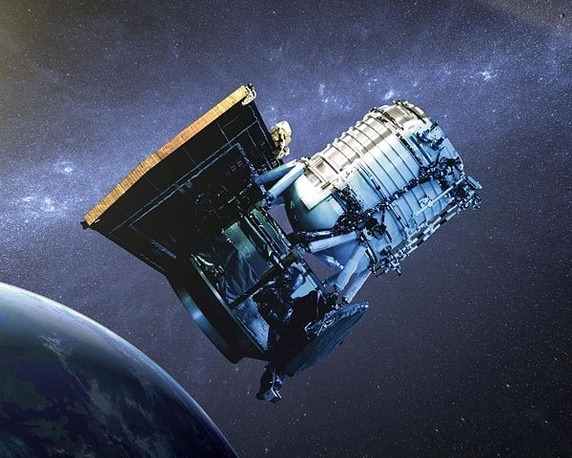
Artist's impression of the NASA Wide-field Infrared Survey Explorer. Researchers proved that Nemesis and Tyche can't exist in results published in 2014, using data that it collected in 2010 to 2011.
It was an all sky survey and has ruled out the possibility of
The original paper is here
In this video, they seem to confuse this with Nemesis - a hypothesized second star which could have lead to excess comets every 26 million years or so if it existed. The hypothesized Tyche was actually given a new name in order to try to avoid exactly this confusion, since it would be incapable of causing these comet "storms".
"Such an object would be incapable of creating comet “storms”. To help mitigate popular confusion with the Nemesis model (Whitmire and Jackson ( 1984), Davis et al. ( 1984)) we use the name recently suggested by Kirkpatrick and Wright (2010), Tyche, (the good sister of Nemesis) for the putative companion."
Persistent Evidence of a Jovian Mass Solar Companion in the Oort Cloud, page 4 (introduction)
Anyway, for Nemesis, the idea was an excess of comets, not now, but millions of years in the past and future. The last extinction in their list is eleven million years ago, so the next one would be about fifteen million years into the future if they were right. See Periodicity of extinctions in the geologic past.
There have been many searches for Nemesis which have never turned up anything. It was finally conclusively proved not to exist by that same WISE survey that disproved Tyche. This survey turned up new brown dwarf stars many light years from Earth, and as a result of this ultra sensitive search, it doesn't seem that our sun can have a companion star or brown dwarf at all, though until around 2014 or so you could still suppose that it did.
There was no way that there could be a new red dwarf star 15 au from the sun as they say in the video, even before this search. That's closer than both Uranus and Neptune (19.2 and 30.1 au respectively).
And you do see red dwarfs through an ordinary telescope. They are indeed fainter than most stars. None are easily visible to the naked eye, but that is because they are so far away. The brightest red dwarf is Lacaille 8760 which is magnitude 6.67. I don't know if anyone has done it - but at that brightness it might just be visible to a keen eyed observer from a very dark site. The closest red dwarf is Proxima Centauri. which is also the closest star known to Earth. It is visible through small telescopes.
But that's just because they are so very far away. Red dwarf stars are just stars, at fairly hot temperature what's more of a few thousand degrees - 3,800 K for instance for Lacaille 8760. Hotter than a potter's kiln. They are brighter than our sun if you orbit close enough to them, and since they are the most common type of star in our galaxy as well, they are one of the key targets in the search for habitable worlds. See Planets Orbiting Red Dwarfs May Stay Wet Enough for Life. And Habitability of Red Dwarf Systems.
He was probably thinking about brown dwarfs. Those are on the borderline between planets like Jupiter and red dwarfs. They don't shine by their own light like a star but are large enough to have a tiny bit of nuclear fusion at some point at least in the early stages of their formation.
They are not at all invisible, but when they are far away from any other star, then they don't emit any light themselves so are black in visible light. They are however warmish (-100 °C or so, not what we'd call warm, but far warmer than than the background night sky). That's because they still retain the heat of formation and early fusion. So, even a brown dwarf in total darkness, far from any sun, is bright in infrared and they search for them with infrared telescopes.
Bring a brown dwarf close to a star and it will shine by reflected light in the same way Jupiter does, depending on its albedo. Some may be very dark in the visible wavelengths, but they'd still be easy enough to see by reflected light. For instance the Moon is actually as dark as asphalt but looks bright because we see it illuminated by full sunlight against a dark night sky.
All brown dwarfs are about the same size as Jupiter, incidentally, however heavy they are - a remarkable property. As they get heavier they also collapse in on themselves a bit so don't get much larger.
Anyway WISE has already ruled those out also. It can detect them out to around 10 light years away, and did indeed find brown dwarfs, but none close to our sun. Incidentally it has now been re-activated as NEOWISE and is searching for Near Earth Objects, where it is especially useful for finding dark ones that are harder to spot from the ground but just as visible in infrared as the bright ones.
The name Planet X was not invented by NASA, as they say in the video. Instead, it goes back to Percival Lowell in 1905 and the phrase is used nowadays as a general term to describe a planet you are searching for which you haven't yet proved exists. So if an astronomer, or NASA talks about a Planet X, then that is a short hand to say that they don't know if it exists yet. The very fact that they called it Planet X means they didn't have evidence yet that it existed.
That's all in the first five minutes of the video. I am only an eighth of the way through it and if I debunk everything he says this will surely take very long. I haven't yet come across a single correct statement in it I think. Well about astronomy anyway :).
Written Tue CommentShareOnce you get caught up with this idea that Nibiru exists, you are likely to find that there is no way to refute it. You see numerous videos and images shared on line that they say confirm it. The astronomers will say it is nonsense, that the whole idea is BS, but you don’t understand their arguments. Experts on Sumerian say it is Jupiter. But why can’t it just be refuted in some easy way?
Well, let’s look at the instruction you are given by the conspiracy theorists. The message is something like this:
“Look in the sky, if you see a bright object that you don’t understand, wherever it is in the sky, that’s a planet called Nibiru. If you don’t see anything, keep trying and you will see it eventually”
That’s guaranteed to get lots of false observations. The main problem with this as science is that it doesn’t give you any way to refute it, it’s got irrefutability built into it.
If they don’t spot something bright (apart from the Sun or Moon), as is the usual case of course, they say this just means that Nibiru is hiding.
Here are some examples of images shared as “Nibiru”
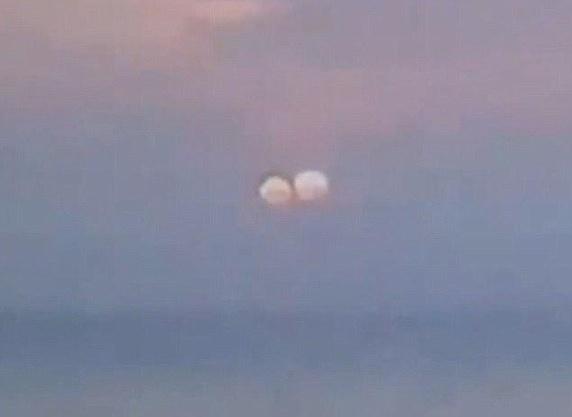
This is shared as “Nibiru”. It’s probably an offset lens reflection.
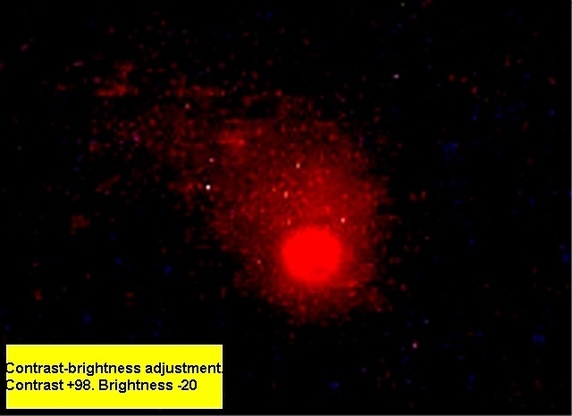
The white dot in this image is supposed to be Nibiru. The author of it - or at least someone claiming to be the author - posted to forums soon after saying it was a hoax. It would be a very easy hoax to do, just add a white dot to a photo. But many didn't believe him and it is still available online as an alleged photo of Nibiru.

This is an artist’s impression of a double sunset on an exoplanet, often shared as “Nibiru”
You’ll find many more such images shared as “Nibiru” and there is no consistency or pattern to them. "Imaginary Bullshit Planet" Nibiru - Lens Flares, Sun Mirages, Hoaxes & Just Plain Silly
They also monitor astronomical news and if astronomers announce that they have indirect evidence of a planet orbiting way beyond Neptune - that’s Nibiru.
They also search online photographs, for instance Google Sky and if they find something unusual there, instead of looking it up to find out that it is, say the Peanut Nebula - they just use their blogs to announce to the world that they have found Nibiru.
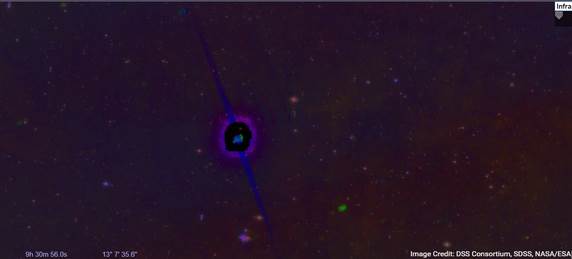
The Peanut Nebula - one of many deep sky objects shared as “Nibiru” See Debunked: The IRAS infrared satellite found Nibiru in 1983
So for them, there are countless ways to “prove” Nibiru exists.
Meanwhile, because nobody ever makes any predictions about where you should look in the sky to see this “Nibiru” then there is no observation you could do to prove Nibiru doesn’t exist. Even if you just see a bright patch on a cloud that proves that it exists, for these people. No need to check to see if anyone else saw a bright patch in that same direction either. After all anything bright and unexplained is Nibiru no matter where it is in the sky, so what’s the point in checking where someone else saw it?
Is it no surprise that following this approach many people think they have proved that it exists? They don’t know to check for lens flares or offset lens reflections. Many of them have never paid much attention to the sky before. If you start paying close attention to the sky for the first time in your life, then you are bound to notice many things you never noticed before and wonder what they are. If you follow the astronomical news for the first time in your life also, you will find many astronomical announcements that you don’t understand.
Instead of a sense of wonder, and awe, and a quest for knowledge, to try to find out about our universe - if you follow the Nibiru instructions, you spend all your time whenever you gaze at the sky, day or night, looking for confirmation of Nibiru.
They treat planet spotting as like bird spotting, looking out for some rare elusive creature such as the Bittern, a shy bird that is well camouflaged and hard to spot in thick grass:

However planets don’t behave like birds. There is nowhere for them to hide except behind the sun, and they typically can only hide behind the sun for about one month of the year.
Also if you see a planet, then everyone can see it, so long as they have a clear sky. It’s not possible for a planet to be visible at sunset one day, but not visible the day before or the day after and not visible by someone else who lives a few hundred or thousand miles away.
That’s why I suggest, if you have got caught up in this nonsense, that you try your hand at a bit of simple star gazing. Learn how astronomy actually works. Start following the planets. This is something you can do even with naked eye observation. Learn to find the pole star. Look up the positions of the planets in the sky. Read some basic astronomy books, get astronomy magazines, join your local astronomy club, make friends with people who watch the sky as astronomers. Anything of that sort will help you become a bit more grounded and to understand this better. With only a small amount of experience and understanding of real astronomy, there’s no way you can be fooled by this stuff ever again.
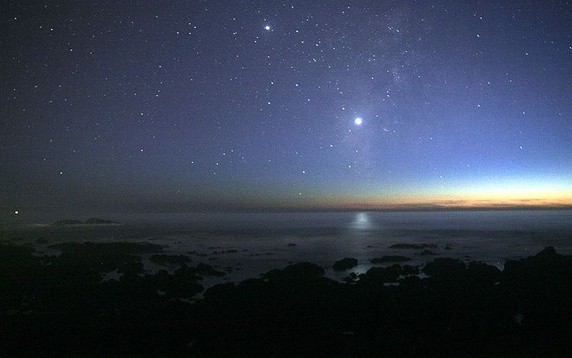
Venus reflected in the Pacific Venus is the brightest object in this view, so bright it can sometimes cast shadows and be reflected in the sea. Above it to the left the next brightest object in this scene is Jupiter. By observing real planets, you can come to understand how planets work. You can look up predictions for where they will be, any night of the year, for centuries into the future indeed. They move through the sky slowly, night after night. And if they are visible, then anyone can see them, any clear night, look in the right place at the right time and you see them. With this experience of watching real planets, you should soon come to see how absurd the Nibiru suggestions are.
Here is a sky chart, which automatically detects your location and shows the positions of the planets, the Moon, and the brightest stars in the sky
Try using those charts, and go out and observe the Moon, Jupiter or Venus or the other planets as they become visible. They appear in the sky exactly at the times predicted, in the positions predicted. That may help you get an idea of how planets work. If Nibiru was a real planet - it would have a position on those sky charts too, and we’d all be following it. Anyone would just need to look up and see it with their own eyes. The instructions would be something like this:
“Nibiru is visible in the dawn sky, rising at 03:35 (GMT) – 3 hours and 34 minutes before the Sun – and reaching an altitude of 25° above the south-eastern horizon before fading from view as dawn breaks at around 06:44.”
That’s today’s instruction for Jupiter (on Saturday 12th November 2012). Indeed, since the ancient Sumerians used Nibiru to refer to Jupiter amongst other things you can just substitute “Nibiru” for “Jupiter” and that’s probably the most accurate way to understand the term.
“In the texts that follow, Nibiru was regarded as a planet (specifically, Jupiter, but once as Mercury), a god (specifically, Marduk), and a star (distinguished from Jupiter). If you’re confused, you aren’t alone. This tri-fold (fourfold if you count Mercury) designation for Nibiru is why scholars of cuneiform astronomy have not been able to determine with certainty what exactly Nibiru is. We’ll go into the problem more in later sections. One thing is certain from the texts, though: Nibiru is NEVER identified as a planet beyond Pluto. “
The Myth of a Sumerian 12th Planet: “Nibiru” According to the Cuneiform Sources
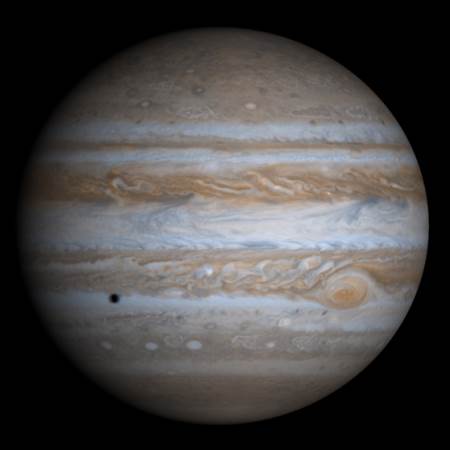
Jupiter as photographed by Cassini. The Sumerians used the word “Nibiru” to refer to Jupiter amongst other things.
So now, this is something you can confirm or refute. If you have a clear Eastern horizon go and see if you see a bright object rise in the early morning a bit before 4 am. You can also look at it’s position in the sky chart - it’s in the constellation Virgo. You can verify the prediction for yourself.
That’s how real astronomy works. If Nibiru is indeed Jupiter, then yes, its position in the sky is predicted every night of the year, and you can confirm it exists for yourself - and it’s absolutely no threat to Earth.
As for real asteroids and comets - it’s possible for them to hit Earth. But they are far smaller than planets. We already know all the asteroids of 10 km and larger that do regular flybys of Earth. None of them can hit Earth before 2100.
A comet ten kilometers in diameter, on a Nibiru like orbit would be possible but very very unlikely, around 99.999999% certain it won’t happen this century, and they are easy to spot in our big telescopes several years in advance. You’d be able to find it in a decent telescope every night except for about one month every year.
For a comet in the same plane as the other planets, near the celestial equator, everyone would see it, world wide, on every starry night. If it approaches from the south or the north, it’s viewed from an entire hemisphere, e.g. if it approaches from the North it is visible anywhere where you can see the pole star and similarly if it approaches from the South it’s visible from the entire southern hemisphere except perhaps right at the equator.
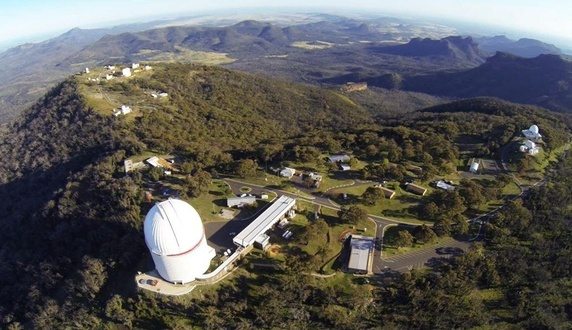
Siding Spring Observatory - the comet Comet Siding Spring - 2013 A1 was discovered by one of the telescopes in this Australian observatory a year and a half before its flyby of Mars. It was only 400 - 700 meters in diameter and was discovered a year and a half before the flyby. If there was even a small comet headed for Earth it would be discovered at least a year or so before the flyby. A larger one would be discovered many years before flyby.
Anything as big as a planet would be spotted decades before flyby and would be an easy naked eye object for years before flyby - but it is impossible for a planet to be in such an orbit because it is not stable for as long as a million years and our solar system is billions of years old. Comets can be in such orbits because there are large numbers of them, and they are so light weight they don’t destabilize the solar system in the way similar numbers of planets would.
Real flybys also are predicted exactly to the minute. The Earth moves 30 kilometers every second - that means it moves by its radius in 3.55 minutes. If a comet was headed towards Earth and they got the time of the encounter wrong by 4 minutes that is more than enough of an error to turn a dead on center hit into a miss.
So there is no way an astronomer who observes a comet as a bright light in the sky will predict a flyby or a hit, until they know its orbit so accurately that they can predict when it will fly past Earth to within a few minutes. They have to be able to do that, as otherwise they wouldn't know that it is going to be a flyby. Nearly all asteroids and comets come nowhere near the Earth - interplanetary space is vast and the Earth is tiny in comparison.
See also my Giant Asteroid Headed Your Way? - How We Can Detect And Deflect Them
You can check out the astronomical predictions on this page: Current Impact Risks. It’s ordered with the greatest risk at the top. So if the top entry is blue or white, you know for sure that there is no impact on Earth predicted through to 2100. Occasionally it has a yellow entry - that means there may be an impact but the chance is low and it is far in the future. Yellow entries normally turn white once we have more information.
See also Debunked: Ancient astronomers knew things we don’t about planets and stars
Debunked: How can the videos and photos be hoaxes when so many people believe them?
For why astronomers are sure that Nibiru is just nuts, See Debunked: Nibiru will hit Earth on [Insert Date here]
Also Debunked: A planet in a 3600 year orbit can hide behind the sun for years on end
Written Nov 12 CommentShareDebunked: NASA is getting ready to Capture Planet X Nibiru on Camera
What they are reporting there is actually an attempt to photograph the so called "Planet 9" - that’s an on going attempt that may take several years to find it, if it exists. They only have a rough idea where to look so need to take many photographs looking for a faint dot that moves between two of the frames.
This is the telescope they will use to search for it. This is just a video about the telescope, not about Planet 9:
The Planet 9 is not Nibiru. If it exists, it's in an orbit that never takes it any closer to Earth than several times the distance to Neptune, and it has to be at the furthest part of its orbit for us to have missed it so far. That's what Mike Brown is talking about.
It is particularly ironic to cite Mike Brown as an astronomer searching for Nibiru. He has written a long article saying that he will answer emails on any topic except Nibiru because it is such nonsense. This is Mike Brown's article about Nibiru: I do not ♥ pseudo-science
And this is my post that explains clearly why planet 9 is not Nibiru. Just look at the diagram for its possible orbit, and judge for yourself: Debunking: Planet 9 is Nibiru
The idea of a dark matter planet is a very far out idea, but first, normally the Nibiru people say it is invisible because it is a brown dwarf. That is easily dismissed
A brown dwarf is just a planet like any other, on the borderline between planets like Jupiter and red dwarfs.
They are planets that never got quite hot enough to shine like a star. But still got hot enough for some fusion to occur, so that they do radiate a bit in the infrared.
To say they are invisible is a bit like saying that you are invisible because you are warm and radiate in the infrared. In a dark room with no light you would be invisible to the naked eye but easy to spot with an infrared camera.

Infrared dog. Though a dog is very bright in infrared, shining by its own generated infrared light even in a pitch dark room, this does not make it invisible in visible light
You shine a bit more in infrared than a lizard does, unless the lizard has been warming itself all day in the sun, because you are warm blooded. Does that make you invisible? No.
In the same way brown dwarfs are more visible in infrared than some planets. But that doesn't make them less visible in visible light.
It’s the same with brown dwarfs. They can’t be seen when they are a long way away from any star, because it is so dark there. But they are still easy to spot in the infrared. So brown dwarfs, far from being harder to see than planets, if anything, they are actually easier to see because they shine by their own infrared light even in pitch dark. (Planets do too, to some extent, due to the left over heat from formation and radioactive materials in their core).
When close to a star they are easily seen by reflected light like any other planet.
All brown dwarfs are about the same size as Jupiter, incidentally, however heavy they are - a remarkable property. As they get heavier they also collapse in on themselves a bit so don't get much larger.
Some brown dwarfs are very dark. But our Moon is too, it’s as dark as worn asphalt, and yet is bright in our sky because the Sun is so bright and it reflects just a fraction of that light to us, but it is enough to make it the brightest object in our night sky. It does not produce any light intrinsically, it is all reflected light from the Sun. It only looks so bright because the sunlight shining on it is so very bright and because the night sky is dark.
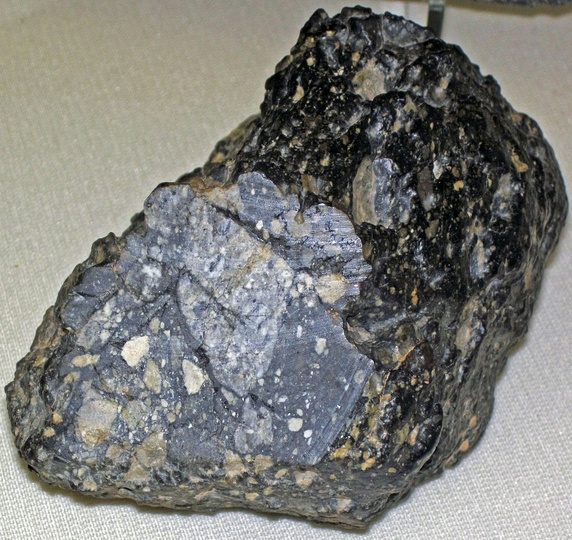
When we see the bright moon in the sky - this is what we are looking at, dark rocks as dark as worn asphalt. It looks so bright because the sunlight hitting it is bright, and because we see it against a dark night sky. This is a rare lunar meteorite, a meteorite found on Earth that comes from the Moon. Lunaite (lunar breccia)
Brown dwarfs vary a lot in how dark they are, but the very darkest brown dwarf at the distance of Jupiter would still be as bright as Betelgeuse.
This paper gives a figure. It says brown dwarfs can be from 0.4 to 0.05 for the albedo. Lower numbers there are darker. The Moon's average albedo is 0.12. So that's darker than the Moon.
A brown dwarf would be roughly same size as Jupiter (as gas giants get more massive than Jupiter they get denser but not much larger).
Jupiter's albedo is 0.343. So a brown dwarf at the distance of Jupiter would be about a seventh of the brightness of Jupiter.
Given those albedos we need to find how much dimmer it is than Jupiter in apparent magnitude. As usual I'll indent the calculation to make it easy to skip.
One magnitude corresponds to multiplying by 2.512 (fifth root of 100) for historical reasons.
So to find the magnitude of the darkest possible brown dwarf by reflected light at the distance of Jupiter, its dimmer by a factor of 0.343/0.05, or 6.86
So we want to find x such that (2.512)^x = 6.86. So x log(2.512) = log(6.86) so x= log(6.86) / log (2.512) or 2.09. So it would be 2.09 magnitudes fainter than Jupiter
Jupiter at its dimmest has magnitude -1.6.
So the darkest brown dwarf, at the distance of Jupiter would have apparent magnitude 2.09-1.6 (as stars get fainter the magnitude increases) or 0.49.
So the darkest brown dwarf, if at the distance of Jupiter when it is furthest from the Earth, would be roughly equivalent in brightness to Betelgeuse, top left star in the shoulder of Orion.
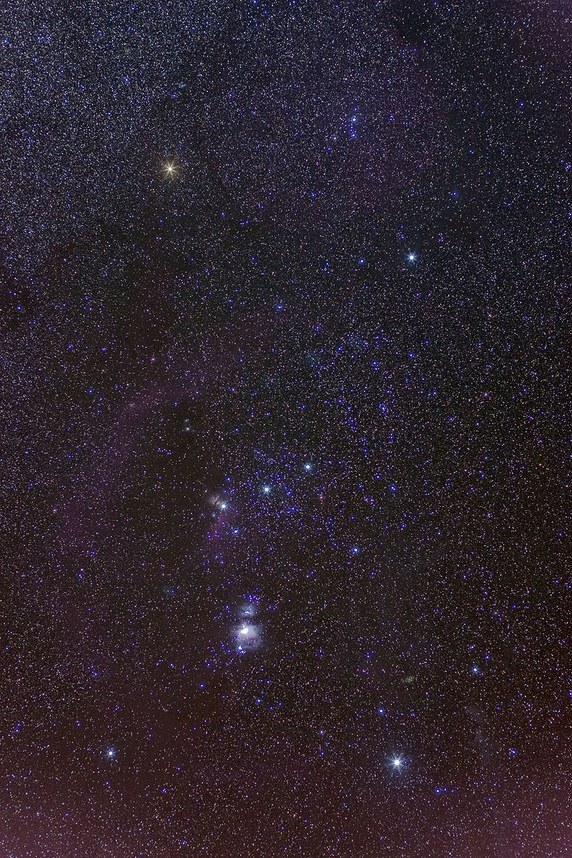
Deep sky image of Orion by Mouser. Betelgeuse is the red star at top left. It has apparent magnitude 0.42, close to the apparent magnitude 0.49 of the darkest possible brown dwarf at the distance of Jupiter at its furthest.
So, no, we couldn't miss a brown dwarf, even in visible light.

Betelgeuse is the bright slightly reddish star towards the middle of this picture, by Till Credner, marking out the left shoulder of the constellation Orion. This is one of the first constellations an amateur astronomer learns in the Northern Hemisphere. It is easy to spot, and Betelgeuse is one of the easiest stars to find in the sky and amongst the brightest and easiest to see.
The darkest brown dwarf at the distance of Jupiter would be as bright as Betelgeuse.
According to the WISE all sky survey, the nearest that a very cold brown dwarf could be and still be undetected is 26,000 AU. That's 650 times the distance to Pluto, or 0.41 light years away - so far away it would take light over 21 weeks to get from the brown dwarf to Earth. The original paper is here
Dark matter is matter that does not interact with ordinary matter in any way except gravitationally. It would be totally invisible to sight but you’d feel its gravitational effect. It is a theoretical idea - there is some evidence for it but the evidence is interpreted in different ways and there are man experiments searching for it, but so far with no success. It may well exist but if so, it is very hard to spot.
The idea of dark matter is main stream, many think it is possible. But it’s hard to see how dark matter could form planets. Ordinary matter can “stick together” with friction and electrical effects - but dark matter only interacts with ordinary matter, and itself too, gravitationally. So how could it stick together to make a planet? There is no way for it to lose energy. All it can do is to annihilate itself creating energy. There is this rather far out idea that dark matter could heat up planets far away from any star in areas that have very high concentrations of dark matter (if it exists) like the center of our galaxy, Dark matter could make planets habitable. But - that’s a halo of dark matter gravitationally interacting with an existing planet. There is no way for it to form planets, see Does Dark Matter Form Dark Planets?
However we can look at this in a more general way. Instead of dark matter as understood by theorists, let’s look for any form of matter not yet known including asteroids, gas clouds, as well as the hypothetical "dark matter". So it's also relevant to things like "Nibiru".
Any matter inside of Saturn would be easy to spot from its gravitational effects on Mars, Saturn and the Earth. The reason they chose those three planets is because we have had Cassini in orbit around Saturn for years, and many spacecraft sent to Mars, and of course with Earth also - it means we have very precise measurements of their position in their orbits going back many years now.
Then, taking account of the effects of all the known matter in the solar system, they concluded that we are missing less than a seventh of the mass of Ceres. Ceres is in turn less than 1/78 of the mass of the Moon.

Artist’s impression of Cassini’s Saturn Orbit Insertion. Cassini is currently orbiting Saturn and has done so for many years. We have very accurate distance measurements to our spacecraft around Saturn, Mars, Jupiter and other places.
To explain their observed positions exactly we have to take account of all the known matter inside of Saturn’s orbit of any size, even many of the larger asteroids. If there was as much as a seventh of the mass of tiny Ceres missing in that entire region, we’d notice the effect on the positions of our spacecraft which are exactly where they are predicted to be.
To put it another way, if you had an asteroid with same density as Ceres, with this amount of mass, then its diameter would be 950*cube root(1.17/8.958) km or about 480 km in diameter.
So if all that matter was concentrated into a single object inside of Saturn's orbit, it can't be larger than about 480 km in diameter. Or if it was made of ice, it's diameter would be 950*cube root(2.161*1.17/8.958) km, or about 623 km in diameter.
That’s an upper bound, so we probably don’t have as much missing mass as that, and what there is that’s missing is probably in the form of small asteroids as we know there are lots of small asteroids still to be discovered.
So there are certainly no planet mass objects inside of Saturn that we don’t know, or our spacecraft’s orbits would be influenced in ways we could detect easily.
For more on this see Constraints on Dark Matter in the Solar System but it’s a bit techy so for an explanation of it in detail see my "Imaginary Bullshit Planet" Nibiru - Lens Flares, Sun Mirages, Hoaxes & Just Plain Silly
The other issues with a planet massed object in the solar system also apply. A planet’s orbit just can’t be stable over a millions of years timescale. Either it’s orbit or our planet’s orbits would have been disrupted billions of years ago.
For more about this See Debunked: Nibiru will hit Earth on [Insert Date here]
Written Oct 29 CommentShareThis is something that Nibiru enthusiasts have as a cornerstone of their belief system. They believe that the mysterious Nibiru is hiding behind the sun and has been hiding behind it for years - since after all they have been saying that it is hidden behind the sun since 2003. Actually, a planet or comet in a long period orbit like Nibiru can only hide behind the sun for about one month of each year during its many years long approach to the Sun or Earth.
For many reasons why the whole idea of Nibiru is just BS, See Debunked: Nibiru will hit Earth on [Insert Date here]. But here we will just look at this idea that it can hide behind the sun.
To understand why this particular idea in their belief system is nonsense you need to know that the sky is divided up into constellations, which are rather like countries on a map of the Earth, but in the sky. Any celestial object, including the Sun, has to be in one of those constellations.
Because the Earth spins, the stars seem to cross our sky once every day. And because the Earth orbits the Sun, the Sun seems to move against the fixed stars once a year. You can confirm all this with your own eyes easily by tracking the sky through the year.
The Sun only hides one constellation of the zodiac each month.
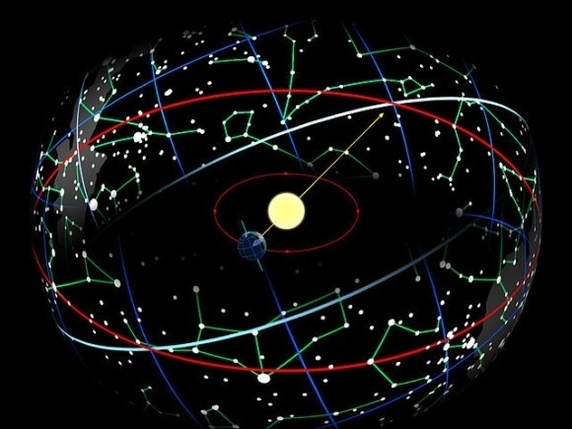
You can find out which constellation it is in for any month from this EarthSky page.
Dates of sun’s entry into each zodiac constellation | EarthSky.org
Those dates are for 2015, but the pattern is the same each year, you’’ll be at most a day or so out if you use those same dates for 2016.
So, as of writing this, end of October, the sun is in Virgo. That means you can’t see anything in the constellation Virgo right now, and Libra, the next constellation in the list, is an early evening constellation, indeed, because the sun is about to pass into Libra, it is also pretty much hidden from view. The previous constellation in the list, Leo is an early morning constellation.
By the way, the constellations there don’t match the ones used in Astrology. The constellations are irregular in size, some larger, some smaller, and there’s a thirteenth constellation Ophiuchus which is not included in the twelve astronomical constellations. In addition the constellations will seem misaligned if you are used to astrology - for instance the sun is in the astrological constellation of Virgo Aug. 23 - Sept. 22 (The 12 Zodiacal Constellations and the Signs of the Zodiac ). But it is in the astronomical constellation of Virgo Sep 17 to Oct 31,
The reason for this is because first, the astrologers divided the sky into twelve equal parts, so the astrological signs never matched with the star groupings exactly anyway, and they also ignored Ophiuchus. Also the Earth’s axis slowly changes direction tracing a circle in the sky, the phenomenon known as precession of the equinoxes.
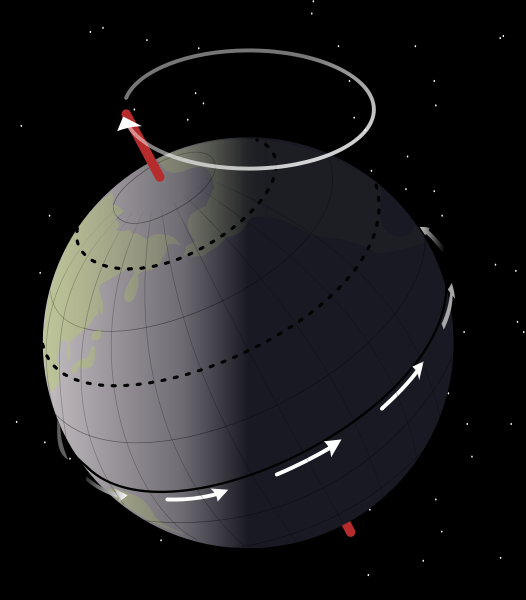
Axial precession. The Earth spins around its axis but the axis itself traces out a small circle in the sky over a period of 26 million years. This changes the position in its orbit where each hemisphere experiences its longest and shortest days, and the position of the equinoxes occur (day and night equal length because the Earth’s axis is neither tilted towards nor away from the sun).
As a result the constellations hide behind the sun at different times of the year, slowly drifting around so that a constellation that hides behind the sun in summer eventually becomes one that hides behind it in autumn, then winter, then spring, then 26,000 years later it gets back to its original position as a constellation that hides in summer. Virgo has shifted in this way by nearly a month towards autumn as a result of precession of the equinoxes since the system of astrology was first developed. Astrologers however continue to use the old divisions. So if you were born with the sun “in Virgo” according to astrologers, actually it is more likely to be “in Leo” according to the astronomers.
For details about all this from the viewpoint of astrologers, see Ophiuchus– a 13th Zodiac Sign? No!
So, as of writing this, end of October, the sun is in Virgo. That means you can’t see anything in the constellation Virgo right now, and Libra, the next constellation in the list, is an early evening constellation, indeed, because the sun is about to pass into Libra, it is also pretty much hidden from view. The previous constellation in the list, Leo is an early morning constellation.
To find the constellation which is in the sky all night, you want the one diametrically opposite Virgo, six months earlier, and that’s Pisces. So right now, Virgo is hidden, also Libra (most of it), and Pisces is visible all night.
All the other constellations of the zodiac are visible some time during the night.
You can check this out by looking at a star chart for your region. Here is the star chart for the UK, typical for the Northern hemisphere. UK Sky Chart - Astronomy Now
Try setting it to different times of the night for today - and different times of the year, to see which constellations are visible when. It is easy then to check with your own eyes that these star charts are accurate - go out any time of night and just check that what you see is what is shown on the chart and that the visible planets are in the positions shown on the chart.
Here are the details for the end of October, which gives an idea how it works.
In detail, right now, then Pisces, Aquarius, Capricornus, Sagitarius and Ophiuchus are all visible at 6 pm where I live. Libra is in bright twilight at 5 pm.
By 5 am, Aries, Taurus, Gemini and Cancer and Leo have joined Pisces in the sky and Aquarius, Capricornus, Sagitarius and Ophiuchus have set.
So of the thirteen constellations of the zodiac (including Ophiuchus which for some reason astrological star charts don’t mention), Pisces is visible all night, so if a planet was in that constellation you’d see it all night.
In fact Uranus is in Pisces right now so if you have a good telescope you can see it all night. It will be hidden behind the Sun for a month or so six months from now.
Jupiter is in Virgo so is currently hidden from view. But it won’t be hidden for long, and six months from now, it will be visible all night.
Neptune is in Aquarius so is an evening through to early morning object at present. It will be hidden behind the Sun in February, and visible all night in a good telescope six months later, in August.
All planets in long period orbits behave like this. They are hidden for one month of the year, are visible as either evening or morning objects for the remaining eleven months, and they are visible all night six months after the month when they are hidden.
We don’t get planets like Nibiru because it just doesn’t make sense as a planet, at this stage in our solar system, billions of years after its formation for all the reasons explained in Debunked: Nibiru will hit Earth on [Insert Date here]. But we often do get comets in similar orbits and they are visible nearly all year too, apart from about one month of the year.
Typically we observe a small less than 1 km diameter comet well over a year before it reaches close to Earth or Mars. For instance comet Siding Spring which did a close flyby of Mars on 19th October 2014
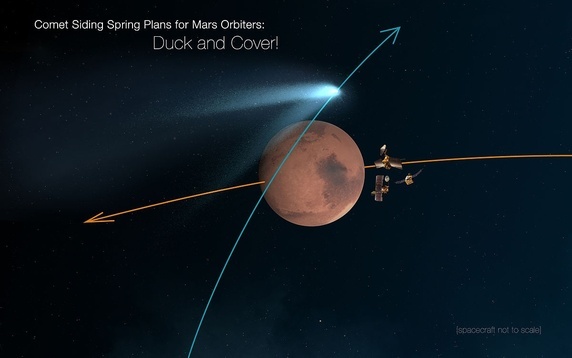
Artist’s impression of Siding Spring doing a close flyby of Mars on 19 October 2014
It is a small 400 - 700 meter diameter object and was discovered 7.2 au away from the sun in the constellation Lepus, or further away than Jupiter. It was discovered well over one and a half years before its flyby of Mars. A comet would take longer than that to reach Earth. And that’s a tiny comet. One as big as say 10 km in diameter would be discovered several years before its flyby of Earth or Mars.
So the idea of even a comet hiding behind the Sun for years on end before a flyby of Earth just makes no astronomical sense at all. A planet even more so. A planet would be an easy naked eye object, visible all night for at least part of the year, for many years before it got anywhere close to Earth.
Sometimes people will say - “Aha - but what if it approaches from the North or the South - can’t it hide then”.
No, that just makes it worse. If it approaches from the North pole for instance, then it will be in the constellation Ursa Minor so is visible all night every night of the year in just about the entire Northern hemisphere.
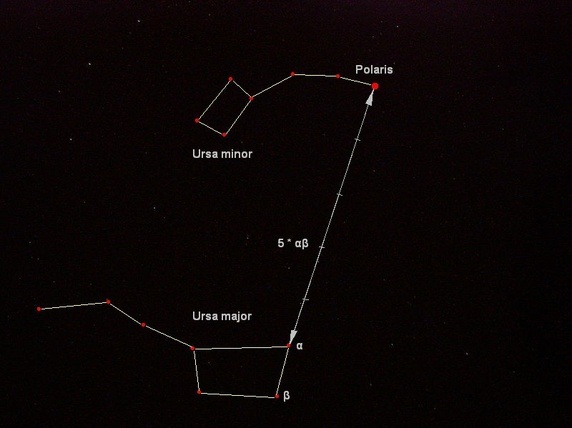
A comet or planet approaching from the north pole direction, Polaris - Wikipedia , is visible all night every night over most of the Northern hemisphere
If it approaches from the South pole, then it is in the constellation Octans which is visible all night all year round throughout most of the southern hemisphere
The new Earth sized planet that was announced as discovered indirectly around Proxima Centauri actually was found near the south pole, in the constellation Centaurus not far from the southern Cross.
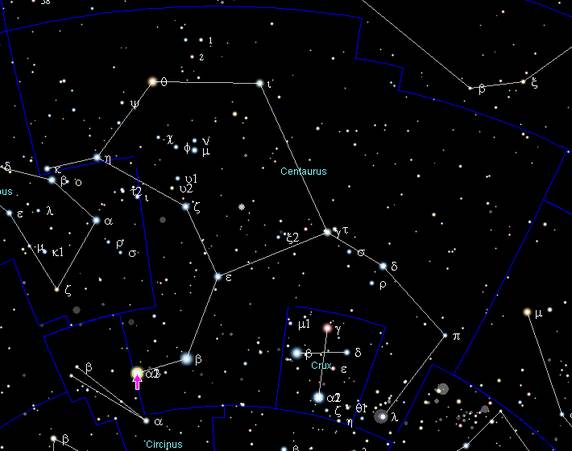
Location of Alpha (and Proxima) Centauri shown with a pink arrow. Though this planet itself is so far away it is too faint to see even with our largest telescopes, anyone in the southern hemisphere (except right close to the equator) can see Alpha Centauri with naked eye on a clear night, every night of the year.
Similarly a planet (impossible) or a comet (can happen) approaching from a direction close to the South pole would be visible all year round, any clear night, throughout all of the southern hemisphere apart from regions close to the equator
First, the Nibiru people have been saying that it is hiding behind the sun since at least 2003.
But anyway, there’s a maximum speed at which planets or comets can approach the sun. They can’t go faster than the solar system escape velocity, or they would no longer be bound to the Sun and would head off into interstellar space and never come back again (this happens sometimes to comets that come into the inner solar system just a bit too quickly).
Here is a List of hyperbolic comets here - a comet through perturbations of the planets can end up going a bit faster than solar system escape velocity - and as a result it gets ejected from our solar system.
If it is gravitationally bound to our sun, as a planet in a 3600 year orbit would be, it has to take at least a decade to get from beyond Neptune to the Earth / Sun (that’s how long the New Horizons spacecraft took to get from Earth to Pluto traveling at faster than solar system escape velocity).
The Nibiru enthusiasts say that Nibiru has been hiding behind the sun for years, which means it has to follow the sun's path in the sky, which means it has to have been in a one year orbit for years.
You could try saying it is in a 3600 year spiraling orbit hidden behind the sun all the time spiraling inwards and then outwards - but that's not what planets do of course. You’d have to tear up all our understanding of gravity. This is why Brian Cox, famous UK astronomer and particle physicist - our equivalent of Neil deGrass Tyson, so memorably said
If anyone else asks me about "Nibiru" the imaginary bullshit planet I will slap them around their irrational heads with Newton's Principia" - tweet by Brian Cox
Newton’s Principia is his great work where he demonstrated that the inverse square law of gravitation could explain the motion of all the planets. With some minor tweaks and refinements due to General Relativity, which mainly affect Mercury, every planet, comet, asteroid, minor planet, follows the laws Newton outlined in his Principia.
Basically to stay hidden behind the sun it needs some kind of an engine to drive it like a spaceship.
We also know that there is no planet sized alien spaceship doing that either, as we do have several spacecraft the other side of the Sun. Mars for instance is often the other side of the Sun and our spacecraft on the surface take photographs of the night sky from time to time.
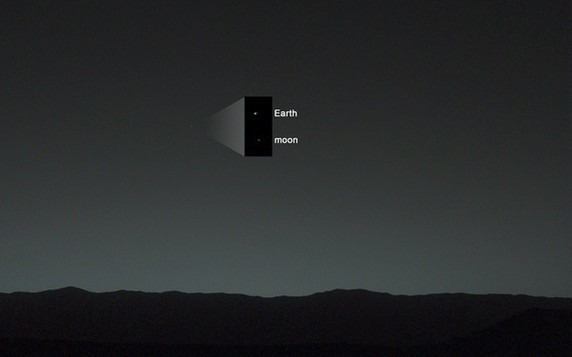
Curiosity’s first photograph of Earth and Moon, photograph taken shortly after sunset
Here is another photograph of the night sky with sun just below the horizon, from the surface of Mars. You can see Earth, Mars' moon Deimos, and Mercury. These photographs never show Nibiru. No planet sized alien spaceship there :).
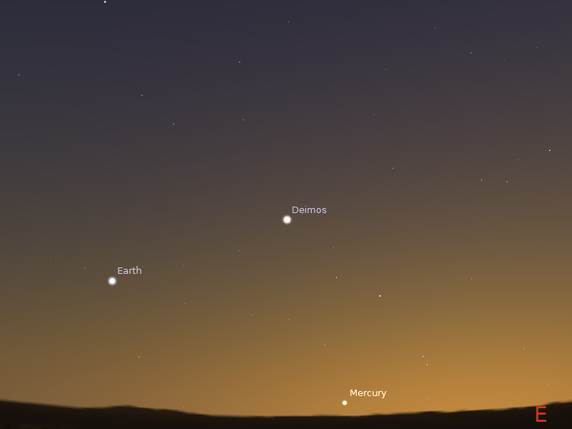
Also we have two telescopes, Stereo A and B which are currently on the other side of the Sun from us looking towards the Sun.

NASA lost contact with one of them for a year due to a mishap as it passed behind the sun but has re-established contact now NASA Reestablishes Contact With STEREO-B
But as well as that, we know that it is impossible for there to be a planet sized mass anywhere inside of Saturn’s orbit as it would have perturbed our spacecraft’s orbits noticeably. Indeed the total amount of missing mass in that region is less than a seventh of the tiny Ceres which in turn is a seventy eighth of the mass of the Moon. We probably don’t have as much missing mass as that, and what there is that’s missing is probably in the form of small asteroids as we know there are lots of small asteroids still to be discovered.

Artist’s impression of Cassini which is currently orbiting Saturn and has done so for many years. We have very accurate distance measurements to our spacecraft around Saturn, Mars, Jupiter and other places.
To explain their observed positions exactly we have to take account of all the known matter inside of Saturn’s orbit of any size, even many of the larger asteroids. If there was as much as a seventh of the mass of tiny Ceres missing in that entire region, we’d notice the effect on the positions of our spacecraft which are exactly where they are predicted to be.
For more on this see the second half of Debunked: Nibiru is invisible because it is a brown dwarf or made of dark matter
For reasons why the whole idea of Nibiru is just BS, See Debunked: Nibiru will hit Earth on [Insert Date here]
To understand this, you need to know that by tradition, ever since Lowell called Pluto "Planet X" before they found it, astronomers call undiscovered hypothetical planets beyond Neptune "Planet X". The "X" there stands for unknown.

Percival Lowell, a wealthy US businessman, mathematician and astronomer who lived from March 13, 1855 – November 12, 1916 and spend much of his wealth and time searching for Planet X, a planet he thought existed beyond Neptune,
The idea wasn’t a daft one. Neptune was discovered by a mathematical analysis of the orbit of Uranus.
But it turned out that his theory was incorrect. Clive Tombaugh continued the search after he died and found Pluto 14 years after his death, but later on when Pluto’s moon Charon was discovered and they calculated the mass of Pluto, it was too small to be his planet X.
Since then, by tradition, astronomers refer to any hypothetical undiscovered planet beyond Neptune as “planet X”. The X there stands for “unknown”, not the Roman numeral X for 10, after all Pluto the ninth planet, as they thought of it then, was planet X before it was discovered. If astronomers refer to planet X this means it has not been observed at all. So no, NASA have not been tracking planet X. If any of these get proved to be real, it will be given a name, like Pluto, and the X means it is not known to be real yet.
Percival Lowell's three early searches for Planet X
Though they didn’t call it “Planet X” the search for planets beyond the ones we know goes back to Urbain Le Verrier in Paris and John Couch Adams who predicted Neptune in 1845. So you could say that Neptune was the first “Planet X”. So astronomers have been tracking “planet X” since September 23–24, 1846
The Nibiru enthusiasts take all these hypotheses, no matter what the orbit, even Nemesis which if it existed would be more than a light year away in a very distant orbit around the sun - they say they are all the same planet and are in fact Nibiru in a 3600 year orbit crossing the path of all four gas giants, an astronomically absurd orbit for a planet, that can't be stable for as long as a million years.
That's why they say NASA has been tracking it since 1983. They could as easily say that astronomers have been tracking it since Lovell wrote his 1903 book, The Solar System, outlining his reasons for believing that a planet X could exist. It would be equally false.
They often elaborate the story by saying that Robert Harrington discovered planet X in 1983 and was murdered by NASA or by the government, in order to hide his discovery from the general public.
The truth is that Robert Harrington did indeed hypothesize a planet X beyond Neptune. But six months before his death, Myles Standish used new data from the Voyager 2 flyby of Neptune. As a result the mass of Neptune was revised downwards by 0.5%. The data he had been using to hypothesize planet X depended on a more massive Neptune and when you redo the calculations with Neptune a bit lighter,the need for planet X vanishes. See Planet X - no dynamical evidence in the optical observations
Myles Standish’s article was published after Robert Harrington’s death, but submitted long before it and Robert Harrington would have known that his theory was disproved when he died.
And we know for sure that he was not murdered. He died of cancer of the throat. His obituary is here: Bob Harrington Obituary - that’s the more detailed obituary from his observatory. The NY times obituary is here, just says he died of cancer: Robert Harrington, 50, Astronomer in Capital
So, the reason that Nibiru conspiracy theorists are able to say that astronomers have been searching for Planet X since the 1980s, is because they first identify "planet x" with Nibiru even though all the planet X searches are for planets with orbits beyond Uranus and the Nibiru idea is for a planet that crosses the path of all the four gas giants, an impossible orbit not stable for a million years.
They then treat "planet X" as a single real planet although there were many different planet X searches, most of which have been proved not to exist. The idea of searching for planets beyond the ones known at the time goes back to 1845 with the search for Neptune. So you could say, accurately, that astronomers have been searching for "planet X" type candidates since 1845.
But they are not "Nibiru" and Neptune and Pluto which we know do exist, are no threat at all to Earth. The same is true of all the other planet X candidates, if any of them exist.
Written Oct 27 CommentShareWe have just had two major earthquakes in Italy on the same day - Italy earthquakes: Strong tremors shake central region - BBC News - whenever we get a cluster of earthquakes I get the question - does this not prove that Nibiru exists?
That’s a fallacy called Affirming the consequent - Wikipedia
If someone owns Fort Knox, then he or she is rich.
Bill Gates is rich.
Therefore, Bill Gates owns Fort Knox.
There are many other ways to be rich.
Similarly, the Nibiru enthusiasts claim that if Nibiru exists there would be increased numbers of earthquakes as signs of its impending approach.
Because of this “prediction”, every time we get a couple of earthquakes on the same day, or a few major earthquakes within a couple of days, the Nibiru enthusiasts all start chattering away saying that this means Nibiru is on its way and about to hit Earth.
So their reasoning is
If Nibiru exists, there would be clusters of earthquakes
We have just had a cluster of earthquakes
So Nibiru must exist
There are many other reasons for earthquakes. Also, they often cluster together, either through chance, so many earthquakes every year some are bound to happen within hours of each other, or if they are close together, one can trigger another or they can both be caused by the same thing, e.g. movement of some sort.
So, the Moon (nearest thing we have to a planet doing a flyby of Earth) causes tides. Our Earth is quite squishy on the large scale and it deforms this way and that every day - the tides go all the way around the Earth once a day. The sea tides we all know about, but smaller "earth tides" too. The Sun raises tides but only because it is so absolutely massive, and it doesn't cause earthquakes either, and its tides are smaller than the Moon's.
The Moon may cause some of the larger earthquakes to be larger than usual, a recent study suggests - every full or new Moon. So that’s every 14 days. Moon’s pull can trigger big earthquakes
Tides drop off as the sixth power so if a planet is ten times further away it has a millionth of the tidal effect. So Jupiter has no noticeable tides on Earth at all. A planet has to be very very close to raise tides.
The idea of a planet doing a flyby of Earth is nonsense anyway in our solar system. But in some other solar system or in the early solar system when planets did do close flybys of each other, they would have raised tidal bulges but only when so close they would be big easy to see visible disks in the sky. And not disks that appear and disappear according to whim as if hidden in a "star trek invisibility cloak".
So even a huge planet unless it came very very close, would not cause earthquakes. It would cause tides first, before it could trigger Earthquakes. We don’t have any unexpected tides.
Earthquakes on Earth, the ones of any size, are usually the result of continental drift, or of volcanic eruptions, motion of magma etc. And the sun or moon don't do things like that to our Earth. It's driven from the interior by the excess heat in the interior finding its way to the surface.
Well first, you get earthquake swarms, lots of earthquakes all triggered by the same cause, but not related.
You also get earthquakes that trigger each other, aftershocks. This shows the aftershocks of the magnitude 6 earthquake in Central Italy on August 22ns of 2016.
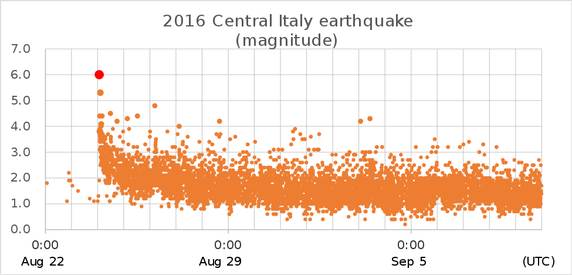
Then, the total number of earthquakes per year is much more than you might think. The number of magnitude 6 or larger earthquakes per year, on average is 120. Earthquake Statsitics - Statistic Brain
That means that there’s a magnitude 6 earthquake every three days on average somewhere in the world. But that doesn’t mean that they happen equally spaced every three days. If you have only 23 events in a year, there is a 50/50 chance that you get two of them on the same day, that’s the Birthday problem . That’s much higher than the chance that one of 23 people has their birthday on the same day as you.
With 70 events then it is a near certainty, 99.9% certain that you have two of them on the same day at some point in the year. It’s also very likely that you have three or more on the same day at some point in the year.
So, we should expect to get clusters of two or more magnitude 6 earthquakes on the same day rather often. But we don’t normally notice them because they are not reported.
However if there is a magnitude 6 or larger earthquake that actually kills many people or causes damage to buildings then reporters for a few weeks will tend to report every magnitude 6 earthquake in the world, so then you get the false impression that suddenly we are seeing more earthquakes than usual. It is just that more are getting reported than usual. If you have friends in earthquake prone regions they may tell you about earthquakes too, tremors that shake their house, say, when normally they wouldn’t mention them as they are an everyday occurrence for them.
Written Oct 27 CommentShare 
It’s certainly very striking to look at :).
I thought surely it must be a photoshop fake, - no natural phenomenon I can think of and it’s not a camera glitch evidently.
But it turns out it is a genuine photo. Just not a photograph of a second sun.
One of the best and most puzzling double sun photos I've seen. Can you figure out what it is before I reveal the answer? I’ll add in some space so you need to scroll down to see the answer.
.
.
.
.
.
.
.
.
.
.
.
.
.
.
.
.
It’s the reflection of the sun off a glass building in Manhatten :). Photo taken from a kayak I think.
Original here
“All those glass buildings have their uses! :-)”
and here: But I Saw It on the Internet… where the author, Vladimir Brezina, explains that after releasing this photo in 2015 they got thousands of visitors initially from Malaysia, searching for pictures of two suns:
“Needless to say, this makes no sense whatever, and our picture just shows the sun’s rays reflected off the glass wall of a building… “
Here is a zoom in on the high resolution version of the image to prove it:
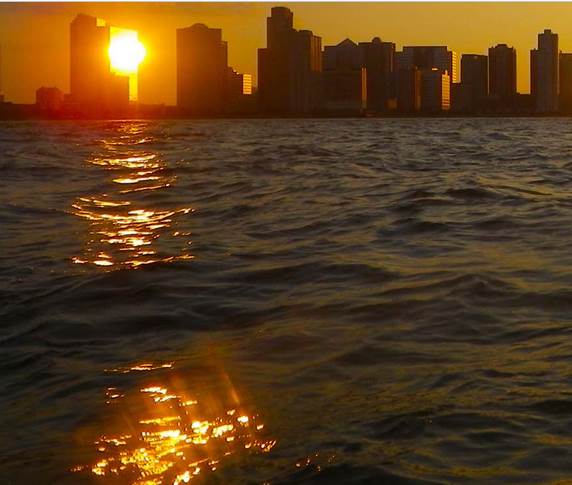
Vladimir Brezina has lots of other striking and lovely photographs. Many are of kayakers in the sea next to New York, or are taken from close to sea level height, as from a kayak.
Written Oct 26 CommentShareSome of you may enjoy this, it’s a parody of many of the Nibiru videos, by Dazzathecameraman - shows how easy it is to make a hoax video like this.
Written Oct 31CommentShare
Speak to anyone with a decent background in physics or astronomy or science - and they will just LOL at the very idea that we might have two suns or an extra planet hiding behind the sun. Here are some famous astronomers who have talked about how nonsensical the idea is:

Brian Cox who colourfully called Nibiru "the imaginary bullshit planet"
Here is Brian Cox's tweet about Nibiru.
If anyone else asks me about "Nibiru" the imaginary bullshit planet I will slap them around their irrational heads with Newton's Principia" - tweet by Brian Cox
- he is a particle physicist associated with the Large Hadron Collider in Europe - and he is a very popular TV expert presenter on astronomy in the UK who has done many television programs and TV series on astronomy

Neil deGrasse Tyson called it "A marvelous work of fiction" by people who flunked physics at high school. He is a very popular TV astronomer in the US, also an astrophysicist and director of the planetarium in New York City.
For a short overview of this from NASA: Why the world didn't end in 2012.
On Nibiru they just say
"Q: What is the origin of the prediction that the world will end in 2012?
"A: The story started with claims that Nibiru, a supposed planet discovered by the Sumerians, is headed toward Earth. This catastrophe was initially predicted for May 2003, but when nothing happened the doomsday date was moved forward to December 2012 and linked to the end of one of the cycles in the ancient Mayan calendar at the winter solstice in 2012 - hence the predicted doomsday date of December 21, 2012.
..."Q: Is there a planet or brown dwarf called Nibiru or Planet X or Eris that is approaching the Earth and threatening our planet with widespread destruction?
"A: Nibiru and other stories about wayward planets are an Internet hoax. There is no factual basis for these claims. If Nibiru or Planet X were real and headed for an encounter with the Earth in 2012, astronomers would have been tracking it for at least the past decade, and it would be visible by now to the naked eye. Obviously, it does not exist. Eris is real, but it is a dwarf planet similar to Pluto that will remain in the outer solar system; the closest it can come to Earth is about 4 billion miles.
For debunking right now
A couple of facebook groups set up to help people who are scared about Nibiru by helping to debunk the stories - for instance you can post videos and photos there of what is claimed to be Nibiru to ask for advice about what they show.
Written Oct 30 CommentShareIf you live in a place with many planes flying around, you may notice that at sunrise and sunset, you get lots of planes flying back and forth in front of the sun obscuring it with vapour trails. For those who buy into the Government covering up Nibiru conspiracy idea, it’s quite natural to then wonder if somehow they are doing this to obscure the sun.
This image helps to explain what is going on here

Those are equally spaced circles five kilometers apart at typical heights that jet planes fly, superimposed on Google Earth. Discussion here.
They seem to get closer and closer as you look further away because of a similar effect to the way railway sleepers seem to get closer and closer - due to perspective.

You often notice this effect with clouds. If there are clouds dotted over the landscape evenly, with big gaps in between them, the sky is likely to be clear overhead - but as you look in the distance the clouds seem to get closer and closer together and near the horizon it looks as if there is just an uninterrupted bank of clouds:

Mixed cloud formations, Aortas Township, Clear field County - photo by Nicholas A. Ton elli
This does not mean that the clouds are closer together at the horizon. Someone standing over there, taking a photograph and looking back this way would get a similar view and where you are standing, to take the photograph, to them looks as if it is beneath a solid bank of clouds.
Here is another example, this time taken from slightly above the clouds

So, if the planes are equally spaced, you'd expect to see far more of them close to the horizon than overhead. If you happen to be in a spot that few planes fly over, even just say 20 kilometers away from the nearest flight path for planes, you would only ever see planes flying near the horizon, of the commercial planes in normal flight paths.
So, seeing planes only near the horizon is a perfectly normal thing to happen. If you try looking in the middle of the day when the sun is high in the sky, don't expect you'll get many planes fly in front of it then.
As for the idea that they are deliberately obscuring the sun from you - that just can't be, unless you think the whole operation is directed for your own personal benefit. After all someone who lives underneath wherever the planes are would see them fly overhead and someone who lives the other side of where they are from you would see them low above the horizon in the opposite direction from the sun.
It's just not possible for a plane to fly in such a way as to obscure the sun for more than a few people in a very narrow path - the path basically of the faint shadow cast by its vapour trail on the ground.
If you aren't in that shadow it won't obscure the sun for you. To obscure the sun for everyone, planes would have to fly constantly, releasing so much vapour that you never see a clear sky, just clouds.
It's normal to have more clouds near to the horizon and including vapour trails -for a similar reason to the railway tracks again. If you have a few clouds scattered here and there over the landscape at random, and you are on the ground, then just as for the vapour trails, nearly all the clouds will seem to be close to the horizon.
That is indeed what you see here in Scotland if you go up a mountain and can see for miles and miles on a clear day and you may have clear skies overhead and a few clouds here and there and then clouds around the horizon in all directions. It's just this perspective effect. Someone else 50 miles away who to you seems to be in a region of total cloud would look back in your direction and think you are in a region of only cloud also. Because the clouds cluster together so much in the distance.
Written Oct 26 CommentShareTo assess these many claims of the idea that there is a planet headed towards Earth and that this is being kept secret - first, you need to realize quite how small the Earth is compared to interplanetary space.
The Earth travels by its own radius in four minutes. So when astronomers first discover an asteroid they can't know if it is going to hit Earth. Before they can do that they have to know its orbit so precisely that they can say exactly where it will be to the nearest minute or two, years or decades in advance, whenever the impact is predicted. And if a new comet is discovered, the hypothesis is not at all "this comet could hit Earth".
In the peppercorn model of the solar system, the Sun is a soccer ball and the Earth is a peppercorn 26 yards from the Sun. Even if the impactor was the size of Earth or even larger it is like trying to hit a peppercorn with another one from a distance of tens of yards, throwing it blindly in a random direction. The chance of that happening is tiny.
Here is Bill Nye showing the same idea with a somewhat larger scale model with the Sun one meter in diameter:
Hopefully also that helps you understand what a huge fail it is when the Nibiru conspiracy theorists take news stories of dwarf planets beyond Neptune or the idea of a new planet that may exist many times further away than Neptune - and then claim that it is in some way a danger to Earth. Something that orbits beyond Neptune is not in the most remote way any danger to us at all.
The chance is so very tiny of anything hitting Earth in the vastness of interplanetary space, that of all the new comets discovered, and of all the 15,000 asteroids currently being tracked that do close flybys of Earth, not one is going to hit Earth before 2100.
There are 500,000 asteroids in total discovered in the last 30 years.
None of those asteroids will hit Earth before 2100.
To try to find out if an asteroid has any chance of hitting Earth takes weeks of observation. And NASA are not the ones who do those observations. They are a civilian space agency, like ESA and JAXA (the Japanese space agency). Their main job is to put satellites and spacecraft into orbit, and humans too sometimes. It's not their job to actually do the observations, even Hubble observations are done by astronomers internationally who book time on the telescope. And Hubble is the worst possible telescope for detecting asteroids as it has a very narrow field of view to let it look at distant objects at high magnification. That’s no good for detecting asteroids and comets when you don’t know where they are until they are detected.
The best asteroid detecting telescope we have at present is Pan STARRS which detects many new asteroids every day - it's at the top of a mountain in Hawaii and it is run by astronomical associations in many different countries. And those telescopes only do the initial detection at present. This may be improved in future but at present they are reliant on professional and amateur astronomers world wide to do the follow up observations to work out the trajectory and whether it is going to hit Earth or not. And their results are published here, Current Impact Risks table. This is done in an open way and there is no mechanism in place to hide the information. It is hard to see how it could be done anyway even if all the nations in the world wanted to hide the information because it is so dependent on sharing the data publicly.
You can subscribe to the Minor Planets circulars and get exactly the same data all the other astronomers get about newly discovered asteroids and comets to track. You can go and check all the other astronomical observations yourself. You have to be a real geek to do that or to have a lot of background in practical astronomy as they are technical and hard to read but that's not to obscure, that's just because they have lots of data to share so have to present it in a compact format and their readers are used to reading it in that format - also it gets read by computers too nowadays.
And this idea that astronomers would hide impact risks is actually tested in practice too. Apophis particularly had a tiny chance of hitting Earth soon after it was first discovered. This was reported everywhere. Nobody tried to hide it. It would have serious effects if it did hit Earth. The chance of this was only 2.7% meaning a 97.3% chance of a miss - so it is not surprising that later observations proved it would miss.

Discovery image of Apophis, 325 meters in diameter. It initially had a 2.7% chance of hitting Earth on April 13 2029. This estimate was shared with everyone. This made it large enough to take out an entire small country if it hit the Earth. There is no way something like this could be hidden from astronomers as they are the ones who do the observations and work out the orbits. And asteroid discovery is something that is carried out by astronomers, amateur and professional, world wide
Astronomers can find huge things light years away like stars and brown dwarfs and can now find planets too through various methods such as the minute gravitational effects on the motion of stars causing changes in their speed of just meters per second or less because that changes the frequency of light via doppler shift. They can find objects 100s of kilometers in size at the distance of Neptune. They can find them 10 km upwards at distance of Jupiter and have found all the objects of 10 km upwards that do regular flybys of Earth and they have nearly finished the survey of the 1 km objects. The smaller ones like Apophis are harder to survey, but their long term objective is to find all of those too by the 2020s. This may take until the 2030s however, it depends how much money they put into it. It's not a lot you are talking about there, of order of tens of millions to hundreds of millions would be enough to complete the survey.
So my advice would be, if you want something done about impact risk, try writing letters to politicians to try to get them to find those extra tens or hundreds of millions of dollars to complete the survey down to smaller asteroids of tens of meters in diameter. It will not help at all to accuse them of hiding a BS planet that can't possibly exist. How can that help retire the impact risk?
If we do find an asteroid headed our way, then there are many things we can do. We wouldn't just panic and throw up our hands in despair. There are many ideas for diverting asteroids and comets. The more time we have, the easier it is to do it, so making a complete survey is the first priority.
If one was headed our way we'd want to implement big expensive programs to deflect it, so it would be on the news, politicians asking for the money, votes in congress etc to fund a big program to deflect it. If that wasn't possible then they would work out the impact site and start work on an evacuation program and again, the longer in advance you do that, the easier to persuade people they need to move and to actually do the evacuation - much easier to evacuate a million people with several years of notice than with just a few days.
And if it was large enough to have global effects, you could do things like store crops for the previous year to tide through the lowering of temperature and work out what kinds of crops you can grow during the impact winter and so on. And advice on how to protect yourself from the firestorm if there was one, etc etc.
But those large impacts are very very rare. If you think about it, no large asteroid has hit a populated area for the thousands of years of historical records. So - the chance of an impact this century is very tiny. For a large asteroid 10 km or so, it is 1 in a million per century (the last one was 66 million years ago and they happen once every 100 million years on average). But since they have already found all the 10 km asteroids that reduces it to 1 in 100 million per century approximately - only leaves the comets which you can observe years in advance as they approach Earth.
The smaller ones are far more common. We get hit by dozens of Chelyabinsk size meteorites for every single 1 km asteroid. So if we do get an impact on a populated area, it is far likely to be a small asteroid than a large one. The smaller it is, the more likely it is.
So that again hopefully lets you see they aren't hiding anything. I think part of this comes from disaster movies which give the impression that we could have a large asteroid heading towards Earth and discover it only days before impact. Armageddon does a lot of poetic license. Earth hasn't been hit by an asteroid the size of Texas for billions of years and from the cratering record that is just not something that could happen at this stage in the solar system. We could be hit by a smaller 10 km asteroid but this is exceedingly unlikely 1 in 100 million, and we'd know about it many years before impact.
So these movies are just not accurate. They use a lot of fudges in the science for the sake of a dramatic story line.
Yes we do deserve the truth. So don't read the Nibiru sites if you want the truth as they are full of BS. See my Nibiru Bullshit Tester - How to check if they know anything about astronomy. If you use that BS tester then you can click away from most of them after reading the first sentence or at least the first para. And click away from most videos after the first sentence or two as well.
Nibiru enthusiasts often find unusual looking objects in Google Sky and claim they are Nibiru. For instance, here is a very long post by a Nibiru enthusiast claiming to have found Nibiru in Google Sky in the Infrared

It’s actually the Peanut Nebula around the carbon star CW Leonis. It's a striking object in infrared, the brightest object in infrared outside of our solar system. But it is absolutely no threat to Earth. It's between 390 and 490 light years away. It's so far away that when we look at it, we see it as it was four centuries ago because that's how long it takes light to get here from there. You can see it on google sky here
For more about this, see Debunked: The IRAS infrared satellite found Nibiru in 1983
You may see this shared as “Nibiru”

Rather striking isn’t it :).
It’s actually a distant nebula see Debunked: This is a “Winged planet” and is Nibiru
The 1983 IRAS observation claim comes from a press conference. IRAS looked into the far infrared for the first time ever (blocked by our atmosphere on Earth). The astronomers said it could be anything from a tenth planet to a distant galaxy. This was the first time they were able to observe the night sky in this frequency range - and they had just got a few observations - not enough time to work out if the objects were moving or stationary in the night sky (any planets in our solar system will move across the night sky). This is what the paper reported:
"A heavenly body possibly as large as the giant planet Jupiter and possibly so close to Earth that it would be part of this solar system has been found in the direction of the constellation Orion by an orbiting telescope aboard the U.S. infrared astronomical satellite. So mysterious is the object that astronomers do not know if it is a planet, a giant comet, a nearby "protostar" that never got hot enough to become a star, a distant galaxy so young that it is still in the process of forming its first stars or a galaxy so shrouded in dust that none of the light cast by its stars ever gets through. "All I can tell you is that we don't know what it is," Dr. Gerry Neugebauer, IRAS chief scientist for California's Jet Propulsion Laboratory and director of the Palomar Observatory for the California Institute of Technology said in an interview." Washington Post, December 30 1983.
Later they found out that some were distant galaxies with a star burst of new galaxies and some were dense gas clouds in our galaxy. Check out Phil Platt's "Planet X Saga: Science".
For more details, see Tom Chester's account - he is one of the members of the original team that found the far infrared sources. The WISE survey eventually proved there is no planet larger than Saturn up to 250 times the distance to Pluto and a Jupiter sized one has to be at least 650 times the distance. Any new planets have to be further away than Pluto right now, and larger ones should be far far away from the sun or we'd detect them by the reflected light from the sun.
This is the brightest object in the infrared sky:

It’s not a planet. It’s the Peanut Nebula around the carbon star CW Leonis. It's a striking object in infrared, the brightest object in infrared outside of our solar system. But it is absolutely no threat to Earth. It's between 390 and 490 light years away.
It's so far away that when we look at it, we see it as it was four centuries ago because that's how long it takes light to get here from there. You can see it on google sky here
It's huge, yet it's one of the few deep sky objects that changes visually in a short period of time. This cycles back and forth through the changes over a period of three years.
Animation from here. IRC +10216
It's a fascinating object. But absolutely no risk to Earth at all! See also Nibiru it is Not. Indeed it's stars like this that created many of the elements that are the basis for life, such as carbon, and explosions like this that brought those elements into the interstellar space, so that eventually they got incorporated into the clouds of gas and dust that collapse to form new solar systems. So - it's actually a life giving star.
Carbon stars like this are stars like our Sun that are a bit heavier and hotter and so are able to burn helium into carbon in large quantities, but not heavy enough to go supernova. They are deep red in the visual spectrum. And just as our sun will do after it goes red giant, they throw off much of their mass as huge nebulae as they get to the end of their life, and that's exactly what we see here. They produce much of the interstellar dust, and in the early galaxy there must have been many of them (they have short lives as stars go). And rather poetically they also seed interstellar space with diamond dust :).
Written Nov 9 CommentShareThis object on Google Sky is often shared as “Nibiru” - and they also often claim it is in the missing rectangle in Google Sky (an image from the original database which for some reason has been left out of their upload) though it is actually more than twenty degrees away from it.
Anyway it is a fascinating looking object isn’t it:
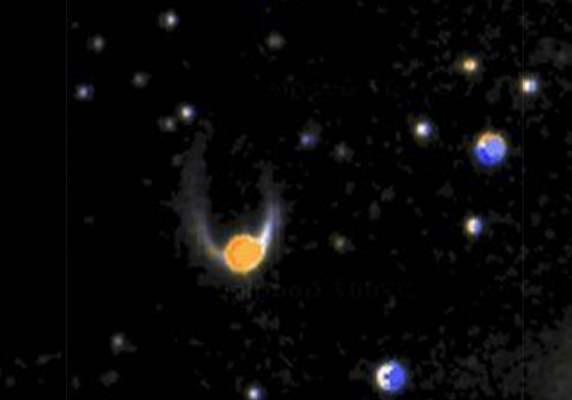
Closer view
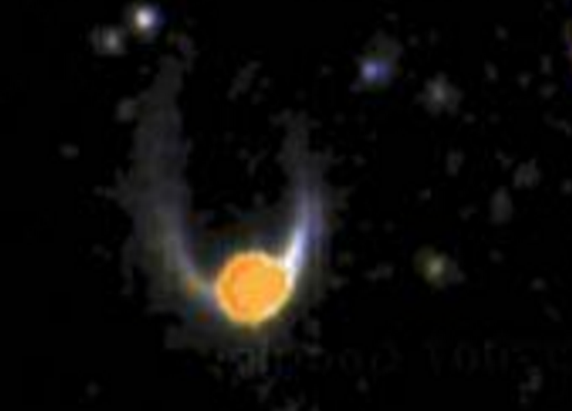
You can find it here on Google Sky
It’s actually a T Tauri star - a very young star, from a few hundred thousand to a million years old, still forming into a star and making its first planets.
Many of them still have protoplanetary disks - denser clouds of gas around them which will soon collapse to form comets, asteroids and planetary embryos


And this, remarkably, is not an artist’s impression. It is an actual radar image of a protoplanetary disk around a very young star HL Tauri - Wikipedia which is thought to be less than 100,000 years old. The dark lanes here probably indicate places where planets are forming, and so “clearing their orbit” of debris from the condensing gas disk.
These very young stars often blow off jets of gas in opposite directions. The jets are then lit up by it in a “reflection nebula”.
Anyway so the “winged planet” is actually not a planet, but a deep sky object. I can’t find information about its distance (anyone know do say) but probably hundreds of light years or thousands of light years away. It is a very young star, probably just started to form planets if it has any (we now think that nearly all stars do form planets). Its name is GN 05.39.2 and its Simbad page is here, which provides more images
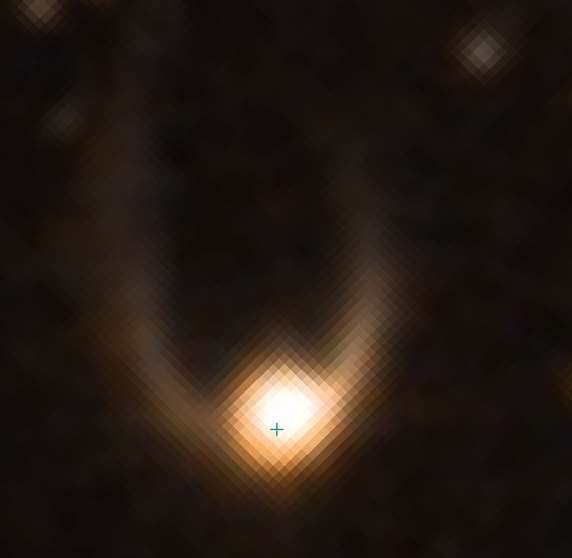
Image from its Simbad page
This is another image from 1st December 2011
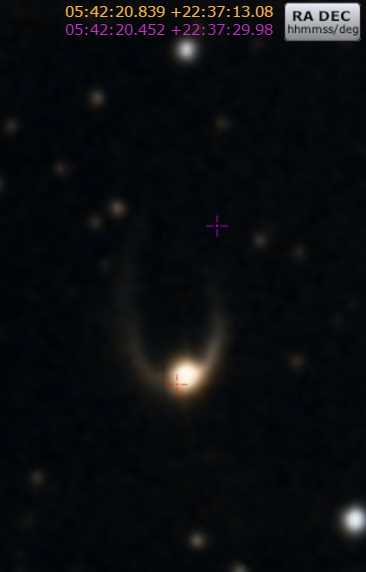
However if you are a keen amateur astronomer you can go out and take photographs of it yourself. Scott Fergusson did just that, twice, six months apart.
Here also, Dave Greg covers it in his article about the Google sky missing section.
The mystery of the missing section of Google Sky solved [UPDATED], page 1
He also covers a rather similar looking reflection nebula
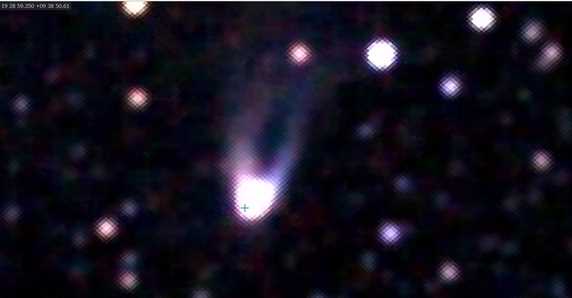
Parsamian 21 associated with HBC 687 which is an FU Orionis star - another type of young pre main sequence star, one that varies in brightness dramatically.
Written Nov 27 CommentShareHe was joking. It’s a British ironic very very dry sense of humour. Like the humour of the Mitchell and Webb show in this conspiracy theories spoof they did.
Many British people use it a lot in everyday conversation as well, and our comedians make great use of it. That’s a more extreme version, a complete sketch done in a totally dead pan way, more often it is just a sentence or two.
It is absolutely vital for this sort of humour to work that it has to be said totally "dead pan" either you don't give it away at all that it is a joke, or you can subtly hint at it. It's a "wry smile" humour, not LOL but British people find it funny and it is used a lot by the comedians here on TV etc. The nearest to it that those from outside the UK will be aware of is perhaps the idea of an “April Fool” news story. It would completely spoil an April Fool joke if you made it too obvious that it is meant humorously - the humour comes from writing a dead pan serious article about something that is as ridiculous as you can make it without giving away too quickly that it is a joke.
Here is the extract:
Just a joke after they had a problem with a reflection giving a ghost image of the sun. It's the serious tone of voice with which you say something so ludicrous that makes it funny for us. If you make it too easy to see that it is a joke, then it’s not nearly so funny for us, and falls rather flat.
If you are used to it you can tell by the way he says "there is, it's true" - there is a special inflection we often use in that situation that shows it's a joke - a slight upturn of pitch, fading of volume and increase in tempo of speech at the end of the sentence. You don’t have to give that inflection, and if you do, it has to be subtle and easy to miss or again it rather spoils the joke.
Many of the conspiracy sites falsely claim that he is a NASA astronomer. Slooh is an international organization that runs several robotic telescopes in places with good seeing such as the Canary Isles, and uses them for live shows of events of public interest, such as in this case, the transit of Mercury. Its shows are syndicated to media outlets worldwide. Observatories can choose to connect their live feeds with the community. It also allows amateur astronomers to hire the telescopes at a few cents an hour giving them access to multi million dollar telescopes. See Interview: Mike Paolucci, the founder of space-viewing service, Slooh
Paul Cox is an English astronomer who hosts many of the shows and manages most aspects of the Slooh engineering and tech says he immediately saw its advantages for astronomers cloud bound in the UK when he first heard of it in 2003.
It is easy to check for yourself that we have only one sun. Don’t stare as it, because that can damage your vision, and you have no pain receptors at the back of your eye.
Just hold your finger in front of the sun to block it from your vision. Look to either side. Is there a second sun there? After doing that with your finger vertical, hold your finger in front of it horizontally and look above and below? Is there a second sun?
You have just disproved the hypothesis that we have two suns.
Written Nov 25 CommentShareThis is the key to a real object - it will have a co-ordinate in the sky. It will be in a particular constellation. But it won’t have fixed co-ordinates, not a nearby object in our solar system. As seen from Earth, the co-ordinates change slowly, moving through the sky. A comet, planet or asteroid is never stationary in the sky for long, Every night they can say exactly where it is in the sky.

Comet ISON tracks through the constellations Gemini, Cancer and Leo as it falls toward the sun - this is an example. The position of Comet ISON could be plotted for every day of the year, and you could read exactly where to look to see it - as it slowly moved through Gemini, Cancer and then Leo in 2013 in this example. Any real object will have co-ordinates like this and has to be seen in front of one of the constellations as seen from Earth.
You need a minimum of three good observations to work out an orbit, and that means very accurate observations. If you are to predict if an object will hit Earth you need to know when it will cross our orbit accurately to within four minutes, as that is how long it takes for Earth to travel half its width along the track of its orbit. Of the 15,000 known objects that do regular flybys of Earth with worked out orbits, none of them will hit us before 2100, which shows how hard it is for anything to hit Earth even if it is in an orbit that takes it past Earth every few years.
Whenever I have seen a page or video where they say they have co-ordinates for “Nibiru”, it’s always just some deep sky object usually hundreds or thousands of light years away in Google Sky and they claim it is “Nibiru”. Perhaps a planetary nebula for instance - vast clouds of gas that look a bit like planets, the reason for the name.
They surely don’t know how to work out the coordinates of a real object in the sky or how to find an object at those coordinates with a telescope. However, since they are exploring the night sky in Google Sky, there is no need to do that. They can just read off the co-ordinates from the program.
Of course this means that it doesn’t move, because it is some distant object many light years away and anyway Google sky is just a snapshot of the night sky as photographed in the Sloane digital sky survey and other such surveys.
When they say they have co-ordinates for it in Google Sky they usually mean this object:

It’s a fascinating looking object. But it is not a planet. It is a very distant young star which is blowing off gas in two jets, as its nebula condenses. For details see: Debunked: This is a “Winged planet” and is Nibiru
If you were tracking a comet, say, you would not use Google Sky. It is not a telescope and doesn’t show a real time view. You’d use a telescope to observe it, then eventually when bright enough, follow it with binoculars and naked eye.
So it doesn’t make a lot of sense to try to follow a real moving object in Google Sky. So if someone says “These are the co-ordinates of Nibiru and I found it in Google Sky” - it just means they have found some object while browsing the program which to their eyes looks like what they think a planet should look like. It’s probably hundreds or thousands of light years away from Earth.
Written Nov 22 CommentShareThis is another urban myth that is often shared on Nibiru conspiracy sites. They claim that governments are building underground bunkers as a place to retreat to when their BS Nibiru hoax planet hits Earth or flies past Earth.
It is true that many governments built bunkers during the cold war, which were designed to protect critical people, with enough of an infrastructure to be able to continue to govern and prevent the country descending into total chaos during and after a nuclear attack. The cold war is over and many of those underground bunkers have been abandoned and sold or put to other uses.
But the US does continue to maintain a number of underground bunkers. I'm sure that nuclear war is uppermost in their minds as a reason for keeping them on, even though a global nuclear war seems far less likely than it was when I was young. They are underground to protect from direct impact and also to protect from EMP's - electromagnetic pulses caused by detonations of nuclear weapons in the atmosphere which can damage electrical equipment.
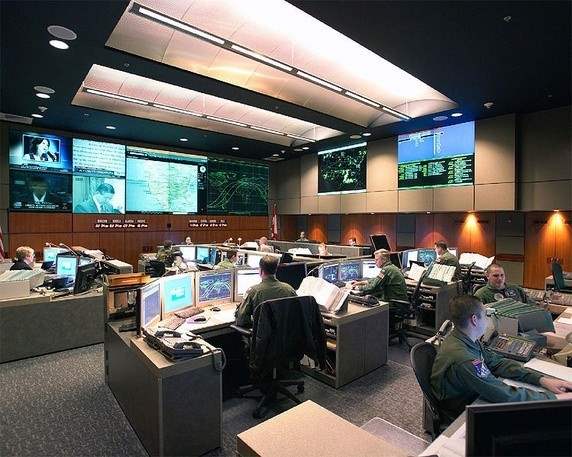
They may well have other underground facilities that are secret.
You need these even with a conventional war too. After all the UK had underground command posts in WWII, and that was well before nuclear weapons. The Churchill WW2 underground bunker is a tourist attraction now in London.
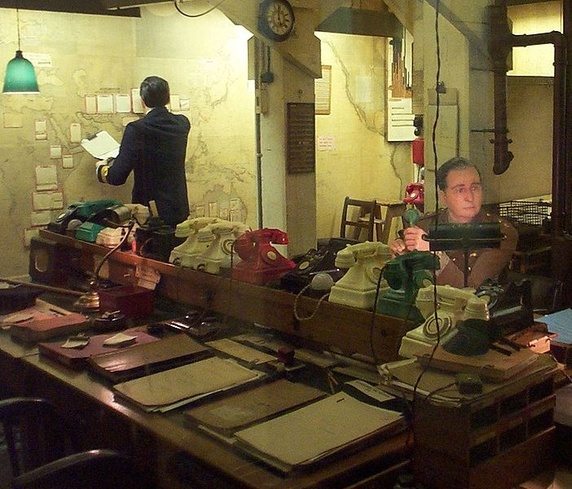
Map room in the underground Churchill War Rooms in London - from WWII, now a tourist attraction.
So yes, governments do build underground bases. And NO - that does not mean they are preparing for Nibiru! The whole idea of Nibiru is bonkers so for sure no government is going to waste even a moment of thought about it.
These photos and videos are nearly all lens flares. Some are offset lens reflections. If you haven’t tried it before and attempt to photograph the sun then the extremely bright light overwhelms your camera optics and causes all sorts of strange effects.
Some of them are photos of the sun lighting up clouds in bright spots. Apparently many people have just never looked at the sky much before and are not familiar with the way the sun can light up patches of cloud anywhere in the sky.
It is easy to check that we have only one sun and that there is no other bright object close to it. Go out any clear sunny day and block out the sun with one finger (don’t stare at the sun as it can damage your eyes without you knowing until later). Do you see a second sun next to it? Look to either side then hold a finger in front of it horizontally and look above and below as well.
If you look online you will see many alleged photographs of a “planet” next to the Sun. So first, let’s see why the very idea that you could photograph a planet next to the sun is absurd. If the planet is closer to us than the Sun, then it will be lit from behind.
A very young new Moon looks like this, as seen from the ISS:
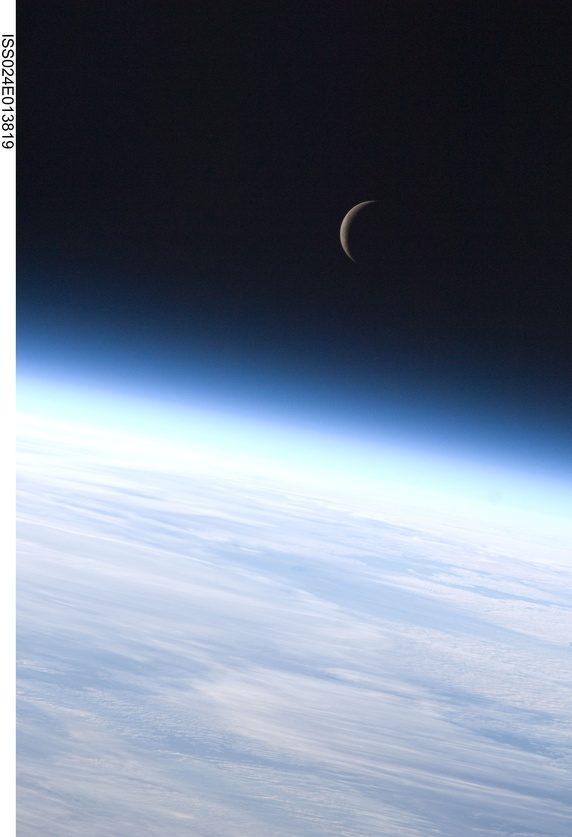
The sun must be just off the picture to the left of the Moon since it is lit from the left and behind.
If you are lucky enough to watch a partial or total eclipse, you see the Moon pass in front of the Sun, and it is totally invisible until it starts to block out the Sun because it is lit from behind, and the clouds and the scattered light that makes the sky blue is between us and the Moon:

You can also see this with satellites - here is the ISS crossing in front of the Sun, notice that you only see it when it crosses the Sun itself and then you see it as a shadow not a bright object
So if you see something like this, Melissa Huffman’s video which got a lot of attention from those who believe in Nibiru:
Then whatever it is, it can’t be a planet close to Earth.
We do sometimes see planets in the daytime sky when they are at the far side of the Sun. This is a picture of Venus and a new moon in the daytime sky
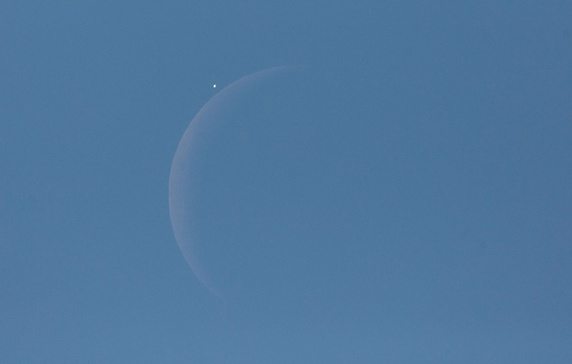
As you see, Venus is a tiny tiny speck of white. You can see it if it is far from the Sun and the sky is a bit dark. You can even see Venus and Jupiter in the daytime sky, but to see it you need to block out the Sun and then you may spot it as a white spot against a blue sky that is nearly as bright as it is. It’s hard to spot, you need to block out the sun and know exactly where to look to see it. It’s even harder to photograph.
For more about seeing Venus, or Jupiter in daytime with photos, see 10 surprising space objects to see in the daytime sky | EarthSky.org
So, whatever Melissa Huffman saw, it was not a planet. So what was it?
Mick West has looked at her video carefully, recently, and come up with an explanation.
First, he stabilized her video, as you can see here:
If you look at it carefully you can see that her sun sized "planet" is actually moving slightly relative to the clouds. Not nearly as much as the obvious lens flare, but in the same direction. So it can't be a sun mirage but has to be something much closer to the camera.
He then showed that you can get the same effect by putting a sheet of glass in front of a camera at an angle. So it would be easy to hoax a video like this.
This doesn't mean her video is a hoax - it could easily be that it's a result of misthreading a filter on the camera. Or a result of taking the video through a window.
If you engage the threads incorrectly, at an angle, then the glass of the filter will be at an angle to the lens, and then you'll get this effect. He shows that with a cross thread on his own camera which causes a similar double sun, complete with photo of the effect.
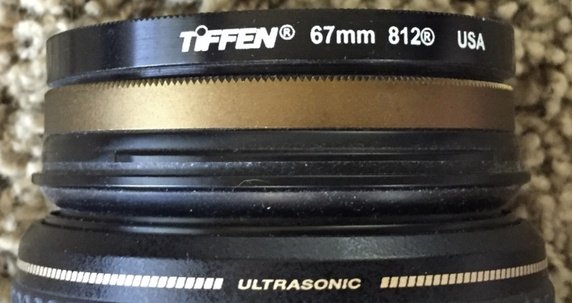
Cross threaded filter - easy to do when you put it on in a hurry - causes a similar double sun effect. Photo by Mick West
Just as with her video, when you zoom in on the image, it expands. And is sharp and clear like hers.
It is easy to check something like this if it happens to you. You can do the same test as for lens flare, put your finger in front of the sun and it will disappear - that is unless it is behind a window, in which case, just open the window.
Also if you rotate the camera then it will move if it is a cross threaded filter. It only stays in the same place in the sky if you keep the camera reasonably vertical all the time.
He goes into details here: Explained: Two "Suns" Sanibel Causeway, Florida [Offset Lens Reflection]
Incidentally it’s more strictly speaking, an offset double reflection. The light comes into the glass from the sun on the far side, hits the near side of the glass, bounces back through “internal reflection, hits the far side then comes back to your eye or your camera but now it’s offset because of the angled glass and those two reflections.
This is one of the Mick West’s images, where he created an offset lens reflection artificially:
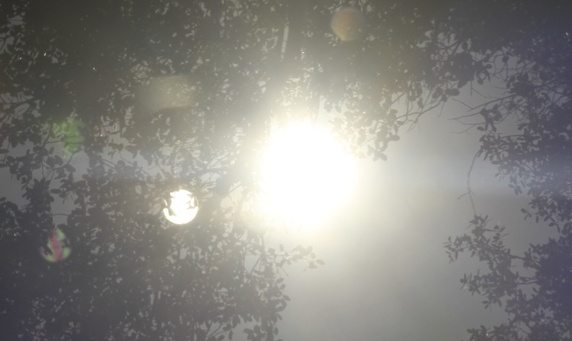
Note that the main image of the sun is irregular and fuzzy because the sun is so bright it overwhelms the camera. The offset reflection is much less bright so can be photographed as a perfect circle. It’s round because the sun is round. The offset lens reflection can even seem to be behind leaves as in this example - that’s because the original is behind leaves as well which you can’t see because it is so bright. See Explained: Two "Suns" Sanibel Causeway, Florida [Offset Lens Reflection] for the details
This is another example of an artificially made offset lens reflection using glass attached at an angle in front of the camera
However that’s only if you have a sheet of glass attached at an angle to the lens -either to do it deliberately, or a cross threaded filter, or a transparent lens protector (on a mobile phone camera, say) attached at a slight angle.
If you take the photograph through a window, then the offset lens reflection will stay in the same position as you move the camera.
See also my Simple Ways To See Nibiru Is Totally Nuts - And Limits On Planets Hiding In Our Solar System
Offset lens reflections can be particularly puzzling if the sun is reflected in the sea or a lake, because the reflection in the lake can get offset and reflected in the lens as well to create an effect like this:
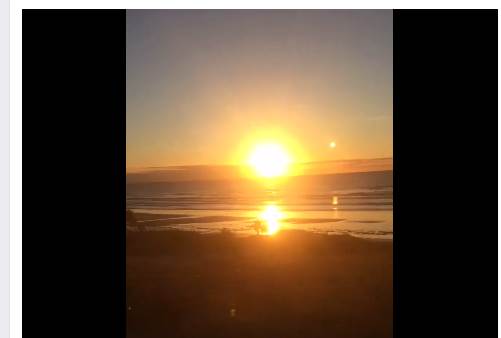
It may look as if the light to the right of the sun is reflected in the sea. But it’s in the wrong position for that. The bright light is higher above the sea, so if it was a real reflection its reflection should be further down like this:
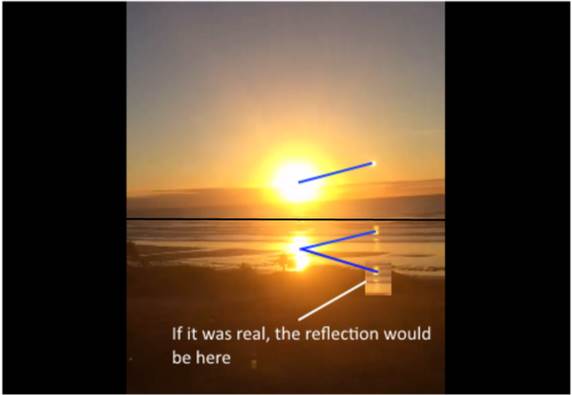
What’s happening here is that the real reflection of the sun is very bright and is copied to the new position above and to the right of the sun.
If you look really closely at the supposed reflection of the second sun, it is not matched with the ripples behind it:
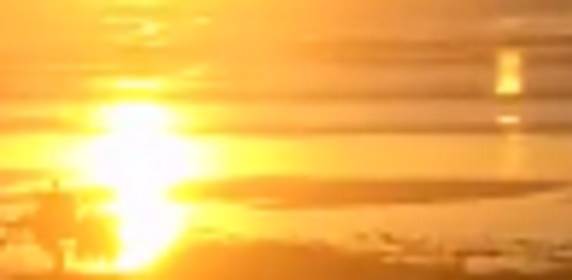
The supposed reflection of the “second sun” here is just an offset lens reflection of the real reflection to the left, shifted up and across. The real reflection looks larger because it is so bright it overwhelms the camera.
This photo comes from a quora question: What is this bright object next to the sun?
Many of the videos and photos are of lens flares. Since some lens flares move and others don't, or not so much, it is easy to think that the one that doesn't move is "real" but it isn't.
It is easy to test for lens flares.
As he says, so many people get fooled by this. Some are probably intentional hoaxes, some confused, in any case they don't have a clue.
When you get effects like this, it shows that there was too much light for the camera to handle and the bright light bounced around inside the lens system creating lots of bright spots and lights. This happens very easily if you point a camera at a bright object.
The basic reason for this is first, because the different frequencies of light are refracted by different amounts. So if you just used a plain glass lens, then maybe red is in focus and blue isn't, leading to rainbow effects. Cameras use complex lens systems to make sure all the light focuses at the same point. Also it may have a telephoto lens which obviously is going to be much more complex to allow it to focus and magnify as you zoom in.
Even with a simple lens, light can bounce around inside it through internal reflections. With a complex system of lenses such as modern cameras usually have, then it's no surprise at all that you get lots of complex patterns of light like this when you point it at something bright enough for some of the light to bounce back from the many internal surfaces inside the lens.
Another thing you often see, shared as “Nibiru” is just the sun shining on clouds. If you live in a place that has many clouds and you are someone who watches the sky, you are probably used to this sort of thing:
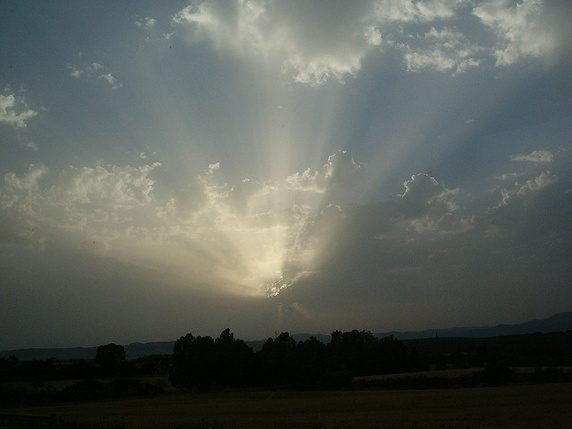
sun & clouds, photo from Flikr by funca88. This shows rays of light from the sun shining through gaps in the clouds and lighting up other clouds. On a day like that you may well get bright patches all over the sky - often directly opposite the sun too. I live in the west coast of Scotland, a place that gets lots of cloud of this type - this is just a normal sunset for me. However from the YouTube videos of “Nibiru” shared online it seems that to many people, this sort of thing is not so familiar to them. They share any bright light shining on clouds as “Nibiru”.
Isn’t this a marvelous illusion of two suns :).

You can see what it is from this zoom in on the apparent second sun at the left:

It’s just a reflection of the sun in the windows of a skyscraper. I was totally baffled by it when I first saw it, having lived most of my life in rural areas or small cities without skyscrapers. But if you live in a place with skyscrapers you probably recognized it immediately.
For more on this See Debunked: This is a photograph of two suns
You also get many fakes, which are easy to do nowadays with video editing tools. This is one of them, so silly I think it must be meant as a joke:
But you’ll find many such. If you’ve seen any science fiction movies you probably know how easy it is to fake videos of things in the sky with modern CGI techniques. Indeed, what’s surprising about the Nibiru hoax videos is really how lame many of them are. It is really easy to do a Nibiru hoax and people will do it just for fun as in this example - I think it is just a joke because there are no ads showing on the video.
Or they may be done for the ads - trying to get lots of views and clicks on the ads which can earn the uploaders thousands of dollars of YouTube ad revenue if they get millions of views.
Debunked: How can the videos and photos be hoaxes when so many people believe them?
Nibiru enthusiasts often find unusual looking objects in Google Sky and claim they are Nibiru. For instance, here is a very long post by a Nibiru enthusiast claiming to have found Nibiru in Google Sky in the Infrared

It’s actually the Peanut Nebula around the carbon star CW Leonis. It's a striking object in infrared, the brightest object in infrared outside of our solar system. But it is absolutely no threat to Earth. It's between 390 and 490 light years away. It's so far away that when we look at it, we see it as it was four centuries ago because that's how long it takes light to get here from there. You can see it on google sky here
Don't stare at the sun to see if you can see Nibiru. Newton stared at the sun for an experiment and he lost some of his vision for a fair while. Eventually he got it back but you might not be so lucky - some people get permanent vision loss in this way.
The radiation that damages your eyes is mainly UV light - and this is not visible. So even if the sun looks dim, behind clouds for instance, you don't know if it is safe without a UV light detector. Infrared also harms your eyes especially if viewed through binoculars or a telescope. And there are no pain receptors in your retina - and the damage often shows up only some time later - you may think everything is fine but then gradually lose vision.
Just don't do it. It is reasonably safe when the sun is right at the horizon with a flat open horizon - which is why people don't lose vision staring at a beautiful sunrise or sunset - but even then best not to stare for long.
So don't stare at the sun. If you want to check if we have two suns, just block it out with your finger. Then, do you see another sun next to the sun? No? Then you have disproved this idea that there is a second sun visible in our sky, which some of the Nibiru believers think. Some of them believe it is not just an extra sun, or a planet, but an entire separate solar system consisting of a sun with several planets, hiding behind our sun, but from time to time visible next to it.
It is of course possible for lots of people to believe something that’s false. Up to the middle ages nearly everyone was totally sure that the sun circled the Earth as did the planets and the stars too. In 2012, by some figures 10% of the Earth’s population thought the world would end. For more on this, See debunked: How can it be false when so many people share photos of “Nibiru” next to the sun or a second sun? by Robert Walker
on Debunking DoomsdayThis is just nonsensical BS. For more about this, See Debunked: Nibiru will hit Earth on [Insert Date here]
Written Nov 8 CommentShare
In your everyday life, who do you trust? Would you trust a stranger who comes up to you and says to you “You can trust me, I swear, and nobody else at all is trustworthy”? And if they then told you not to trust your friends, relatives etc, would you then accept what they say? Would you continue to trust them after you find that they say one thing after another that is completely false?
Or do you trust people you’ve known for a long time and who you know from your own experience are trustworthy? Do you trust people who say things that you then find out are true?
I think most people would trust people that have proved themselves to be trustworthy and wouldn’t trust the stranger they know nothing about. Yet somehow when they go on the web and see a video by a stranger who tells them to trust them, that they are telling the truth about Nibiru and not to trust anyone else, their common sense goes out of the window and they trust them and don’t believe what anyone else says on the topic.
They come to believe these two cents hoaxsters who know nothing about astronomy and they also believe them when they say that all the astronomers who have spent their entire professional lives studying astronomy are either mistaken, lying or paid to cover up the truth. All astronomers, world wide, the hundreds of thousands of amateur astronomers and tens of thousands of professionals in just about every country of any size. See Debunking: NASA is hiding astronomical information about extra planets and extra suns in our solar system and even an entire extra solar system
Even when the things people say in those videos are proven to be mistakes and hoaxes over and over, still those who are scared of Nibiru continue to trust that they are telling the truth and everyone else is lying. Even when they begin to realize that they have been duped, often they have a lingering suspicion that perhaps it might be true.
If you go back to the example of a stranger who tells you to trust them and not trust any of your friends and relatives - would you have even a lingering suspicion that they are right? No, of course not, you’d pay no attention to them at all.
So now part of it of course is that these online strangers are talking about things that your friends and relatives are perhaps likely to know nothing about. So how can you learn who to trust and who not to trust in an unfamiliar topic area?
Well first, do just try grounding yourself in common sense. If someone says we have two suns, no matter how stirring the music they use in the video, no matter authoritative sounding the voice over, no matter how dramatic the images - is this something that is credible? Could we have two suns and nobody notice? If you hadn’t seen those videos, surely you’d say no. So it’s a matter of grounding yourself in your own common sense.
Then - try testing them, just as you would that stranger. Do the things they say pan out?
As an example, the Daily Star ran a story saying that Obama had warned that solar storms could destroy all life on Earth. It is easy to check that what they say about Obama’s executive order on solar storms doesn’t match at all to what he actually said. So now you know that the Daily Star is not reliable in this topic area.
The Nibiru people often say things that turn out to be false when you follow them up. I give many examples in this blog. If anyone tells you that IRAS discovered a hidden planet - see my debunking article: Debunked: The IRAS infrared satellite found Nibiru in 1983. It is easy to check that what I say there is true.
So now - if anyone says that IRAS discovered a hidden planet - you know immediately that this is someone who doesn’t check their sources carefully. They are not good people to go to for information on astronomy and planets.
Debunked: How can the videos and photos be hoaxes when so many people believe them?
You will find other people who are reliable, who check their sources. The best of all are the ones that actually share their sources, so you don’t have to rely on just trusting that they remembered what they say correctly, you can click through and check for yourself.
For more on this, See Debunking: You can’t trust anyone except the Nibiru people - everyone else is a paid shill of the government or in some other way motivated to propagate falsehoods
Ask them, have they ever successfully predicted a comet or asteroid flyby? Have they successfully predicted anything astronomical? Have they ever predicted anything astronomical that the astronomers did not predict? If the answer to all that is no, as it surely would be, why listen to them?
You can also check many of the things they say from your own experience. It is easy to check some things. For instance it just takes two observations of the pole star, any clear night, to debunk this one:
Debunking: Inuit elders say that the Earth’s poles have shifted position
If you develop an interest in astronomy and learn about it properly, perhaps join your local astronomy club, you can soon come to see that the whole thing is just a tissue of mistakes, hoaxes, lies, and nonsense. For instance it doesn’t take all that much experience in star watching to debunk the idea that a planet can “hide behind the sun?” for years on end. Perhaps after your first year as an amateur astronomy - or right away if you have a a reasonable grasp of math, science and the basics of how our solar system works already. Debunked: A planet in a 3600 year orbit can hide behind the sun for years on end
For the reasons astronomers are so sure that Nibiru not only isn’t real, but that no planet or anything else as massive as a planet can be in an orbit like this, See Debunked: Nibiru will hit Earth on [Insert Date here]
You can also look at Who else says Nibiru is nonsense?
Other relevant articles:
and many others in my Debunking Doomsday
For support see our new Doomsday Debunked Facebook group and Where can I get support if I’m scared of Nibiru / Doomsday maybe even suicidal?
Written Nov 18I am often asked this - why should you trust me rather than anyone else? Well the the way forward is to learn to discriminate reliable from unreliable sources and to learn to check your sources.
For instance, on the Obama solar storms story, try to find a link to his actual announcement. It’s an executive order, easy to find with a google search, here it is.
Executive Order -- Coordinating Efforts to Prepare the Nation for Space Weather Events
Although a bit technical, it says
“Space weather events, in the form of solar flares, solar energetic particles, and geomagnetic disturbances, occur regularly, some with measurable effects on critical infrastructure systems and technologies, such as the Global Positioning System (GPS), satellite operations and communication, aviation, and the electrical power grid. …”
Now go to the DailyStar which says 'Prepare for space weather DOOMSDAY' Barack Obama's stark warning to the world and the subtitle says “US president Barack Obama has warned of an apocalyptic solar storm that could WIPE OUT life as we know it.”
That’s obviously not at all what it is about. He was warning about effects on power supply and satellites and effects on health as a result of power disruptions - e.g. hospitals losing power supply, that sort of thing. He was not warning about a disaster that would wipe out life as we know it.
So you know now that the Daily Star is not a reliable source of information on this topic (it’s a red top tabloid notoriously unreliable and sensationalist in the UK).
Now also, if anyone else repeats this story to you, you know that they do not check their sources either, of course most people don’t. So that way you can learn who is reliable and who is not in this topic area.
(for more on this particular story, See Debunking: Solar Storms to end all life on Earth )
The Nibiru people often say things that turn out to be false when you follow them up. I give many examples in this blog. If anyone tells you that IRAS discovered a hidden planet - see my debunking article: Debunked: The IRAS infrared satellite found Nibiru in 1983. It is easy to check that what I say there is true.
You will find other people who are reliable, who check their sources. The best of all are the ones that actually share their sources, so you don’t have to rely on just trusting that they remembered what they say correctly, you can click through and check for yourself.
That’s what I call “rational trust” and “rational distrust”.
In the case of Nibiru, many of the things I talk about in my articles are things you can confirm from your own experience. You can go out any starry night and check that what I said about the pole star is true. You can also block out the sun with a finger and check for yourself that there is no other sun next to it. You can follow Jupiter through the night sky with your own eyes and you can also check for yourself that every constellation in the zodiac is visible all night at some point during the year.
Or you can go and check on any reliable astronomical site and confirm that they say those things.
You could try learning a little astronomy and then you'll see for yourself that Jupiter and any other planet can't hide behind the sun.
Then there's also "rational trust" - even with no astronomical knowledge, you can look at how various authors use the sources they cite to see if they are credible - people who it is rational to trust.
You don't have to verify everything someone says once you have shown to your satisfaction that they are reliable - once you have done that for a while you get to realize that they do read their sources. I have rational trust in what Phil Plait says about astronomy - he checks his figures and details and I've confirmed many times that he is an accurate author, and every fact he states that I've checked has been correct.
That doesn't mean that everything he says will always be correct, anyone can make a mistake, but my default assumption is that he is right. Also he gives his sources (as I do also) so if it is very important to me, e.g. I'm writing an article and need to know for sure it's accurate, I just follow up the sources and find out for sure for myself. If anyone is not sure about any of the sources also they just need to ask and I'll give more details. I do make mistakes also sometimes, and when people point them out I fix them.
On the other hand with these Nibiru stories, when you follow up the sources, their sources usually directly contradict what they say. E.g. someone wrote a huge long page about an object in Google Sky which he claimed was Nibiru.
It is easy to check for yourself that this object is in facts the peanut nebula, you can check the co-ordinates for the peanut nebula for yourself, and verify that it is indeed the object on google sky which they picked out which then you can recognize visually to be the same object. It is a distant object about 400 light years away. Once you find that someone has written a great long article about an object 400 light years away claiming that it is a planet in our solar system and building a big elaborate story around that, you can be pretty sure this is someone who doesn't check their sources well. Maybe they don't even know how to do that - and so it is rational to distrust them. So that's "rational distrust".
So - it's not saying at all that they are untrustworthy as a person. Perhaps they are upstanding citizens that have never stolen, never told a lie, and sincerely believe everything they say. But that what they say on the topic of planets can't be trusted to be accurate as they don't know how to discriminate between an object 400 light years away - so far away that it takes light 400 years to get to our eyes from it, and an object in our own solar system. Perhaps it is because of things they don't understand and that nobody has explained to them. Or it might be that someone tried to explain and they didn't understand what they were saying or they were not listening. Perhaps they have never had any scholarly training and never learnt about the need to check sources.
It doesn't matter what the reason is. For whatever reason, they are then people to cross of your list of reliable sources to read in astronomy :). Unless of course they find out that they have made a mistake, admit it and learn the subject properly. Until then, it is rational to distrust them in matters of astronomy.
I posted these videos to the comment thread in my Imaginary Bullshit Nibiru article, and some found them helpful.
Here is the Ringu Tulku video I mentioned at the end of that last video.
Written Oct 23 CommentShareI think this is one of the worst things about the Nibiru hoax, that the people who get scared of Nibiru feel there is nothing they can do.
If it was a real predicted asteroid impact or comet impact, you could follow it every day. Astronomers would know exactly where it is and could give detailed predictions of its position. They’d have been following it for more than a decade and would say, e.g. “Look in the night sky three hours before sunrise and you will see it in such and such a constellation”. They would know where it is every night of the year, and as they refined their observations, could predict exactly where it would hit on Earth and when exactly to the minute. They would know what the effects would be, and there would be people working on ways to deflect it too. As the impact date came closer, if we hadn’t managed to deflect it, you would have instructions to evacuate the impact zone, warnings for those further away to stay indoors, keep away from windows to avoid flying glass, and so on.
But instead what you are scared of is a made up thing, like HCT2014 (Huge Chocolate Teapot). This is a parody of many of the Nibiru videos, by Dazzathecameraman - shows how easy it is to make a hoax video like this.
Because it is not real, like HCT2014, there are no details about it, can't be. Or rather there are plenty of details but they are not consistent. There are just lots of people saying contradictory things. You could make another video about HCT2015 and HCT2016, and following this pattern could make HCTnnnn videos for ever.
There is nothing you can do about it either, except panic again because it isn't real. You have no idea where to look for it in the sky except a vague instruction that you might see it near the sun at sunrise or sunset - but there again it might appear briefly in the West at sunrise or North, South, East, or anywhere in the sky, keep looking and you never know when you might spot it. There are lots of what seem to be details about it, and lots of dates given but they are always wrong, again because it isn't real and the people who make up those dates are just spinning stories out of their imagination.
Then having been told this by conspiracy theorists, they then tell you that astronomers will lie to you about it, and are all paid to lie in this topic area. Or that they will lie because they don’t want to scare you.
That’s absurd given that there are hundreds of thousands of amateur astronomers worldwide in just about every country worldwide, probably millions of amateurs, and tens of thousands of pros. For more about the huge numbers of astronomers, amateur and professional worldwide, See Debunking: NASA is hiding astronomical information about extra planets and extra suns in our solar system and even an entire extra solar system
And asteroid detection is done in an open way, and there is no way that such a thing could be hidden, not when anyone can point a decent sized amateur telescope towards a comet or asteroid and see it for themselves. A planet would be a naked eye object, visible for all except one month of the year when it hides behind the sun. There is just no way it can be hidden. It is easy to check for yourself. Just go to the Sentry Risks Table here Current Impact Risks. It is colour coded, and sorted with the highest risk at the top, so easy to check. Anything white or blue is no threat at all. If you ever see a yellow entry at the top, that means it is a potential risk, but the chances are high that it is a false alarm. Only if you get an orange or red is there a real risk. That has never happened to date. If it goes orange or red, you won’t need to hunt around to find out information, it will be on international news and all astronomical web sites. And if there is an actual impact predicted, you’d get warnings to evacuate the impact zone.
This is very unlikely to happen though. In all of recorded history we have had many volcanoes, earthquakes, tsunamis, but never had a major asteroid impact on a populated area. Indeed not even in a desert apart from meteor crater in Arizona 50,000 years ago.

This is the most recent large impact on land, Meteor Crater - Wikipedia in Arizona. It happened 50,000 years ago. It landed in a desert and most of Earth is desert or ocean. An impact this large if it landed in the middle of a city would be devastating and kill millions. But such impacts are very rare indeed, and the chance of one hitting a populated area is even smaller. We’ve had many disasters in history due to volcanoes (e.g. Pompeii), tsunami, earthquakes. But we haven’t had a single recorded example of large numbers of people dying due to a meteorite impact. That shows how rare impacts are.
Though they are so rare, it is well worth our while to do astronomical searches for asteroids that could hit Earth. Unlike any other disaster we’d be able to predict the time and position of the impact to the nearest minute and to within kilometers given a long enough timeline to refine the orbit. We’d also be able to deflect it too. It’s the only natural disaster we can predict so precisely and can also prevent. But it’s not something to be scared about, less likely to die this way than from lightning, or tornadoes. Also traffic accidents of course or medical issues are far more common than either of those.
But if you don’t have much background in astronomy, you may come to believe that all astronomers are lying to you. You desperately want to know where it is, and when it will hit Earth, and the astronomers can’t answer those questions, because it isn’t real. So then you go back to the conspiracy theorist websites and you may be so scared you believe anything anyone says about it.
If you do this you will end up being scared for the rest of your life or as long as it takes to realize that you have been had. The conspiracy theorists are not limited in the way astronomers are. They don’t need to work out orbits, or to track it with telescopes. They just make up dates out of their imagination. Which means they can pick any date. Sometimes they will pick dates that have some astronomical meaning, e.g. an eclipse of the Moon or a super Moon, or eclipse of the sun. Sometimes they just pick a date at random. Sometimes they give a range of dates, e.g. it will happen some time in the spring. Debunked - Nibiru will hit Earth between January and March 2017 - or any range of dates like that
So, again because it is not real, there won’t be any end to people making up dates. Because there is no real data to limit them in any way. They can keep on making up these dates and there is no sign of them giving up. It’s increasing if anything. Originally it was just Nancy Lieder in the business of making up dates for Nibiru to hit Earth. Now dozens of people have joined in and it’s become a money earner on YouTube. If you can make a doomsday video that scares lots of people you can earn hundreds of dollars a month from the ad revenue or even thousands of dollars if you can get into the millions of views a month. It may also get picked up by journalists in search of “silly season” stories and then you have it made financially for a month or two.
So that's why it ends up being so scary - precisely because it isn't real and makes no sense astronomically. That’s also why you can’t do anything to stop it, because it isn’t real. Praying and hoping won’t help either, as the people who make up these stories won’t be influenced by your prayers and hopes. That’s also why it is impossible for anyone with astronomical expertise to give any details about it. There are no details for anyone to give because it doesn't exist.
Meanwhile all this nonsense is distracting you away from the many real things that you can do something about. Things in your own life that you can do something about, and wider things as well like trying to get something done about climate change, asteroid impact and detection, or human rights or whatever larger issue there is that you want to get changed. And if you try to get the government to do something about Nibiru - again - that nonsense is distracting both you and the people who receive your pleas away from the many real things that you could be trying to get something done about.
Well take a look at what astronomers say about it. We are telling the truth. Eventually hopefully you can come to realize that we are telling the truth. See also
Debunked: Nibiru will hit Earth on [Insert Date here]
for the reasons astronomers are totally sure it can’t be real.
I understand that Nibiru is not real but still feel scared all the time - what can I do? if you are still scared although you know it is not real.
Who else says Nibiru is nonsense? for the reassurance that big name astronomers say it is nonsense
Where can I get support if I’m scared of Nibiru / Doomsday maybe even suicidal? to get support
Debunking: Inuit elders say that the Earth’s poles have shifted position - for one of the conspiracy theory myths which you can debunk with your own eyes, easily, any clear night. This may help you to understand how astronomers can be so sure that the conspiracy theories are just nonsense. They are all as daft as this one, but this one is one of the easiest to see is false for yourself with your own eyes with minimal understanding of astronomy.
Debunked: A planet in a 3600 year orbit can hide behind the sun for years on end - a bit of basic astronomy which many amateur astronomers would learn in their first year of their new hobby. Once you’ve understood this, you can see for yourself that the idea of a planet hiding behind the sun for years on end is nonsense.
And - generally I’d suggest learning some astronomy, real astronomy, not this “pick a date and invent a story around it” parody of astronomy that you see on the Nibiru websites.
Written Wed CommentShareBack then we didn't have the internet and many people believed this hoax, especially as it was narrated by a very respected presenter in the UK, Richard Dimbleby, as respected in the UK as, say, David Attenborough is today. Also spaghetti wasn't nearly as common or as easy to get hold of in Britain as it is today, and back in the 1950s many people in Britain simply weren't aware that spaghetti is made from pasta. It was so convincing, some people phoned in asking where they could buy spaghetti bushes to grow this exotic delicacy in greenhouses, and eat it fresh themselves, as in the video. For more on it see 1957: BBC fools the nation.
So, it wouldn't be surprising at all if some at least of the "Nibiru videos" are fake, or enhanced, because with modern technology such fakery is very easy to do. There are many internet hoaxers out there, who do this sort of thing either for fun, or to advertise a product or a movie, or just for the ad revenue on the video. They may get a significant income from ads if they can make a video that gets shown to millions of people.
This is an example of a well known recent internet hoax which fooled a lot of people
.
The person in the video has never even flown in a wingsuit, as he later admitted.
This is about how it was faked
And the whole thing was done just for the product placement in the shower scene part of the way through.
With all this nonsense about Nibiru, some people have done what they intended to be harmless pranks, just to have their videos and images propagated all over the internet as real.
Dramatic Chipmunk :)
If you read the conspiracy stories about Nibiru, you've probably heard of the mysterious kidnapped and murdered Professor Kaplan, and the chip with a recording of his observations of Nibiru which was found by someone and uploaded to YouTube.
Here "Professor Kaplan" talks about why he did this hoax video originally as a silly prank for his pals, and his attempts to get it taken down - which only fueled more conspiracy theories about the video.
As he says, he isn't actually a professor, he's an astrophysics student doing a doctorate and has to wait for fifteen minutes for long exposures at his observatory. He did it as a joke during one of those long waits twiddling his thumbs with nothing to do. So he wasn't wasting precious observatory time or his own time when he did it. It looks very authentic because it is not a set, it is recorded at an actual observatory. But he didn't do it for YouTube or for public viewing.
He left two clues that it is a joke in the video including an email allegedly from someone else shown as addressed from "Me" to "Me" in a close up shot, and a quiet chuckle at the end of the video as he gets "abducted". Plus of course him being still alive and giving a skype interview after the joke "abduction" at the end shows it is a joke :)
This is an early hoax image from 2003, very rudimentary. The tiny white dot is supposed to be Nibiru.

The author of it - or at least someone claiming to be the author - posted to forums soon after saying it was a hoax. But many didn't believe him and it is still available online as an alleged photo of Nibiru.
I'm not sure which of the more recent photos and videos are fake, but surely some of them must be. Or digitally enhanced to make it look more like a second sun or planet.

This rather dramatic image has gone the rounds a bit and been posted as a photograph of a double sunset in China. There was indeed a double sunset in China as we'll see, but this is not it. It's actually an artist's impression from NASA of a double sunset over an alien planet.
Many news stories ran this one, based on a YouTube video which someone uploaded, this time with the title "EXCLUSIVE BLOOD RED MOON and NIBIRU August 21st 2016". This is a detail of a screenshot from the video.
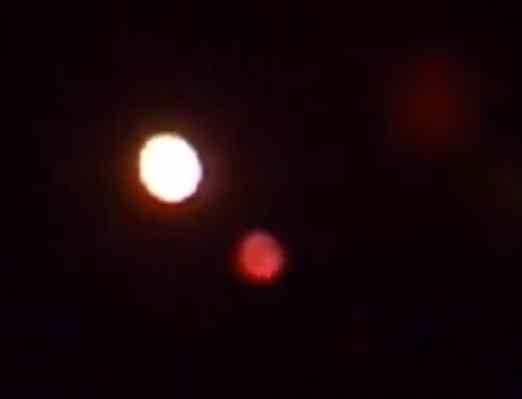
The authors claim that this video shows a planet next to the Moon casting a red shadow on it, and that it was taken on three separate nights in August from Pennsylvania showing a bright object visually as large as the Moon next to a blood red Moon. It may seem quite impressive unless you've heard of offset lens reflections.
This is how to simulate it with a glass slide on an iPhone.
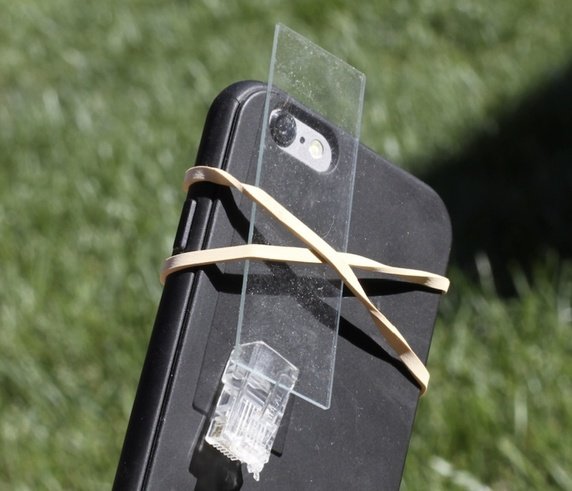
It can also happen accidentally - the transparent protector for the lens may be misaligned, or with more advanced equipment you may have a misthreaded filter, or you take the video through a window. In most of those situations (except the video through a window), you will notice that if you rotate the camera, the offset lens reflection rotates with it.
For more about this see Kudos To "The Independent" Newspaper For Debunking Nibiru "Blood Moon" Hoax
You get many really duff photoshop videos on YouTube. I’ve chosen this one to share because all the comments on the video say it is nonsense so hopefully it is so bad that even if you are easily fooled you can see that this is nonsense rather easily.
They claim that the ISS photographed a 3000 mile wide UFO hovering over Earth and somehow nobody else noticed it except the ISS crew
Most of the YouTube hoax videos are really low quality like this.
Here is another one, not sure if anyone believed it :), very amateur stuff:
I might share a few more if I can find them. But sometimes as with that “blood moon” video people still get fooled by them.
And yes, people do do hoax videos of Nibiru.
Written Nov 10 CommentShare
I get this often, people say - what if it is real, won’t you all feel so stupid?
Well that’s like someone saying to me “What if it turns out that you have had a cow in your kitchen all your life and you never noticed, how stupid you will feel?”
Yes I would feel very stupid if I suddenly found a cow in my kitchen which had been there all my life, for sure. But it ain’t going to happen :).
And instead, think how stupid you will feel, 20 years from now, if you’ve been scared of Nibiru for twenty years and nothing happened.
It might help to hear this account of someone who used to be very scared of Nibiru, upturned their entire life as a result, and then gradually realized that they had been had by a hoax. An intelligent guy too, a computer programmer, used to logical thinking, he talks about how that logic went out of the window once he got so scared of Nibiru.
See also I understand that Nibiru is not real but still feel scared all the time - what can I do?
And for why astronomers are sure that Nibiru is just nuts, see
Debunked: Nibiru will hit Earth on [Insert Date here]
Written Oct 27 Comment ShareThat's normal. The people who contact me about this often feel scared for a fair while after they realize intellectually that it is nonsense.
The best thing to do, once you are sure it is nonsense, is to just stop clicking through to read the stories. They have an effect like propaganda, or like advertising, especially as they also use stirring music, a lot of them, and impressive sounding voice overs and images that you find impressive. All this works on you and if you don't have the astronomical background to see that it is just BS, then you come to get scared just through repetition. You can come to believe things that common sense would tell you is nonsense such as that we have two suns, just through repetition like that. If you stop clicking through, then they will gradually disappear from your feed. You can also do other things to help.
You may get a false impression if you tend to click through to read stories like that, because Google adapts to your personal preferences, if you are logged into a google account at the time, and it does that even if you are logged out too. So you may well get many more stories about those things appearing in search results than most people. Normally these stories just don't turn up at all in normal searches unless you search for them explicitly.
You can deal with that if logged in by clearing your web search history or just pausing it, and if logged out, you can disable the feature to use your logged out search history to customize searches.
Of course this may mean that you get more search results that don't interest you in other topic areas. Up to you whether that is worth it for getting fewer of these hoax / urban legend results. You can also just pause it for a while to see how much your search results are influenced by search histories, then re-enable it.
This is a YouTube video about it:
The information there though is out of date. When signed out you go to
https://www.google.co.uk/history/optout.
to opt out of personalized searches
and when signed in, you go to https://myaccount.google.com/activitycontrols. which lets you pause YouTube search history (using the blue slider) and also Web and App activity. If you do that you should get much fewer results of this type in google searches or on YouTube.
If you want to make a complete fresh start, you can delete your search history. But then for a while your searches of course won't be tailorized to your preferences. Then just don't click through to the stories about Nibiru, Wormwood etc if you ever see them and they will soon disappear completely.
You should then just see normal search results without these stories like everyone else who has not got caught up in this.
Or more gradually, you don't need to do anything except to just stop clicking through and over a period of time, they will disappear from your search results as you show that you are not interested in them.
Don’t visit “Before it’s News”
Also if you get scared about such things easily, I recommend that you don't visit "Before It's News" because that's a notoriously conspiracy theory slanted site where anyone can post anything with no vetting and no checks at all about whether they are truthful or if the whole thing is just made up for clicks.
Hide Nibiru stories from your Facebook news feed
On facebook, you can customize how it prioritizes stories for your news feed. You can also click on the menu at top right of any story in your news feed and choose to hide it and to show less of this type of story.
If you are scared all the time, or a lot, as happens so often to many of the people who contact me, it's also definitely worth seeing your doctor if you haven't already.
As an example of the sort of thing many people nowadays have generalized anxiety disorder, just tendency to be anxious all the time. If so, there's a lot they can do to help - self help, cognitive behaviour therapy, meditation, medicine which help with the serotonin levels in your brain. Details here: Treating generalised anxiety disorder.
Some of the people who contact me about these fears find it helps to visit a doctor so it may be worth a try. Gets you over the difficult rough patch when you are just scared all the time, to get a bit of a break from all that fear and to begin to see things in a different way.
Surely we all know of examples when we were afraid of things that were not dangerous to us. One of the funniest is when young children become afraid of their own shadows.
As another example, probably not the same thing at all but as an example of how we are dependent on our bodies, and how you shouldn't believe that you are going to die just because suddenly you feel convinced that you are about to die - you can become totally convinced you are about to die if you get stung by a particular tiny jellyfish the irukandji jellyfish

Small box jellyfish, possibly Carukia barnesi , one of the jellyfishes responsible for irukandji syncrome. Photo Carukia barnesi - by Forgez Wikipedia (there are many other photos of Carukia barnesi but I can’t find one right now that has a suitable sharing license to include here)
You can read the story of its discovery here: Irukandji Jellyfish. Carukia barnesi
This jellyfish is not dangerous to most people, if you get out of the water and get treatment, but for some reason people who are stung by it become convinced they are going to die, although they don't.
See Apparently There’s a Jellyfish Whose Sting Causes Feelings of Impending Doom
You can get a similar feeling if you eat too many nutmegs, like huge numbers of them. See feeling of impending doom.
It might help to hear an interview with a former believer who managed to work through the panic.
You are also of course welcome to talk to me, via the comments threads on any of my articles, and if it helps to contact me via pm you can contact me via my profile page on Quora. It is easy to join and then you should see an option there to message me.
There are several facebook groups too where you can post for feedback from knowledgeable people who will help debunk a video or image you have seen which scares you:
You can also join our new and lively
See also Where can I get support if I’m scared of Nibiru / Doomsday maybe even suicidal?
Written Oct 26 CommentShareSummary: It’s hyperbole . Humans use hyperbole all the time. Exaggerated metaphors for the purpose of evoking strong impressions and strong feelings. It’s not a literal “Doomsday”.
Details
I sometimes get messages from people who are scared because of a story that uses the word “Doomsday” in the title. There were many stories like this after the Brexit vote in the UK, e.g.:
They are not saying that the world is about to end. This is use of the word “Doomsday” as hyperbole. It’s like when you say “I am so hungry I could eat a horse”. It doesn’t mean that you could literally eat an entire horse.

Camargue horse - photo by Wolfgang Staudt. If you use the phrase “I’m so hungry I could eat a horse” you don’t mean that you could literally eat an entire horse and indeed you might well be someone who wouldn’t think of eating horse meat at all (e.g. here in the UK where meat eaters have a cultural reluctance to eat horses), but you still use the expression. It’s an example of hyperbole, an image that is exaggerated for effect.
It’s the same for the Doomsday Clock. This is a clock which measures how close we are to some global disaster such as climate change or global nuclear war. It is not a literal time period. At present it is at three minutes to midnight. The last time it was at that point was in 1984.

Timeline for the Doomsday Clock
A group of scientists come together to decide where to put it. It’s just a number and not a literal time period. This is the announcement for 2016
So it is a way that scientists can express their concerns about global issues. The idea behind the clock is to warn politicians and to help avoid global disasters. Note that the speakers also use a great deal of hyperbole there. E.g. talking about the risk of a Russian attack turning the US states into nuclear ash. That’s not literally true. An all out nuclear war would lead to devastation of many US cities but many people would survive, just as many did with Hiroshima. The radiation levels would also soon return to close to normal as for Hiroshima except for a few hot spots. Similarly when they talk about “blowing up the world” again that is hyperbole and not meant to be taken literally.
Normal human speech is full of hyperbole. And even in situations like this then it just comes naturally to people to use hyperbole and you need to keep that in mind. The reason they use hyperbole is because they want to evoke strong feelings amongst listeners to do something about it, and in such situations then you expect hyperbole.
Hyperbole is not deception. It’s said in such a way that it is supposed to be easy to spot, as when you say “I could eat a horse” there is no way anyone could take that literally. It’s the same with all instances of hyperbole, the idea is to use an expression that is so exaggerated that (hopefully) nobody could take it to be literally true. Similarly when they talk in that video about nuclear weapons “blowing up the world” or “turning the US states to radioactive dust” then that is not meant to be taken literally. It’s meant to be so exaggerated that it is obvious hyperbole as a figure of speech. We don’t have any weapons that could do either of those things.
It can go wrong if someone takes it literally.
And even an all out nuclear war would not be a literal doomsday. See my Debunked: A nuclear war would make Earth uninhabitable - and humans extinct and Debunked: Climate change will make the world too hot for humans
Written Mon CommentShareThis section contains anything that is not based on science, apart from Nibiru / planet X etc. I include pole shifts here although they are usually treated as one of the symptoms of Nibiru on the conspiracy websites.
We have a full Moon every 29 days. This one is slightly closer. It’s not hugely closer - it’s like the difference between someone 114 meters away and someone 100 meters away. As so often with astronomical events, we get the conspiracy theorists claiming it somehow endangers the Earth, this time based on numerology related to the date that separate state of Israel was created. Here is a screenshot of the google search results for super moon of November 14th .
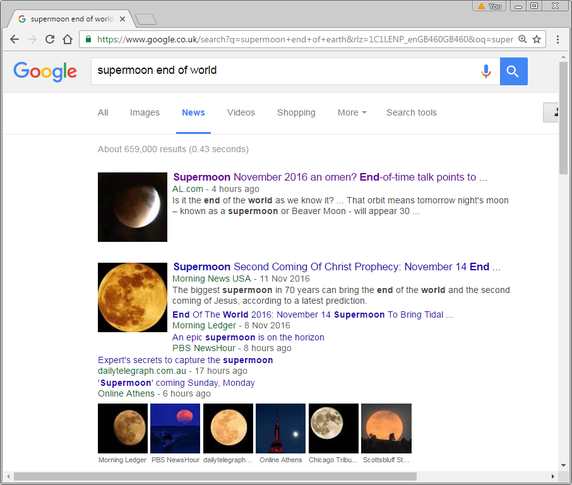
It is absolutely no danger at all.
It's not an approach in any sense of the word. The Moon is in a stable orbit around the Earth which is in a stable orbit around the Sun and both have been in those orbits for billions of years. And the Moon used to be a lot closer when it first formed. It is very very slowly spiraling outwards. It is not moving inwards at all.
Also supermoons themselves are common too. This is just a particularly close supermoon. The distance between the center of the Earth and the center of the Moon will be 221,524 miles (356,509 km).
It gets even closer on November 25, 2034, a distance of 356,445 km or 221,485 miles. And even slightly closer again on December 6, 2052: 356,421 km, which will be the closest supermoon of this century, though the ones in 1930 and 1912 were slightly closer still. For all the figures, see Closest supermoon since 1948! | EarthSky.org
Great to watch it if we get a starry night. But don't expect too much. It is only slightly bigger and you may notice no difference. More noticeable if close to the horizon. For more about it, a scientifically accurate article, see We’re about to see a record-breaking supermoon - the biggest in nearly 70 years
However it’s also 30% brighter than usual so that is a bit more noticeable. It’s most striking if you contrast it with its opposite, the micromoon, when the Moon is as far away as it can be:

It is a great time to test to see if you can see colour by moonlight :). Some people can, easily, and some can't at all. But a supermoon is your best chance of seeing colour because it is as bright as it can be. Take some brightly coloured patches of coloured material, paper or whatever - red, blue, green, yellow maybe, see if you can see any of them in colour. It's just fun to try. If you are like the majority of people you probably can't but some can. Can ask your friends see if any of them see colour. Obviously in a dark place without streetlights for a fair test.
As for why it is so close - well the Moon is in an elliptical orbit around the Earth. This means it has to have a closest point, the perigee and furthest point, the apogee.
Now when it’s orbit is aligned with the sun, the tug of the Sun’s gravity increases its eccentricity a bit more. The distance between the closest and furthest points doesn’t change (because it’s orbital period doesn’t change, which depends on the distance between the perigee and apogee), but the closest point gets closer to Earth and the furthest point gets further away.
So, when you have a perigee Moon exactly on the line from the Earth to the Sun (on the far side of the Earth from the Sun), then its orbit is also as eccentric as it gets, so it is also as close to Earth as it can get.
This also means you get the highest tides possible on a supermoon day.
So in short, look out for a bright Moon. Also, if you live near the sea, expect the high tides to be as high as they ever get.
5 keys to enjoying the closest supermoon | EarthSky.org
Written Sun Comment ShareThis was a hoax from 2012 and people still worry about it every year during the winter solstice. It’s just not true at all. First there are two things that get confused here - our position relative to the galactic plane, and alignments of the Earth with the galactic center and galactic equator as seen from the Sun. The first is just plain false, we are not passing through the galactic plane or anything like it, indeed we have been moving away from it for millions of years. As for the galactic alignment, yes there is an alignment, that’s true, but it is of no danger to us whatsoever. It is no more dangerous to you than pointing your finger or hand towards the Moon. Indeed, the galactic center is so far away that light that left it during the last ice age is only reaching us just now :). I’ll cover the alignment first as that is what I get asked about by scared people so it seems to be what worries them most about this.
This is different from galactic plane crossing. Galactic alignment is real. But of no significance to us.
It’s true that the sun does align with the galactic core in autumn. But it does that every year, It just means that Earth is the opposite side of the sun from the galactic core once a year and has no astronomical significance at all.
In the same way if you point your finger at the Moon you will create an alignment between your head, your finger, and the Moon.
December 12 is just a winter solstice, shortest day in the northern hemisphere, and this is the same every year. There is also an alignment with the galactic equator and a rough alignment with the center of the galaxy - but this also happens every year, indeed, twice a year, and is just a line of sight effect - like the way that your finger is between you and a mountain if you point at a distant mountain.
We are nowhere near the center of the galaxy. A couple of artist’s impressions may help. We can’t actually photograph the galaxy from outside because we are inside it, but we have a pretty good idea of how it is arranged through our observations of stars and gas clouds and the distances to them. It’s like this:
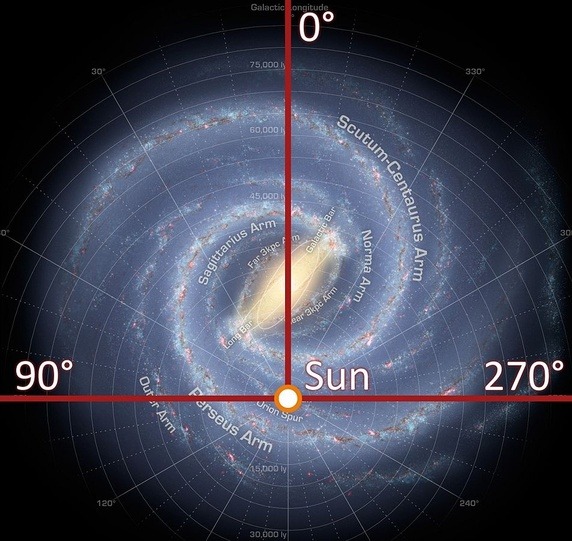
File:Galactic longitude.JPG - Wikipedia
Another view on it here
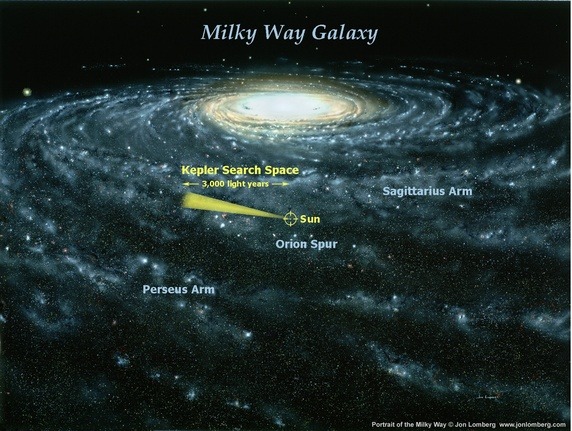
Kepler Search Space - this is an artist’s impression to show the direction in which the Kepler mission did an intensive search for exoplanets by looking for dips in starlight from planets passing in front -anyway it gives a good impression of our position in the galaxy.
Earth is orbiting the sun, roughly parallel to the plane of the galaxy. Sometimes it is on the far side of the Sun from the center of the milky way (at winter solstice) and sometimes on the near side of the Sun (summer solstice). It is so close to the Sun that on this scale you wouldn’t be able to tell it apart from the Sun itself.
Can you see that whether it happens to be between the Sun and the galactic center or vice versa is of absolutely no significance whatsoever?
This is the galactic center. The sky in that direction is particularly crowded with stars - most of those stars are very close to us, and we look through a haze of them to the very distant galactic center around 25,000 to 28,000 light years away. All those stars are between us and the galactic center along with many others that are too faint and distant to be seen. The light that reaches us just now from the galactic center left it at a time when London and New York were covered in ice sheets kilometers deep in the depths of the last ice age.
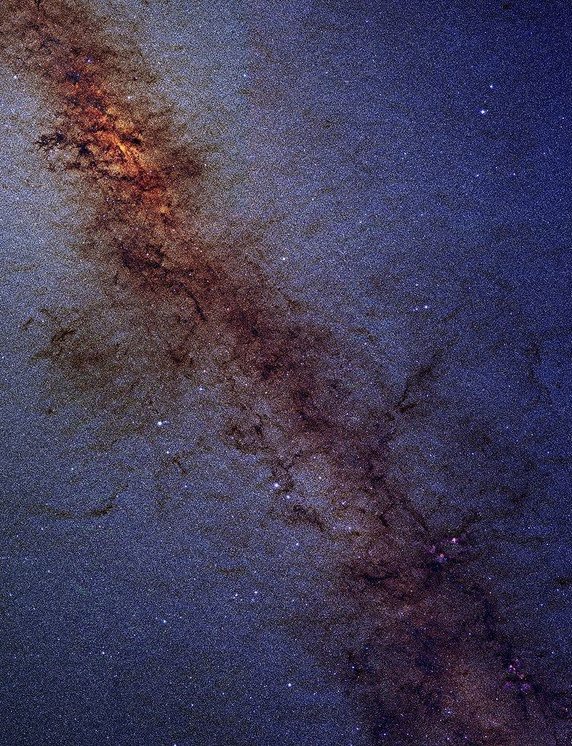
Here is a video about the galactic center:
It is of absolutely no consequence at all that once a year Earth is roughly at the opposite side of the sun from the galactic core, as explained in the video.
As for the galactic plane, we are several dozen light years above it at present, and moving away from it. We probably won't cross it for another 30 million years or so according to this article in EarthSky: Did Earth cross the galactic equator in 2012?
Here is a discussion on astronomy stack exchange, one of the participants links to a 2016 paper which makes it 56 light years above the galactic plane (17.1 parsecs) and the sun moving away from the plane currently at about 7.25 km/sec (both of those values approximate with quite large margins of error)
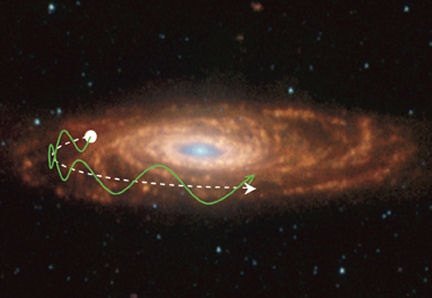
We are currently moving away from the galactic plane and the sun will cross it perhaps 30 million years inot the future. So if there is any increased risk of asteroid impacts during galactic plane crossings, it’s a long time into the future.
As for whether there are more asteroid impacts when we pass through the galactic plane - well there was some data seemed to support that idea back in 2008, but it no longer seems likely.
This is part of the general idea that we go through periodic extinctions - with lots of reasons suggested for why that might be. Passing through the galactic plane is just one of many hypotheses.
If you look at the data - there does seem to be a rough periodicity of extinctions. Some people think it is real, others, maybe more of a coincidence. It’s quite striking but not compellingly so.
This is the most recent paper I found on it: Periodic impact cratering and extinction events over the last 260 million years - and it cites earlier papers.
For an astronomer a million years is "close" in time. If it is real, and that last paper is correct, then the most recent one was about 16 million years ago and it happens roughly every 26 million years. So next maximum impact rate would be perhaps 10 million years into the future.
Different authors will come up with different figures for when they think it will happen next, but they all have periods much larger than 16 million years which puts the next extinction event millions of years into the future if the theory is correct.
We are nowhere near the galactic plane and in fact are moving away from it at present. Some astronomers think we may get more comet impacts on Earth when it passes through the galactic plane. If that is right, it will happen millions of years into the future.
The Sun and Earth roughly align with the center of the galaxy, by coincidence, during the winter and summer solstices. This has no more astronomical significance than the alignment of your hand with the Moon if you wave hand in the direction of the Moon, or indeed the Sun in daytime. You wouldn’t expect to be blasted by deadly radiation when you happen to align your hand with the Sun :). The light from the Sun is not influenced in any way by your hand and the light from the Galactic center is not influenced in any way by the Earth orbiting the Sun. It’s just a line of sight effect and neither Earth nor the Sun is anywhere near the galactic center which is a very distant object, 25,000 to 28,000 light years away.
I wonder if this is in any way related to gravitational lensing? The Sun does act as a lens. When the Sun is between us and the galactic center then as seen from the Earth the stars in the galactic center will be very very slightly closer together. This is however a minute effect. And the focus of the gravitational lens is 550 AU away or over 18 times the distance to Neptune.
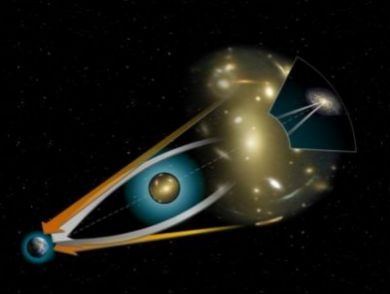
The FOCAL Mission: To the Sun's Gravity Lens
There is a plan to send a spacecraft out there. It would not be fried by distant radiation :). But the Sun would act like a giant extra lens in a telescope.
The way it works is that you would of course see our planets around the Sun from a distance of 550 au. Just dots of light. But along the cylinder of observation - a narrow cylinder the diameter of our Sun, then - a Hubble space telescope at the sun gravity lens focus could spot Mercury around our Sun, as just a pinpoint of light - but also it could spot something as small as Mercury at any distance, even thousands of light years away, just as if it were only 550 au away. It’s especially useful for reasonably bright objects, depending on how well you can block out the sun’s light. Could give us detailed close up observations of the atmospheres of distant stars for instance.
So makes a great telescope for rather specialist observation - but to use it you have to be 28 times the distance of Neptune and it still would not produce harmful levels of radiation even at the focal point, just a brighter more accurate image in a small region around the Sun heavily distorted but you’d be able to undistort it computationally.
Short summary - planetary alignments can be a pretty sight in the night sky. But they are of no astronomical significance and can’t harm us in any way at all. This particular alignment is an alignment with the sun as well, which means that there is not even anything to see. It’s rather an absence of anything interesting for astronomers who like to observe planets.
The book of Revelation is meant a a message of hope, not despair. It’s so enigmatic though, that you can fit almost any message to it and claim that’s what it is saying. The Bible is not noted for its astronomy, and they didn’t even know that meteorites came from space, thought comets were like high clouds, and they didn’t know that Earth orbited the Sun so didn’t know it was a planet. It doesn’t even have eclipse predictions in it, although a few astronomers at the time could do them (though not nearly as accurately as us). It’s just not a work of astronomy at all. It has much to say in other ways that many people find of great value, but to look to the Bible for a guide to astronomy is to look in the wrong place I think.
There is a very rough alignment with the planets and the Moon spread out over the sky from Leo to Libra. However, there will be nothing to see in the sky because the sun is right in the middle. It's a non event visually, most interesting as one of the few times when you won't see any of the planets or the Moon.
Amateur astronomers like alignments though they have no astronomical significance, just because they look interesting and they can get nice pictures of them. This is the most uninteresting sky you could possibly have if you are interested in visual alignments.
As for the idea of it being a “sign” - this is just a work of imagination and numerology. His page is here: Signs of the End. It spins a story out of the book of Revelations, which is notorious for having so many enigmatic statements in it that you can interpret to mean almost anything.
There are many different ideas on what it actually meant - was a late addition to the Bible. Views about it include:
If you aren’t a Christian then you don’t need to interpret it at all. After all, it was written specifically for Christians.
It is generally agreed it is meant as a message of hope, so if you find it scary, something has gone wrong. The Eastern Orthodox church has gone so far as to exclude it from its lectionary - passages that can be read from the pulpit, because it is so easily misunderstood.
There’s nothing of any astronomical significance on that date. Yes, all the brighter planets are behind the Sun so won’t be visible. Here is a screenshot
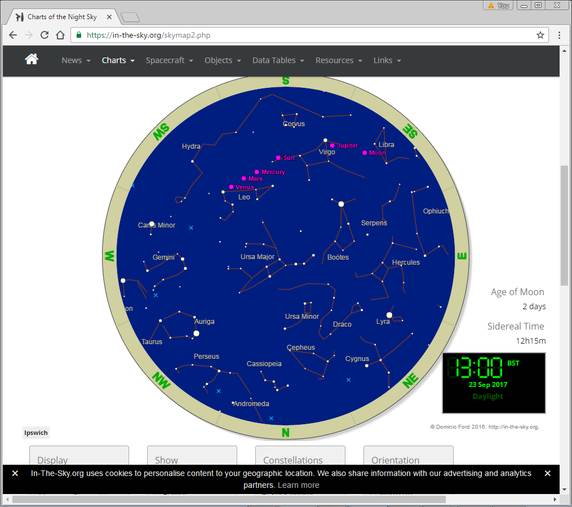
Charts of the Night Sky - shows how all the main visible planets will be hidden in the bright area of the sky around the Sun briefly on 23rd September 2017.
It has no meaning at all. Unless you think you can read signs in the sky like reading signs in tea leaves. It’s not even a pretty sight to look out for in the night sky. It’s rather an absence of anything of interest as you won’t be able to see it because the sun blots it out.
They have just made up a story around the stars and the planets. The constellations themselves are just patterns of stars as seen from Earth. The stars are constantly moving. They are at different distances from us.
This shows how the big dipper is changing:
And this is Orion
More examples here: The fault in our stars: Why the Big Dipper could become the Big Duck
Most of the constellations are not made up of stars that are close together in space either. Look at the constellation from a slightly different angle, if we could travel away from the Sun and it would look different again.
“A scientific visualization of the Orion constellation as viewed from a three dimensional perspective. The true space distribution of the constellation is revealed by circling around the stars.
“The camera begins with a pan across the sky to Orion. The lines of the stick figure constellation are drawn in, which unfortunately gives the viewer an impression of a 2D drawing. As the camera slowly begins to circle around the centroid of the stars, the stick figure quickly breaks into a long extended 3D structure. The camera backs up to keep the entire figure onscreen for the complete circle. At the end of the circle, the camera pushes forward to finish back at the location of the Earth/Sun.
“Note that the stars are rendered with 3D distance dimming relative to the camera position. Stars get brighter or fainter as they are closer or farther from the camera viewpoint. Also, to avoid an obvious distraction, the Sun is not included in the visualization.”
The planets are much closer to us than any of the stars. To say that Jupiter is “in Virgo” is like pointing at a distant mountain and saying your finger is in the mountain. It just means that your finger is between your eyes and the mountain.
It’s like looking at a cloudy sky and seeing clouds that look like fortresses or houses, or boats or animals - and then making up a story about it. Google’s “Deep Dream” generator can turn clouds into images of various creatures:


That could be a fun thing to do but the clouds are not affected by your story in any way. In the same way making up stories about the stars and planets makes no difference to the stars or planets and doesn’t mean that they endanger us in any way at all.
Planetary alignments are very common. For instance there was one early this year with all five visible planets Five planets align: how to see this spectacular celestial show. They are of no astronomical significance but amateur astronomers enjoy watching them.
This is about Muslim views on the Bible Books of Revelation - for them the “Book of Revelation” is not one of their “Books of Revelation”. Islamic view of the Christian Bible. And it’s obviously not a Jewish sacred text. And for any other religion, well they don’t accept the Bible as a sacred text at all, not for themselves, just for Christians, so why should they pay any attention to it?
The book of Revelation, it's a notoriously enigmatic book and you can fit almost any "prediction" you like to it, and many Christians don't think it was meant to predict the future, and others think it was meant as a warning of events that happened already in the first century BC. Whatever the truth of that, at any rate there’s a huge problem of false prophets in modern Christianity, with the Bible itself warning about them, and numerous false prophecies for the last 2000 years of the end of the world. The Eastern Orthodox church has gone so far as to exclude Revelations from its "lectionary" - passages of the Bible that can be read from the pulpit
If you are Christian, then Revelations should be a message of hope, not fear and despair. If you aren't Christian, there is no need to try to interpret it at all as it is written for Christians. Not even Jews or Muslims accept Revelations as a sacred book.
And the Bible is not noted for its astronomical predictions. Remember that back then, they didn’t know that meteorites came from deep space but thought they came from volcanoes or stones picked up by strong winds. They thought that comets were atmospheric phenomena like high clouds. They didn’t know that Earth orbited the Sun, so they didn’t know it was a planet.
The Bible doesn’t even have predictions of eclipses in it, or anything astronomical at all, as far as I know. It’s just not an astronomical prediction book. There are ancient texts that do, not nearly as good as modern predictions but good for their time. But this is simply not the Bible’s strong point.
See also Debunked - The world will end because the Bible (or some other sacred book) says so - which goes into more details about Revelations.
Written Wed CommentShareThis is an old chestnut of a hoax in a new dress. NASA Confirms Earth Will Experience 15 Days Of Complete Darkness in November 2015
It’s on newswatch33 which is a fake news site. Newswatch33.com – fake news - website profile - ThatsFake.com
Not worth debunking in detail, the whole story is just absurd nonsense, and as it is a fake news site, it is not meant by its writers to be taken seriously.
Here is the Snopes page about it: FALSE: NASA Confirms 15 Days of Darkness in November
Here is the Universe Today’s debunking of it
No, There Won’t Be 15 Days of Darkness in November. It’s Another Stupid Hoax. - Universe Today
Although this story doesn’t say it, I have read a hoax which I can’t find now suggesting that we could have a fortnight of darkness due to passing through the shadow of Venus.
This is what Venus looks like when it transits the sun in 2012, the last time it will happen for 105 years:
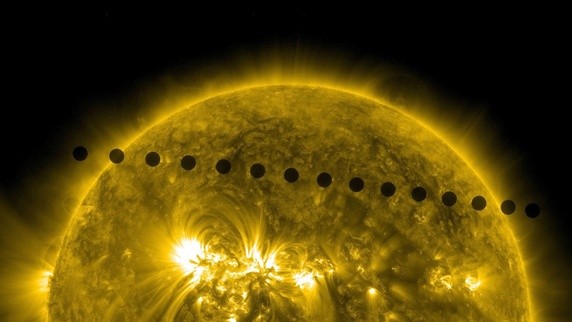
Venus transit,June 5, 2012, photographed by NASA's Solar Dynamics Observatory spacecraft. False colour obviously. Credit: NASA/SDO, HMI
As you can see, Venus is far too far away to cast a shadow on Earth at all during the rare times it transits the sun.
There’s no astronomical phenomenon known that could happen in our solar system and block out the sun for 14 days. Or even for one minute apart from lunar eclipses as the Moon is the only object close enough and large enough to block out the sun in our solar system.
Timelapse of a solar eclipse. The Moon is the only object in our solar system that can block out the sun as seen from Earth. It blocks it out completely for a maximum of a few minutes. A total eclipse is visible from a narrow “eclipse track” that traces across the Earth.
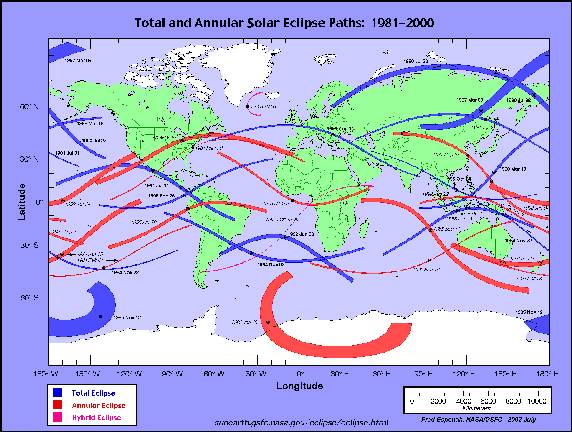
For the 2017 eclipse in the US, see this track plotted on google maps: Total Solar Eclipse of 2017 Aug 21
Written Oct 23 CommentShareThis is the easiest of all the Nibiru beliefs to debunk. Go out any starry night, find the pole star, go out a few hours later and the pole star is in the same place and all the other stars have shifted around it. This shows that the Earth’s axis still points towards the pole star, as it has for centuries.
This is another central belief of the Nibiru people - that the Earth’s poles have shifted or are going to shift. This is one of those sites, saying that the Earth's axis shifted back in 2003. You'll find this sort of thing all over the web. Many people believe the Earth's axis has already shifted, killing many people, and that this is what causes many earthquakes, and that it will continue to shift until it points south instead of north. Here is another such story, often repeated by those who believe in the pole shift idea, "Earth has shifted"-Inuit elders issue warning to NASA and the world"
That may seem very impressive, you'd expect Inuit elders to be familiar with the sky and to understand things like this. But no, it seems they are not. Maybe a new generation that lives in houses as none of them live in the traditional way any more, less familiar with nature? Who knows, it's an intriguing question.
Or it might be that what they said is mistranslated. All we have there are subtitles. I’d be interested to know what they actually say from anyone who speaks Inuit.
Anyway whatever they say, the idea that the Earth’s poles have shifted is just plain wrong. This is the easiest of all the Nibiru people’s beliefs to debunk, you can do it for yourself, any starry night.
You don't need to take a look at where the Sun rises and sets, as these sites suggest. That changes throughout the year anyway, and who remembers where it rose before 2003 or whenever it was they say the shift happened?
It's easy to spot the pole star (this is for the Northern hemisphere - if in the southern hemisphere you'd use the southern cross as a starting point to locate the celestial south pole). You can find polaris using the two stars at the end of the big dipper (or plough) - it's quite a faint star, but easy to spot as it's in a rather blank area of the sky, no bright stars there. With a clear night you'll also see the other stars making up Ursa Minor, a sort of smaller scale version of Ursa Major.

How to find the pole star (sketch from wikipedia)
Once you've done that, take a note of where it is in the sky. And then just come back a few hours later. You'll spot that it is still in the same place in the sky, and that Ursa Major and all the other constellations have moved around to another position relative to it.
BTW this way of finding the pole star is the flag of Alaska.
Whenever there’s a clear night you’ll be able to look up and see “yes that’s the pole star in its usual place”.
Here is a YouTube video showing how the stars move during the night, and stacked to make a star trail photo at the end. You can see the big dipper at the beginning.
And here is a similar one from the southern hemisphere.
Maroondah Reservoir Star Trail from arteliz on Vimeo.
You can check easily that the pole star stays in the same place all night and is visible every clear night of the year.
That immediately debunks all this nonsense about the Earth’s poles shifting and the idea that we have had more earthquakes than usual due to Nibiru shifting the Earth’s axis.
It is also easy to check that navigators for centuries have used Polaris to find due north and that it is still due North as it always was. You can even go back through the historical records and plot the drift of position of the pole star due to the 52,000 year cycle of the precession of the equinoxes.
Also, the night sky is not attached to the Earth in any way. If the Earth's axis shifted, Polaris would not shift with it. It's 434 light years away, light from Polaris has spent centuries getting here. So if the Earth's axis shifted, it would no longer point at Polaris.
There's nothing we can do at present that would affect the tilt of the axis of the Earth. The axis is stabilized by the Moon. Mars has no large moons, only small ones and its axis continually changes like this, but very slowly, over timescales of millions of years:
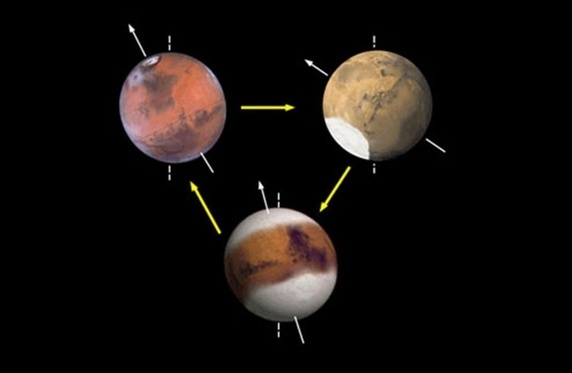
Changes of tilt of the Mars axis
Earth's axis though keeps the same tilt, and all that changes is the direction of its axis
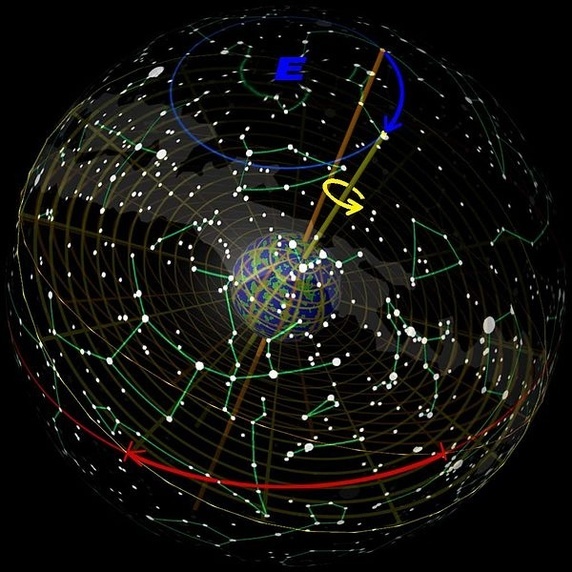
This changes the direction of the North pole very slowly over a 25,700 year cycle. See Polar Shift and Equinoxes drift.
The reason the Earth's axial tilt doesn't change is due to the stabilizing influence of our Moon.
This simple observation of the pole star or the southern cross, which anyone can do, any clear night (unless right on the equator) also immediately debunks all the ideas about Nibiru being only visible from Antarctica or the Arctic. There is no need to travel to Antarctica to see the southern cross or to travel to the Arctic to see the pole star. If anything was visible from those places, it would be visible from the entire southern hemisphere, or northern hemisphere, respectively.
Anything that was due north of us in the night sky, in the same direction as the pole star, would be visible every clear night from everywhere in the northern hemisphere, just as the pole star is. Similarly anything due south would be visible every night from everywhere in the southern hemisphere (apart from regions close to the equator where both the north and south pole stars are close to the horizon).
If anyone tells you that Nibiru is only visible from the North pole or the South pole, or they tell you that the Earth’s axis has already shifted, and that many earthquakes are caused by the Earth’s poles shifting, as so many of the Nibiru people do, then you know immediately that they don’t understand the most basic ideas in astronomy. Either they have never learnt how to find the pole star, or if they did, they didn’t understand its significance. Either way, they are not reliable sources in astronomy, and it is best to ignore anything they say about astronomy.
This idea may have arisen as a result of a confusion of pole shift with magnetic pole shift. Or it could be due to confusion with true polar wander.
The Earth’s poles do shift very slightly each year, a phenomenon called “true polar wander”. But this is a minute effect, a motion of centimeters per year. At its fastest the poles can move ten meters in a century. This is due to such things as the continents shifting and ice caps melting. For instance the Earth’s axis changed when the ice melted at the end of the last glaciation, and it is shifting now as a result of climate change. See NASA: Earth's poles are tipping thanks to climate change
This tiny effect can’t cause earthquakes or create any noticeable effect on the apparent position of the sun or the stars in the sky.
The Earth’s axis also shifts in position by an extra half a degree on an 81.6 year cycle (half a degree is about the same as the visual diameter of the Moon).
This is due to the influence of the Moon, and is a phenomenon known as nutation. The Moon’s axis also shifts, precesses, by a rather larger 1.5 degrees over the same period. Details here
Again, this causes no problems to us at all. This is a much larger effect than true polar wander - you could actually measure it, by naked eye even, with good tools, but you would need to do precise astronomical measurements to notice this effect.
As for magnetic effects, that needs to be a separate debunking post, but in short, our magnetic poles are close to the geographic poles and move all the time. This is nothing new. The north magnetic dip pole which hoaxers say is in Siberia is in fact traveling towards the geographical North pole at present across the Arctic sea. The magnetic field strength is decreasing, but that’s from a level above normal. So there is no sign at all at present that our magnetic poles are shifting. It’s something that does happen, last time 41,000 years ago and it does not cause extinctions. Will happen some time in the next few hundred thousand years and in the middle of the shift, for a while our compasses will no longer work to show north but will sometimes point East or West etc. It reduces the amount of ozone in the ozone layer, so you’d need more sun barrier cream on sunny days, and it may confuse migrating birds. That’s about the sum of its effects and is not a problem at all, it would take a century to happen, and there is no sign of it even starting yet.
Debunking: Daily Mail online ran a news story with the title"'Doomsday' comet set to shower Earth tonight" saying that conspiracy theorists claim that scientists have miscalculated the orbit for Halley's comet and that it will hit Earth this week.
Orbit of Halley's comet. As you see it can never hit Earth or any other major planet for as long as it remains in this orbit, which is stable over timescales of thousands of years
(longer term it will probably evaporate away as many comets do eventually, over a period of a few thousand years. It's orbit is hard to predict long term exactly because it's orbit is sensitive to small scale perturbations. If it doesn't evaporate, the most likely outcome is that it is ejected from our solar system within 10 million years).
It's true that the Oronids meteor shower is associated with Halley's comet, but it comes from the debris from its tail, blown away from the main comet by the sun. See my answer to Can Halley's comet strike a planet in the solar system?
This is something I get told over and over in comment threads and pm's about Nibiru especially. Certainly it is true of all doomsday stories, that if you search for them on google or YouTube, you find lots of videos and newspaper articles in support of them and generally you have to do a lot of searching to find a debunking article, no matter how absurd the story is or how inaccurate.
But large numbers of people thinking something is true doesn’t make it true. . This is the logical fallacy “If it is popular it is true” or “Argumentum ad populum”
Many people have believed prophets that said the world is about to end for many centuries, at least 2000 years and those were all false prophets as the world didn't end.
In 2012, a tenth of the world population, 750 million people, thought that the world was going to end and they were all wrong. So you can get millions of people believing something and they can all be wrong.
For a more mundane example, for most of human history everyone thought that the sun orbited the Earth, and even after a Greek astronomer raised the possibility that Earth orbited the sun, nearly everyone ignored him (for good reason, he didn't have very strong data in support of his ideas - he needed new ideas which we didn't get until Kepler and Newton, and a telescope would have helped).
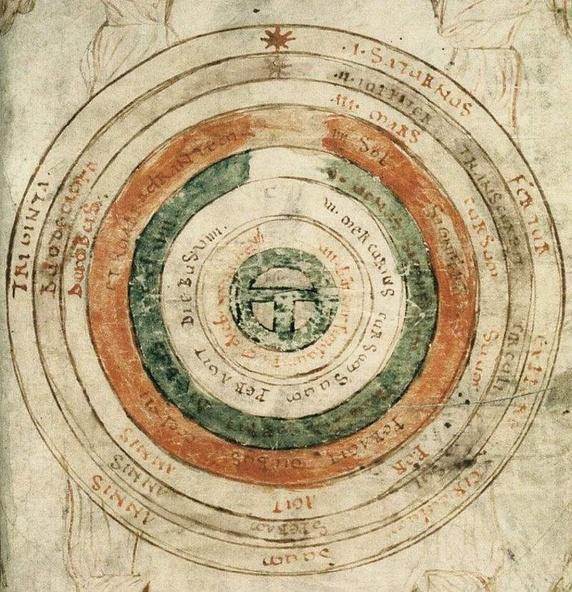
The Earth within seven celestial spheres as depicted by Bede in the eleventh century.
The circles are labeled, from outside in, Saturn, Jupiter, Mars, Sol, Venus, Mercury, Moon[?]. Outside all of those were the fixed stars and the idea was that all those spheres rotated around the Earth at different speeds.
The astronomers debated how far away these spheres were. In the middle ages most thought that the distance to the outermost sphere of fixed stars in the Ptolemaic theory was 19,000 Earth radii. Mathematical Astronomy in Copernicus’ De Revolutionibus.
(Modern measurements make the distance to the sun from Earth over 20,000 Earth radii. (distance to sun, 149,597,870.7 km using the value of the Astronomical Unit, and radius of Earth 6,371 km).)
If you were born in the Middle ages, no matter how brilliant you were, how mathematically gifted, until Copernicus came along, you’d have thought that the sun, stars and planets were slowly spinning around the Earth. Probably you would have laughed at anyone who said otherwise, and called them a fool.
For most of our history, most people thought this was the true picture of the universe or something like this - Earth at the center and the planets and stars in celestial spheres - they were all wrong
So it is easily possible for the entire population of Earth to be wrong about something.
Often there are no debunking articles in the search results later than 2012 (except for my blog posts and also quora answers by various authors here, which you may find if you search long enough).
For many doomsday stories I don’t know of a debunking article other than my own or the quora answers by many people again.
So does this mean that they are true?
Well as an example, I challenge you to find a debunking article about the 2009ES asteroid scare, the asteroid that safely flew past Earth on 5th September at a distance of 7.2 million kilometers. I don’t know of anything except my own posts. See Debunking: All going to die as a result of impact of Asteroid 2009ES or 2000 ET70 or [insert name of asteroid here] or a “Level 3 Planet Cracker”
It is so simple to check these things, yet none of these journalists who wrote those articles about 2009ES knew enough about astronomy to look it up in the close approach tables to find out that it had already done a flyby on the 5th September. They just kept writing articles saying it was due to hit Earth for the rest of September!
And it’s the same for videos. You have to search long and hard to find either a Nibiru debunking video or a Nibiru debunking article, and the ones you find generally date back to 2012.
That's the reason for my two recent petitions:
If YouTube stopped running ads on Doomsday videos that would remove the economic incentive for unscrupulous people to upload hoax doomsday videos just to earn thousands of dollars in ad revenue. That would help a bit. You'd still get all the people who upload their videos that they think show two suns etc, but you'd get much less of the fake news channels with hoax videos about Nibiru. Then if the journalists were to write debunking articles instead of doomsday articles, then that would make a big difference too, because many people, like you, will search to try to find a debunking article. If lucky eventually they find mine. Apart from that, the only ones for most of the stories date back to 2012.
I started this Debunking Doomsday blog to try to help. Also I've decided, I'm going to try to get an op ed published somewhere prominent like the NY Times or the Guardian / Independent here in the UK, that might help, about this issue.
Written Oct 24 CommentShareI get some people who ask me to reassure them that there is nothing to be scared of from time to time. They watch these videos or go to a website and it says “You should be scared” and just that terrifies them, no matter what the rest of it says.
When these people tell you to be scared in the videos or on a website, it's like someone telling you that you should stand on your head.

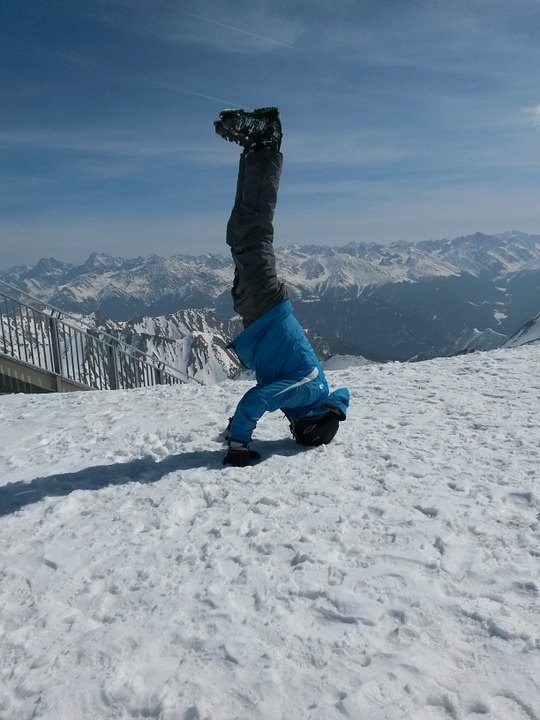
Or any absurd thing they might say you should do. There is no obligation on you to stand on your head, if some random stranger tells you to do it.
Actually the ones who tell you to be scared are the ones that should do something. They should stop telling people to be scared and worried.
See also my Nibiru Bullshit Tester - How to check if they know anything about astronomy
Written Mon CommentShareThis is an idea that some fundamentalist Christians have - that the world is about to end and that all the good people will be taken up to heaven in the “rapture” and the bad ones go to hell. Often made fun of, and features in several Simpson’s episodes for instance:
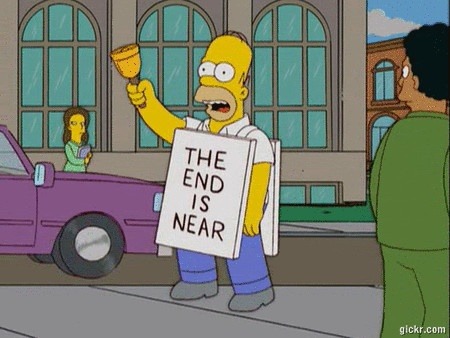
Most of these prophecies of a Christian Apocalypse are based on the book of Revelations, which is regarded as one of the most enigmatic books in the Bible. Anyone can read almost anything into it.
It causes so many problems that the Eastern Orthodox church doesn't include it in its lectionary - the passages from the Bible that can be read from the pulpit. It was a late addition to the Bible anyway - early versions of the Bible didn't include it.
This is not just an issue in Christianity. Early in 2016 a rabbi predicted the world would end on Sunday October 2nd 2016. Rabbi: Catastrophic Nibiru Causing Extreme Weather Events - Breaking Israel News
He said
“God can do whatever He wants. He can move a planet, put it back in. We have to be aware that there are different scenarios. Hashem prepared all options.”
I got quite a few comments about that one from people scared the world would end last October. Even though only one rabbi is saying this, and for sure most rabbis were not saying the world was about to end. Yet people who don’t even share their religion get scared by it.
So anyway, if you think that a deity could move a planet to a collision course with Earth, well why even call it Nibiru? Why postulate some new planet that no astronomer can see when there are plenty of planets in our solar system already for him to use? Why not just throw Jupiter at us?
If you believe God exists and that he can suddenly put Jupiter into a collision course with Earth, and is of such a nature and personality as to do such a thing, well we wouldn't have a chance of course. Or indeed he could just create a planet from nothing, or transport a planet from the other side of the galaxy instantly. If you have miracles like that, moving planets, as this rabbi said he believed were possible, well, all bets are off.
The only way to answer a religious answer based on supposing miracles is a religious reply and I'm not very well versed in Judaism. In Christianity however, you can certainly do a religious reply as there are lots of warnings about false prophets and by definition all the dozens of people who have predicted the world would end (and more examples here) over the last couple of millennia are all false prophets as the world didn't end.
It's obvious that there is a significant problem in Christianity of false prophets of doomsday, despite the warnings in the Bible about it.
My background here is that I do have quite a strong background in Christianity, enough so I feel I can answer this and point you in the direction of sources. My parents were both ordained ministers in a small Scottish church and my father particularly had a strong academic interest in theology, and in all branches of Christianity, as well as in other religions. I was brought up in a house with shelves upon shelves piled high with theological books, many different translations and commentaries on the Bible, theological works by many authors, and so on. I had a lot of interest in the subject too when I was young, read many of my father’s books. I also studied philosophy at university as a second undergraduate degree.
So though I am not a theologian, and indeed am no longer a Christian either, I’m a Buddhist now, I feel I do have enough background here to point you in direction of some of the basic ideas.
So, first, the Bible is only one of many scriptures in the world.
The Hindus have their scriptures too for instance which they regard as highly as Christians regard theirs.And there are many other traditions about what happens in the future.
For instance, as an example of another tradition, which I can say a bit about as I’m a Buddhist myself, many Buddhists believe that the historical Buddha is the fourth of a series of a thousand Buddhas that arise from time to time, their teachings last for a few thousand years, then fade away and eventually after many thousands of years new teachings arise again. There are many ideas here but in those traditions, there are 996 Buddhas still to come in our world system, so we have got a fair while yet before the world will end. These are not thought of as “revealed truths” in Buddhism and there is no need for a Buddhist to believe these things, but are rather, just traditional ways of thinking about the cosmos in many Buddhist cultures. They are like stories that Buddhist teachers may teach that have a message within them, but you don’t have to take them literally (though many may do so).
In these traditions also, this particular world system with its 1000 Buddhas is a part of larger and larger cycles ending with destruction indeed, and renewals, because nothing is permanent. But that's in the far distant future,maybe millions of years into the future. This is not a creed, not in Buddhism, but many Buddhists think this way just because that's how they were brought up (the numbers like 4 and 996 here vary depending on the tradition).
So, if you are brought up a Hindu or a Buddhist - or indeed in many other religious traditions, you don't have anything corresponding to the idea of a near future impending apocalypse. The idea simply isn't there.
But within the Christian traditions also, many Christians don't interpret the book of Revelation this way. Let's just take a short look at it.
Amongst Christians, there's a wide range of views on how to interpret the book of Revelation, summarized in "From Adam to Armageddon: A Survey of the Bible", page 178 as
The idea of a literal Armageddon is the fourth of those common ways of interpreting the Bible.
The book of Revelation was added to the Bible at quite a late date. It was originally regarded as heretical by some of the early Christians.
As the author of "From Adam to Armageddon" says
"Regardless of whether Revelation holds the secret of the time and place that history as we know it will end, it holds the view that how one lives matters greatly. That alone makes it of value for those who use it as an authority for their lives.
"Its vision may have been intended primarily to support Christians facing death for their first century faith, but it has served a much broader purpose for continuing Christianity. A book of comfort and devotion, it has called people to faithfulness over the years, while assuring them of the faithfulness of the God it proclaims."
(From Adam to Armageddon: A Survey of the Bible - page 180 )
So, it seems it is intended primarily as a message of hope, originally written for Christians who faced death as a result of their faith and now a general message of hope to Christians in trouble.
That's why the view 1, that the events described in the book of Revelation have already taken place is also a reasonable view to take, Or indeed the view 3, that it is best understood spiritually.
In both cases it has no future predictive power since it either describes events of the first century AD, or it is meant to be taken spiritually, as a message of hope, with no intention of prophecy of actual events in the world.
Many Christians do take it in those ways.
Teachings like this are surely meant to inspire us to look at our lives and treat them as more precious and of greater value and inspire us to live better and more meaningful lives.
If it becomes a message of despair and suicide, then it is seriously being misapplied.
If you end up getting scared and upset - for no reason, especially repeatedly, for one predicted but failed Armageddon after another - I'm sure that can't be Jesus or God's message. Whatever it means, that can't be its central message.
Also the Bible warns against false prophets. By definition all the people who have prophesied an end to the world for the last 2000 years, and there have been dozens of them, are false prophets because the world didn't end. And these Nibiru people have falsely prophesied the end of the world numerous times too, so they are definitely false prophets too, no matter what excuses they make for their false predictions.
So, there is absolutely no reason at all to pay attention to alleged prophecies of doomsday if you are Christian. Why should you? They are surely just more false prophets to add to the dozens that have come before. For the large number of false prophets that we’ve had, see this List of dates predicted for apocalyptic events. It’s not complete either.
Some of these people will forecast an apocalypse over and over. They swear blind that their latest prediction is the real thing and will certainly happen. Even their own predictions made just a few months or a year before - they say those were false predictions but this one at last is correct.
If you start to fall for this sort of thing, you will never want for predictions of doomsday and will be scared of it for the rest of your life or until you realize you've been had and just give up on it.
While if you are not Christian - well what do you care what Christians prophecy? The book of Revelations is clearly meant as a message for Christians, whatever it might mean. Why pay any attention to it if you happen to be a Hindu or Buddhist or Jain or Taoist or whatever religion you are? And if you are atheist even more so.
The Bible has never predicted any major astronomical event. Indeed astronomy is not it’s strong point. And no previous civilization has ever had the accuracy of prediction of astronomy that we have.

World Atlas of Solar Eclipse Paths
An eclipse track map like this one is way beyond the capabilities of any previous civilization on Earth, no matter how astronomically gifted. They just didn’t have the theory, the computers, the telescopes etc needed to make them.
Also, anything you might try to unearth from the Bible can’t possibly be a prediction of meteorite impacts or hidden planets, as they didn’t know that asteroids or meteorites existed back then.
The idea that a planet could hit Earth would have been totally foreign to them. They thought of the sky and stars as separate from Earth. They thought meteorites were created in volcanic eruptions or blown up into the air in strong winds before falling again. They also thought that the Sun orbited the Earth along with all the planets and that the entire night sky and all the stars circled around Earth. Back then they didn’t know that the stars were other suns like our one.
So, far from having a superior understanding of how our universe worked, they had a very inferior approximate understanding.
Now of course they did have a good understanding of human nature, the Bible has a good ethical message. We aren’t superior to them in terms of ethics probably. But they just weren’t astronomers or cosmologists. Even by the standards of their time, the authors of the Bible do not stand out as having a particularly good understanding of astronomy. It is barely mentioned. That’s just not what you go to it for.
So the idea of going to the Bible to try to unearth hidden secret messages predicting astronomical events is absurd. They just didn’t have the level of astronomical understanding to make such predictions back then.
To go the Bible to find secret messages about God’s will for humanity might make sense if you are a devout and fundamentalist Christian. However, then you have to bear in mind all the warnings about false prophets which make it clear that the books are not intended to be used in this way. Also it’s worth bearing in mind the practical experiences of all the people who have falsely prophesied the end of the world.
If you are Christian and what I’ve said so far doesn’t reassure you - I suggest it might help to find a Christian pastor or minister who you respect. Most Christian teachers will be sure to say exactly what I say here - that you don’t go to the Bible to find exact dates for the end of the world. There are exceptions. Jehovah Witnesses have predicted the end of the world many times. Failed date predictions of Jehovah's Witnesses. If you are a devout Jehovah’s Witness, then presumably you find those predictions encouraging and they help you to live a fulfilling and positive life.
But most Christians don’t interpret their faith this way. So you may find that going to a minister or pastor in one of the mainstream Christian sects helps you to take a different view on revelations and get another perspective on these alleged predictions from the Bible.
I think there are many claims that are not falsifiable by current science at all - without needing to invoke miracles. Especially philosophy - I'd argue that the whole field of philosophy is not scientifically falsifiable. Trying to make philosophy into a science, as with the logical positivists, is itself a philosophical view, and one with many problems. The logical positivist movement is generally regarded by most philosophers as a failure. It raised interesting questions and ideas but did not succeed in putting philosophy on a scientific footing. Indeed science itself is based on many assumptions you can look at with the lens of philosophy.
That’s true also for most things to do with the mind, science can only address those things at the most superficial level in my view. Particularly - when you die - then whatever happens next, all our science in this life becomes like experiments you did in a dream when you wake up, if there is something next after this life.
Dreams can be vivid and realistic sometimes, for some people so vivid that they can't tell if they are asleep or awake, "waking up" multiple times each time just into a new dream, and still find that they are in a dream after apparently proving to themselves that they have woken up. Richard Feynman, the Nobel prize winning famous physicist is one example of someone who had very vivid dreams, so vivid he could examine them with a scientist’s eye. So with that background, how could science ever say anything definitive about what happens when you die?
Maybe it can but if so I think this has to be in some future where science is extended to include some aspect of understanding mind, sort of meld of science, philosophy and maybe some kind of mind experiments? At any rate we don't have that yet.
As a scientist, therefore, I think there is no need at all to ascribe to miracles to have a wide variety of views about what happens when you die. And the view that "When you die that's it" is as much a belief system as any religion, I think. I go into that more in my answer to "Is there life after death" on quora.
So, I think religion does have a proper place. The idea that some scientists have that when you die that’s it, is as much of a belief system as any religion. The best thing as a scientist is to keep an open mind there.
But when it comes to astronomy, planets, and so on, well there science rules supreme. In ancient times astronomers had many ways of understanding the stars and planets that worked after a fashion. But none of them was a patch on modern astronomy There is no other way of understanding how the stars and planets work that is anything like as good as science. It is one of the best and most accurate applications of science that we have.
See also Debunked: Ancient astronomers knew things we don’t about planets and stars
As to why the world would end eventually astronomers predict it will become so hot that it is uninhabitable about 500 million years from now, unless we find a way to do something about it, as the sun heats up on the way to becoming a red giant. But that is so far into the future that humans could evolve from the smallest multicellular microscopic lifeforms a second time over by then.
There are things that an advanced technological race could do to protect it at that point - to use large thin film shades in orbit around Earth for instance - or to move it to a wider orbit around the Sun using repeated flybys of large asteroids.
It won't be us anyway probably evolved into something else long before or extinct and new species and civilizations will have arisen by then. But if they do find a way through - well eventually something will happen eventually. End of the universe perhaps. Or just that parts of it become uninhabitable. Maybe it gives birth to new baby universes or maybe it ends and then a new universe arises out of its ashes as it were. Either way nothing lasts forever. But that doesn't make the universe and our Earth any less precious.
I think teachings like this are surely meant to inspire us to look at our lives and treat them as more precious and of greater value and inspire us to live better and more meaningful lives. If you end up getting scared and upset - for no reason, especially repeatedly, for one predicted but failed Armageddon after another - I'm sure that can't be Jesus or God's message,if that is indeed what this book is. Whatever it means.
Written Nov 16 CommentShareThis is an example story: Nostradamus from the Balkans predicted the end of US politics as the world has come to know it
So the first thing before going into any of this is to realize that prophecy has never been established as an accurate way of predicting world events. It certainly is useless for astronomy. Whether it works for anything else I don’t know. But to date, astronomers have not found prophecy to be a useful way of predicting any astronomical events.
When astronomers want to know if an asteroid will do a flyby of Earth, or to advise the general public where exactly to go to observe a solar eclipse and how long it will last for, or decide when to launch a spacecraft to Mars and when exactly it will get there, they use observations and calculations rather than prophecy. So how likely is it that suddenly some prophet will prophecy an astronomical event, and get it right?
Now you can argue about that philosophically. Why do we live in a world where scientific predictions work and prophecy doesn’t or is not very reliable? Why can’t we just see the whole of space and time indeed? Why aren’t we all 100% accurate prophets? You can imagine an alternative universe where prophecy does work with a very high rate of success or even 100% success. But it doesn’t seem that we live in such a universe, and prophecy doesn’t seem to be very reliable in our universe.
Anyway so let’s look at the supposed evidence for Baba Vanga as a prophet who the stories are saying was able to prophecy world events. Is that true?
So, Baba Vanga was a blind Bulgarian herbalist who gained a reputation as a healer and a clairvoyant. She was unable to write and her prophecies were written down by people who listened to her, and of course they were written down in Bulgarian.

This makes it really easy for people to attribute all sorts of sayings to her which she never said. So for instance she is supposed to have predicted WWIII would last from 2010 to 2014 and that the 45th president of the US would be black, etc etc. However it’s entirely possible that she never said any of those things. The articles that say she did don’t give sources.
Some of those close to her were interviewed in Bulgarian - the report is here if you can read Bulgarian Баба Ванга не е предсказвала края на света
- or you can use auto translate to get a rough idea Google Translate
I don’t speak Bulgarian so will take you to a discussion here Baba Vanga The Truth about Her Predictions!, page 1
Excerpts from the interview, translated by vistina for their forum post:
“Каква война? Ванга никога не е правила такива предсказания! Някой си ги измисля, после други ги преповтарят и така се стресират хората. Спекулират с името й, защото всички й вярват”, коментират дългогодишни съседки и приятелки на пророчицата в Петрич. Бойка Костадинова близо 50 г. е била сред приятелките на пророчицата.
Translation: "what war? Vanga has never made such a prediction! Somebody fabricates (those predictions), than others repeats them and the people are getting stressed (by the predictions).They speculate with her name, because everybody believes what she has to tell" says her neighbor and friend. Boyka Kostadinova has been friend with Vanga for 50 years.
“Виждаше и в миналото, и в бъдещето, но предсказания за Трета световна война не съм чула да е правила.” Горева смята, че и предсказанията за атентата срещу кулите близнаци в Ню Йорк, потъването на “Курск”, избора на чернокож президент на САЩ също са преувеличени. Появили се след смъртта й и никой не обявил кога ги е чул от Ванга.
Translation: She was looking into the past, and the future but prophecies about third world war i have not heard from her". Goreva tell that the prophecies about the 9/11, the Kursk and about the black president of USA are also fictitious. They have appeared after her death and nobody have told when she has told those prophecies.
So, no, it doesn’t seem likely that she has prophesied world events and what’s more it doesn’t seem to be the sort of thing she was interested in prophesying whether she could or not.
It is a similar situation with Nostradamus. He was literate so we have his actual writings. But he made many enigmatic announcements, so enigmatic that reading things into them is like seeing shapes in the clouds overhead. You can interpret them to mean almost anything. He made only one dated prediction, for 1999, and nothing apocalyptic happened in 1999. For more on this See Debunked: Nostrodamus predicted the end of the world on [insert date here]
Written Nov 27 CommentShareSo, first of all, for this story to mean anything to you, you have to be a devout Catholic. You have to believe in the Virgin Mary as a saint who appears to people in dreams and you have to believe that the children in this video met her and that this was a miraculous event. Also of course you have to believe that the Apocalypse can occur as a future miraculous event.
If there is anything there you don’t believe, there is no need to read any further. This story is not for you. If you aren't a catholic, no need to pay any attention to it.
There is no astronomy or science in this so it has to be debunked on religious terms.
This is one of the videos shared about it:
If you are a Catholic, I've found out a bit more, Quora answer here which may help you interpret it according to your faith or you can contact a catholic priest maybe for help. It does seem to be something that Catholics do believe to be a true miracle. A bit about it here:
What were the 3 secrets of Fatima? Are they against Catholicism?
Wikipedia article here
Three Secrets of Fátima - Wikipedia
This gives background on Catholic interpretations of revelations - goes into how the apocalyptic visions are part of a tradition of extravagant symbolism not meant to be taken literally. They were a source of comfort for early Christians facing persecution, and still can be today for Christians facing difficult times because of their faith.
"The Book of Revelation had its origin in a time of crisis, but it remains valid and meaningful for Christians of all time. In the face of apparently insuperable evil, either from within or from without, all Christians are called to trust in Jesus' promise, "Behold, I am with you always, until the end of the age" (Matthew 28:20). Those who remain steadfast in their faith and confidence in the risen Lord need have no fear. Suffering, persecution, even death by martyrdom, though remaining impenetrable mysteries of evil, do not comprise an absurd dead end. No matter what adversity or sacrifice Christians may endure, they will in the end triumph over Satan and his forces because of their fidelity to Christ the victor. This is the enduring message of the book; it is a message of hope and consolation and challenge for all who dare to believe."
~So with this three sisters story, there is no actual prediction, and no astronomy. There is also no evidence that they did predict a literal apocalypse and anyway - that would surely go against the teachings in the Bible about false prophets. That's about all one can say.
I think if you are Catholic and want more help with it, best to contact a Catholic Priest for help understanding what it is about.
Also here is my general article about these Biblical ideas: Debunked - The world will end because the Bible (or some other sacred book) says so
This is an example, from “Above Top Secret”, a notorious conspiracy site where people can publish anything. could america be invaded by the chinese & russians on this date? according to the demons, it does., page 1

With I don't know how many people using ouija boards every week there are bound to be a few "accurate predictions". They will ignore all the times they say someone is going to die and nothing happens. Then one time they say someone will die and they do, and they will make a big fuss about it. So it is easy for a method such as this to seem to work when it is just based on chance.
If Ouija boards did tell the future then the people with ouija boards would win all the state lotteries and nobody else would have a chance. That doesn't happen. Indeed I can't remember any story of someone winning a lottery using a ouija board, I mean one of the big prizes millions of dollars not just $40 or something which can happen by chance easily. If you have enough people using the boards often enough, you'd expect it to happen eventually but it's obviously not common.
If you don’t believe in demons, or don’t believe that Ouija boards are a way of contacting them, then there is no reason to believe these stories. So just click away.
If you do believe in Ouija boards, and that there are such things as demons, and that they are actually contacting demons and asking them questions - well why expect them to be truthful? If they are demons then they probably just want to cause confusion and panic and will make predictions out of mischief. The people who use Ouija boards and interpret them in this way say this themselves.
As an example see this story: The End?. The thread of comments talks about demons and warning that they can be tricky and they can't predict things, just pretend to do so. Who knows whether there is some external influence of some sort. Anyway the thing with any of these attempts to contact supernatural beings, is, why would they be truthful, if there are such? Probably supernatural beings, if they exist, have got the full range of frailties of humans and more so.
Or it could well be that it is just some kind of interaction of the people involved, the ones doing the seance, if so, again, why should it be predictive? Perhaps sometimes they contact some kind of collective knowledge or wisdom, which they couldn't access otherwise, but if so, at other times they could equally contact a kind of collective foolishness or stupidity. How could you know? Being way out and spooky doesn't mean it has to be truthful or wise.
I'm Buddhist as some of you may know, in the Tibetan tradition. I've never got involved in any practices of that type, but I know they do have ideas that you can have practices that connect you directly to visionary inspirations which can actually speak to you directly and say things to you and answer questions. There's an idea that you can make contact with inspirations of great compassion and wisdom, so vivid it feels even more real than real life - so they say, which they think is contacting something we all have also within ourselves, for instance compassion, so it is a kind of external awakening internal. It seems external because you are awakening an inspiration that you have blocked off and don't think of as yourself, so you can't see it as yourself, and then can lead to awakening compassion and wisdom in yourself.
So they do have the idea that this can happen in visions and such like. But you can also get visions that seem to be inspiring but are in fact misleading, which they also talk about as "demons" at least how it is sometimes translated. It just means a vision or inspiration that doesn't have the inspiration of enlightenment and may inspire in directions that are harmful rather than helpful to practitioners.
The two can be hard to tell apart, but you can tell by the fruit, if it inspires compassion and wisdom and understanding, and if it leads in directions that are beneficial.
It’s much the same whether you believe there really are supernatural beings contacted in seances, or you think that somehow they contact some collective understanding amongst themselves, or whether it is just a matter of seeing patterns in chance events like an ink blot. If unsure it's best just to ignore such things, and especially so if they say anything that is distressing. While if the practice inspires you and helps you towards wisdom, compassion and understanding, maybe it is useful and valuable, who knows.
The idea of divination is an ancient one. The Ouija boards apparently trace their ancestry back to the ancient Taoists. Instead of using letters on a board, they used a suspended pointer that traced out diagrams in sand or incense ash. But mediums in the nineteenth century found their audience got bored waiting for the drawings, and the drawings were hard to interpret, so changed to a board with letters.
The Quanzhen schools of Taoism sometimes use spirit writing as a way to communicate with their ancient semi-legendary Patriarchs.

Quanzhen Patriarch Chongyang (a.k.a. Wang Zhe) with the yellow nimbus around his head, and his seven disciples. See Changchun-Temple-Master-and-disciples-painting
Some modern Taoists in this school believe that they communicate with the Quanzhen Patriarchs through spirit writing. See Teachings and Practices of the Early Quanzhen Taoist Masters
You might also be interested in this Ancient Ouija Boards, Fact or Fiction?
It’s warning against false teachings that can lead you astray basically. Numerology can lead you astray easily. The idea of a single future antichrist is a later synthesis. See Antichrist - Wikipedia (Wikipedia tends to be quite good on theology).
This is the alleged 666 on Donald Trump’s coat of arms:
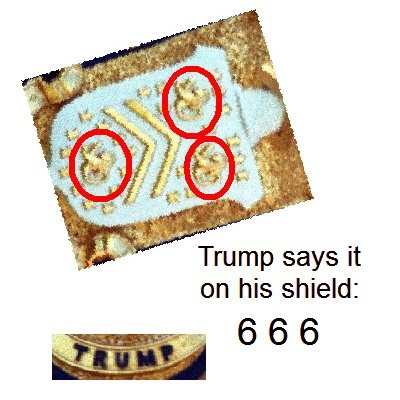
It is very easy to find all sorts of patterns in events, numbers, texts etc. That’s because there are so many ways to combine letters and numbers. Mathematicians sometimes do this for fun. For instance, there’s a famous puzzle to write all the numbers from 0 to 100 using four 4s. This puzzle dates back at least to the late nineteenth century. It was published in an book by W W Rouse Ball in 1882, and earliest mention in print goes back to 1881. Four fours
Here is an example
7 = (4 + 4) - (4/4)
Can you write every number from 0 to 10 in this way? What about writing all the numbers from 0 to 100 using four 4s plus mathematical operations such as addition, multiplication, subtraction, factorial, square root etc. To get as far as 100 requires some serious mathematical talent, but it can be done. Here are the solutions: Four 4’s puzzle. You can go further also. This page goes up to 386. Representation of numbers with four 4's It follows that if you have some text that has four 4s in it, you can use numerology to transform it to mean any number you like between 0 and 100, or indeed up to 386 and probably further too.
And here is a fun spoof of numerology, short exchange of emails after 9/11: Numerology and Numerology Parodies
Previous presidents of the US have also been proved to be the “antichrist” using numerology. E.g. here is the proof for president Reagan Proof that ronald reagan was the 666 antichrist !Basically it “comes with the job” - if you get elected as president of the US, someone is bound to come up with a carefully worked out proof that you are the Anti Christ.
This originated as my answer to Could Donald Trump be the anti-Christ?
Written SatExamples:

Portrait of Michel de Nostredame (Nostradamus) by his son César de Nostredame
On Nostradamus, I think best to quote RationalWiki
"Nostradamus was a sixteenth-century French astrologer and scholar who is best remembered for making predictions about world events. As with all visionaries, his success rate has been perfect in hindsight. This is mostly due to the fact that he wrote his predictions in a mixture of his native French, Greek, Italian, Latin, and Provençal and kept them so vague that they can be shoehorned to fit nearly any set of events:"
His only dated prediction is this one apparently
"L'an mil neuf cent nonante neuf sept mois,
Du ciel viendra un grand Roi deffrayeur:
Ressusciter le grand Roi d'Angolmois,
Avant après Mars regner par bonheur."Translation:
"The year 1999, seventh months,
from the sky will come the great King of Terror,
bringing back to life the great King of the Angolmois.
Before and after, Mars reigns by good fortune."
There apparently Angolmois is a region in the south of France but has been interpreted as an approximate anagram of Mongolois - the Mongols.
This is a guess at what it meant from before 1999]
This is one guess at what it meant from before 1999
"The gist therefore seems to be that in July 1999 a possibly appeasing Pope will in some way stir up a leader with Mongol (or possibly Lombard) connections (some French observers prefer to take the word 'Angolmois' literally, and refer it to the former François I, who was duke of Angoulême), with the result that a previously raging war will accidentally flare up again."
Obviously that didn't happen, or indeed anything much else. That is unless with hindsight you apply numerology and claim that he was actually predicting something else. This page claims it is a prediction of 9/11.
So anyway that is the only prophecy he made with a date attached. But enthusiasts try interpreting his vague words to mean other things, use numerology, anagrams and so on to extract meaning from them.
Both the predictions at the head of this answer were also interpretations of this same passage, and it is easy to find many more attempts to use it to prophecy various end of world scenarios.
Nostrodamus was a sixteenth century apothecary and seer. The first person to hypothesize that meteorites came from space was Ernst Chladni in the late eighteenth century. Before then, the consensus of everyone, including scientists, was that the rocks known as meteorites came from volcanoes or were stones lifted up in strong winds. So he can't have predicted a meteorite impact as he didn't know that such things were possible.
Also - when has anyone successfully predicted any astronomical event using prophecy? While on the other hand, the way we predict them by searching for asteroids and comets with telescopes, working out orbits, and then using computers to find the date of the flyby is very successful. Every day astronomers predict several distant flybys of Earth accurately to the minute. Once the orbit is known, they can predict them to the minute also for centuries into the future. No prophets can do anything that's even a patch on that. Astronomers don’t need to make up vague quatrains that could mean almost anything in order to be successful at predicting astronomical events.
So hopefully this helps some of you to be more skeptical about Nostrodamus's predictions - or rather - what people claim to be his predictions by shuffling the letters and concepts in his vague and confusing quatrains until they come up with something that makes sense to them.
Written Nov 22 CommentShareThis is another of these stories where a small group of christian fundamentalists seize on some astronomical event and claim that it will mark the end of the world. And then for some reason newspapers decide to run with the story, the “red top tabloids” especially. Do a google search and you will see something like this:
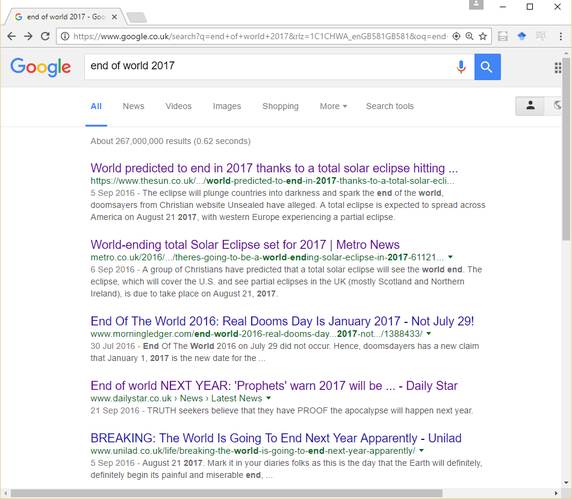
It’s so sad, because total eclipses are a wonderful astronomical phenomenon and we can enjoy them rather than worry that they mean the end of the world :).
So anyway - it’s hard to debunk a religious “prophecy” like this because they claim mythological things, Jesus, or angels and such like suddenly appearing and destroying the world.
We never see such things in our telescopes. There is no evidence that celestial beings destroy other stars. We see a universe that has been proceeding according to the normal laws of physics for billions of years. Also many Christians don’t believe in a literal apocalypse, while many other religions don’t have the idea at all.
But if someone says as a matter of religious belief that they believe such events will happen - well - evidence from physics and astronomy won’t help them, you probably have to respond in religious terms.
So I’ll do that, but first, let’s look at the astronomy and see why a solar eclipse is of no danger at all to us.
The solar eclipse happens when the Moon passes between the sun and Earth. By a coincidence the Moon is visually almost exactly the same size as the much larger sun. Sometimes it passes in front of the Sun rather further away and we get an annular eclipse. Here you can see that the Moon is visually smaller than the sun:
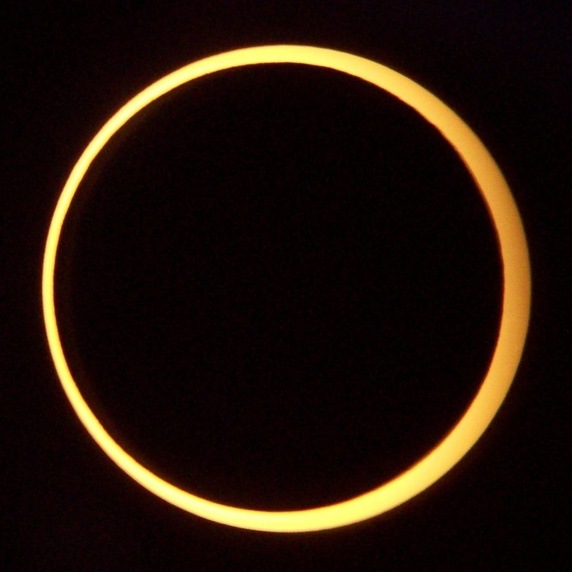
Annular Eclipse. Taken from Middlegate, Nevada on May 20, 2012.jpg - Wikipedia
And sometimes it is total, and that’s one of the great spectacles of nature
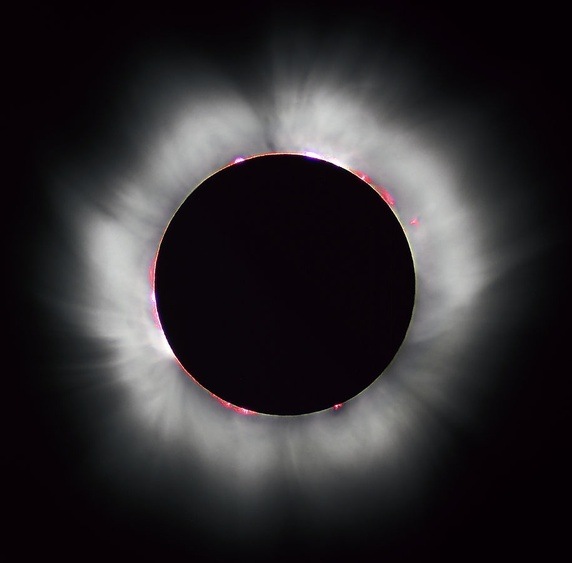
As the moon blocks out the sun from our view, then you see the red prominences and the subtle white corona, features that you normally can’t see at all because the details are flooded out by the brightness of the sun itself.
However you only see that if you have the Moon exactly in line with the Sun. It’s different from a lunar eclipse which is visible to everyone. Most of the world will not see the eclipse at all. This shows the eclipse track for the August 2017 eclipse. To see anything at all you will need to be somewhere along that line during the event.

If you are within the region of that line you will see a total eclipse. But if you are a bit away to one side or the other, this is what you see.
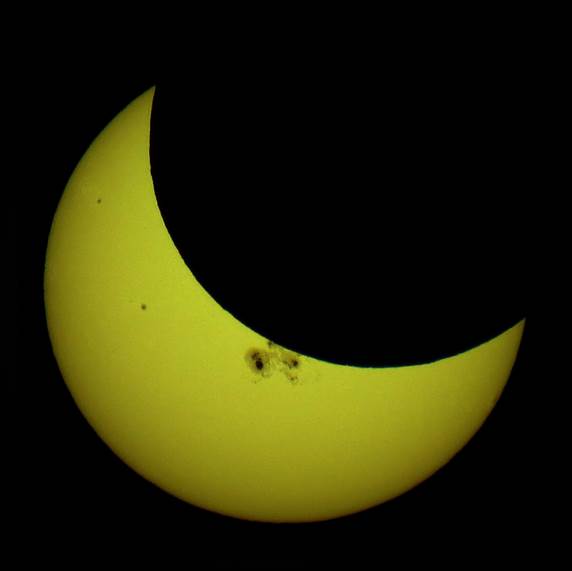
And if you are further away still, you won’t see anything.
Although eclipses are spectacular, astronomically they don’t have much significance except as an opportunity to see the solar prominences and corona, stars in the day time, and historically the position of stars during a solar eclipse were used to confirm Albert Einstein’s theory of relativity.
The Moon goes between the Earth and the Sun every full Moon but it normally passes above or below the Sun. From time to time it passes exactly in front, when its orbit is aligned with the Sun as seen from Earth.
The solar eclipse is just the Moon’s shadow passing over the Earth. This video of a solar eclipse as seen from a geostationary satellite explains:
So - there is no way this is any threat to us. The shadow passes over the Earth and then is gone. I hope understanding the astronomy can help with some of your fear if you are one of those who has got scared that the world will end next year.
We get many solar eclipses also. This is a diagram of all the solar eclipses from 2001 to 2025 from NASA. It shows the eclipse track

Those blue ones are all total eclipses. No annular eclipses during this time. They’ve made these maps for centuries into the past and the future from the 30th century BCE to the 30th century CE. This for instance is from 2021 to 2040 - many annular eclipses during this time span:
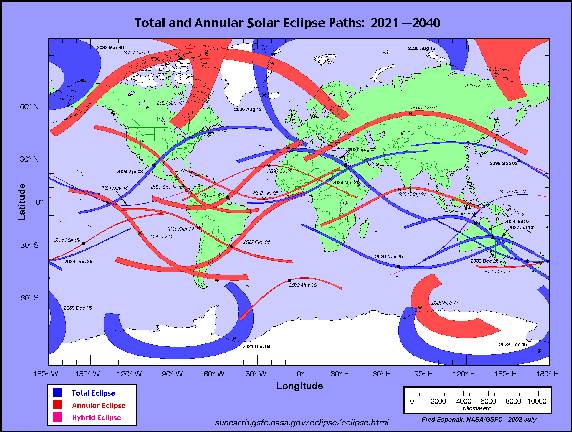
World Atlas of Solar Eclipse Paths
So, it’s a perfectly natural event, not in any way unusual. The Moon has been doing this for billions of years, since it formed. Billions of years ago it was much closer and the eclipses would have been much more frequent.
I hope this helps you understand that solar eclipses are not in any way world threatening. It’s a wonderful, beautiful thing to see. I’ve seen partial eclipses but never seen a total eclipse and hope one day to be able to see one with my own eyes :).
Most of these prophecies of a Christian Apocalypse are based on the book of Revelations, which is regarded as one of the most enigmatic books in the Bible. Anyone can read almost anything into it.
It causes so many problems that the Eastern Orthodox church doesn't include it in its lectionary, the passages from the Bible that can be read from the pulpit. It was a late addition to the Bible anyway - early versions of the Bible didn't include it.
Christians interpret Revelations in many different ways, with the four main interpretations
Only the last approach of those four leads to the idea it might be describing real world events in our future. Many think that 1 is true, that it describes events that already happened in the first century AD.
Also the Bible warns against false prophets. By definition all the people who have prophesied an end to the world for the last 2000 years, and there have been dozens of them, are false prophets because the world didn't end. And these Nibiru people have falsely prophesied the end of the world numerous times too, so they are definitely false prophets too, no matter what excuses they make for their false predictions.
One thing that's certain is that the book is intended as a message of hope which comforted Christians who were persecuted in the early days of Christianity. If it becomes a message of despair and suicide, then it is seriously being misapplied.
So, there is absolutely no reason at all to pay attention to alleged prophecies of doomsday if you are Christian. Why should you? They are surely just more false prophets to add to the dozens that have come before. For the large number of false prophets that we’ve had, see this List of dates predicted for apocalyptic events. It’s not complete either.
Some of these people will forecast an apocalypse over and over. They swear blind that their latest prediction is the real thing and will certainly happen. Even their own predictions made just a few months or a year before - they say those were false predictions but this one at last is correct.
If you start to fall for this sort of thing, you will never want for predictions of doomsday and will be scared of it for the rest of your life or until you realize you've been had and just give up on it.
While if you are not Christian - well what do you care what Christians prophecy? The book of Revelations is clearly meant as a message for Christians, whatever it might mean. Why pay any attention to it if you happen to be a Hindu or Buddhist or Jain or Taoist or whatever religion you are? And if you are atheist even more so.
The Bible has never predicted any major astronomical event. Indeed astronomy is not it’s strong point. And no previous civilization has ever had the accuracy of prediction of astronomy that we have. An eclipse track map like the ones above is way beyond the capabilities of any previous civilization on Earth, no matter how astronomically gifted. They just didn’t have the theory, the computers, the telescopes etc needed to make them.
Also, anything you might try to unearth from the Bible can’t possibly be a prediction of meteorite impacts or hidden planets, as they didn’t know that asteroids or meteorites existed back then. Also, the idea that a planet could hit Earth would have been totally foreign to them. They thought of the sky and stars as separate from Earth. They thought meteorites were created in volcanic eruptions or blown up into the air in strong winds before falling again. They also thought that the Sun orbited the Earth along with all the planets and that the entire night sky and all the stars circled around Earth. Back then they didn’t know that the stars were other suns like our one. So, far from having a superior understanding of how our universe worked, they had a very inferior approximate understanding.
Now of course they did have a good understanding of human nature, the Bible has a good ethical message. We aren’t superior to them in terms of ethics probably. But they just weren’t astronomers or cosmologists. Even by the standards of their time, the authors of the Bible do not stand out as having a particularly good understanding of astronomy. It is barely mentioned. That’s just not what you go to it for.
I write about it some more in the second half of this article, which if he is Christian may be helpful: September 24th, 2015 - Just Another Day In Space - Asteroid Flybys, "Blood Moons" And Armageddon Demystified
Written Nov CommentShareUpdate: The YouTube account has been closed, hurray! This is the link to the video - with the “account closed” notice.
Summary: This is just some random guy or gal who typed a date into a YouTube video title and made a custom YouTube thumbnail. The video itself is an unauthorized copy of someone else’s video which didn’t have a date. This is the third date change. Originally it read 29th July, then 31st October, now 17th February 2017.
It's earned them an estimated $12,200 to $30,000 and it's clear they are unscrupulous about this so will just keep changing the date for as long as they earn money. It's the equivalent of an income for someone, for a few minutes work every few months. It's no wonder that people with no moral scruples do such things, and there are other YouTube doomsday video channels that are run only for ad revenue.
For some inscrutable reason, journalists run stories about these videos, so helping them to get millions of views and clicks and thousands of dollars of ad revenue.
If we could get YouTube to stop ads on these videos, they would no longer have any motive for them and would stop. If we could get journalists to stop being so gullible and just posting a story about any YouTube video by anonymous people with a striking sounding title and video thumbnail, it would make a big difference too.
If you want to try to do something about it please sign and share my two petitions:
This is a re-run of a hoax from 29th July this year, with a new date in the title of the video. The video was originally launched with the title "Why the World will End Surely on July 29th - Shocking Facts". Journalists ran it as a story in many of the online news sources that don’t do much fact checking, but most shockingly, it was run in the online version of the Telegraph. This is a respected mainstream broadsheet newspaper in the UK. The story said that the world would end on the 29th July 2016.
The Telegraph version of the story had a count down timer to the end of the world at the top of the page (now removed) and a stream of fake tweets about our impending doom. You may be able to spot its humorous tone, but the vulnerable miss this. I got many comments from scared people on my articles, asking questions such as when it would happen in their time zone. For them it was deadly serious. They thought that the world was going to end when that count down timer reached zero.

This is the image used by the Telegraph story. It's become one of the generic images used for doomsday stories. It’s actually a fuzzed out version of this image of Cassiopeia A, a supernova remnant 11,000 light years away by the Handrail X Ray observatory. Nothing at all to do with Earth or our solar system!

A fuzzed out image of Cassiopeia A was originally used as a cover image for stories about the "Big rip" theory. The only connection with the big rip theory is that the research for it involved study of the red shifts of distant supernovae, and I've no idea why they fuzzed it out. This image is now often used for Doomsday stories, with no connection with supernovae and no explanation of why it was used, as for the Telegraph article.
The only basis for the date in the story was the video title text typed in by an anonymous YouTube video uploaders, "Why the World will End Surely on July 29th - Shocking Facts" and a custom YouTube thumbnail they made for their video. There is no way to know who did this, as their identity is hidden behind their YouTube channel name.
The video itself was an unauthorized copy of someone else's work, using amateur graphics, elaborating on events described in the book of Revelations, one of the most enigmatic books in the Bible. This book is so easy of misinterpretation that the Eastern Orthodox church has excluded it from the list of Bible passages that can be read from a lectern.
The original authors of the video posted a disclaimer:
"Someone is re-u ping our videos and saying that the end of the world is July 29th. It seems to have got some publicity in online news sites, who are saying WE said the world would end on the 29th. Nothing is going to happen on July 29th. We have never claimed such a thing, this date is just another false date being promoted online."
for more about this see my World Did NOT End On 29th July! AWFUL "Silly Season" Story - Journalists Please Be More Responsible
This story, based entirely on a date in the title typed in by some anonymous YouTube user for their unauthorized copy of someone else's video ran as a major "Doomsday story" on many news sites online, and the video racked up six million views.
The video now has nearly 7 million views, and all their copies of it in total have over 9 million views, enough to earn the anonymous perpetrator an estimated $12,200 to $30,000 from YouTube ads revenue, from this hoax so far, and it had around 16,000 subscribers at its peak, - naturally many have unsubscribed when nothing happened but it still has over 14,000 and as of writing, they got 1,200 new subscribers in the last month. This is for a YouTube channel "End of Times Prophecy" with only that single video on it with different titles. They have now changed the doomsday date to a date in October and continue to accrue views and ad revenue.
They are currently earning between £55 - £886, or around $67 to $1000 per month see their Channel Statistics (this is according to SocialBlade which uses a wider range of ad revenue figures)
As another example the site Nibiru Planet X 2016 with over 1.5 million subscribers, which earns an estimated £250 - £4,000 or $200 to $4800 a month from YouTube ads, see their Channel Statistics
Incidentally if you go to the video itself (which I won’t link to directly here, don’t want to boost their link count) then you’ll notice that comments are disabled. It used to have a long list of comments, and many replies to the comments too by scared people. I posted a debunking comment and they immediately (same day) disabled comments for the video, so that they all disappeared. Which surely confirms it is a hoax done just in order to earn ad revenue, they can’t be genuine or they’d have replied to my debunking comment.
The YouTube ad revenue clearly encourages unscrupulous hoaxers to create Doomsday videos which scare vulnerable people. So I’ve done a petition for YouTube is to stop running ads on Doomsday videos altogether.
This is not an unusual step as they already do halt ads on videos when they think it would be immoral to earn anything from them themselves. I would say that this falls into that category. It's immoral to earn from videos targeted at vulnerable people who become scared and suicidal as a result of watching them. So please just halt ads from these videos. Those who genuinely believe that the world will end can still upload their videos, so it is not any kind of restriction on freedom of speech, just a decision on what forms of income are morally acceptable for YouTube ads.
If you agree on this point, do sign and share the petitions which I started on The world’s platform for change. They are:
I don't think any of this can be dealt with by legislation. Instead I have several pleas to journalists and scientists, and also a recommendation for YouTube.
The main plea for journalists is just to be aware that your stories are read by vulnerable scared people. Imagine that a ten year old girl is reading your story and going to ask her mother or father about it, and then write your story for her, and that might help.
More specifically, do avoid using words like Doomsday and Apocalypse in the title or the text itself for that matter. Those who get easily scared by such things sometimes send me links to stories about e.g. financial crisis predictions after Brexit, and if the story uses the word Doomsday in the title, they will ask me "is this something to be scared of". They are worried that it is some sign of the end of the world.
Of course this is a perfectly respectable literary trope, the use of hyperbole for dramatic effect. There is nothing wrong with it per se. But those particular words are very scary to some people and I think are best just avoided altogether.
Also please consider writing debunking stories. As the Independent showed, a debunking story can often get more clicks and views than the doomsday ones. Such stories can be written in an engaging fashion. Use all the power of language, and vivid imagery, but use it for the purpose of debunking, rather than to promote doomsday ideas. There are plenty of doomsday stories published every month and if we had an equal number of doomsday debunking stories published each month it would go a long way towards addressing this issue.
Those who worry about these things often tell me that they can't find any doomsday debunking stories apart from mine, since 2012. Please consider writing stories that they can read so they don't get the very false impression that everyone thinks the world is about to end. Then for scientists writing about asteroids, I suggest that you try running things past anyone vulnerable, for instance a ten year old, and find out what their take home message is from your presentation. You might be surprised about how it differs from the message that scientists like yourself and your colleagues get.
This is a shortened version of my article: Journalists - Please Fact Check Your "Doomsday" News Stories -They Terrify Young Children And Vulnerable People
First, if at any time you are feeling suicidal and wants someone to talk to - say in the middle of the night or some time when he has no friends to speak to around - there's always the telephone lines to the Samaritans (in the UK) or another suicide prevention charity where you can speak to volunteers trained and experienced in talking to suicidal people and helping them. For details see Befrienders Worldwide.
There are a several facebook groups where you can post for feedback from knowledgeable people who will help debunk a video or image you have seen which scares you:
You can also join our new and lively
:)
You can comment on any of my Science20 posts which often have long threads of comments. Also reading answers to other posts there may help. At the moment I’m getting most posts on these two articles, usually a post every day or two:
If you prefer to contact someone in private, I'm available on Quora though I may not reply instantly, I try to reply within 24 hours - unless I get cut off the internet as happened once a few months ago and can happen as I'm in a remote part of Scotland.
If I'm online, messaging me on quora or facebook is the quickest way to get to me. My quora profile is here, it's easy to join and then you can message me via a link on my profile page.

Quora is easier than facebook because you can message me right away as soon as you join. On facebook you have to ask to be friends first which may lead to a delay - and I do get quite a lot of obviously spam facebook friend invites, as many do there.
I will friend anyone who is genuine so if you want to be facebook friends, do message me about Nibiru. Do be sure to explain why you are contacting me as on facebook - just mention doomsday or Nibiru or whatever in your first message as you get a fair bit of facebook messaging spam. I’d probably ignore it if you just say “Hi” or at least not answer quickly as that’s what spammers often do.
Anyway, my facebook profile is here: Robert Walker
Also do talk to friends as well. Everyone needs help at some point. It's not a failure to seek help, it shows strength actually.
Written Nov 9 CommentShareAnd on Science20
's posts on Science20And I have many other booklets on my kindle bookshelf